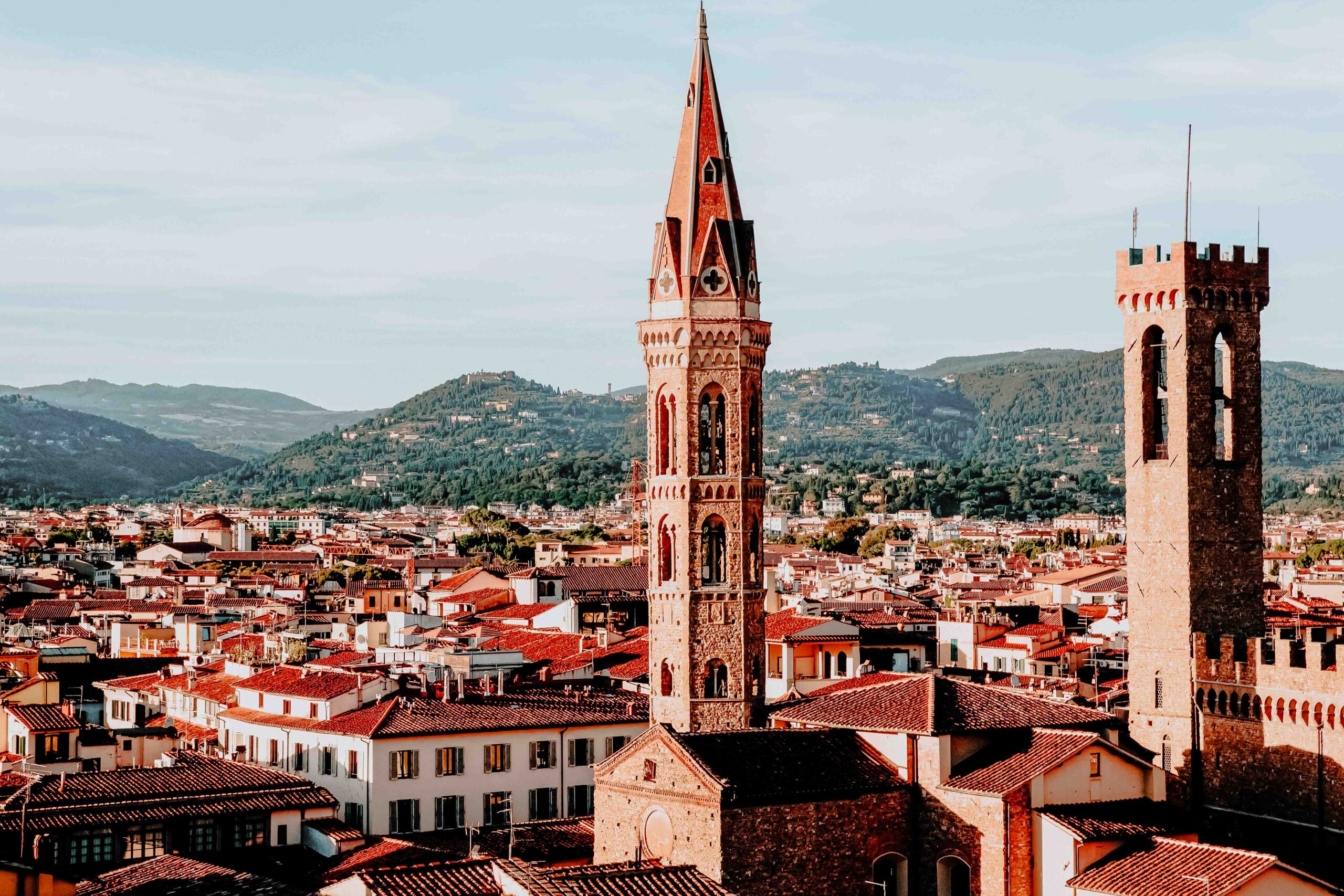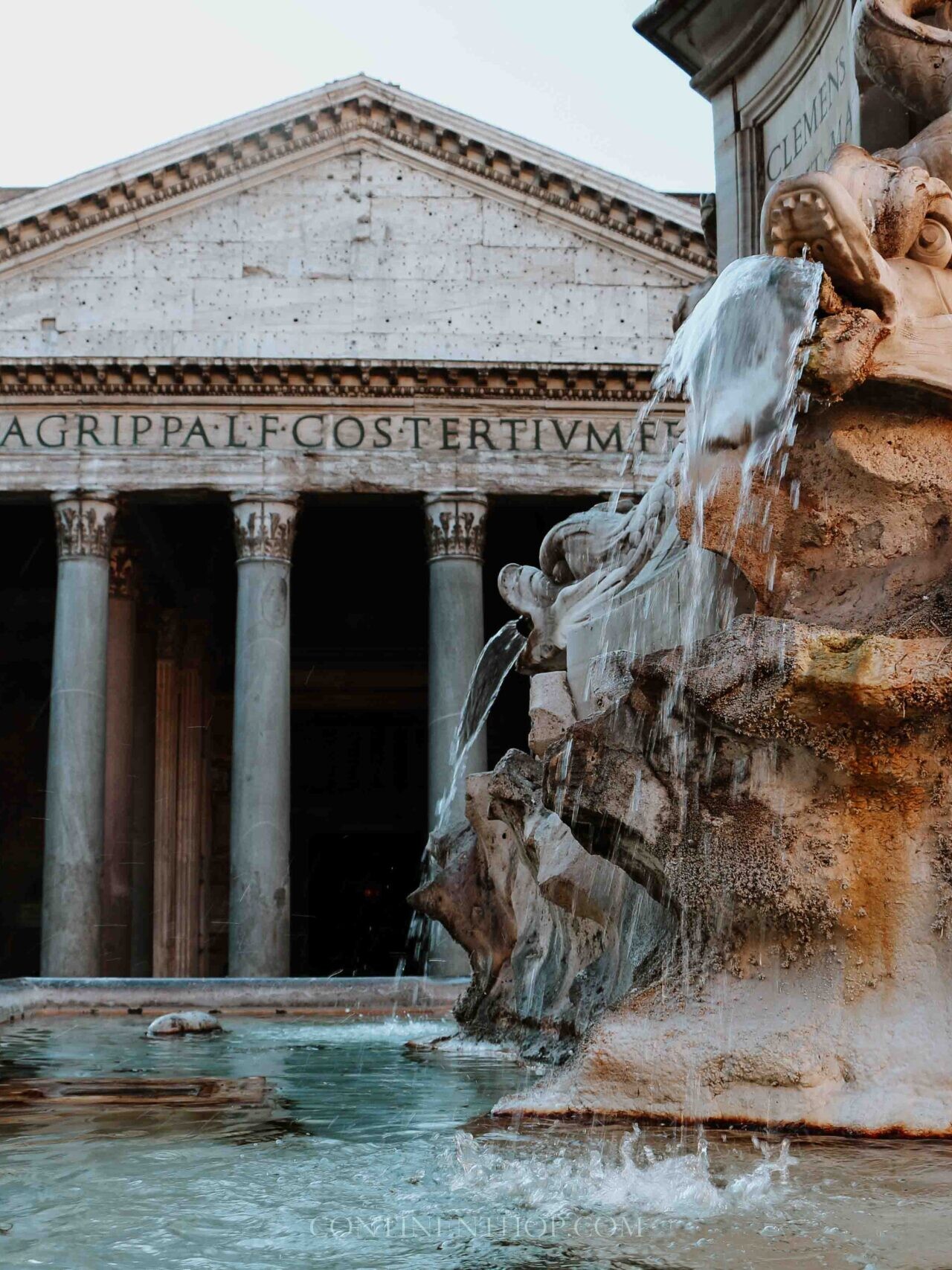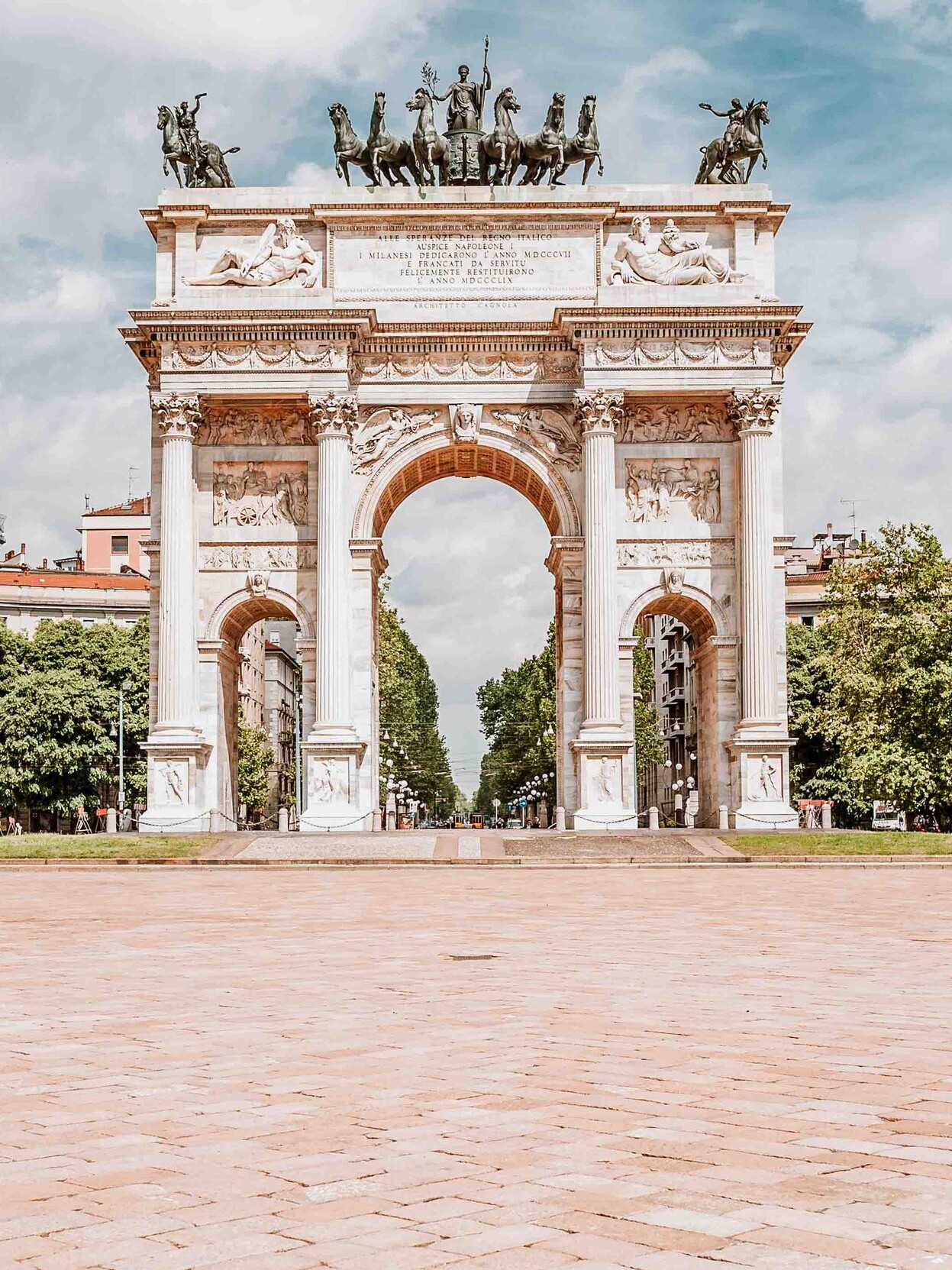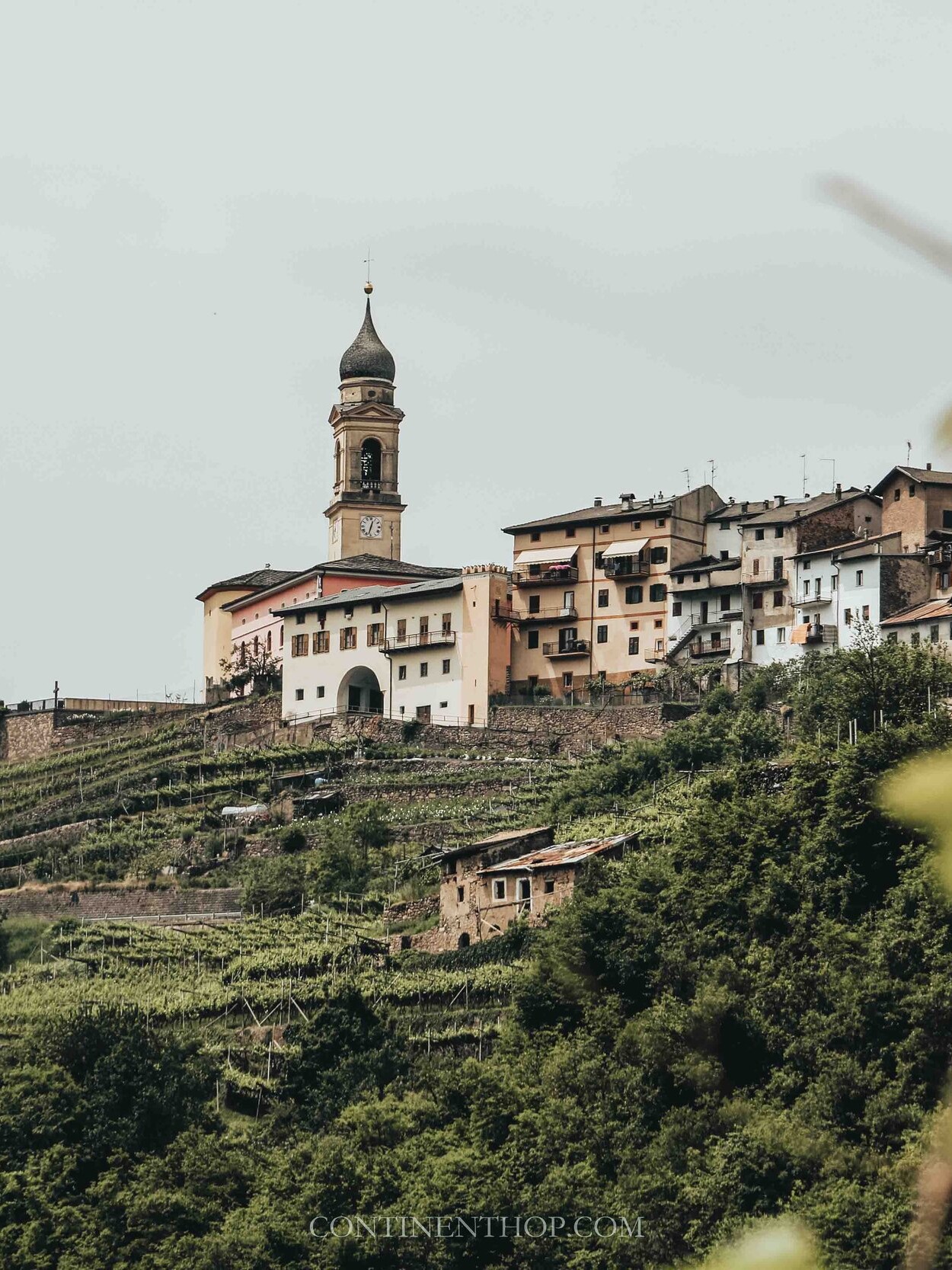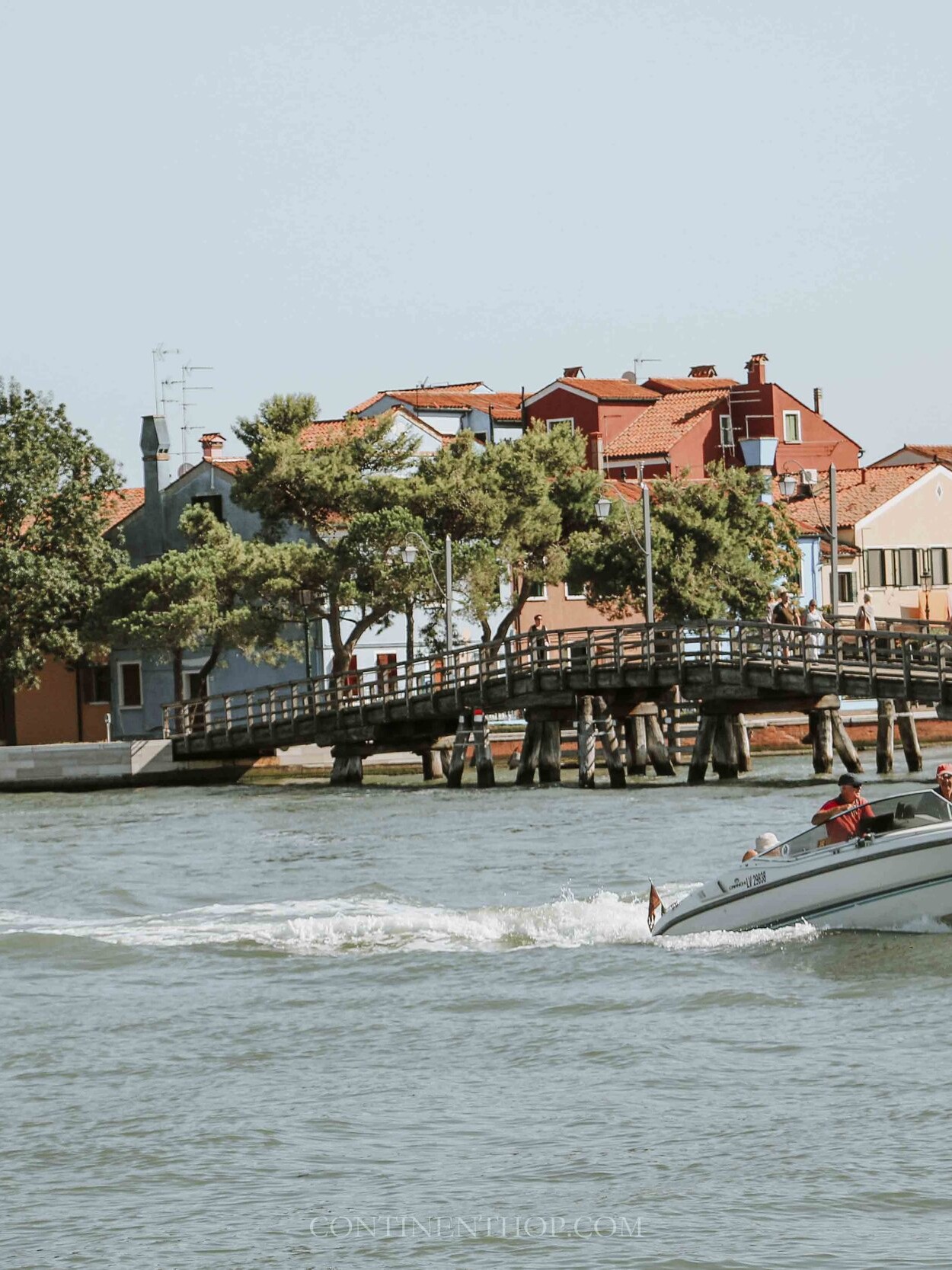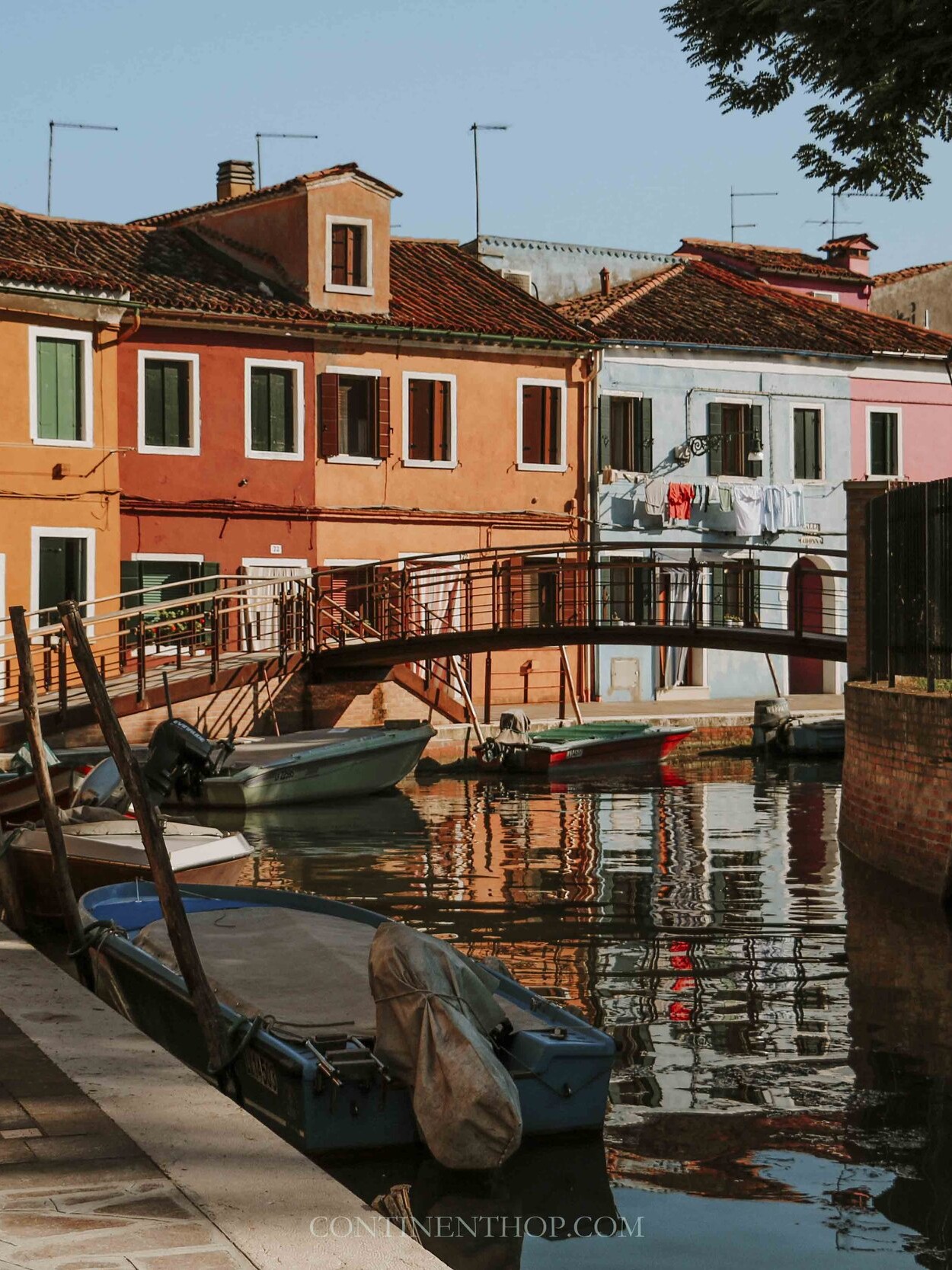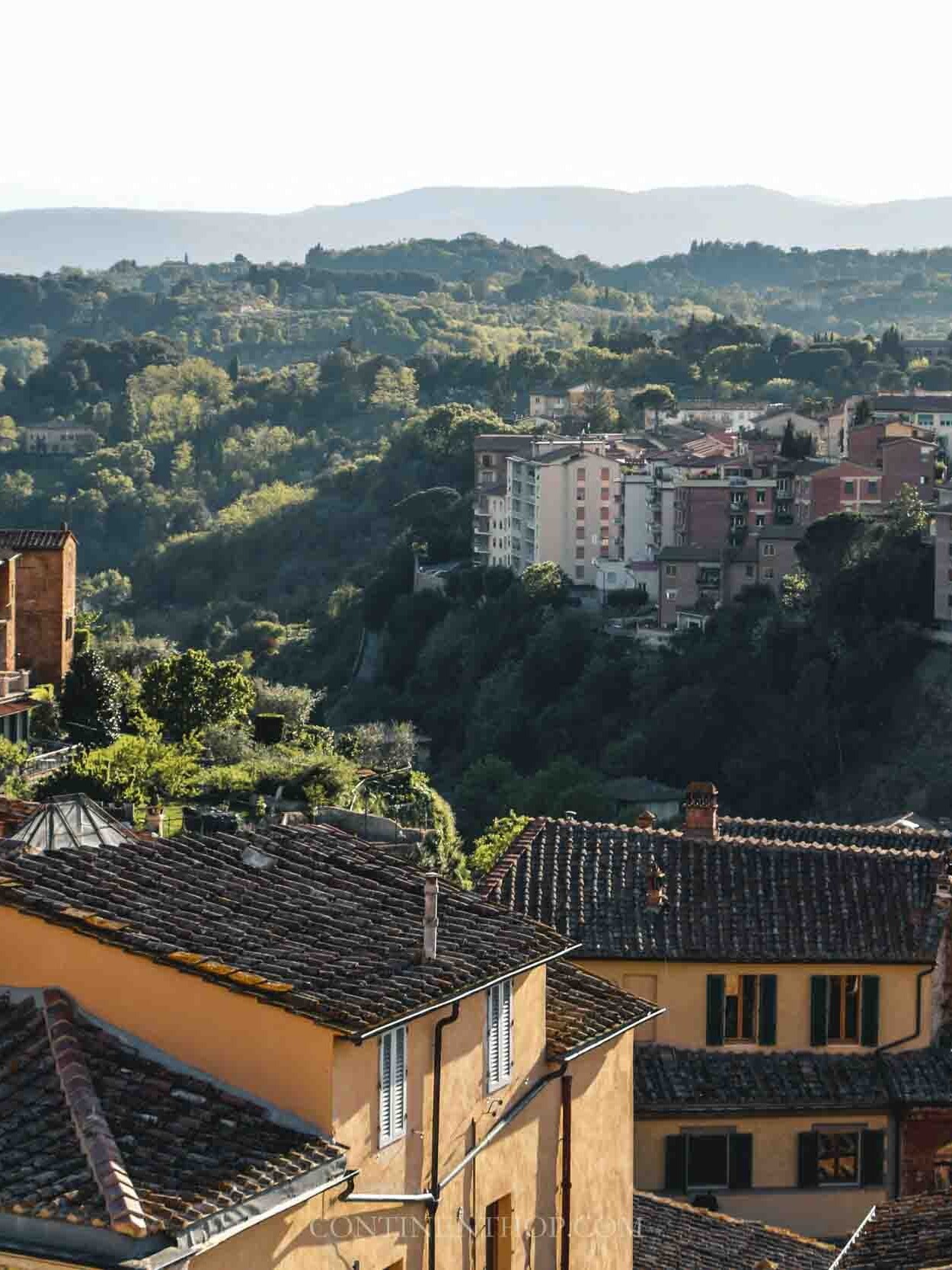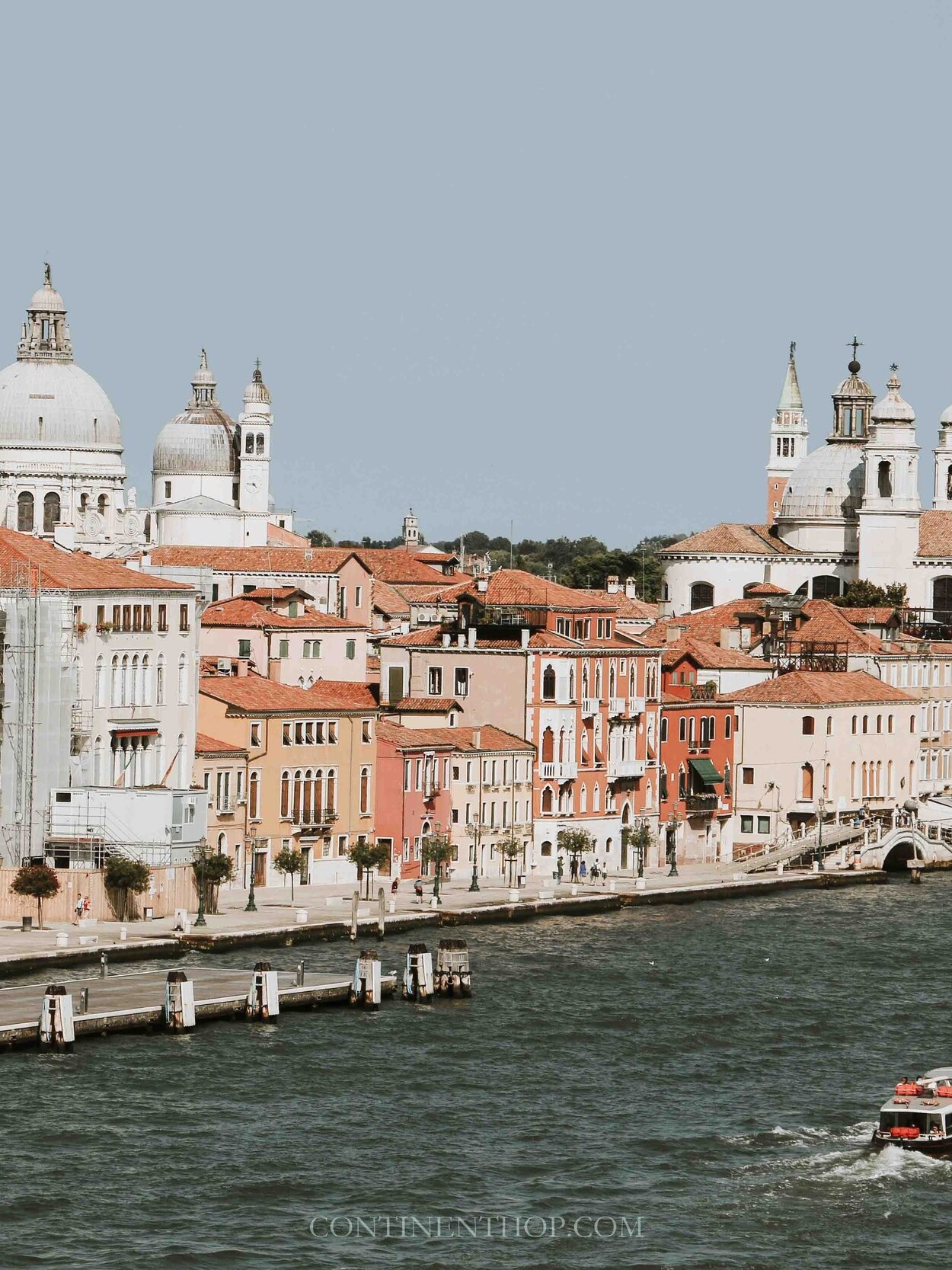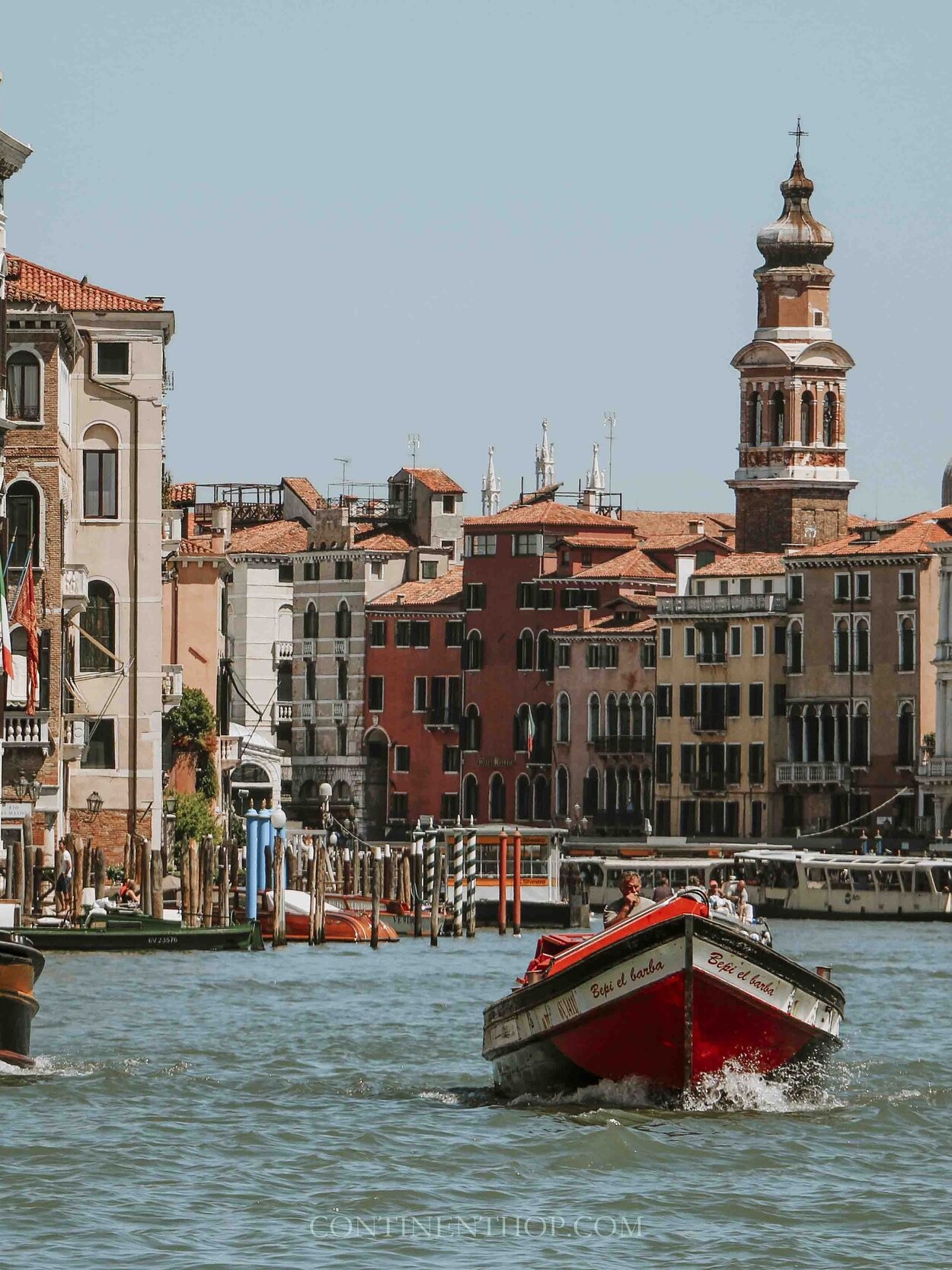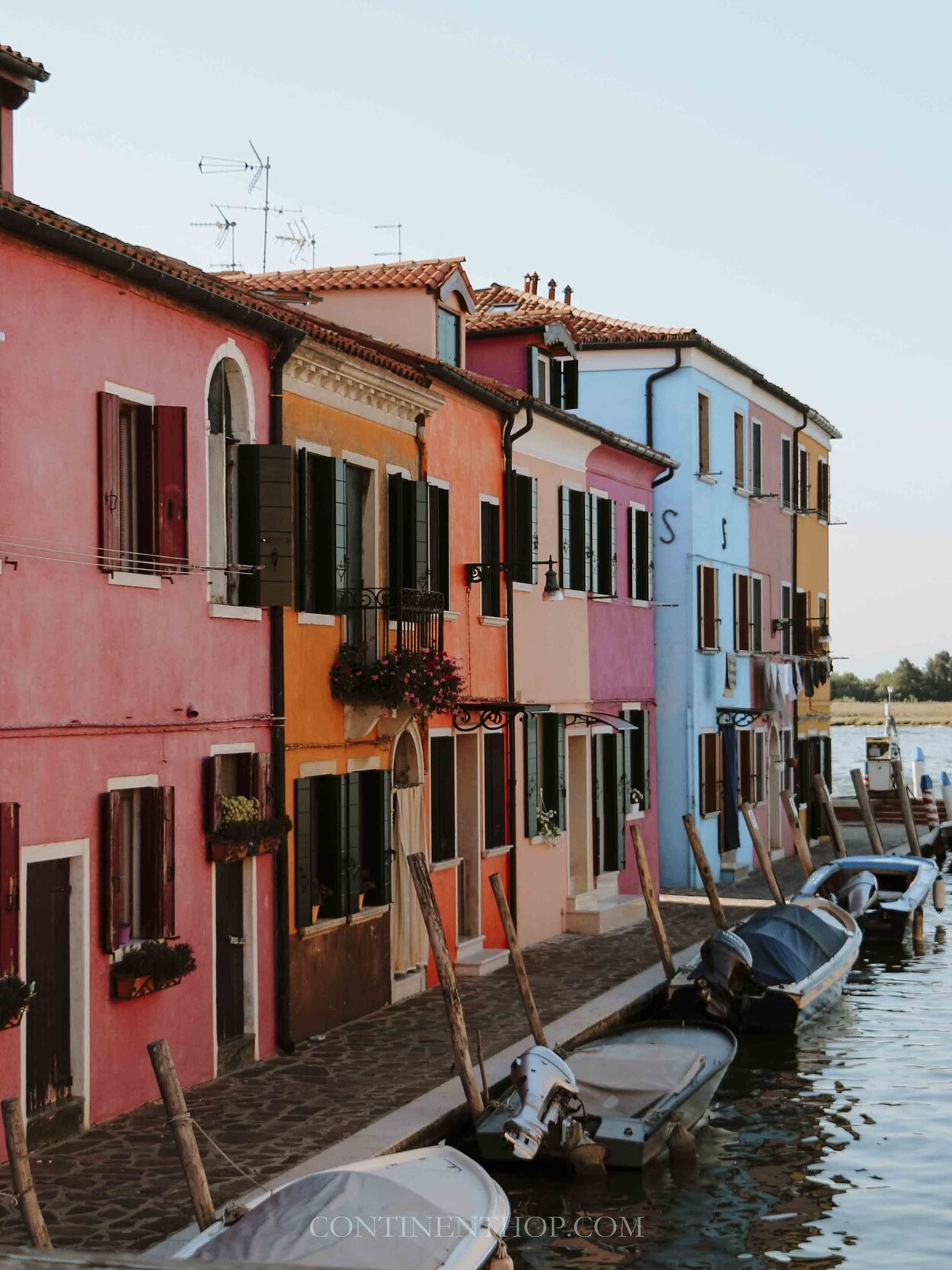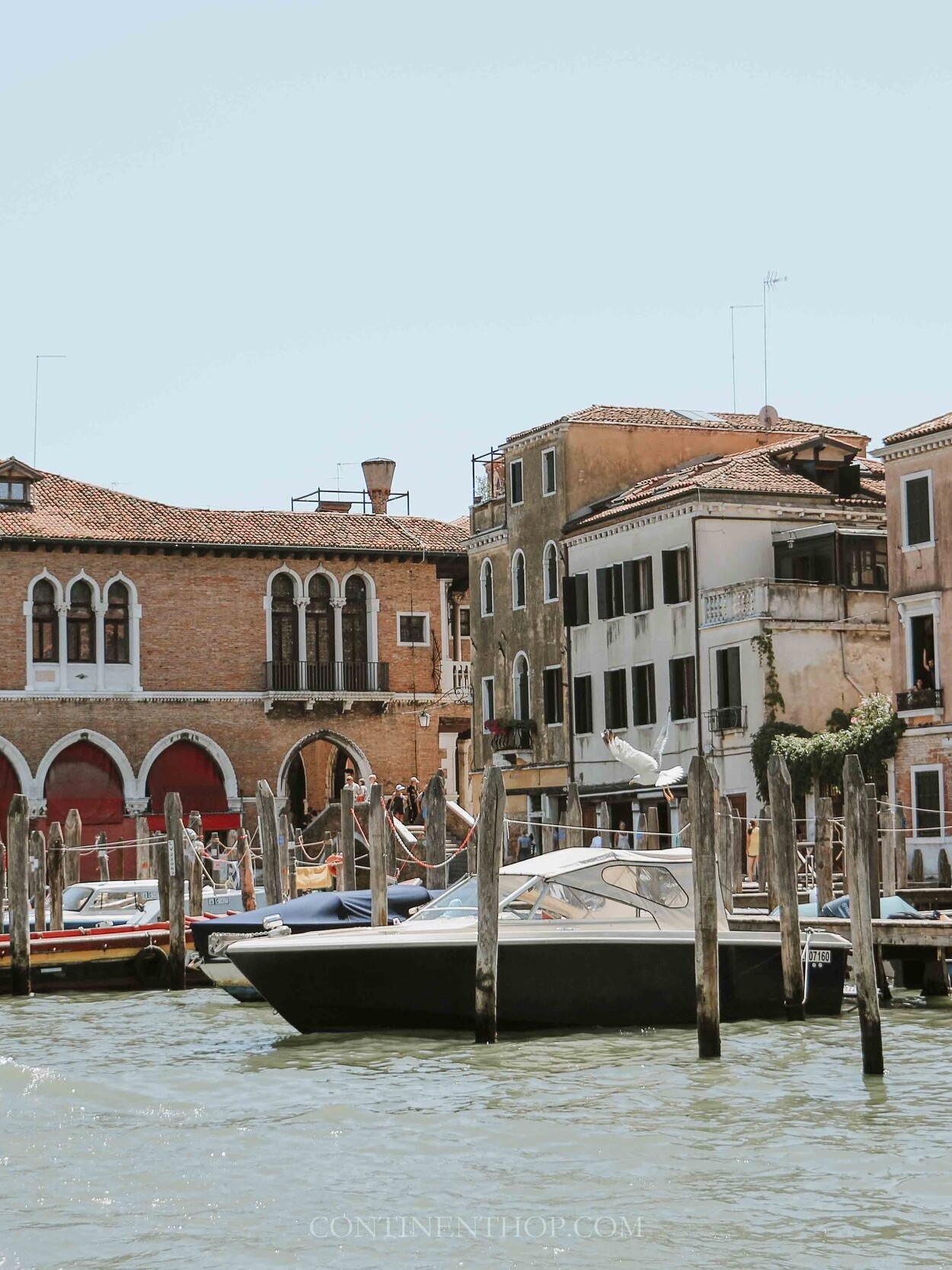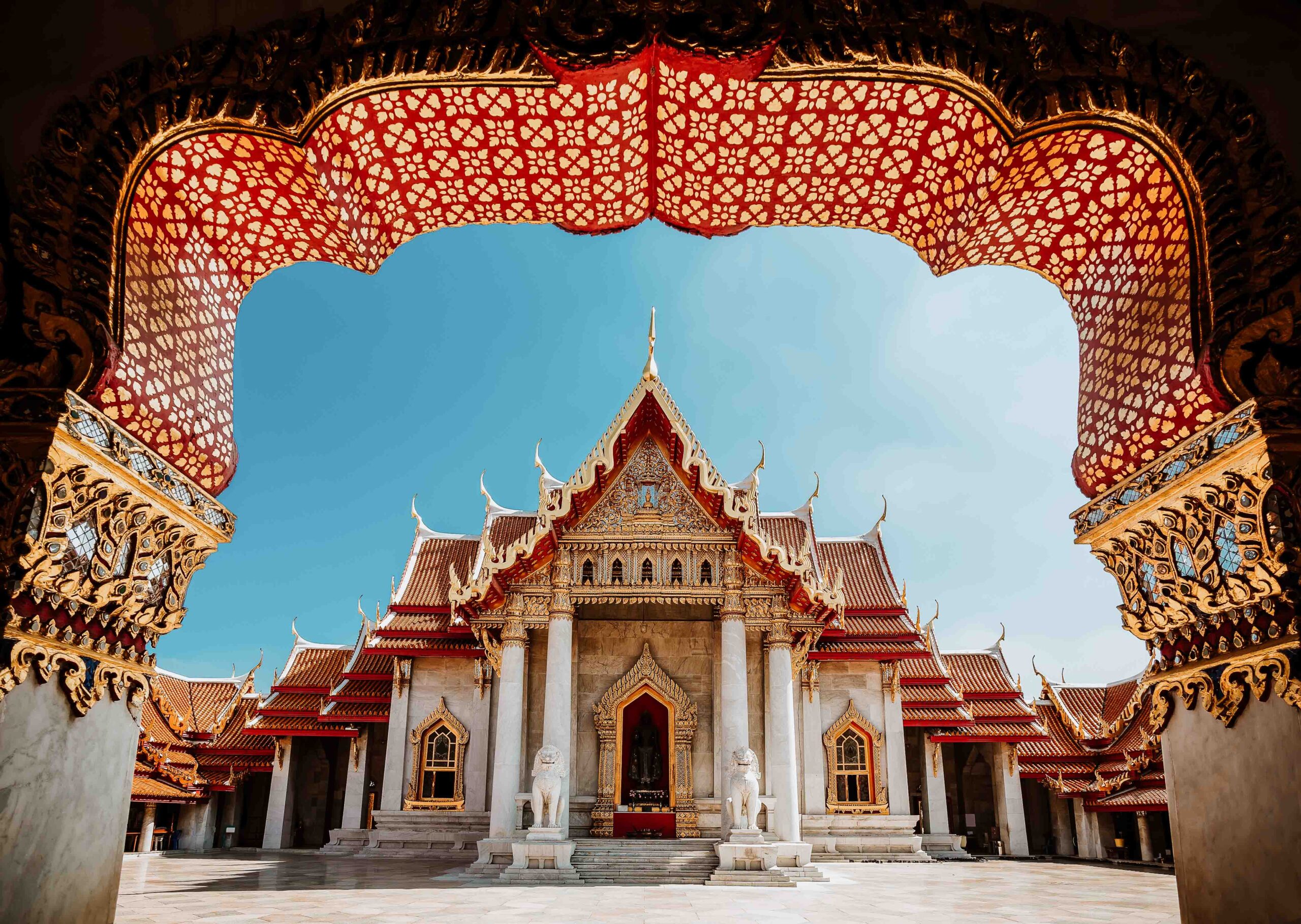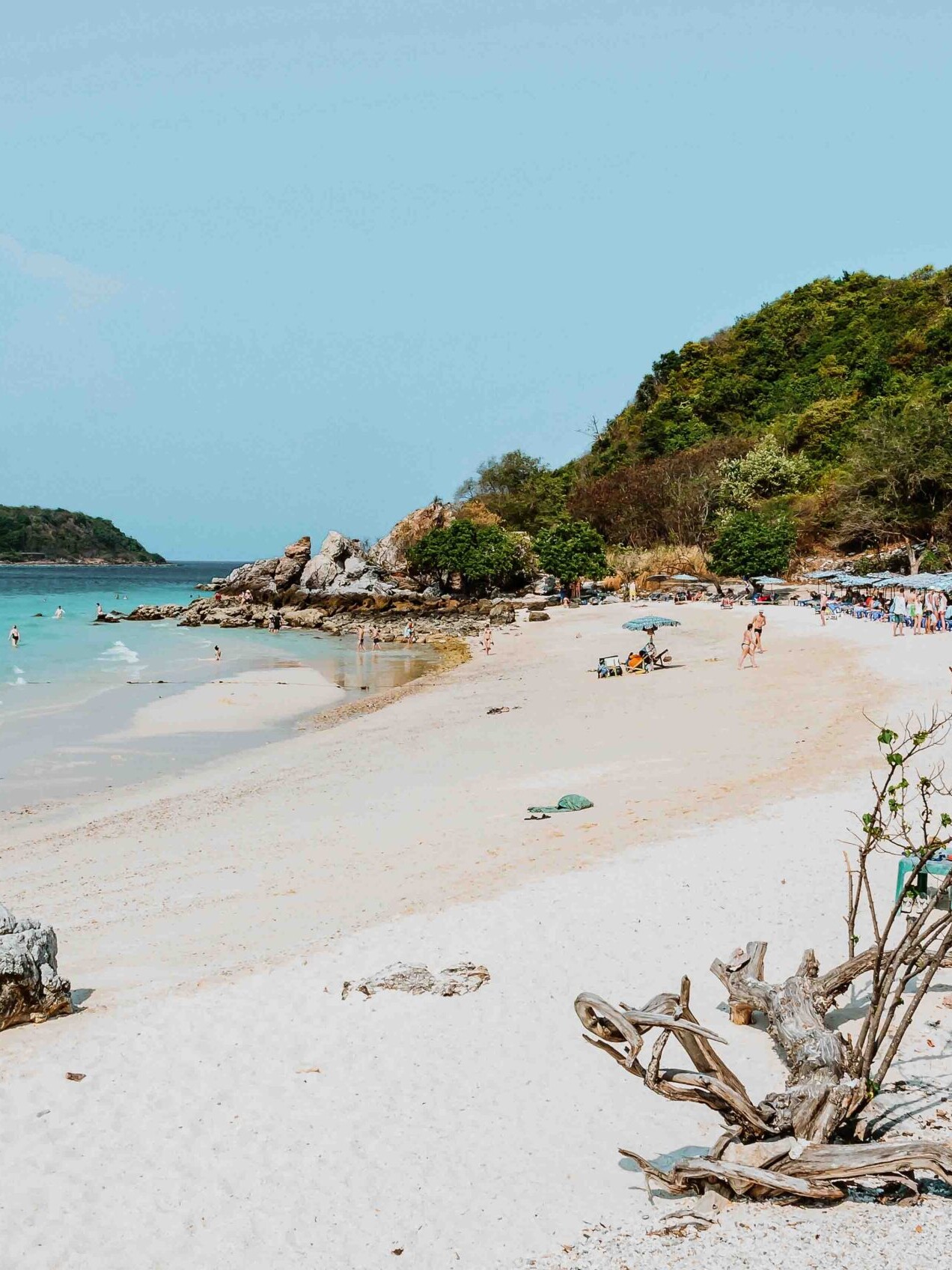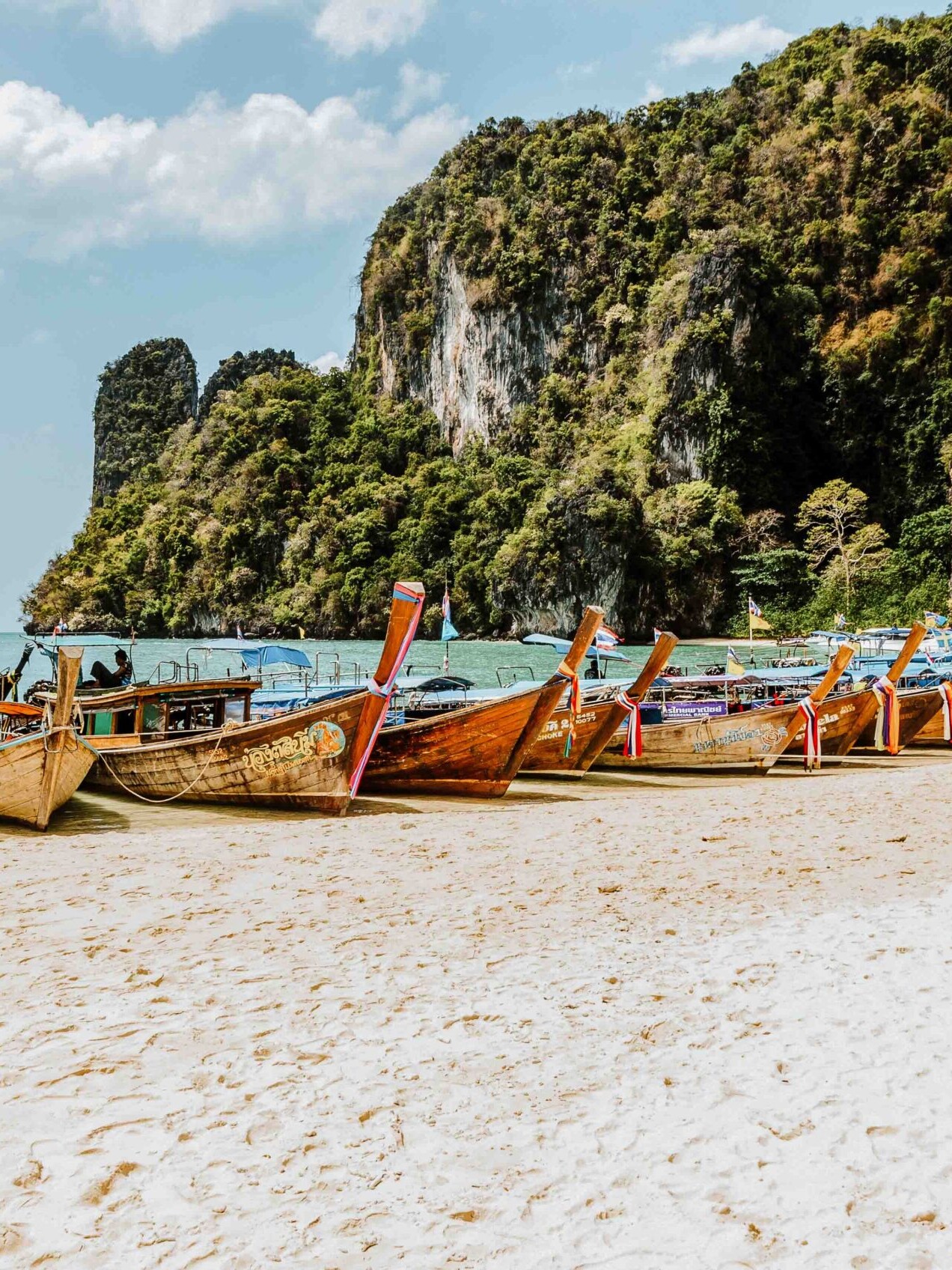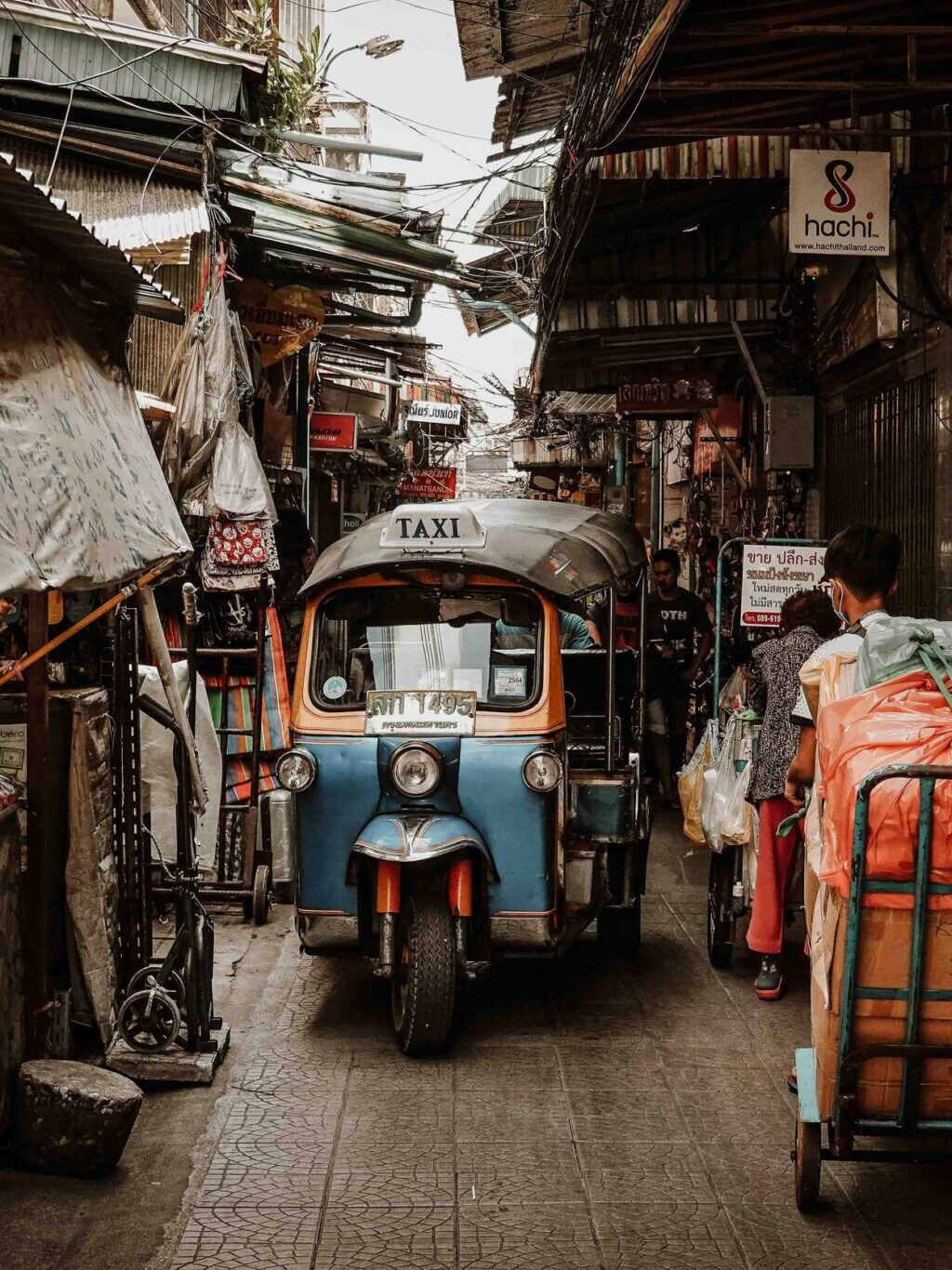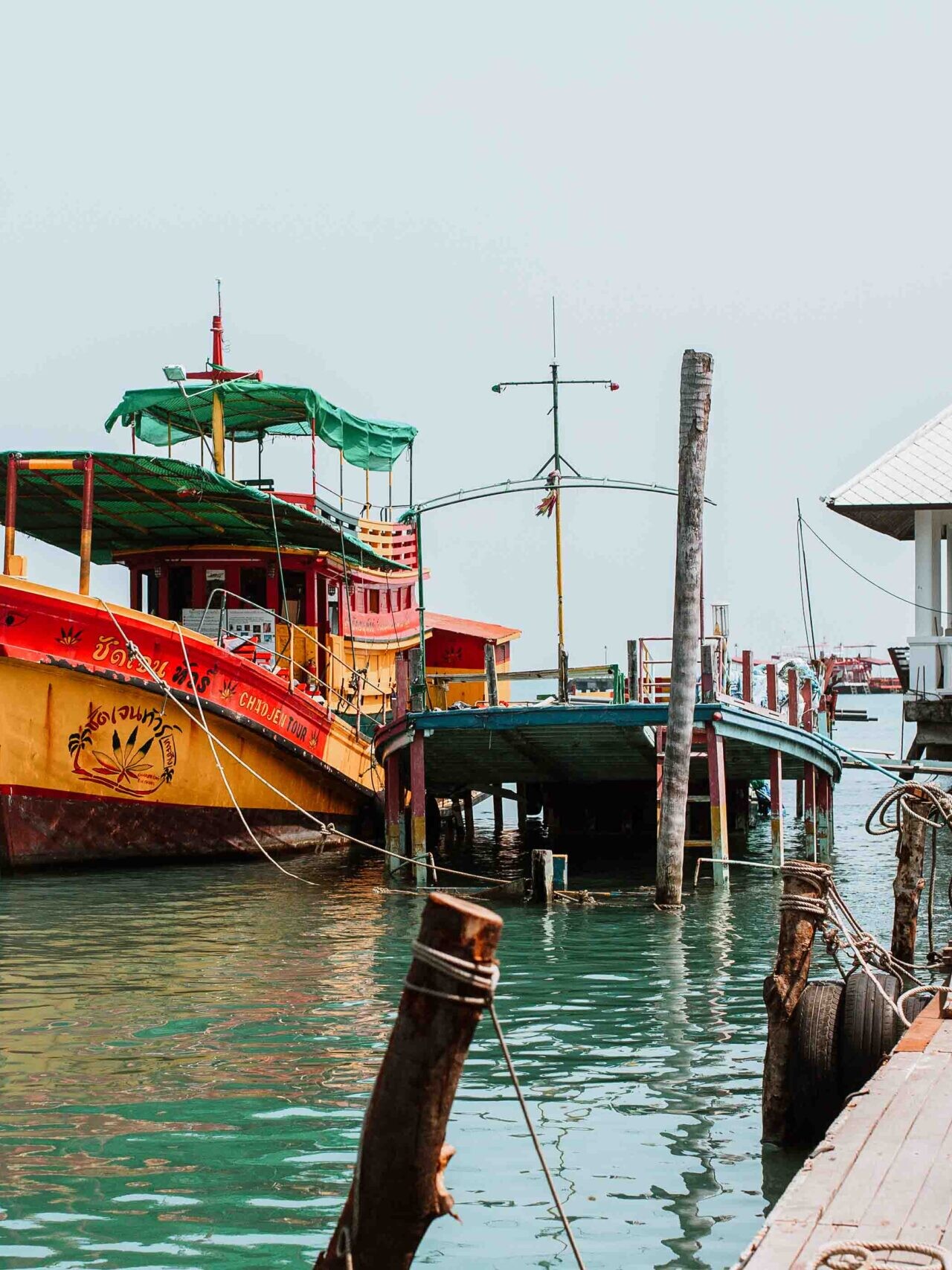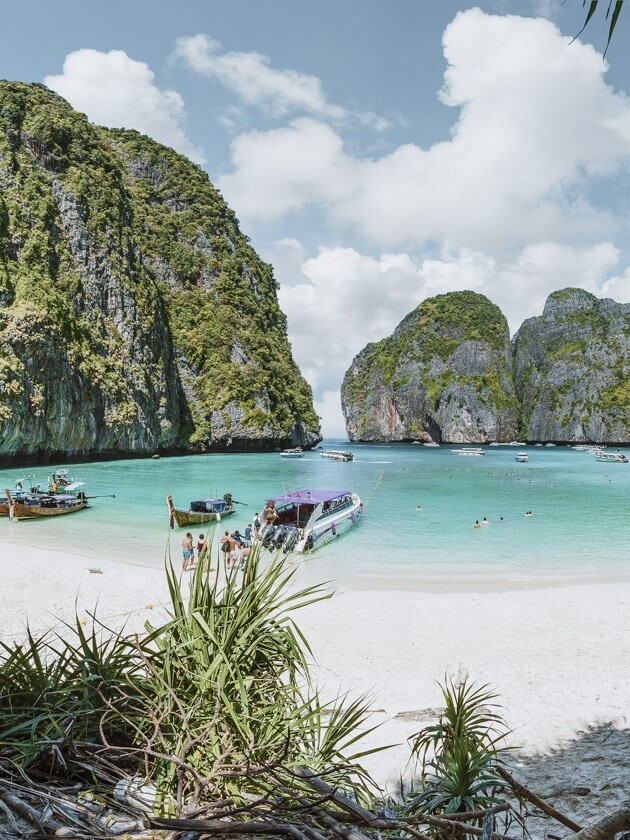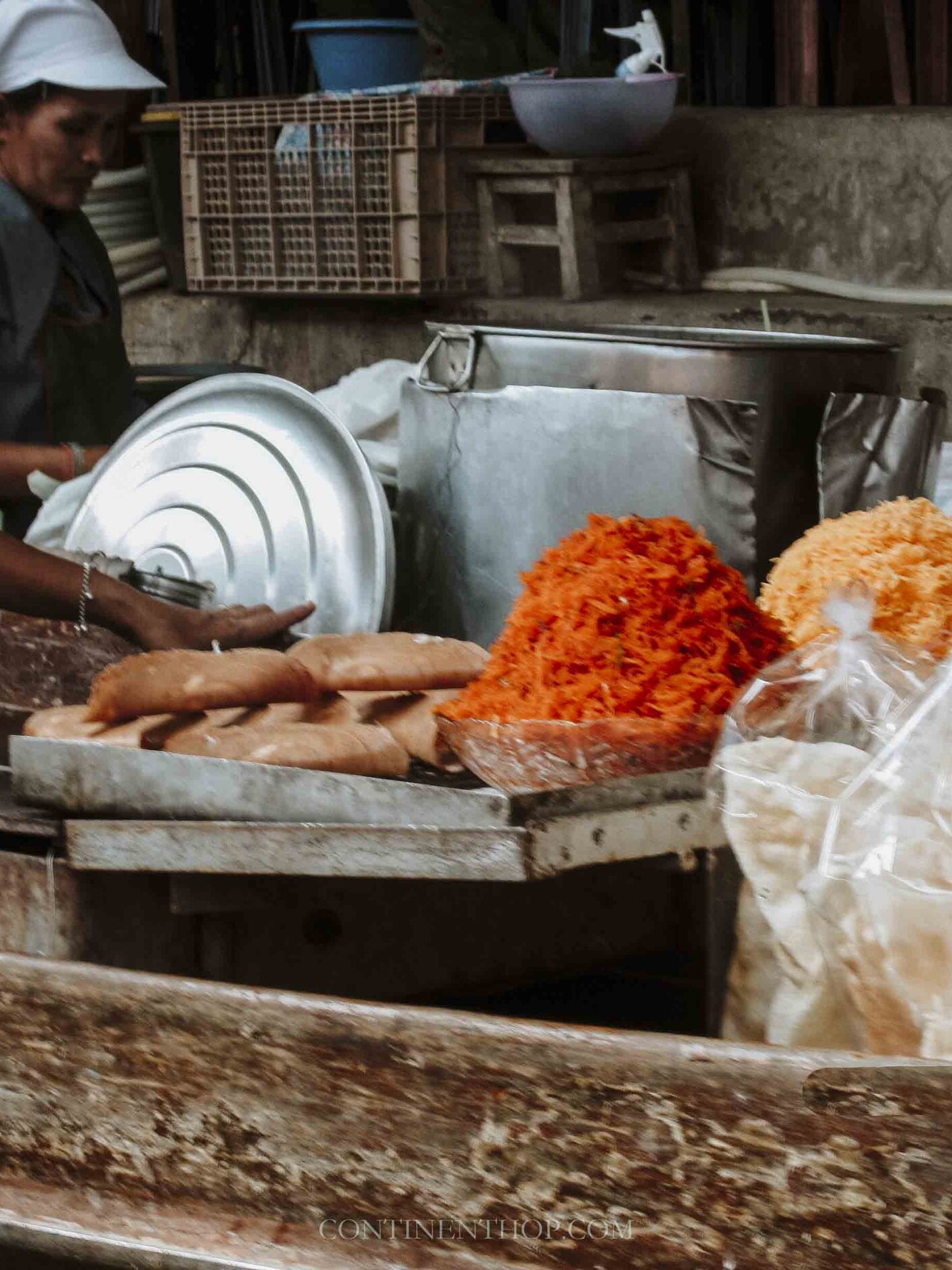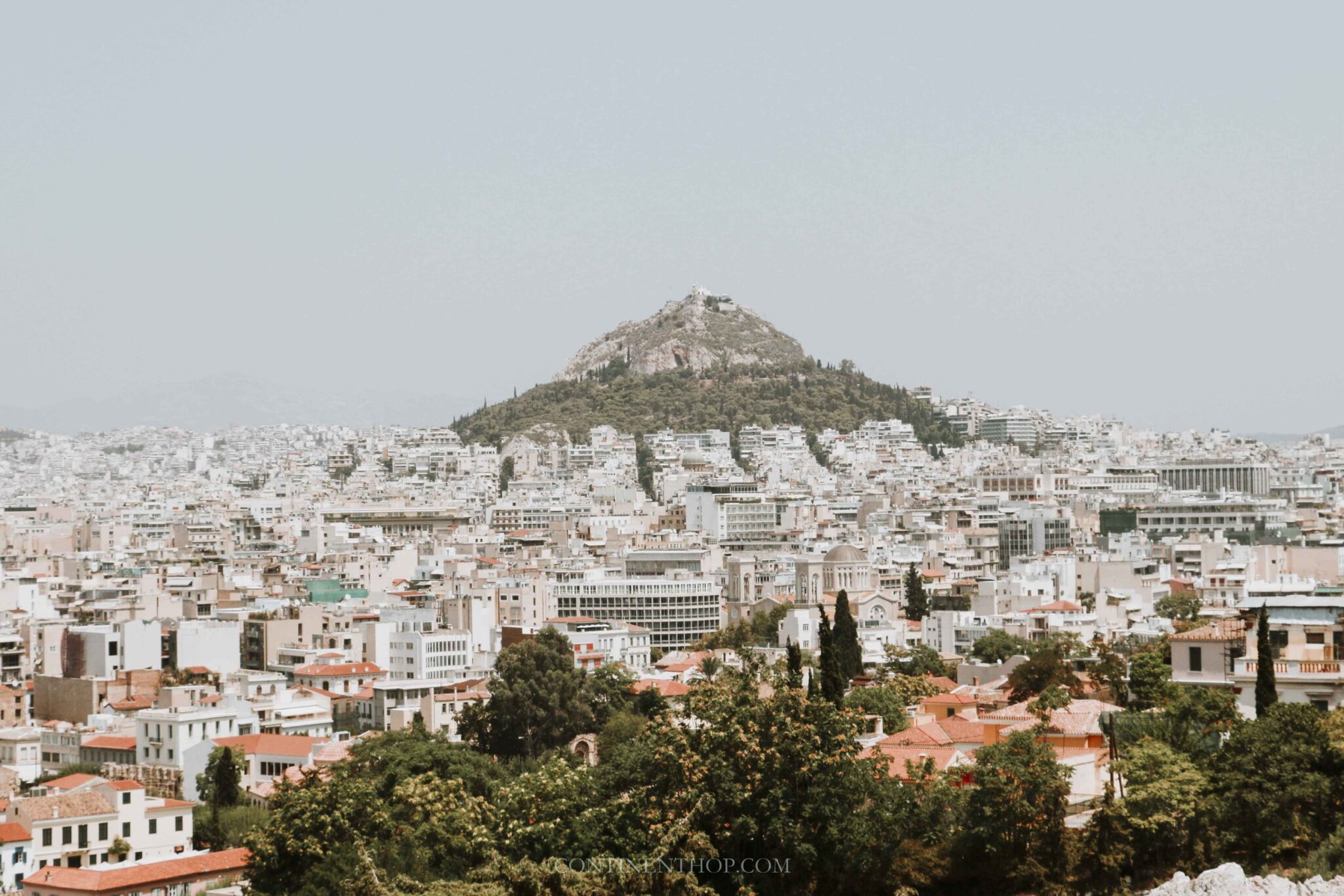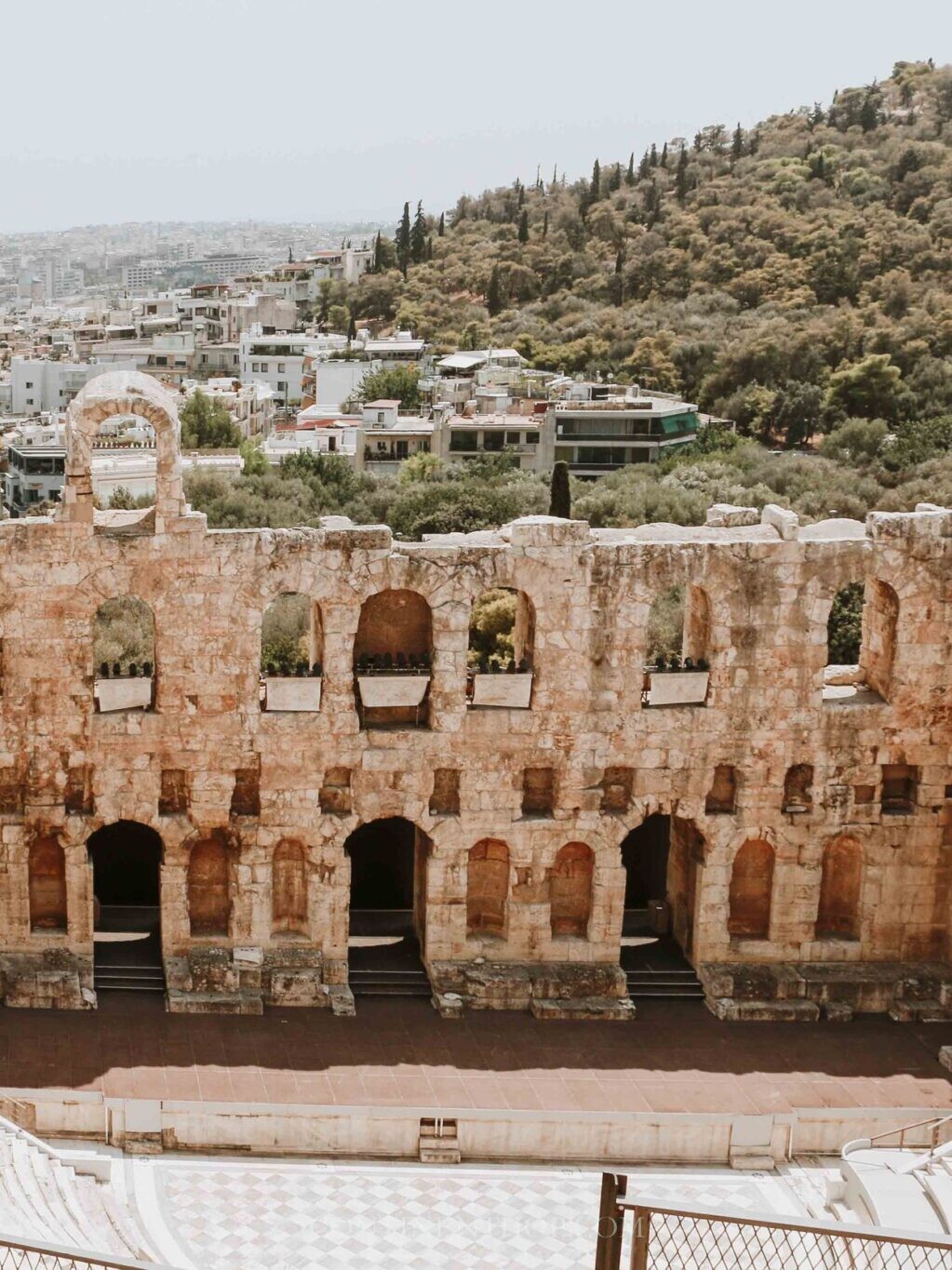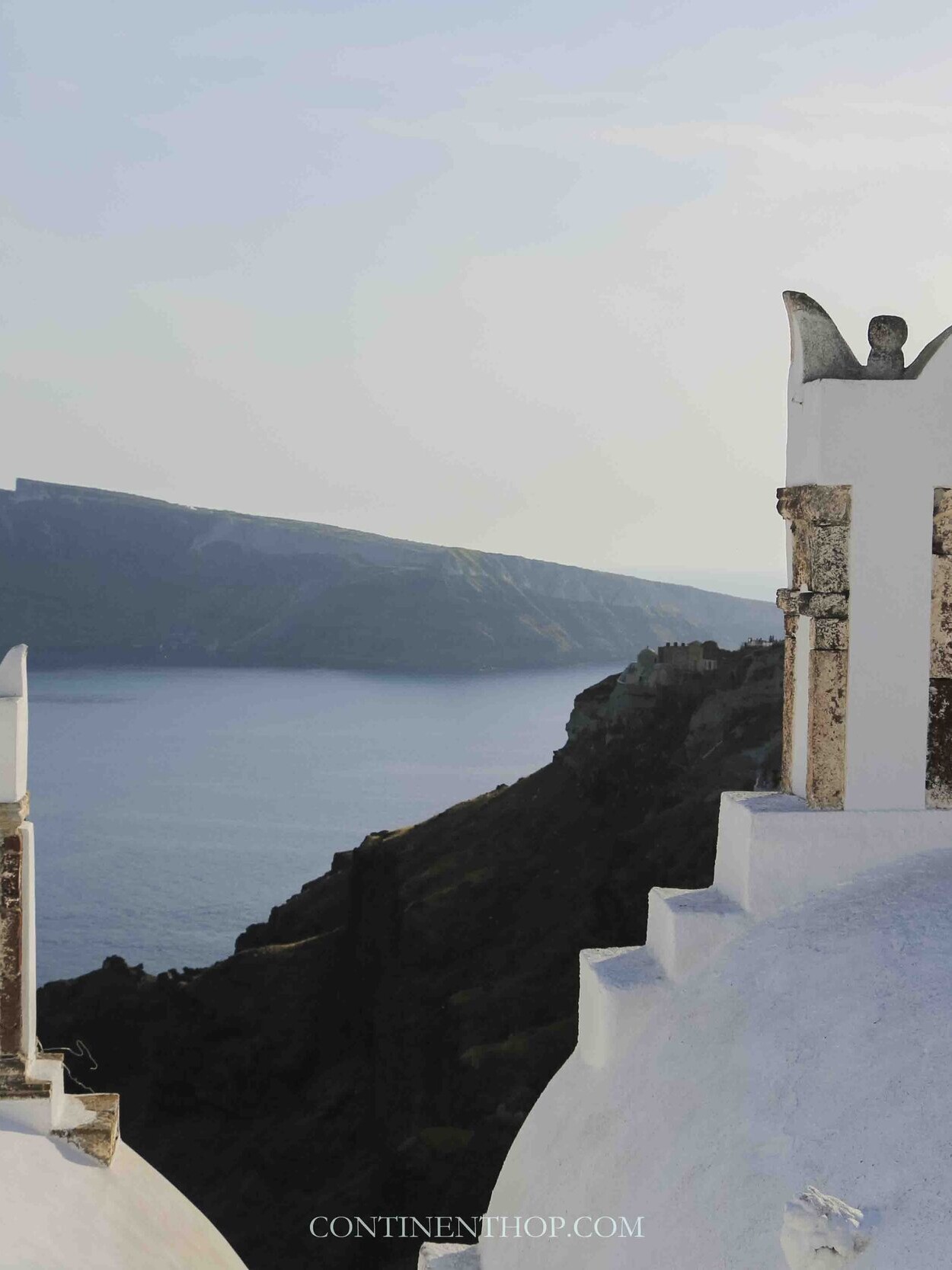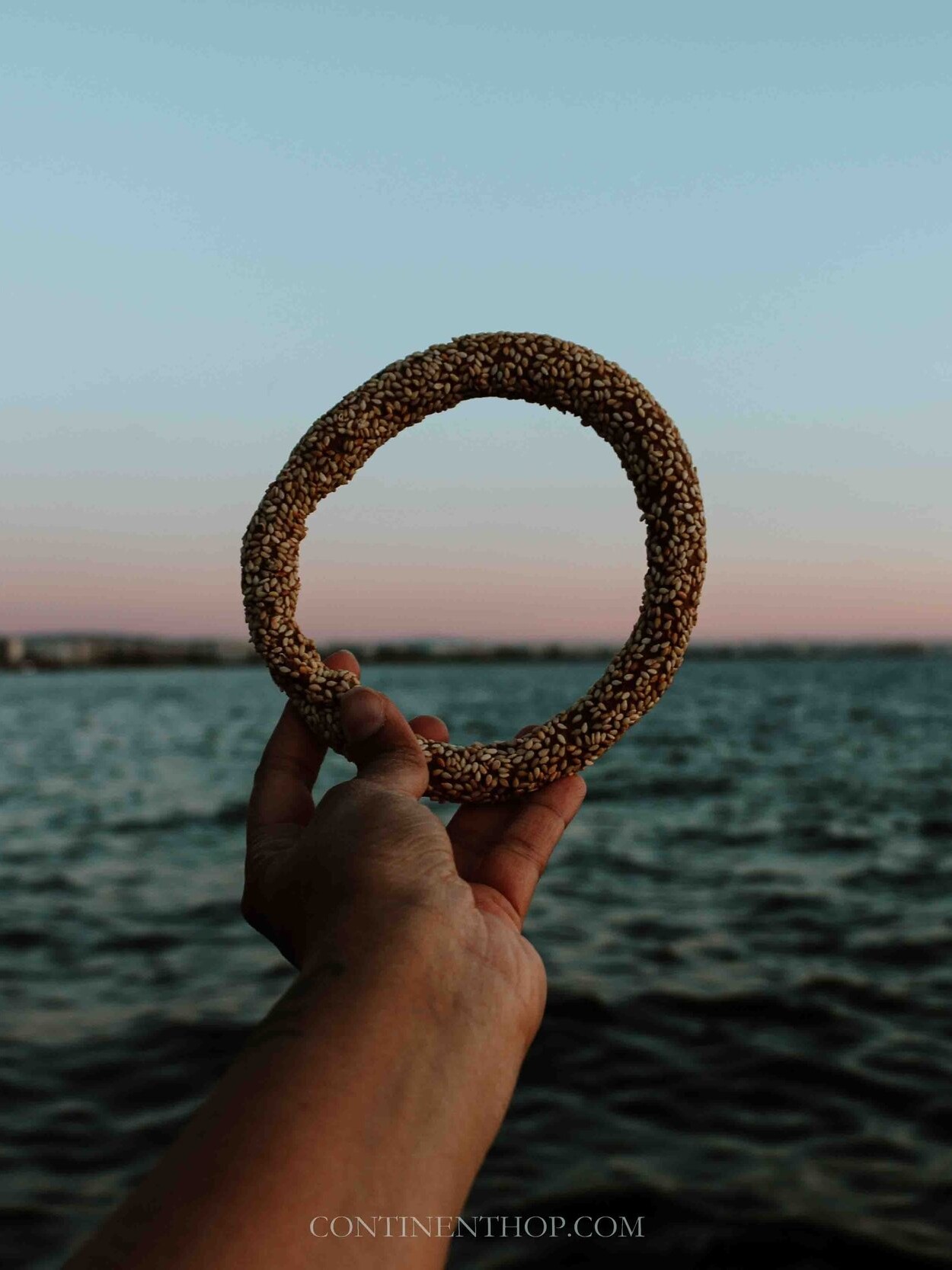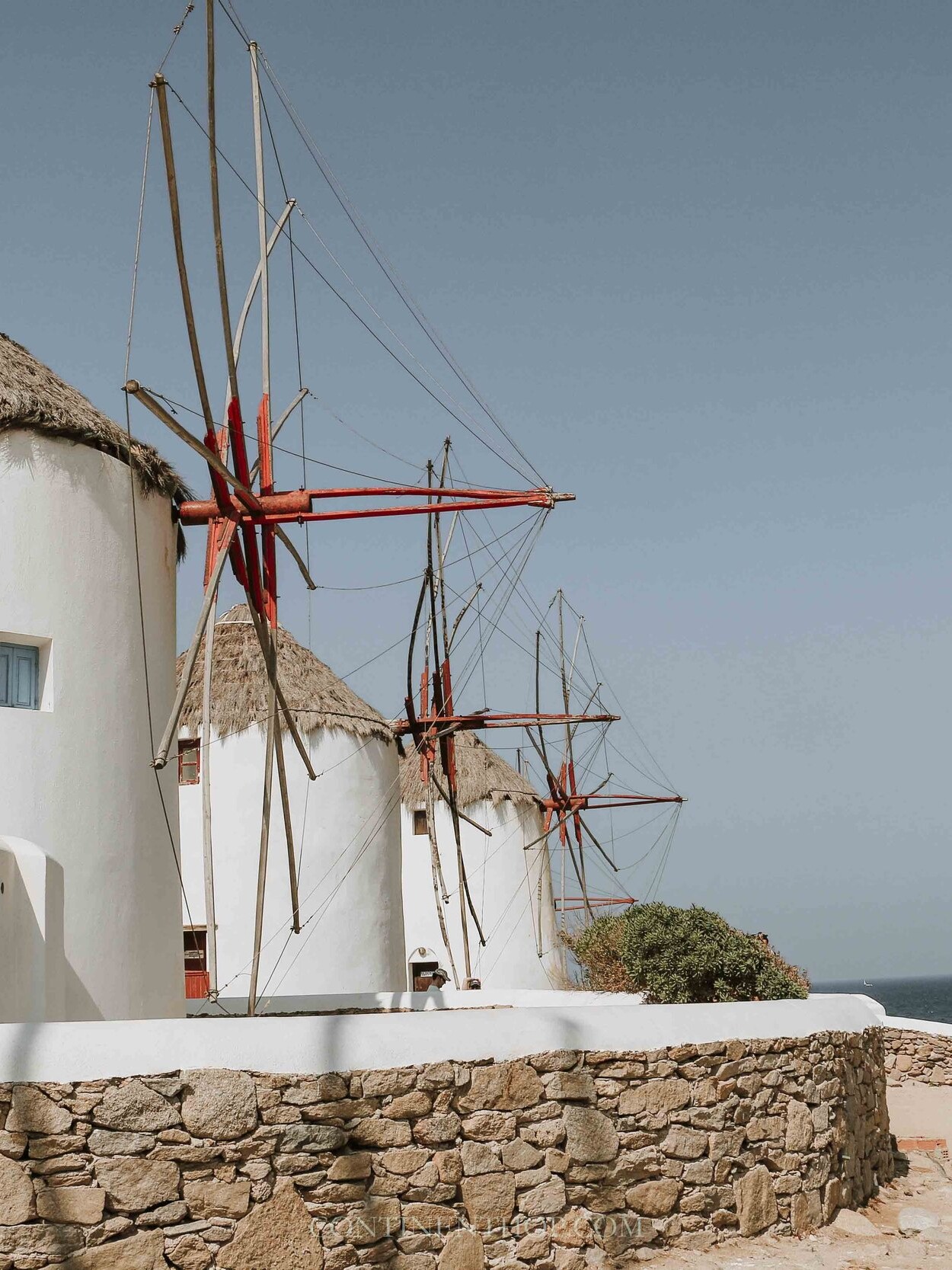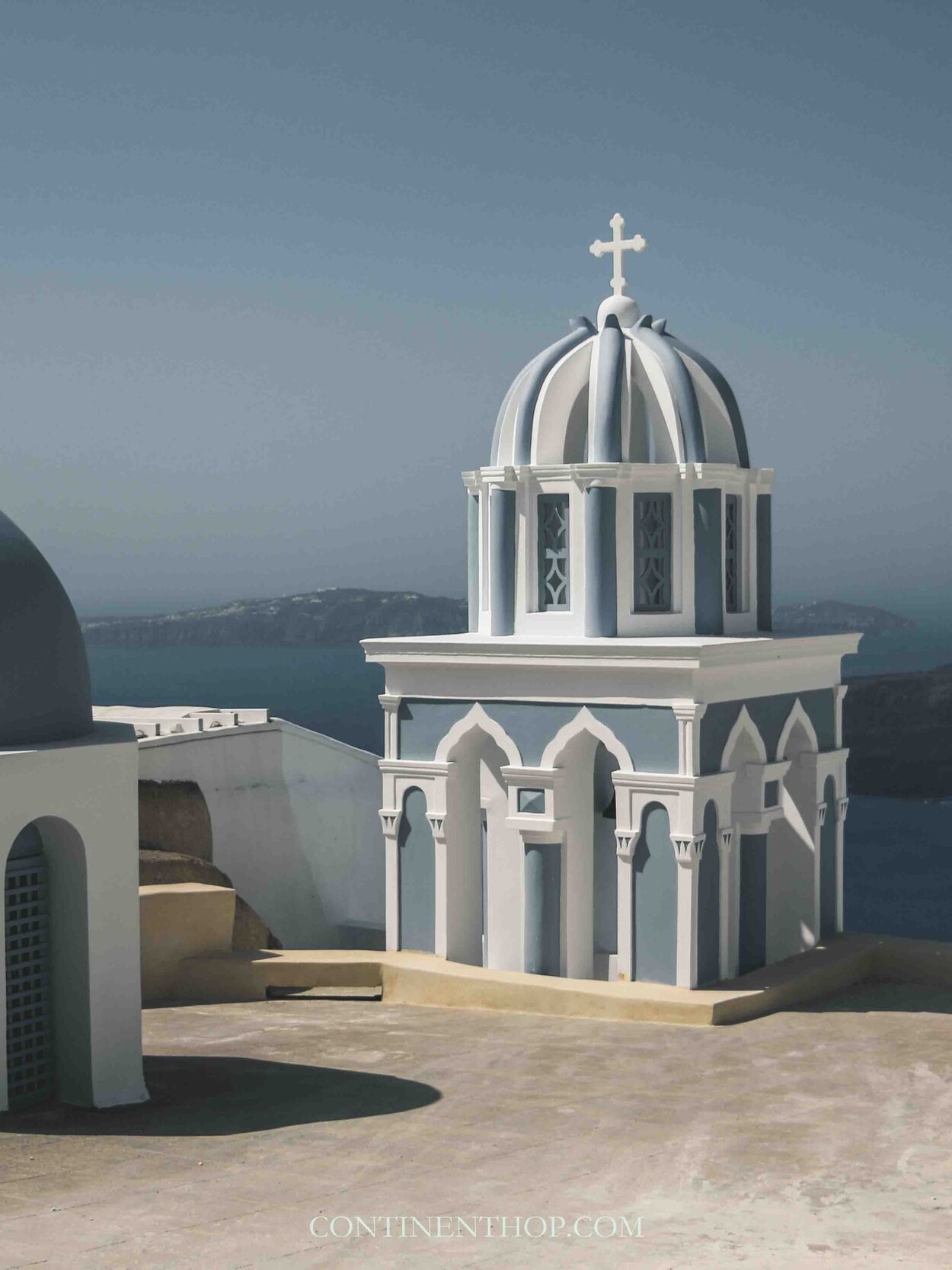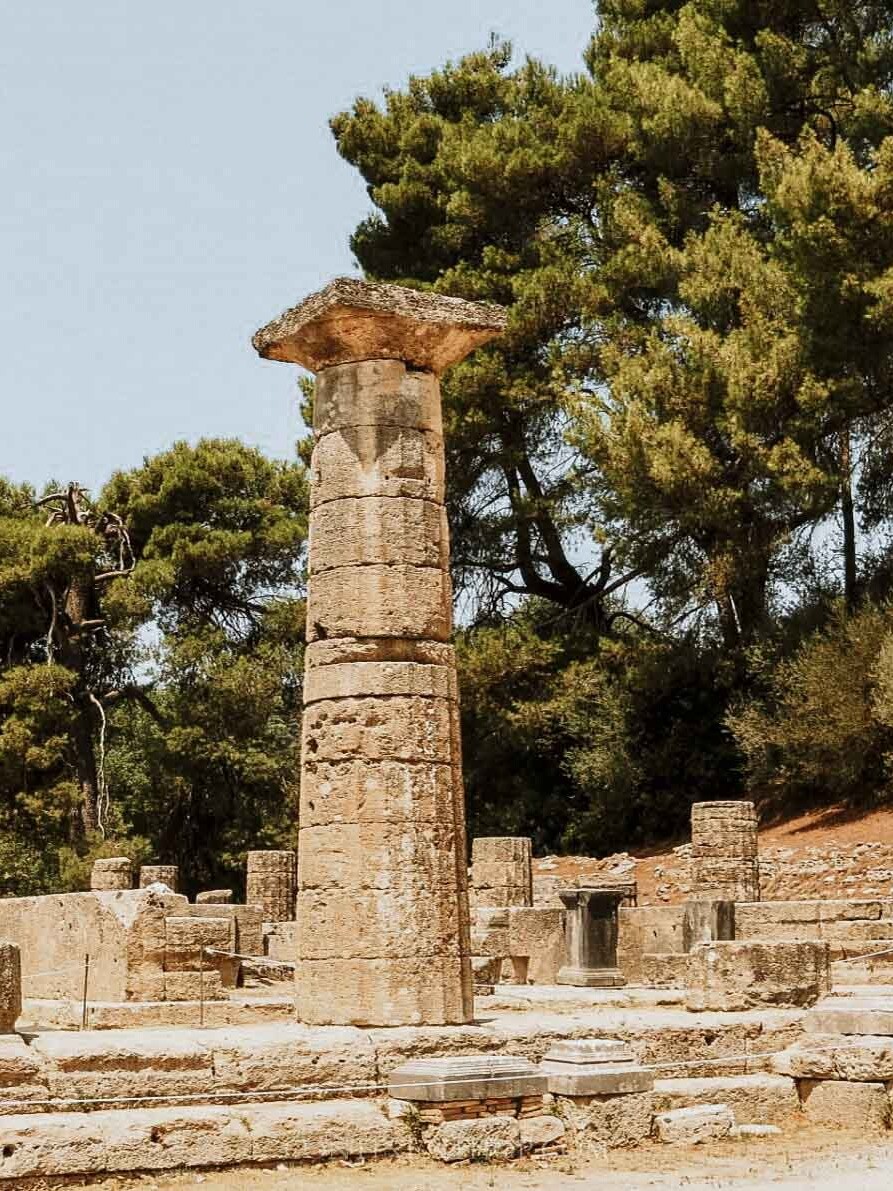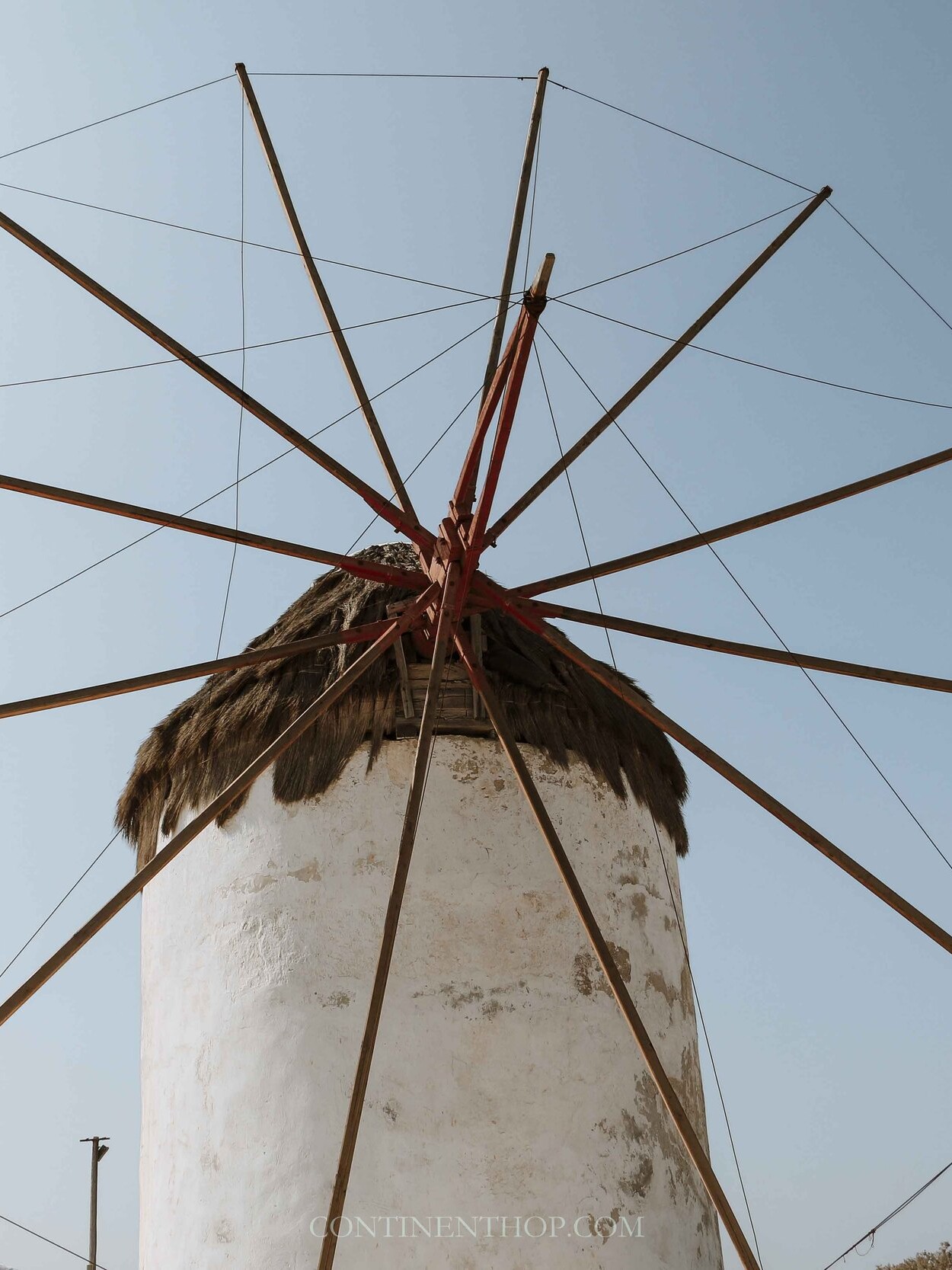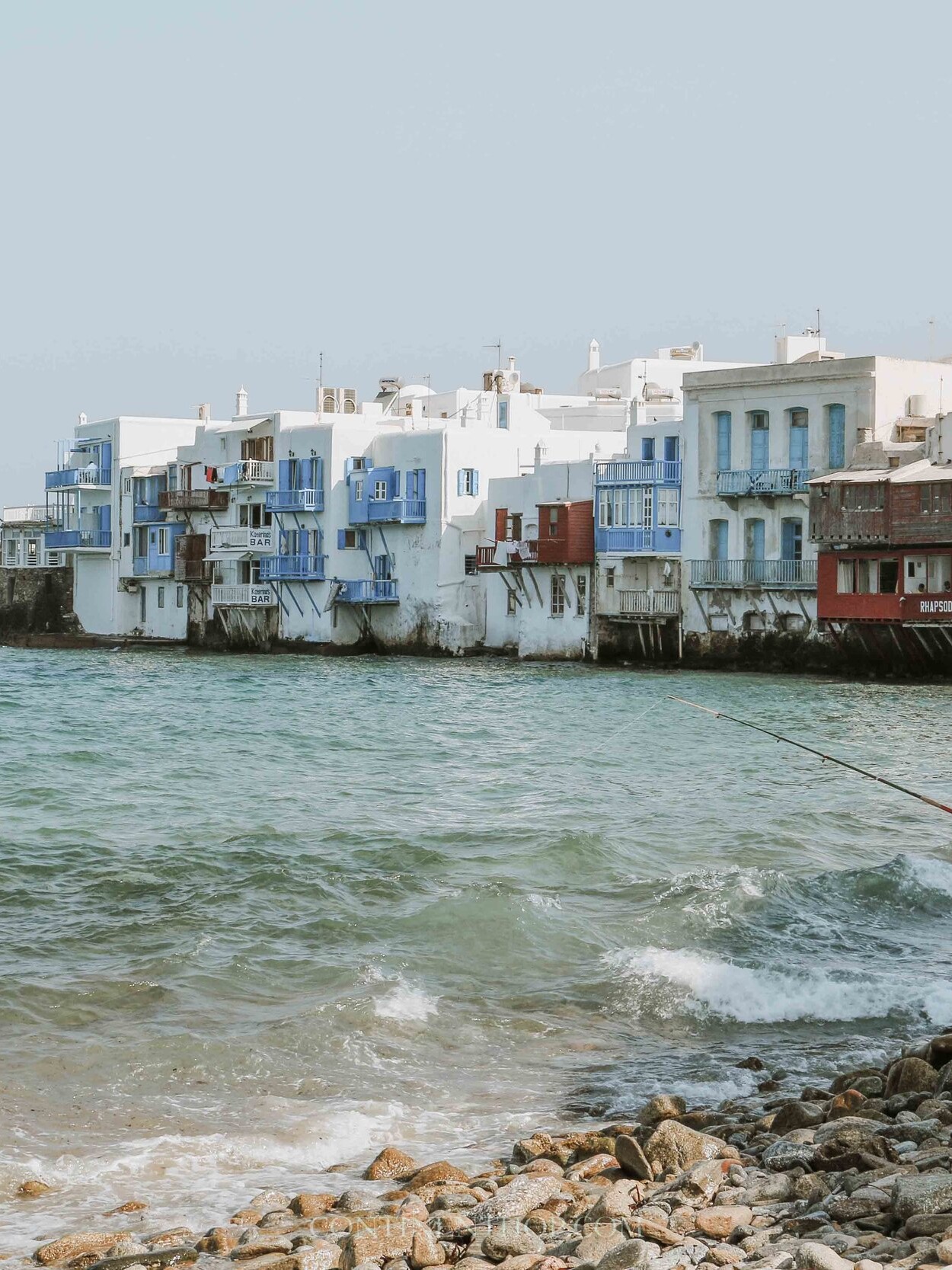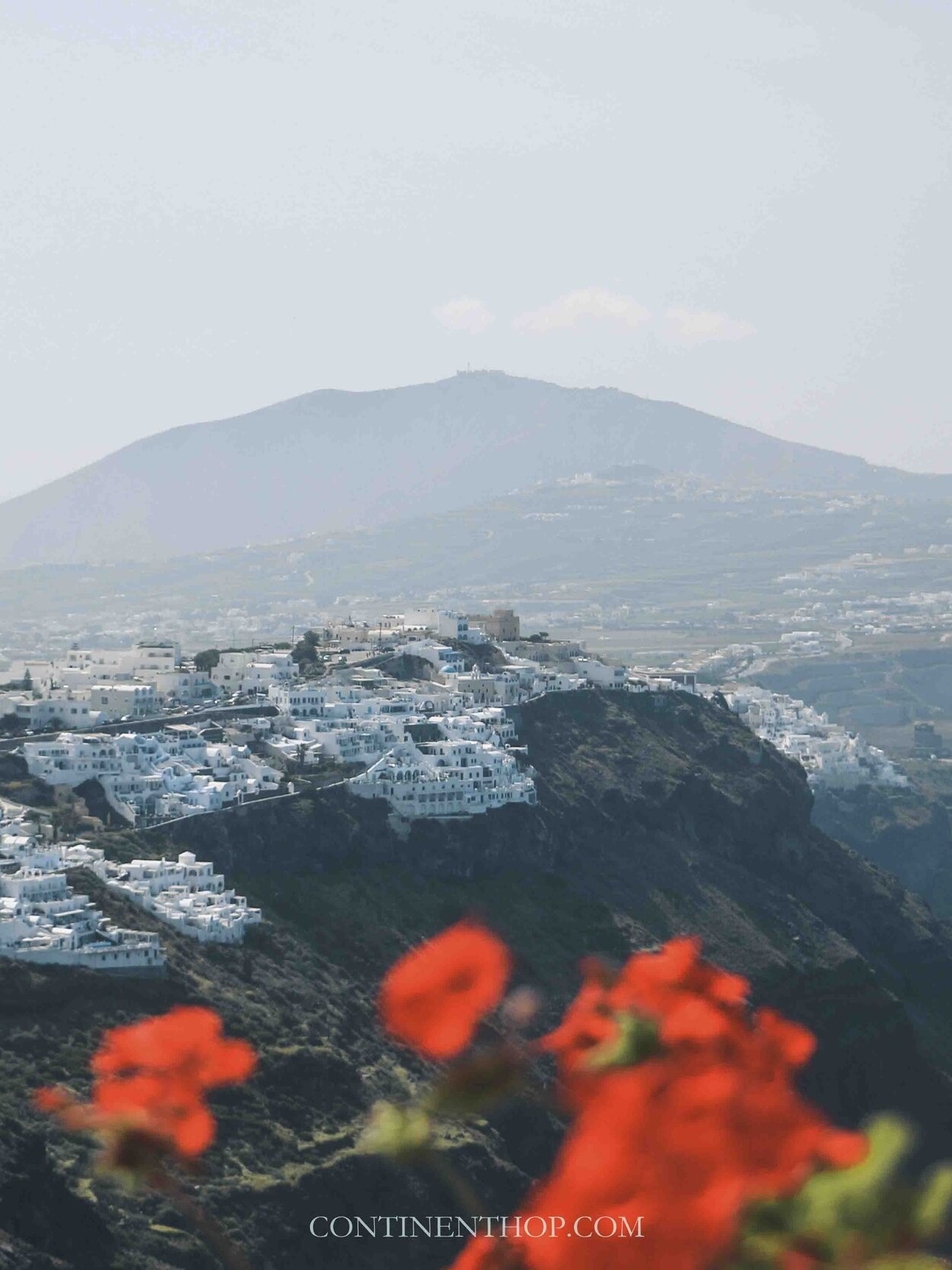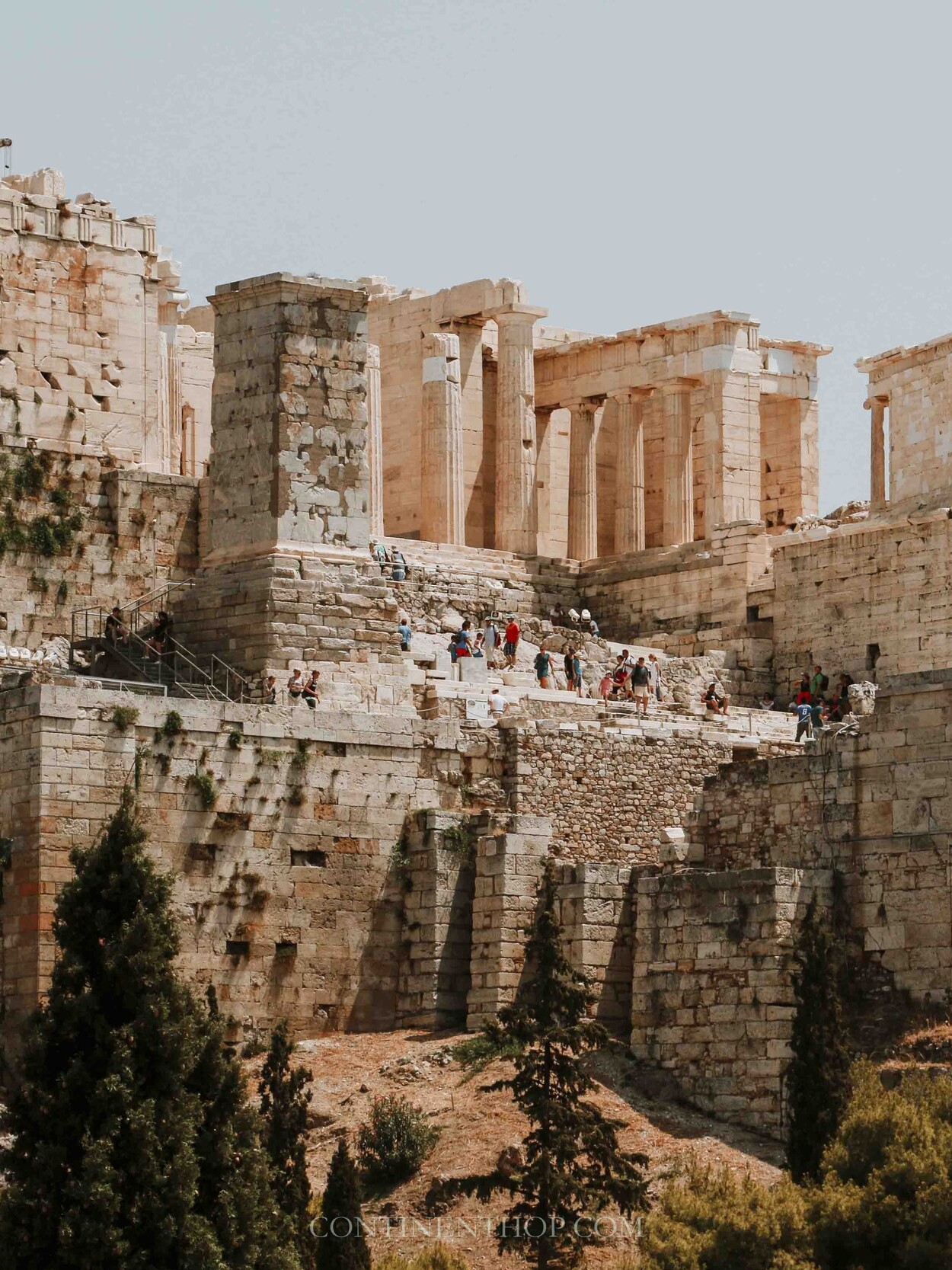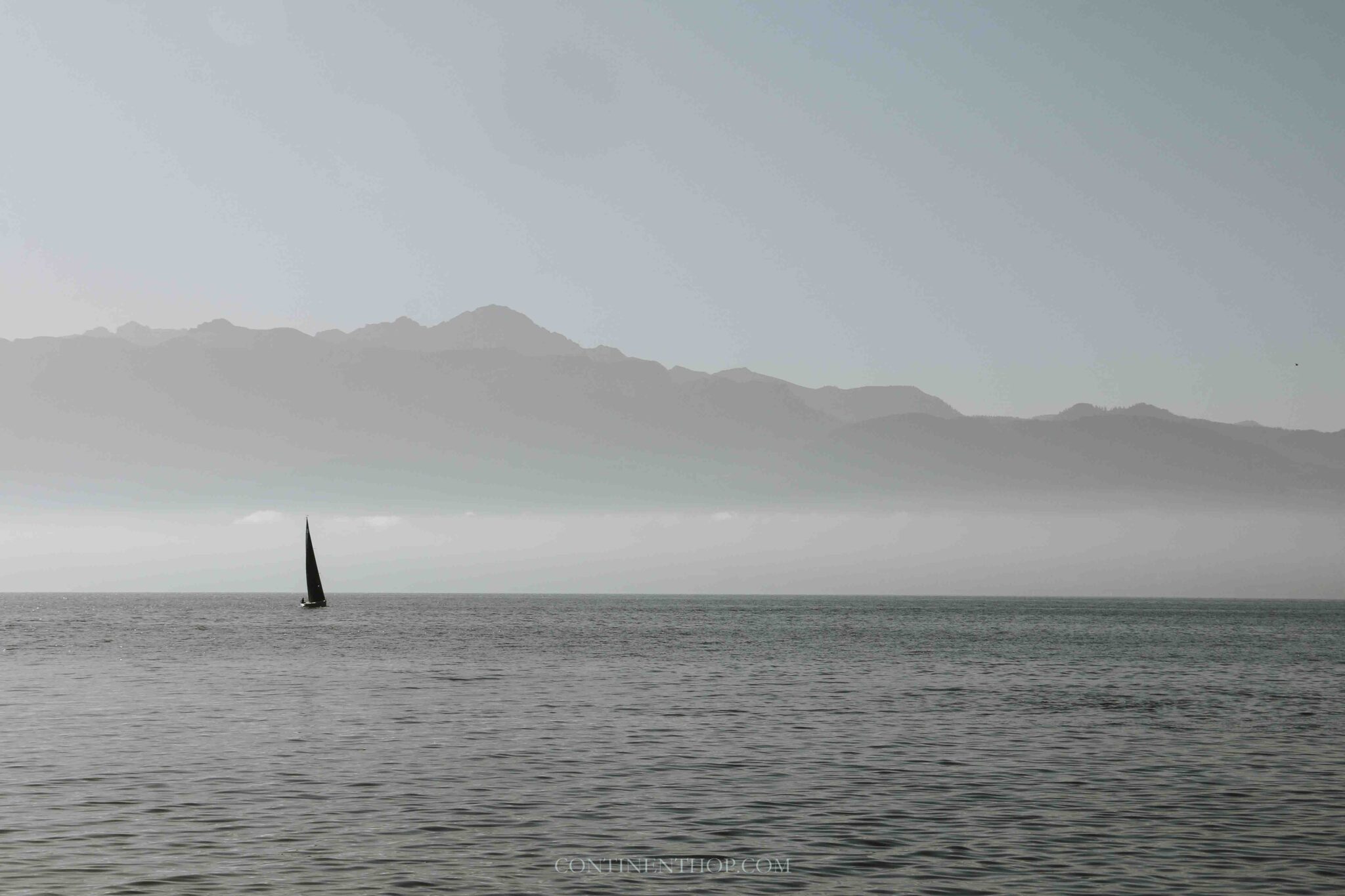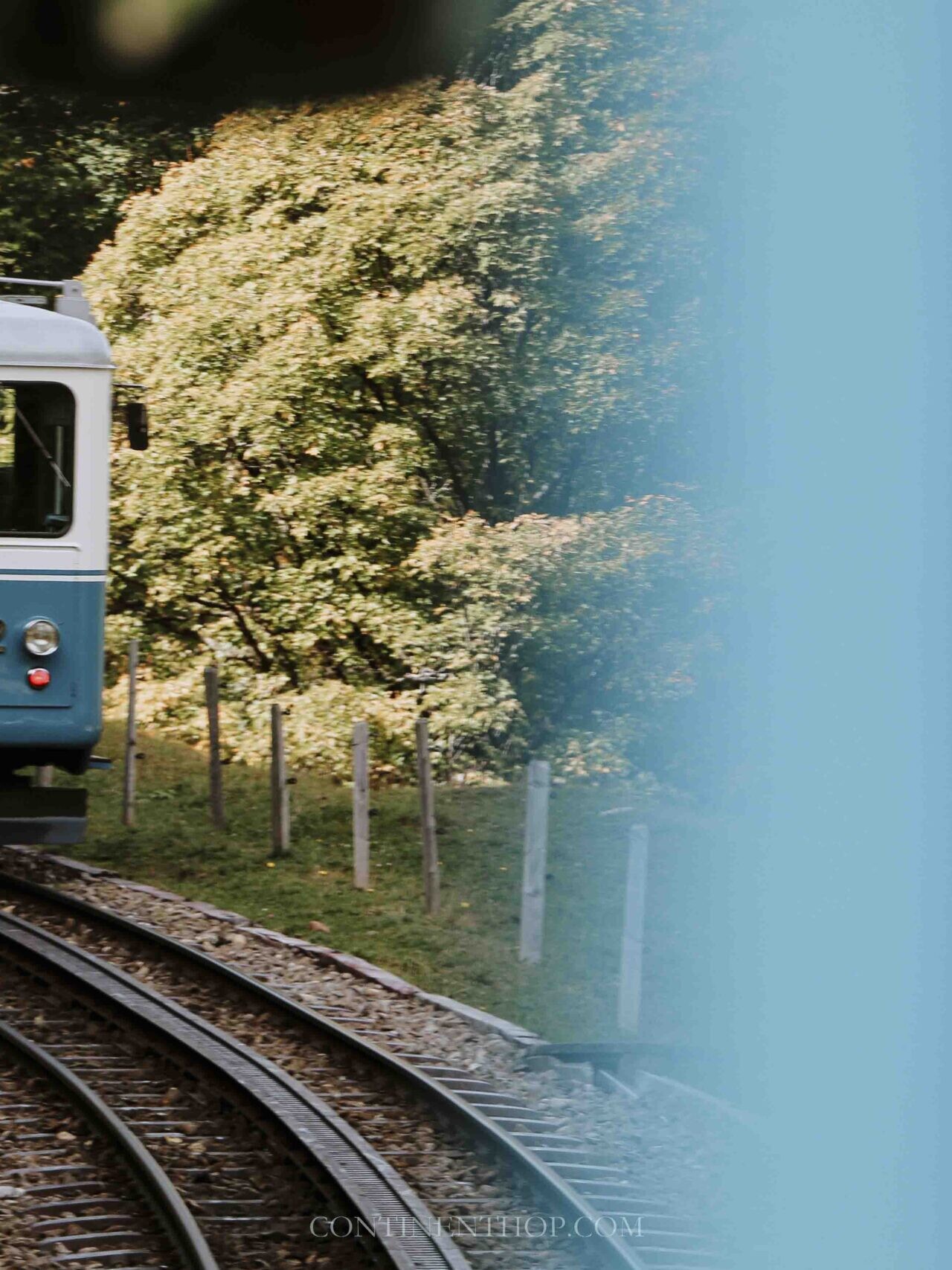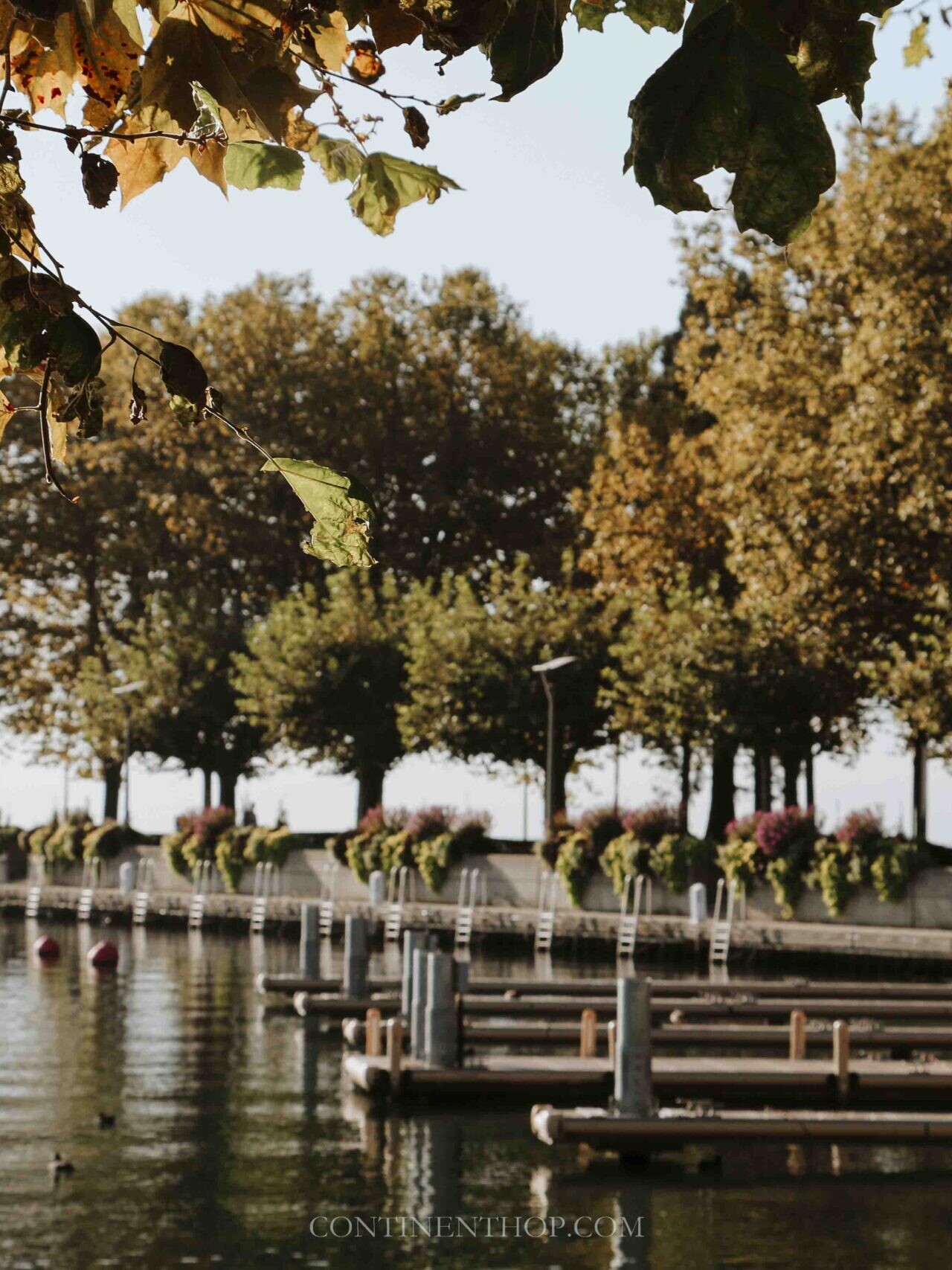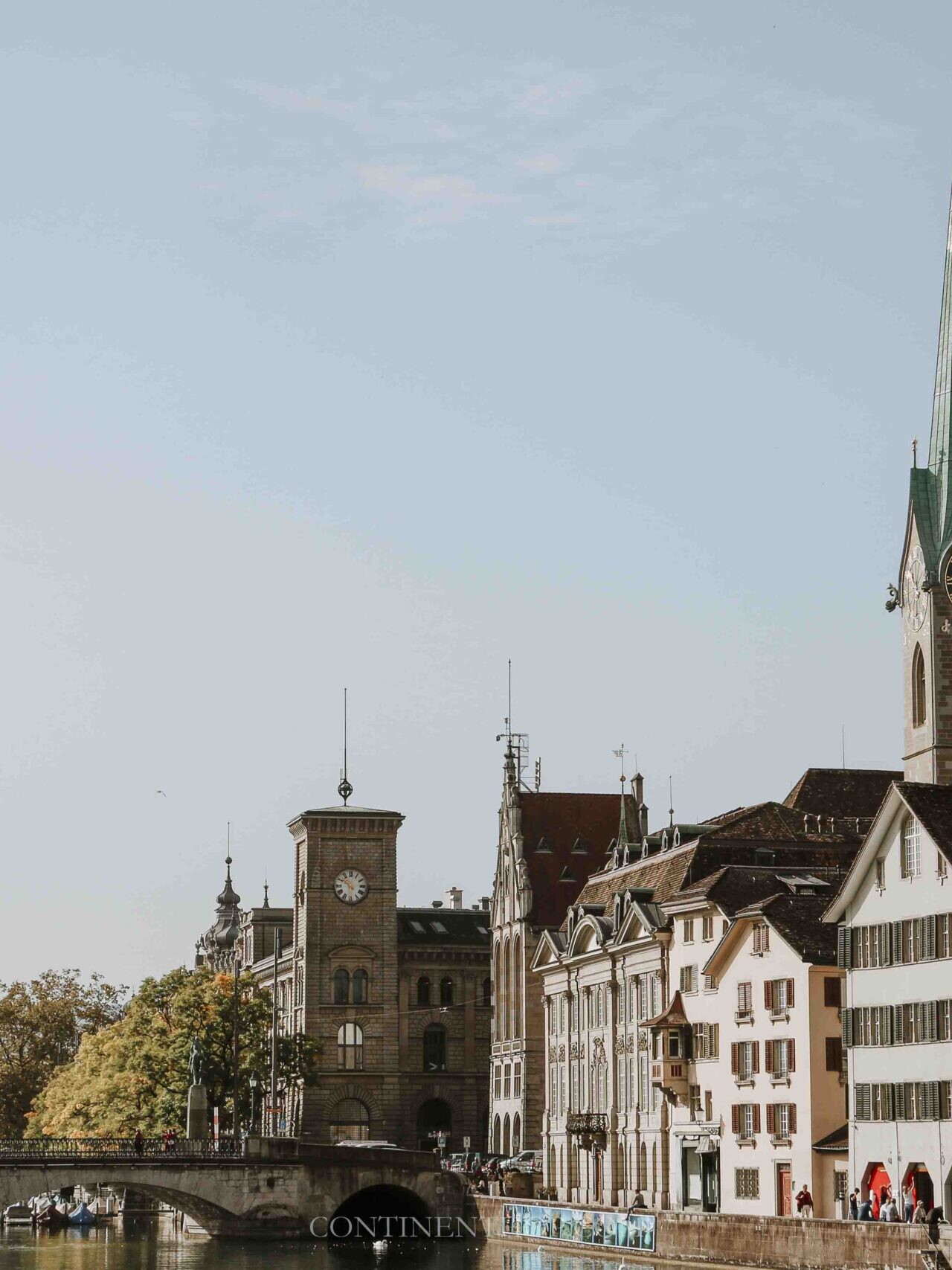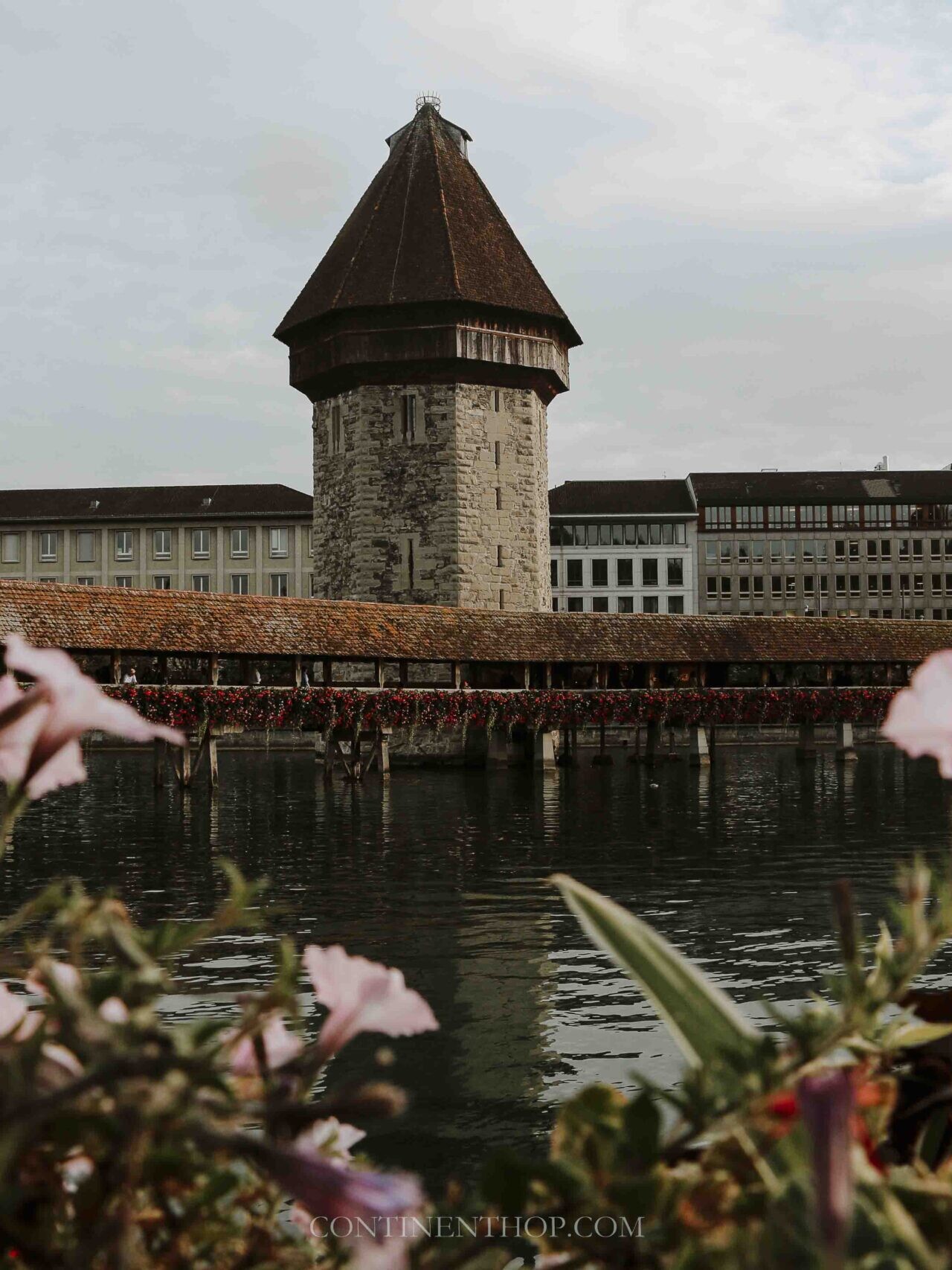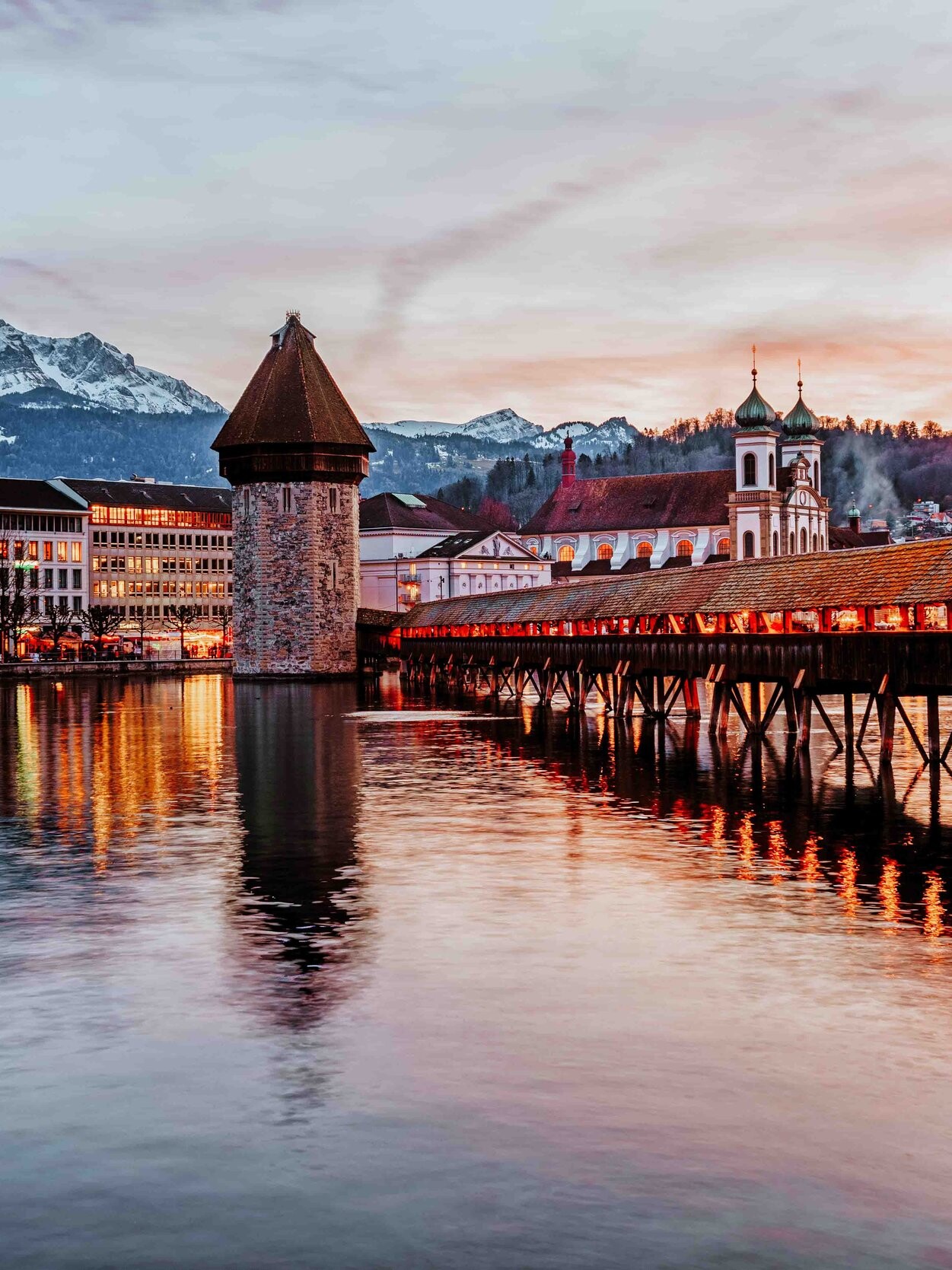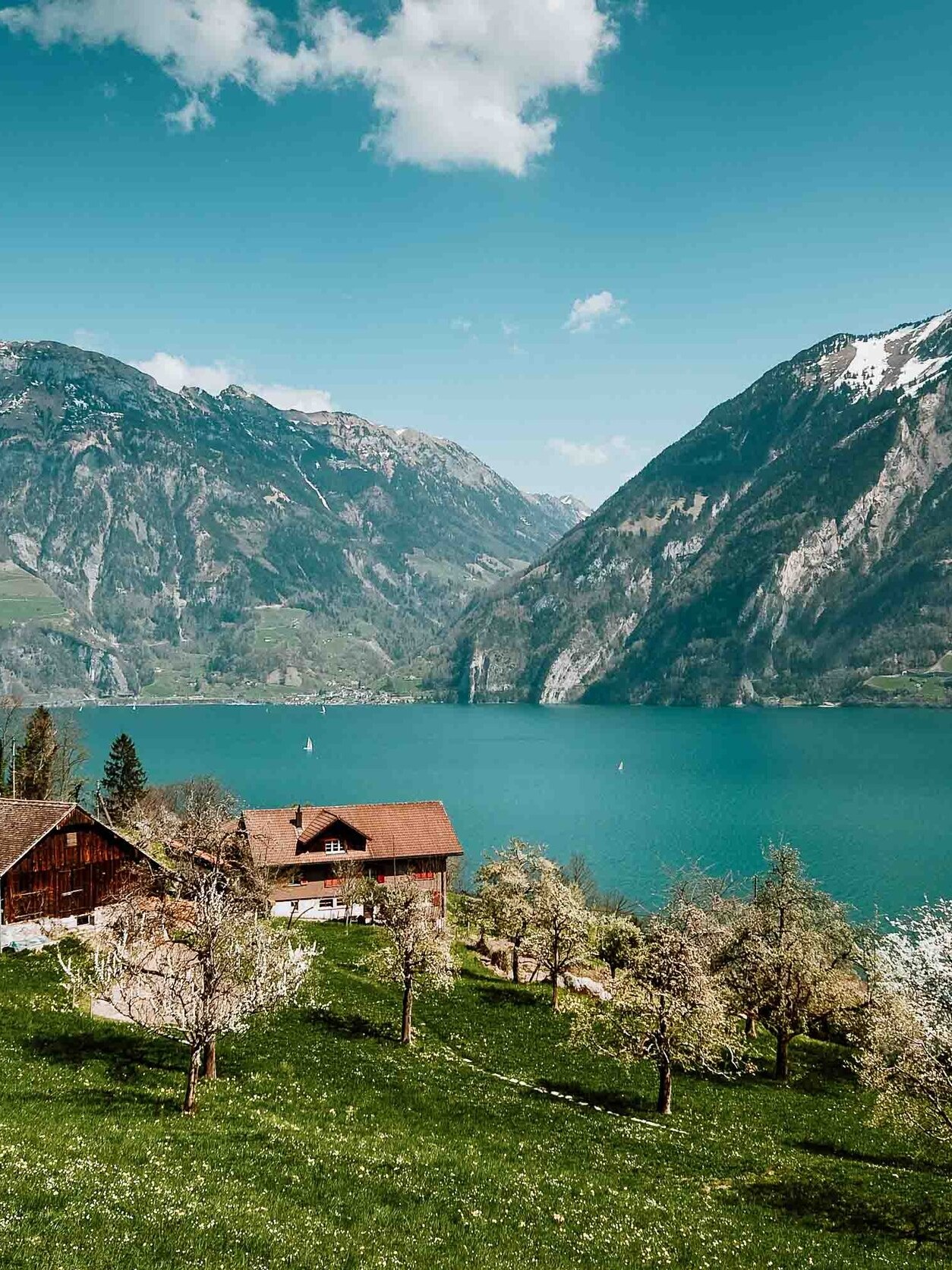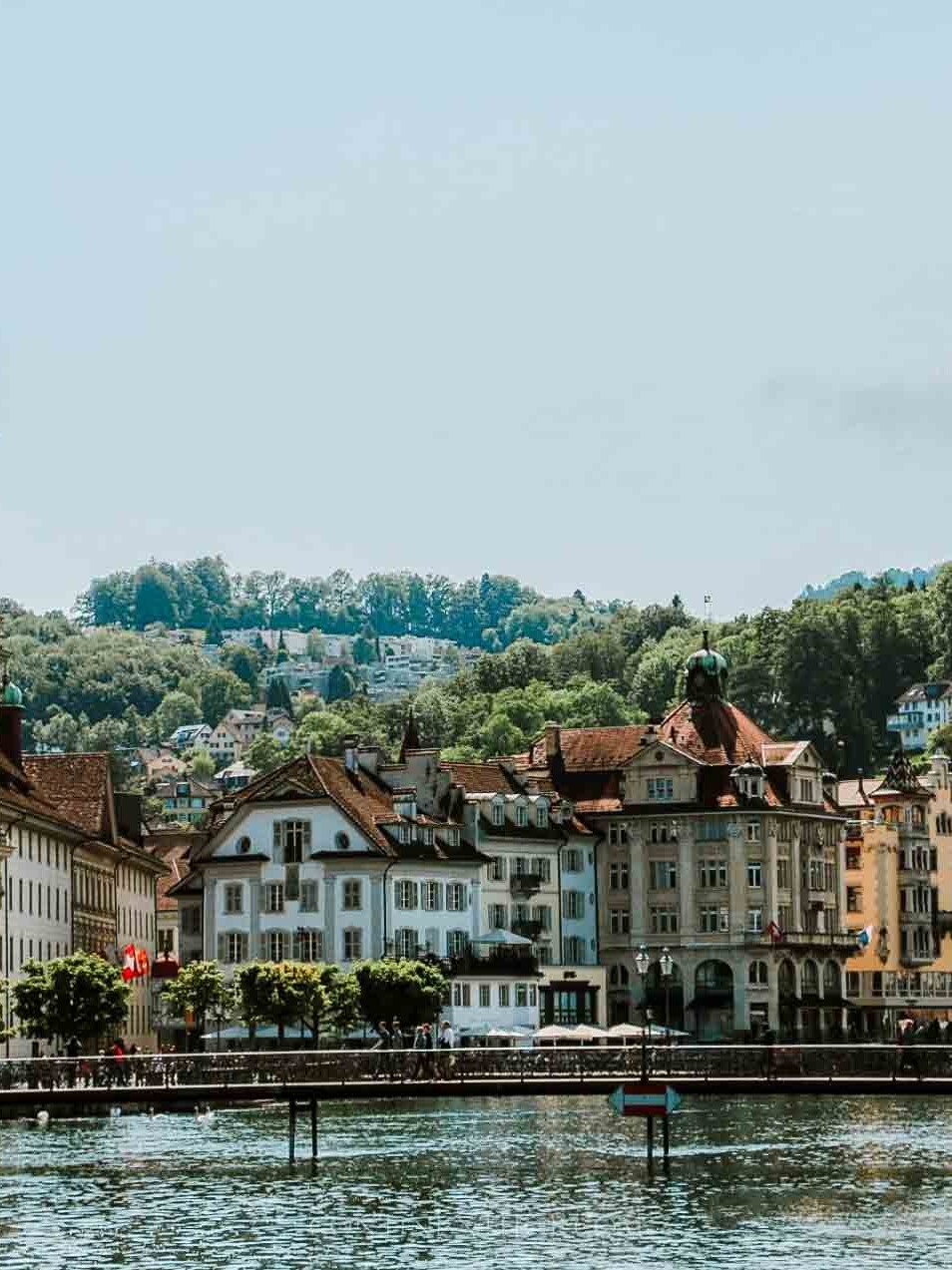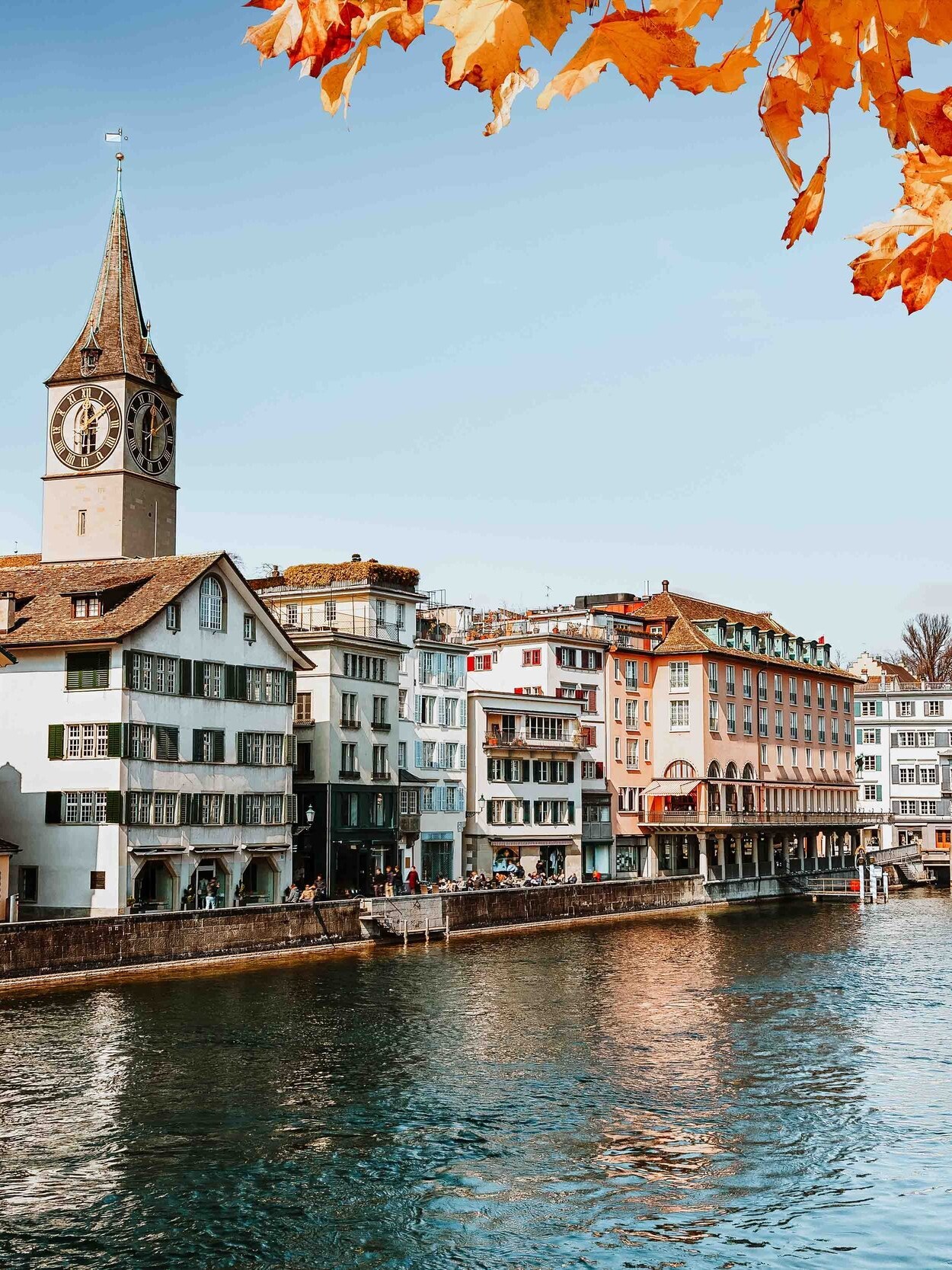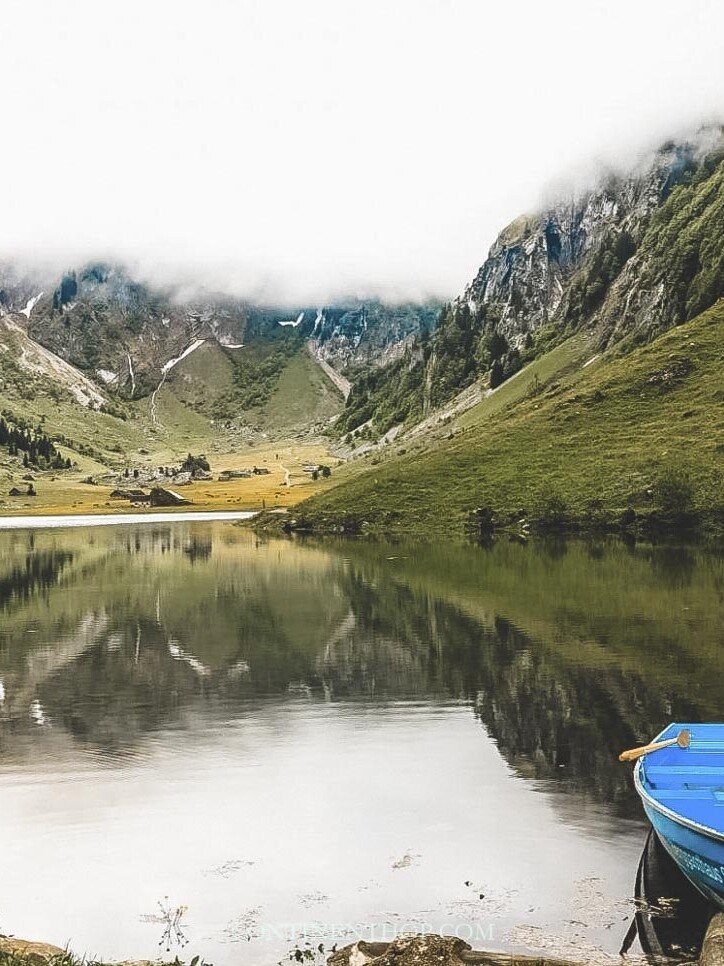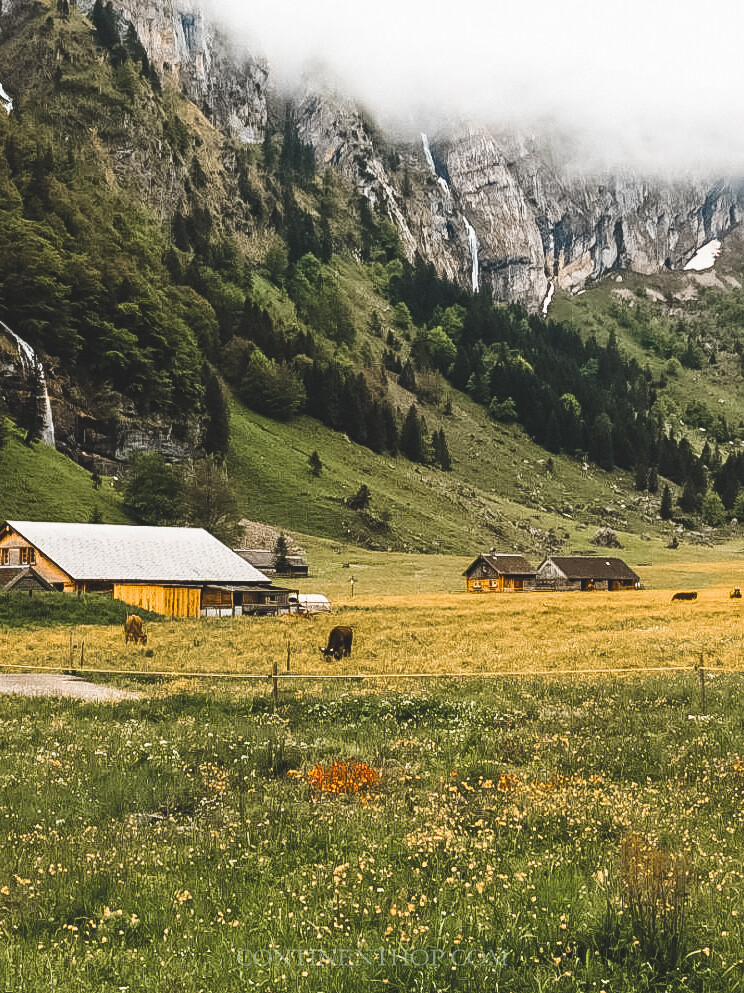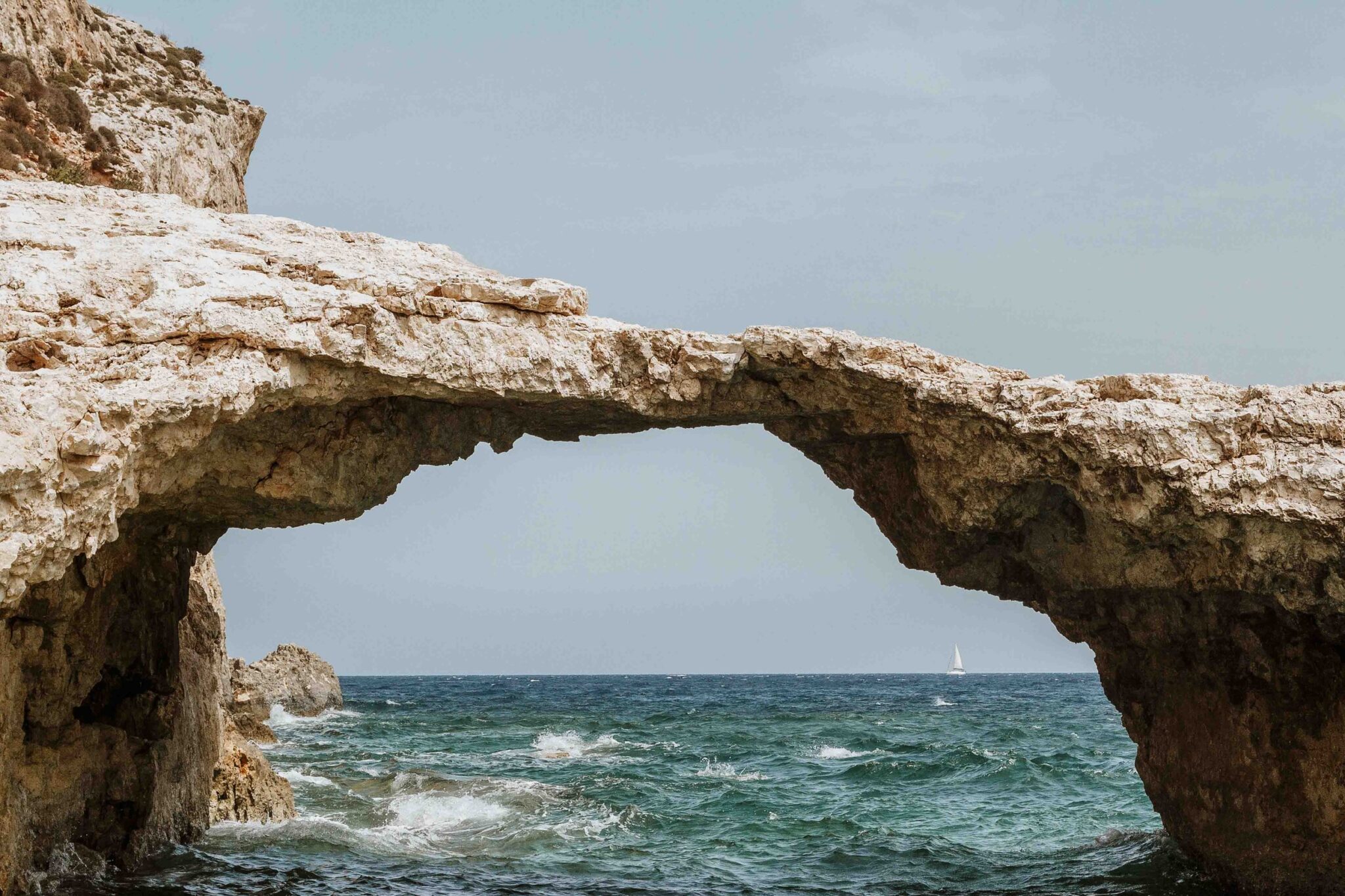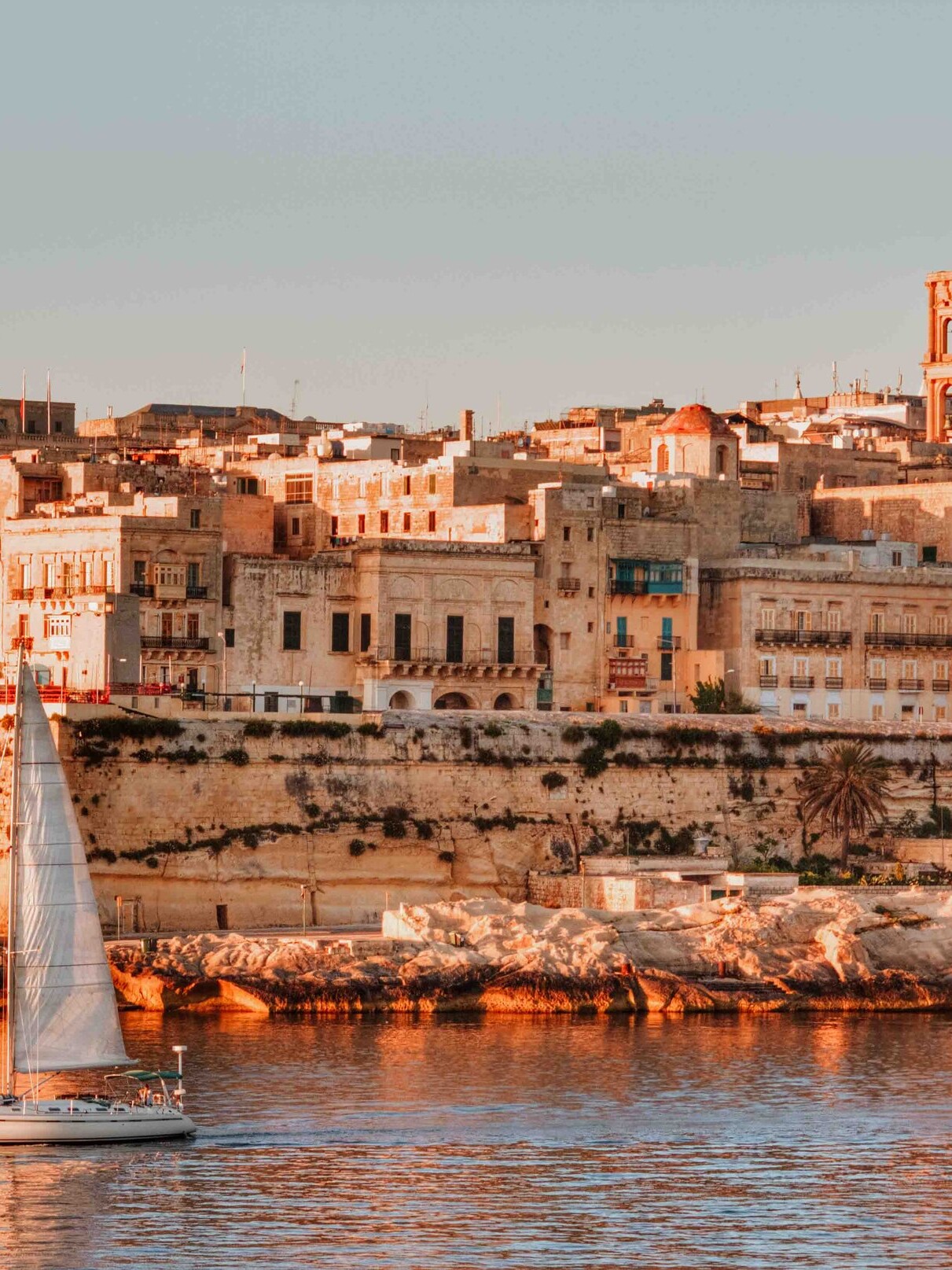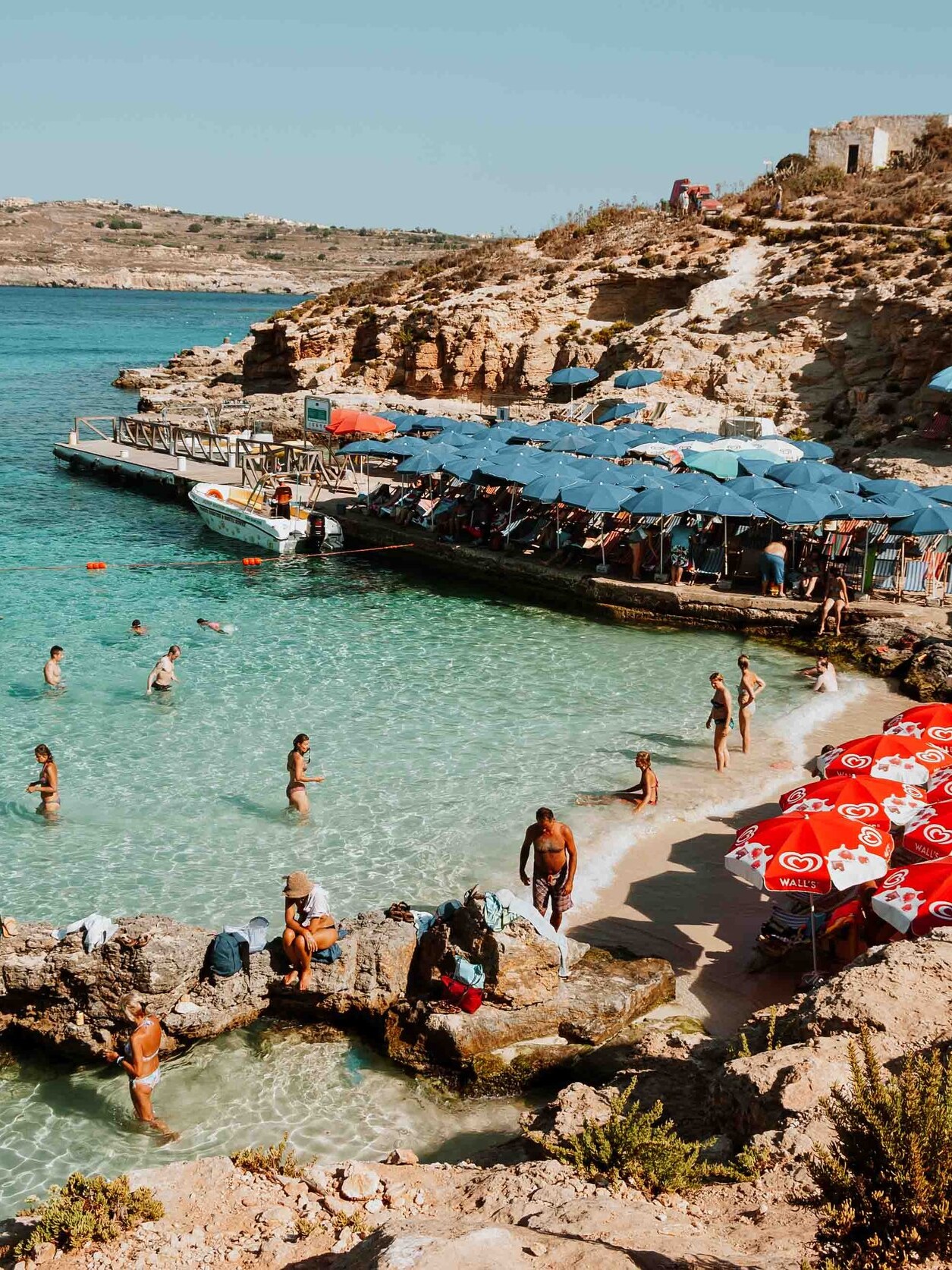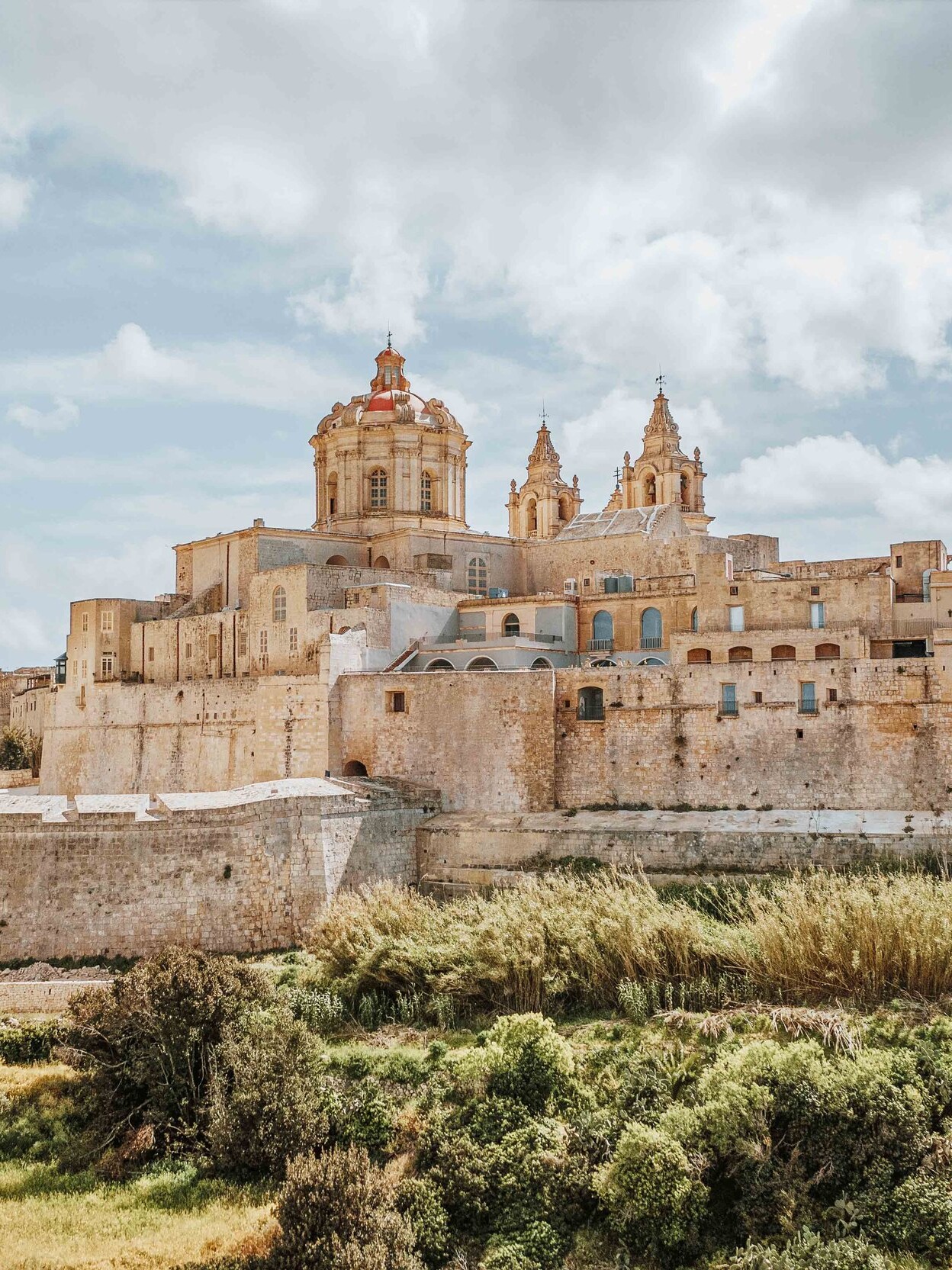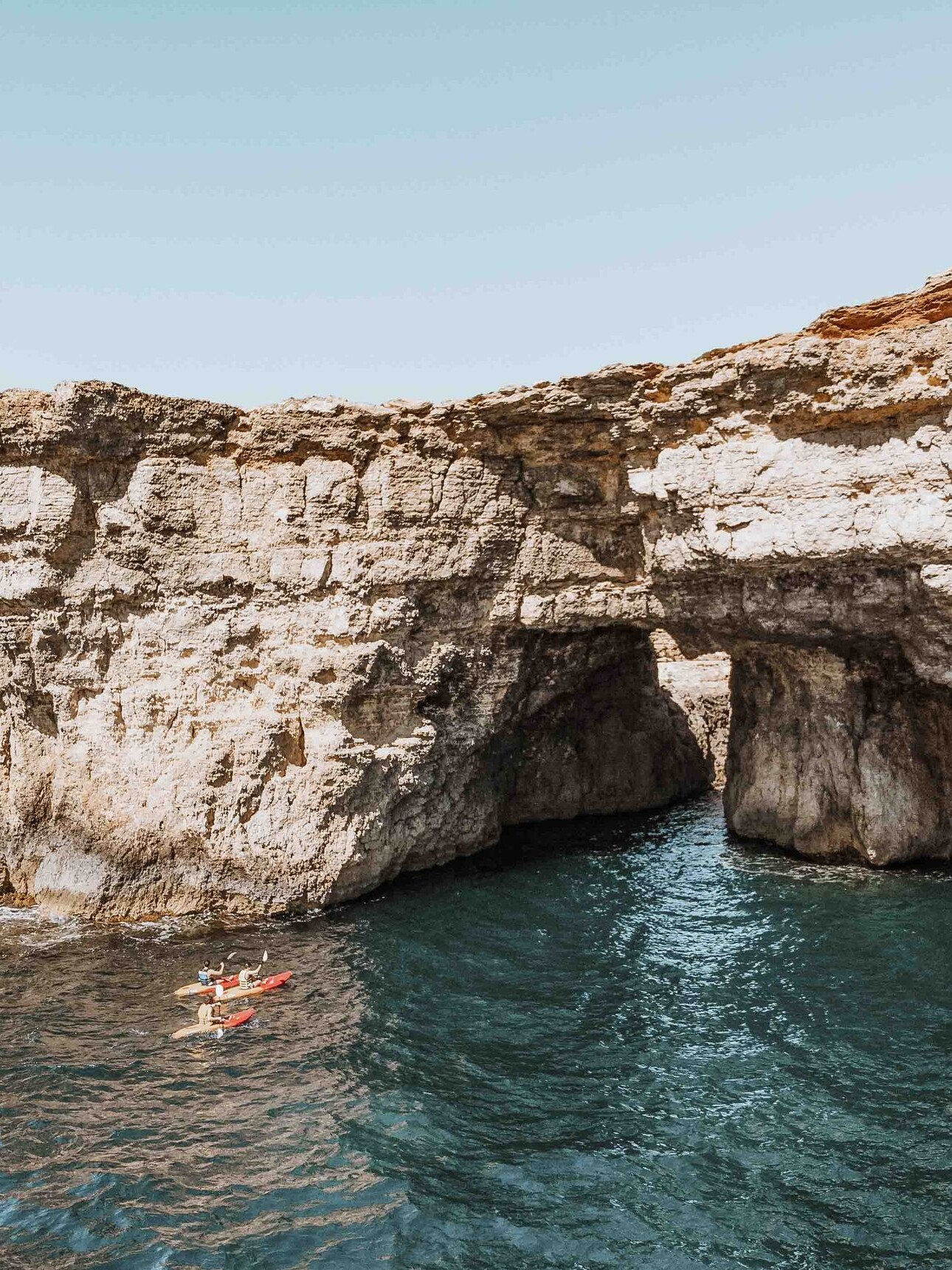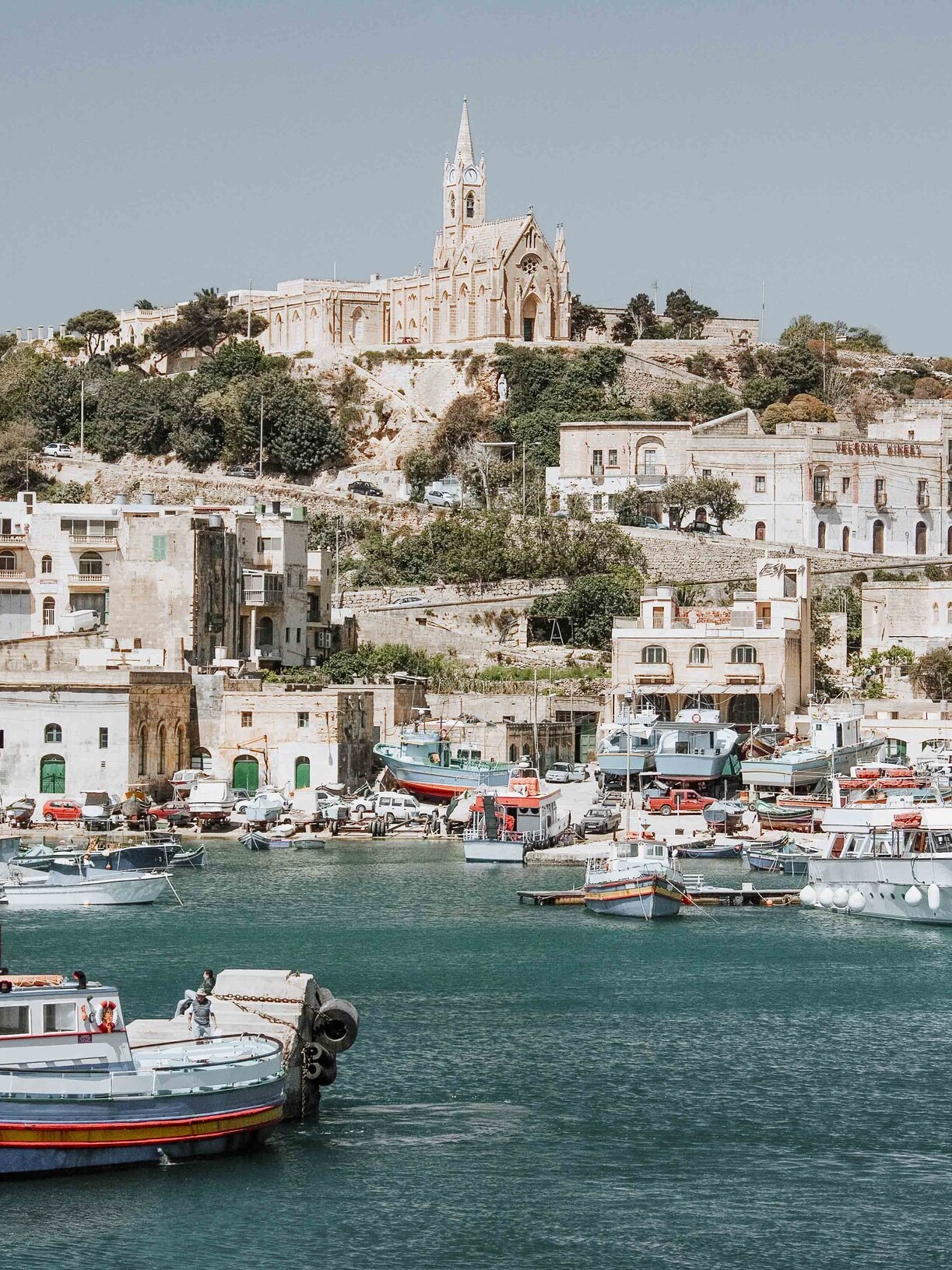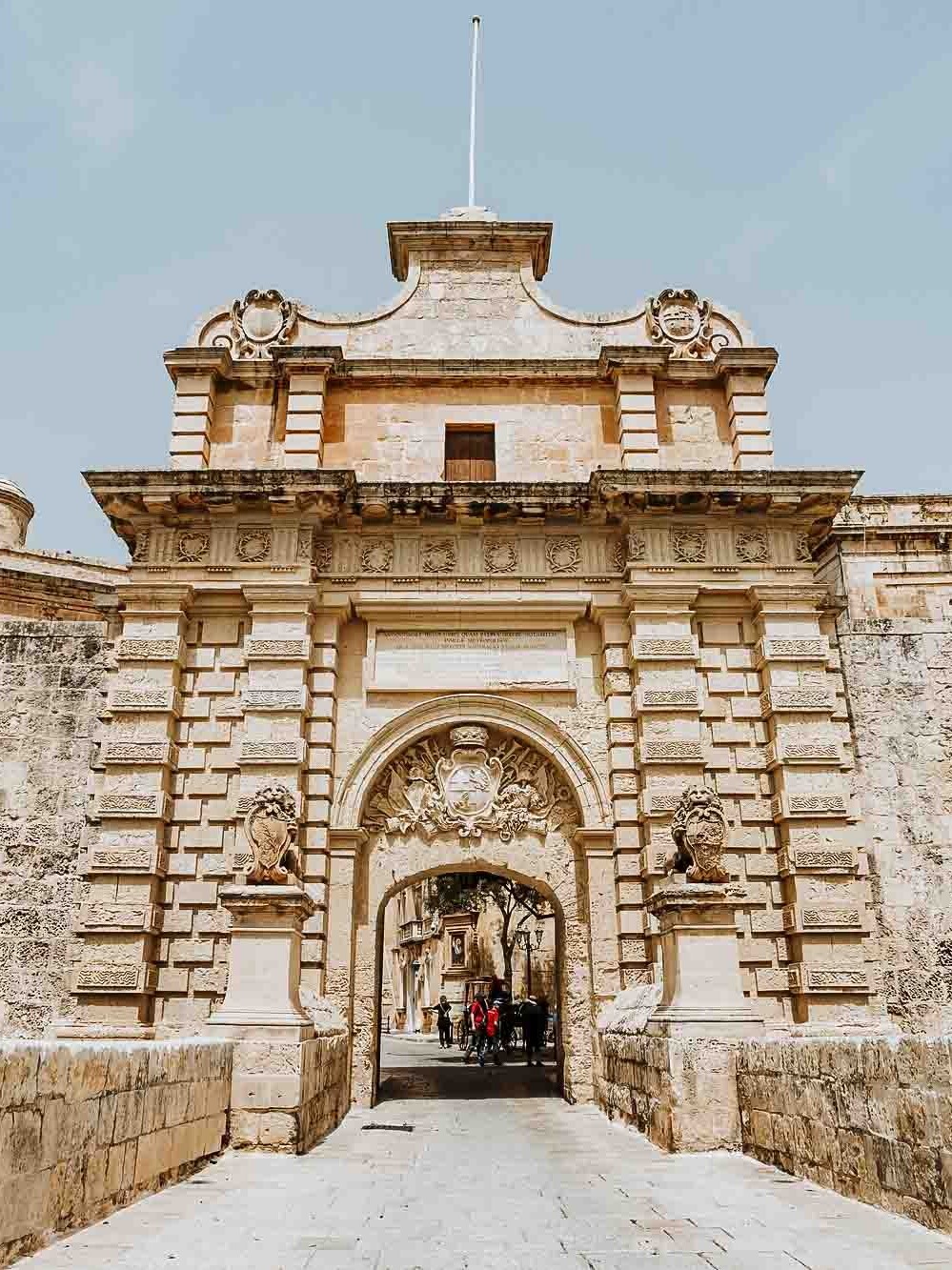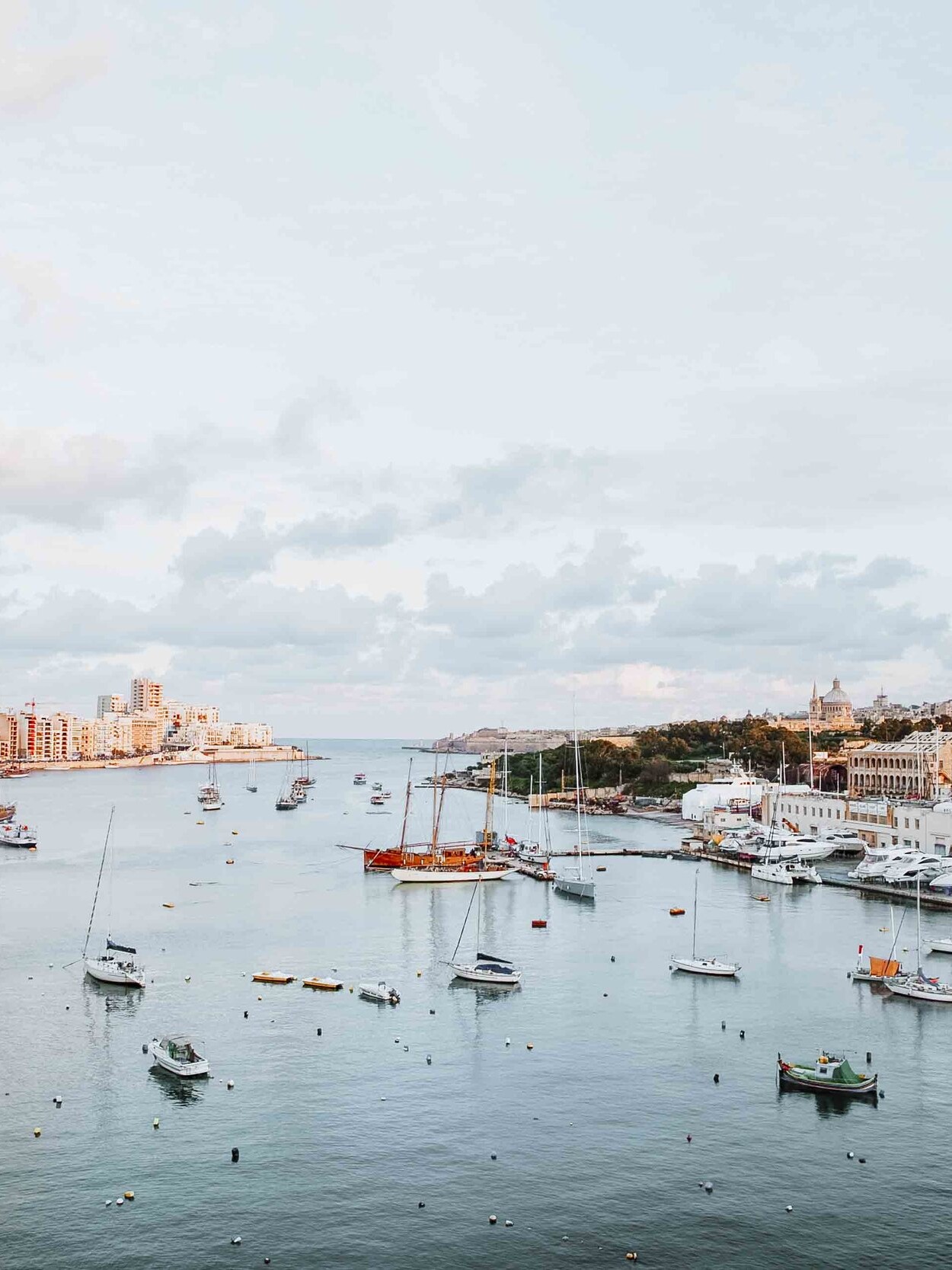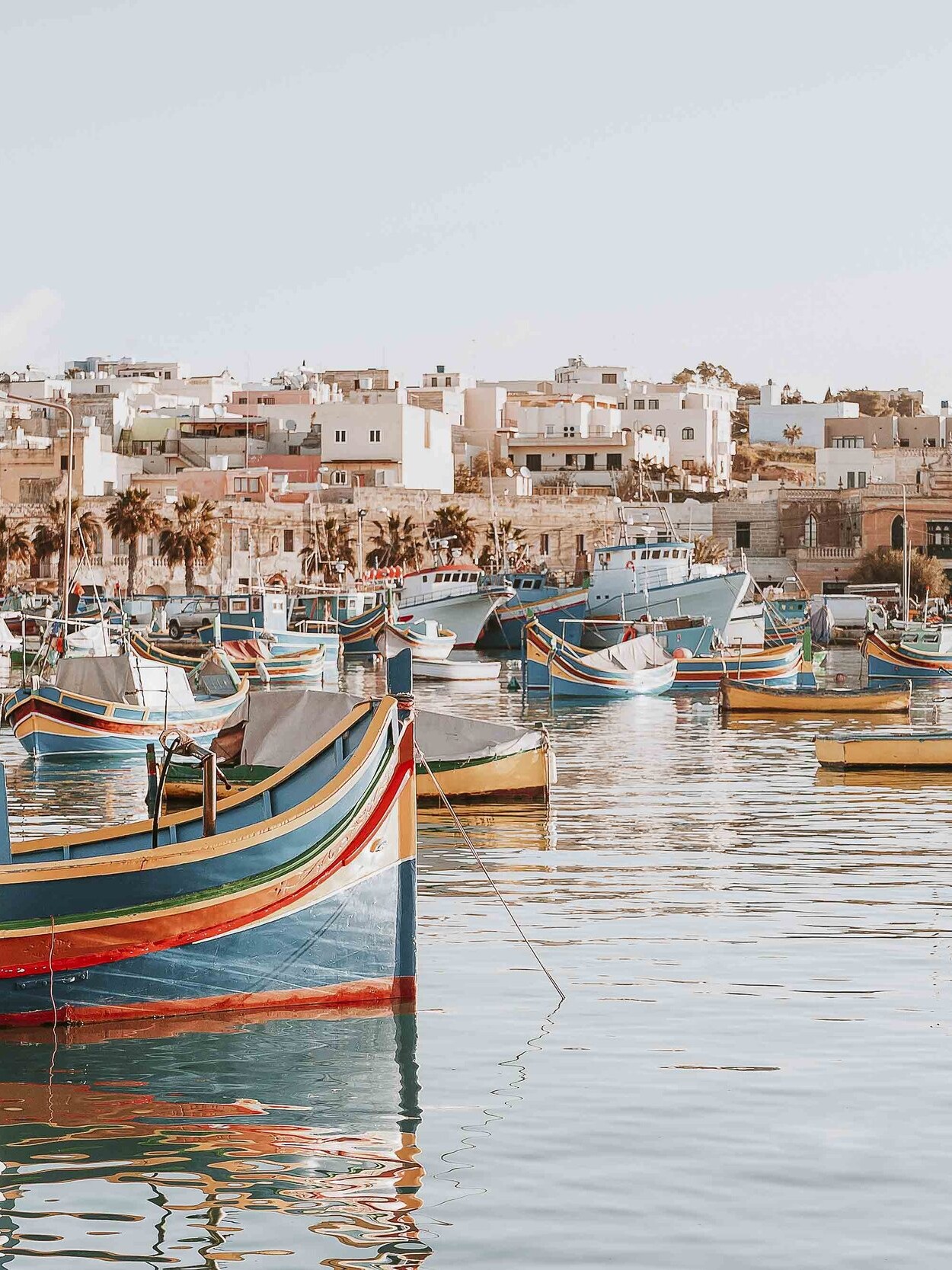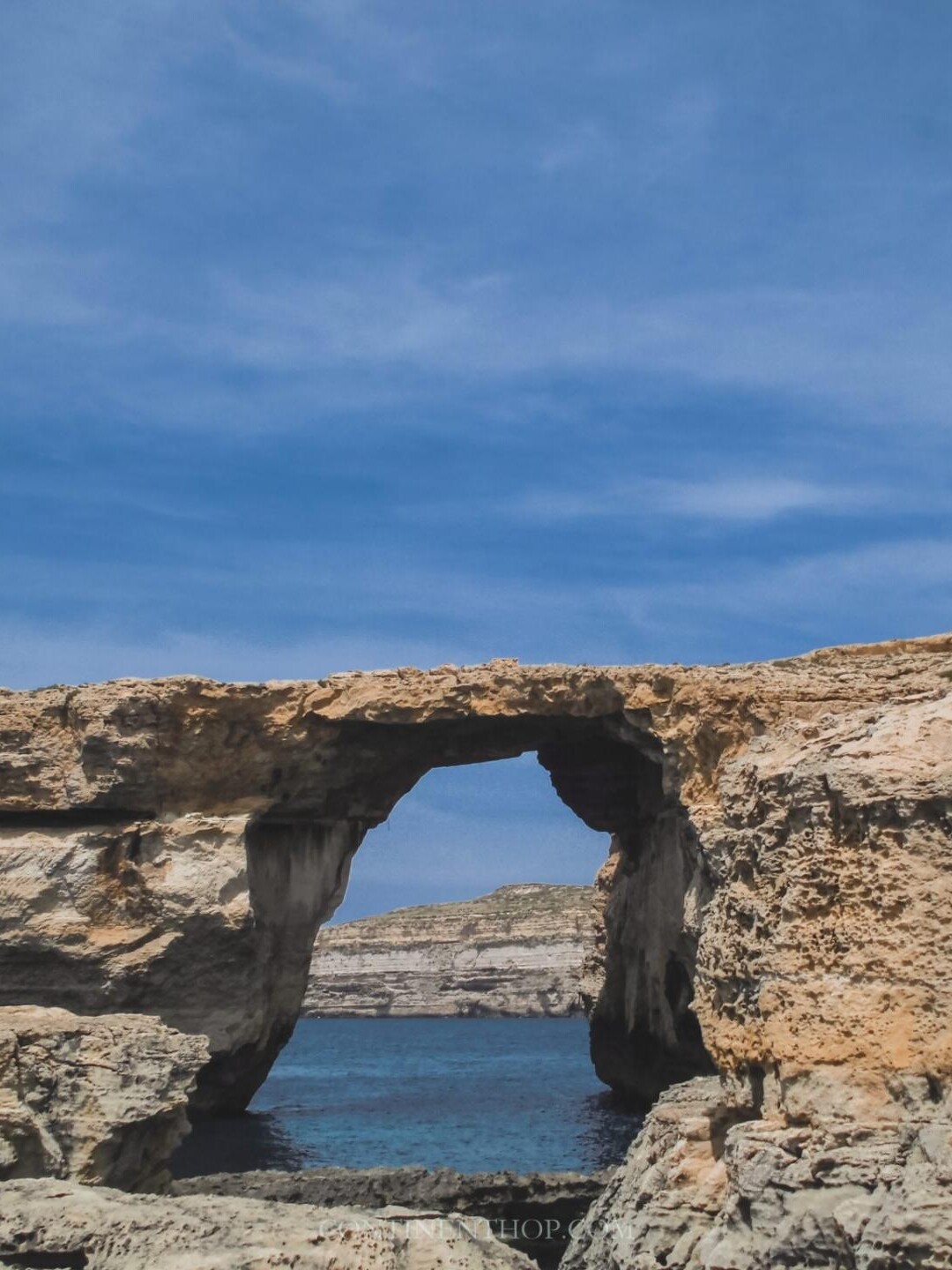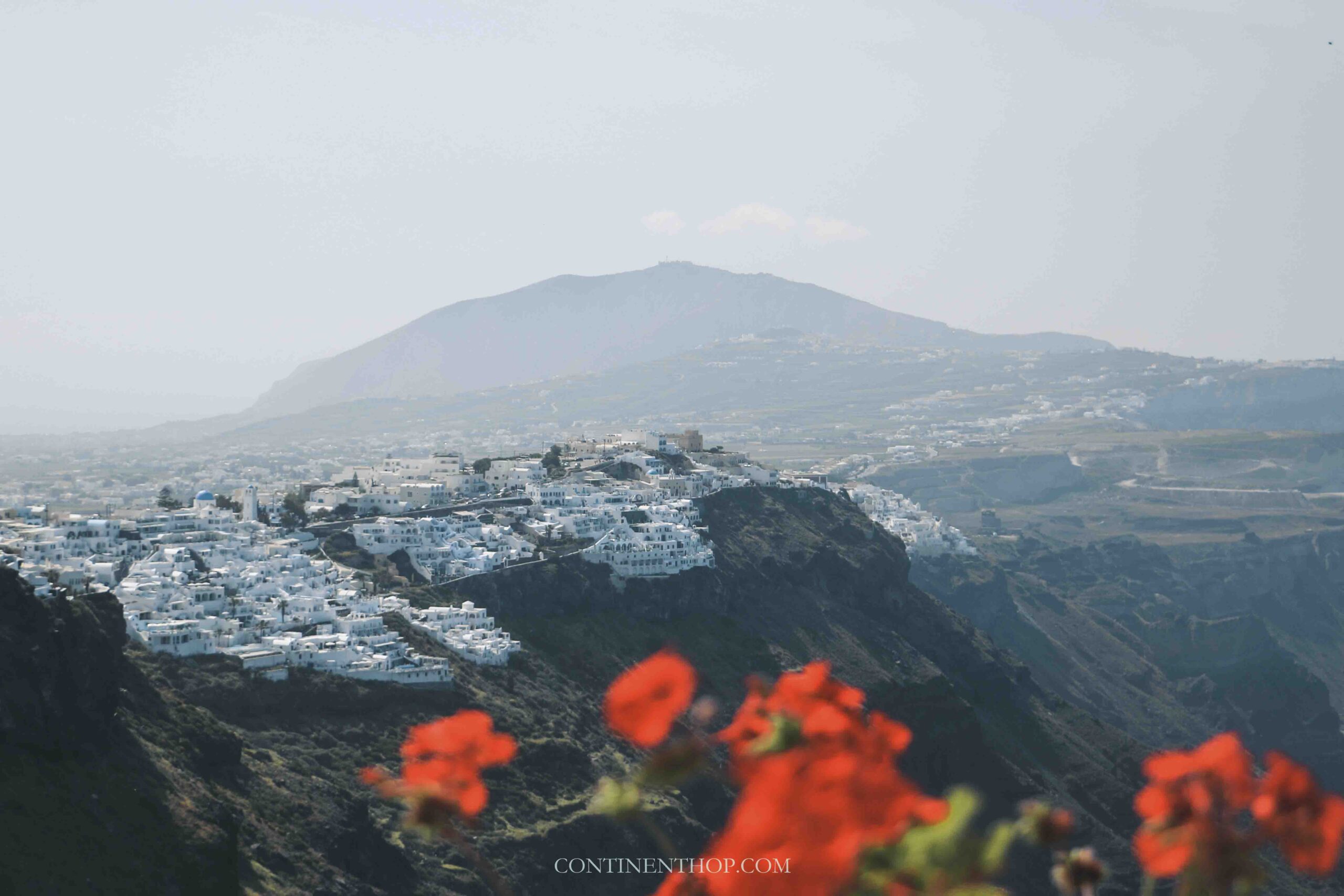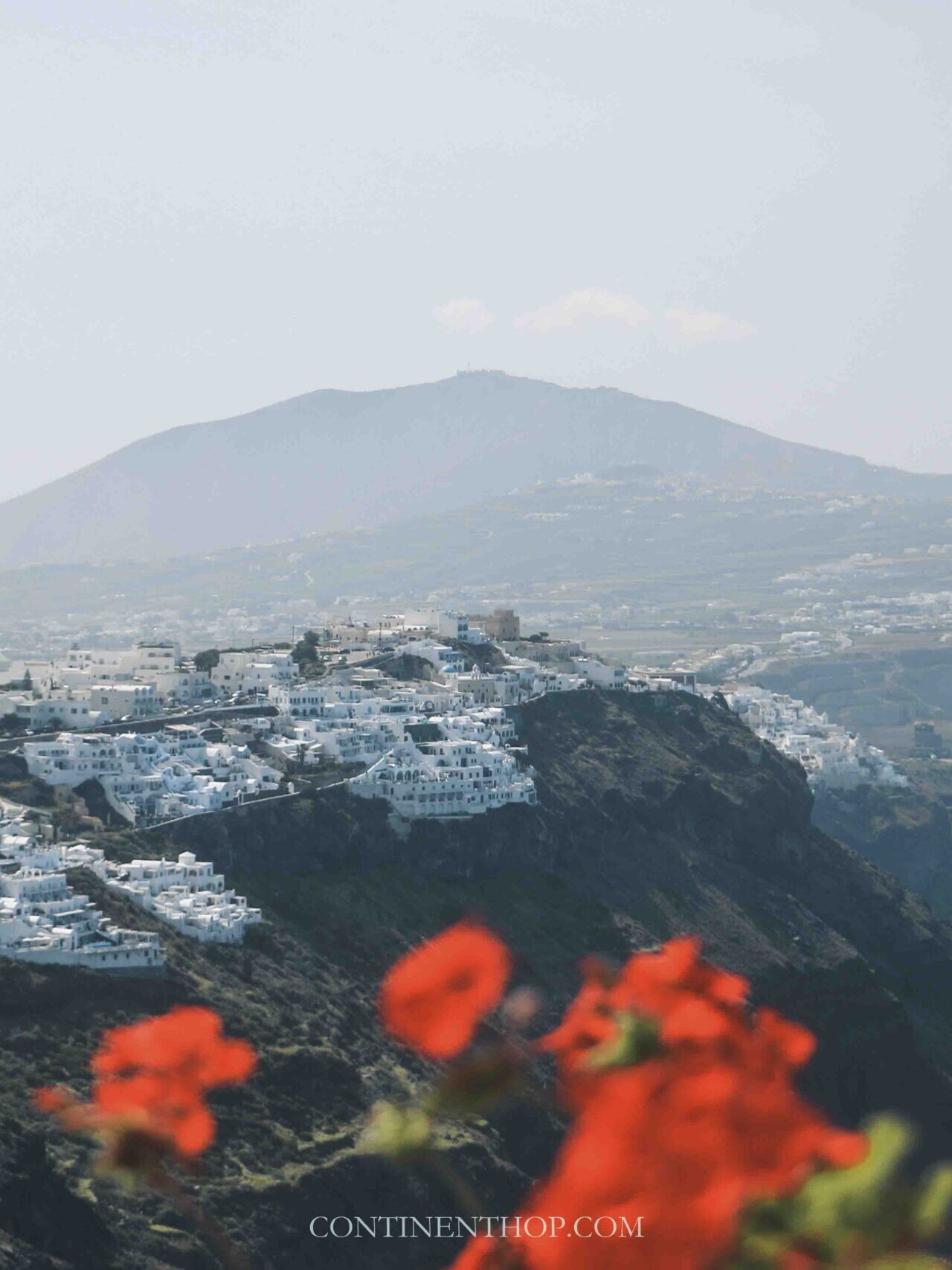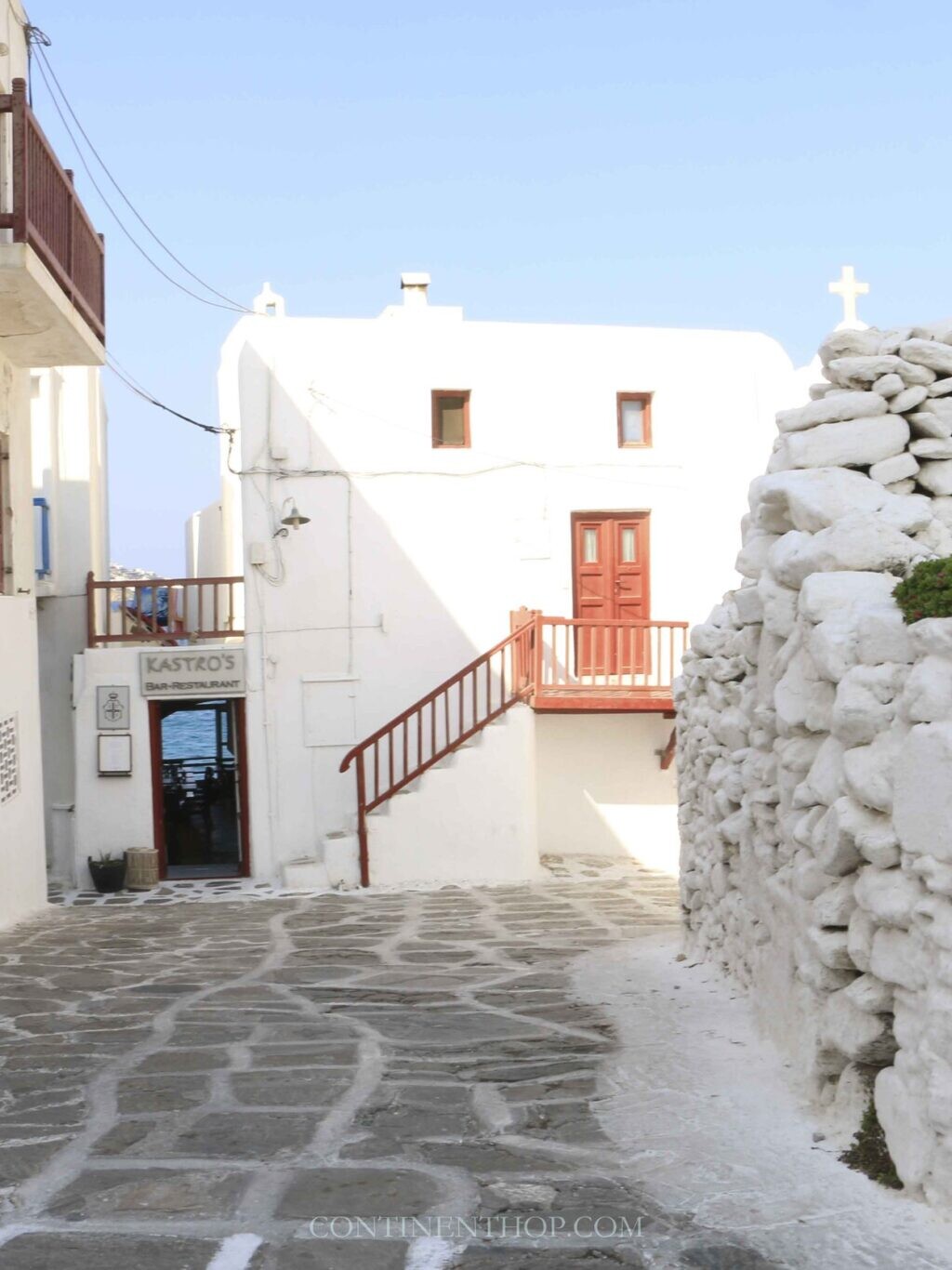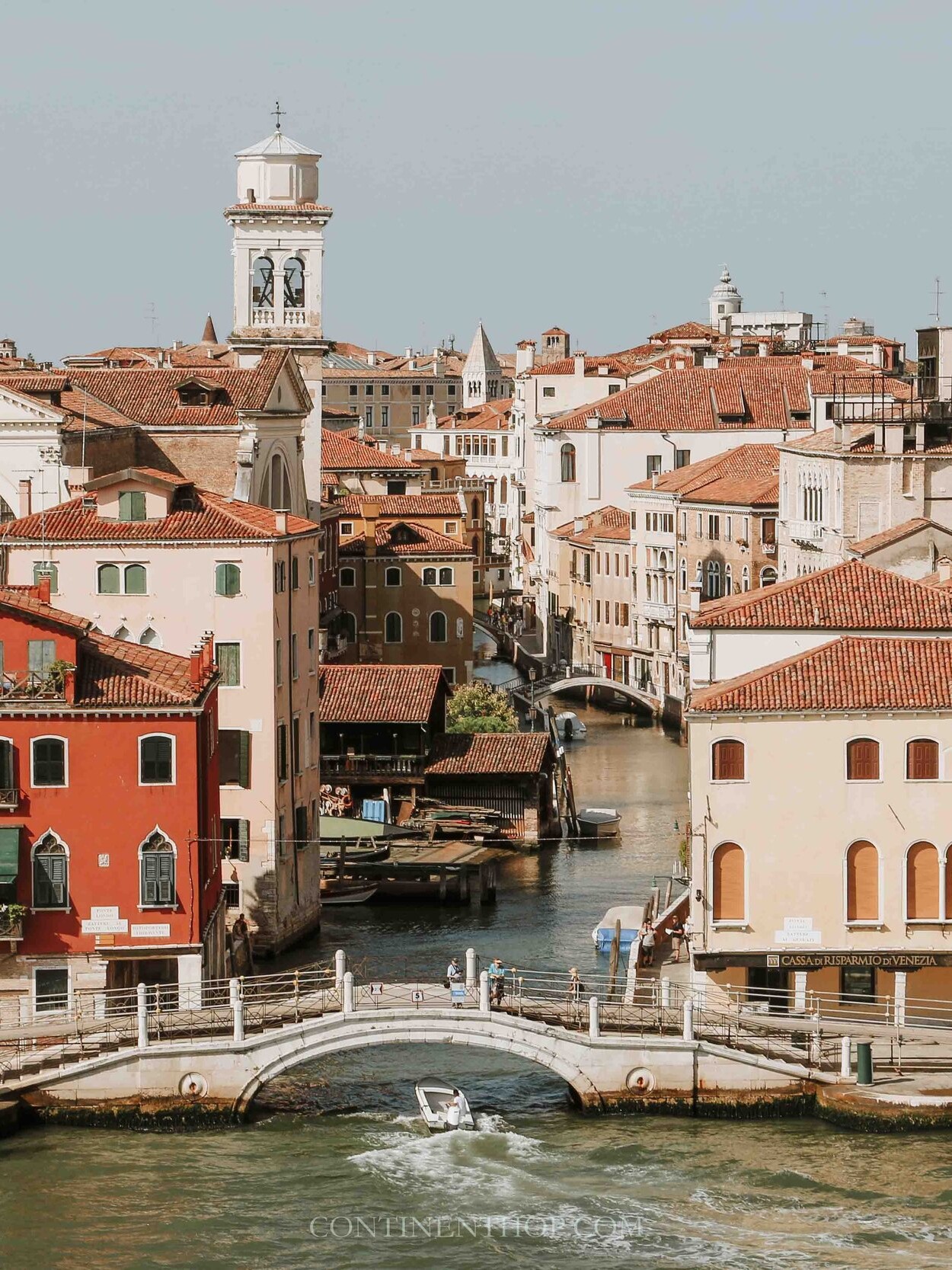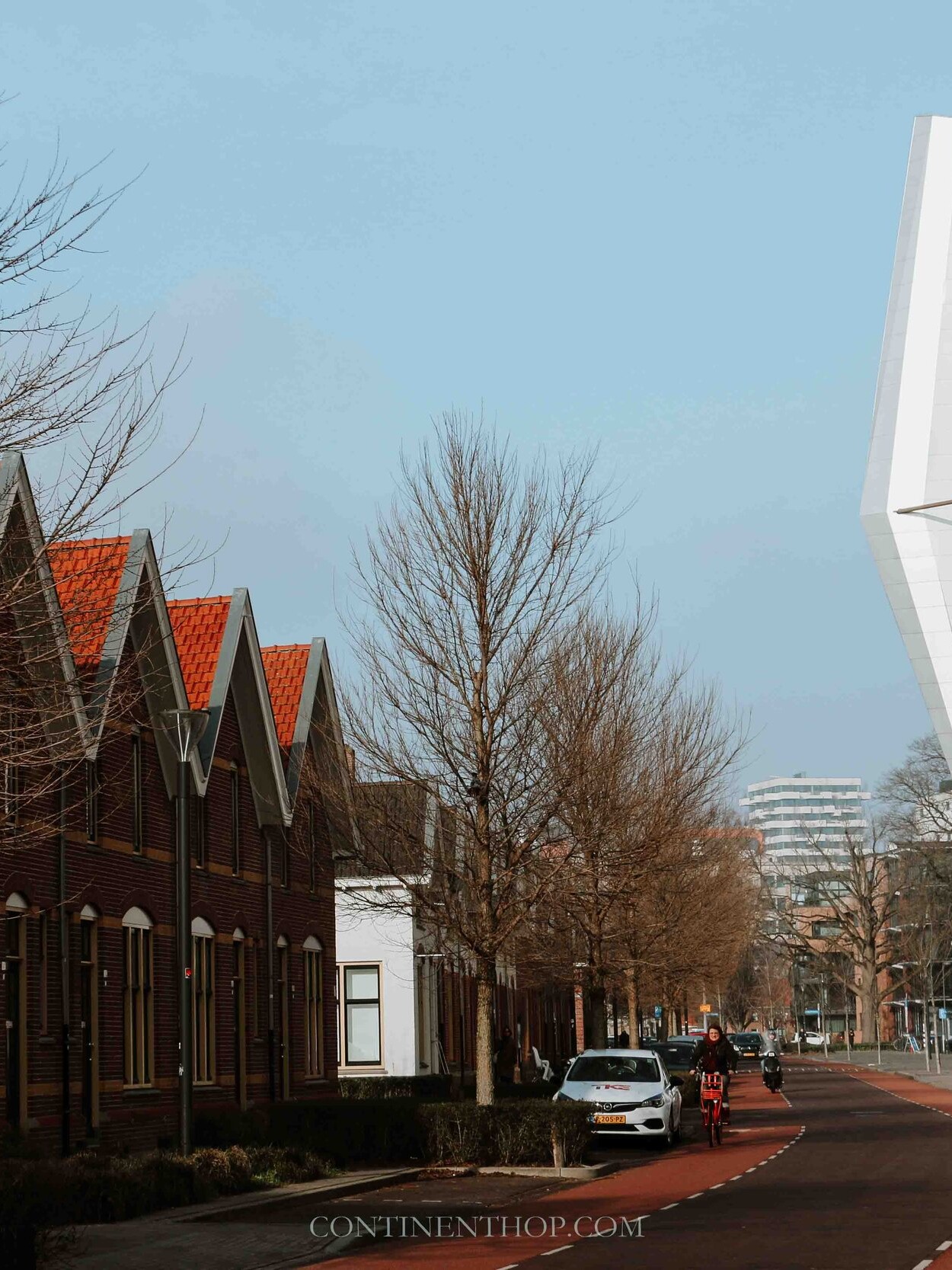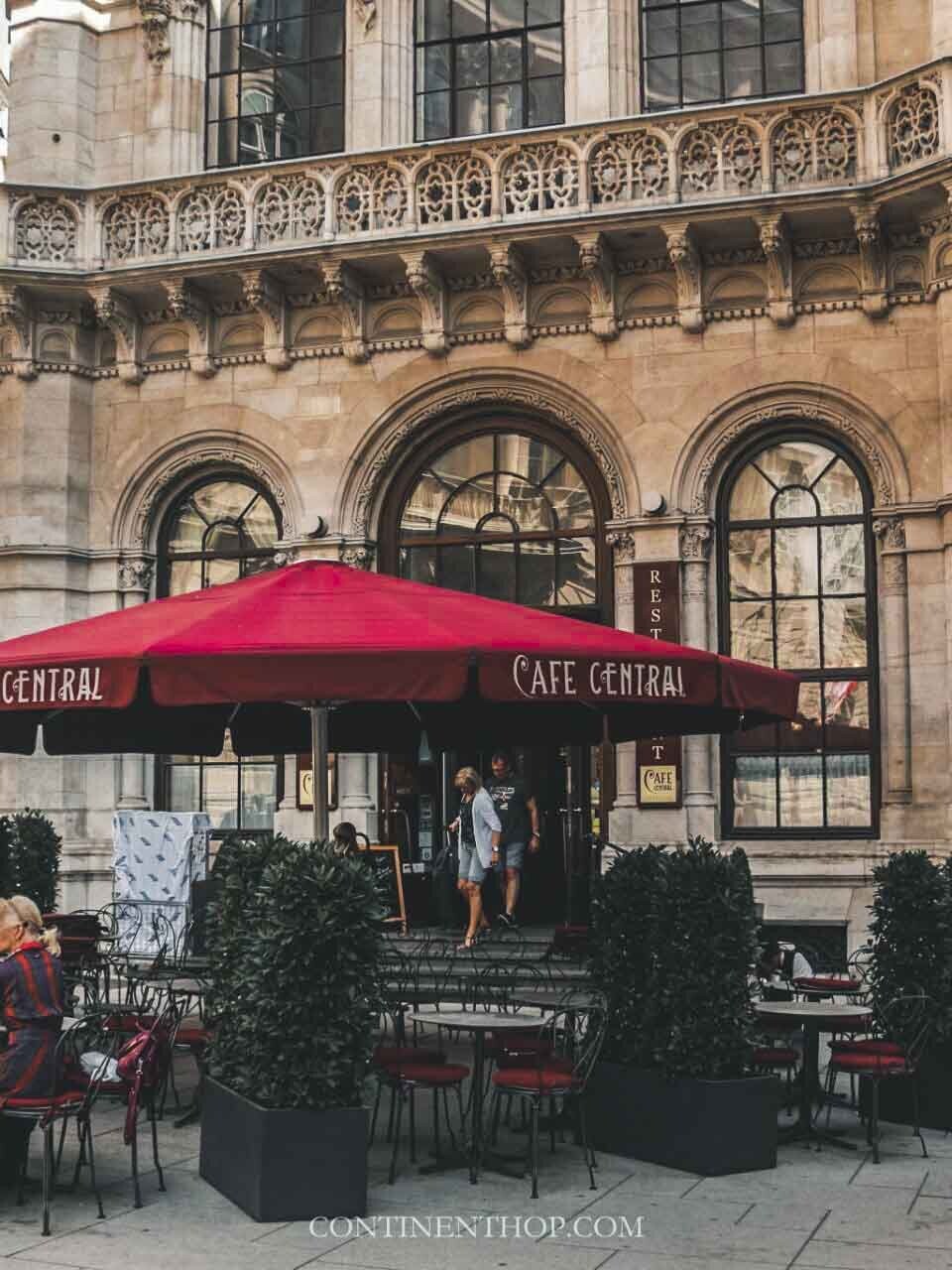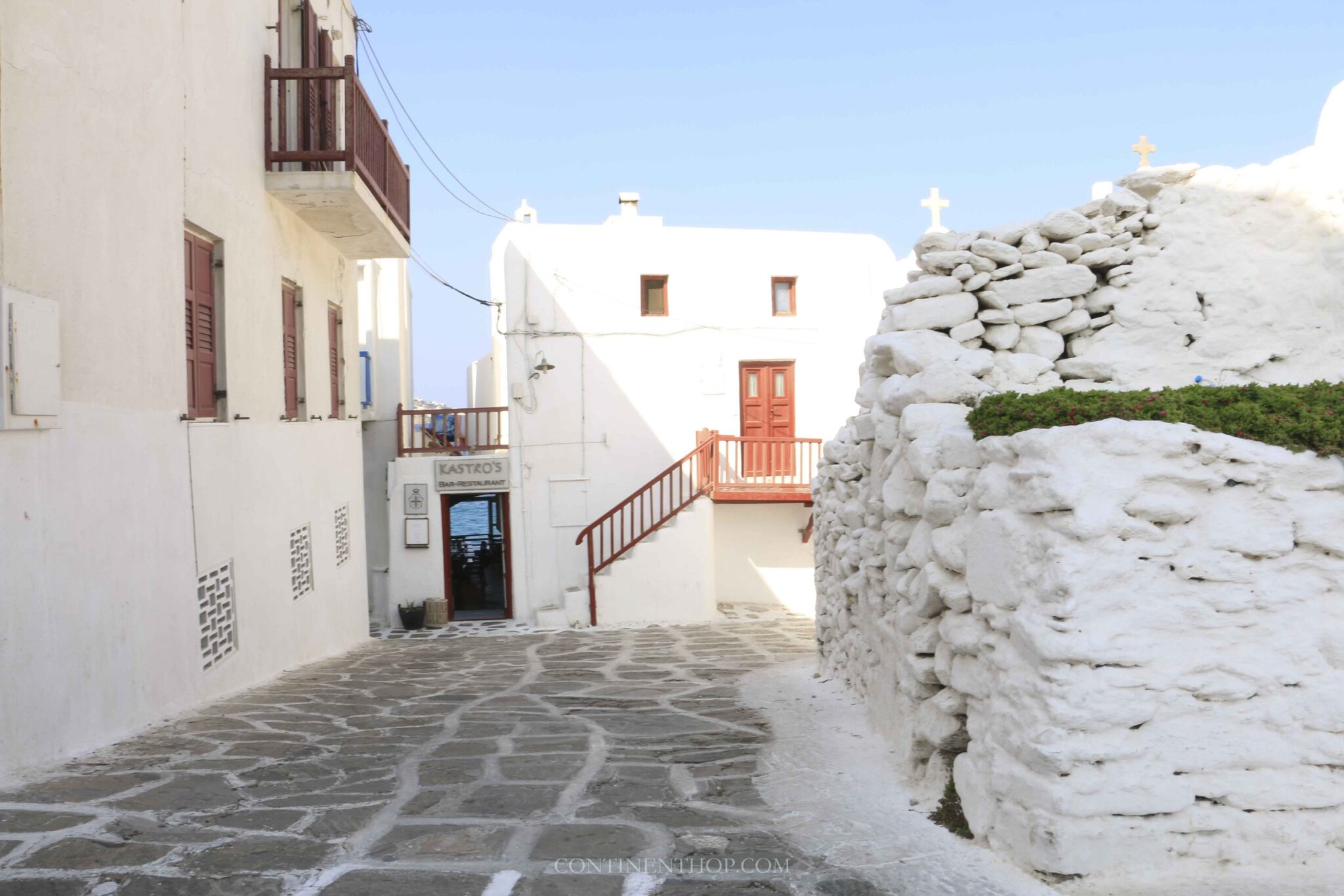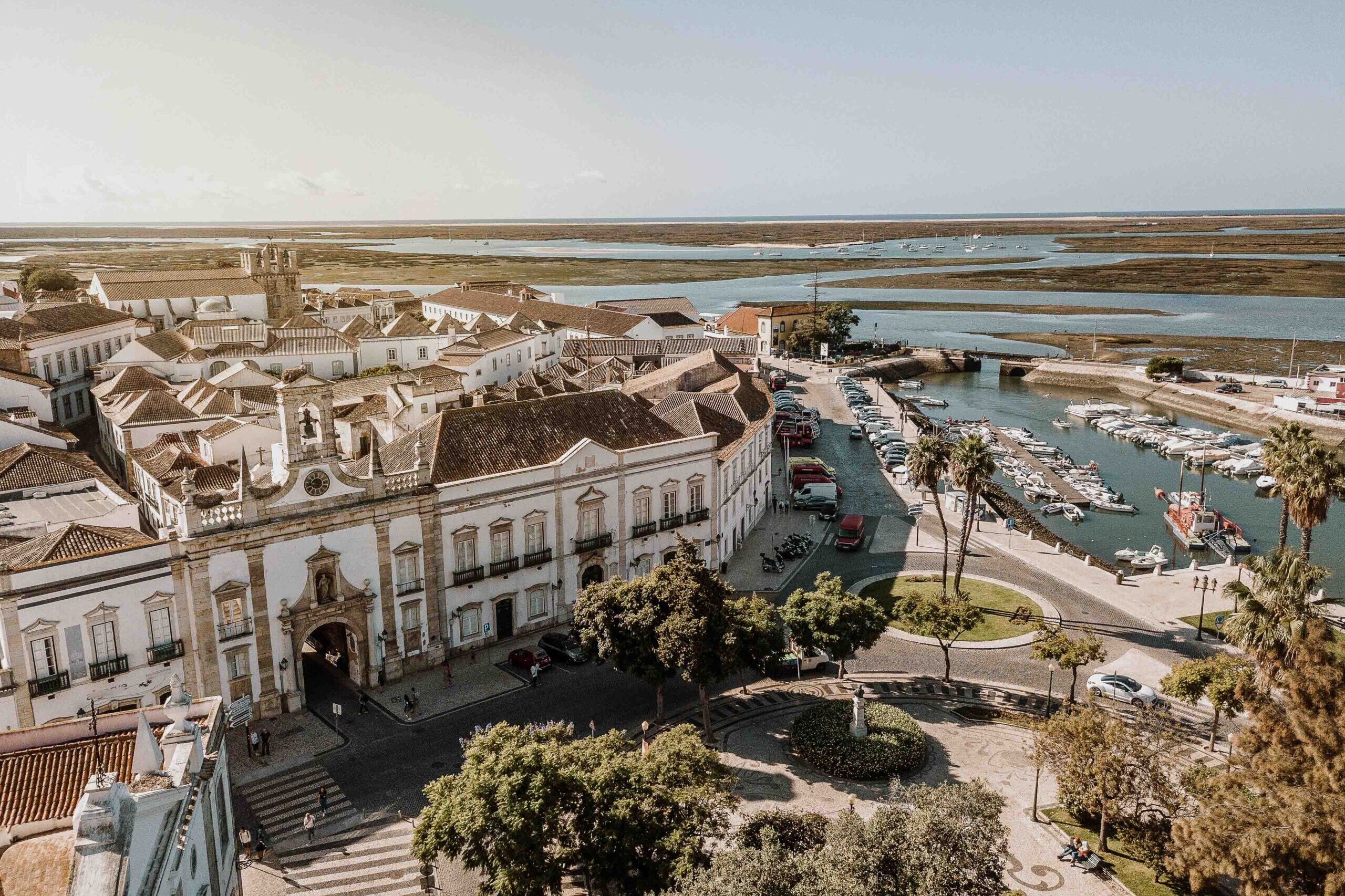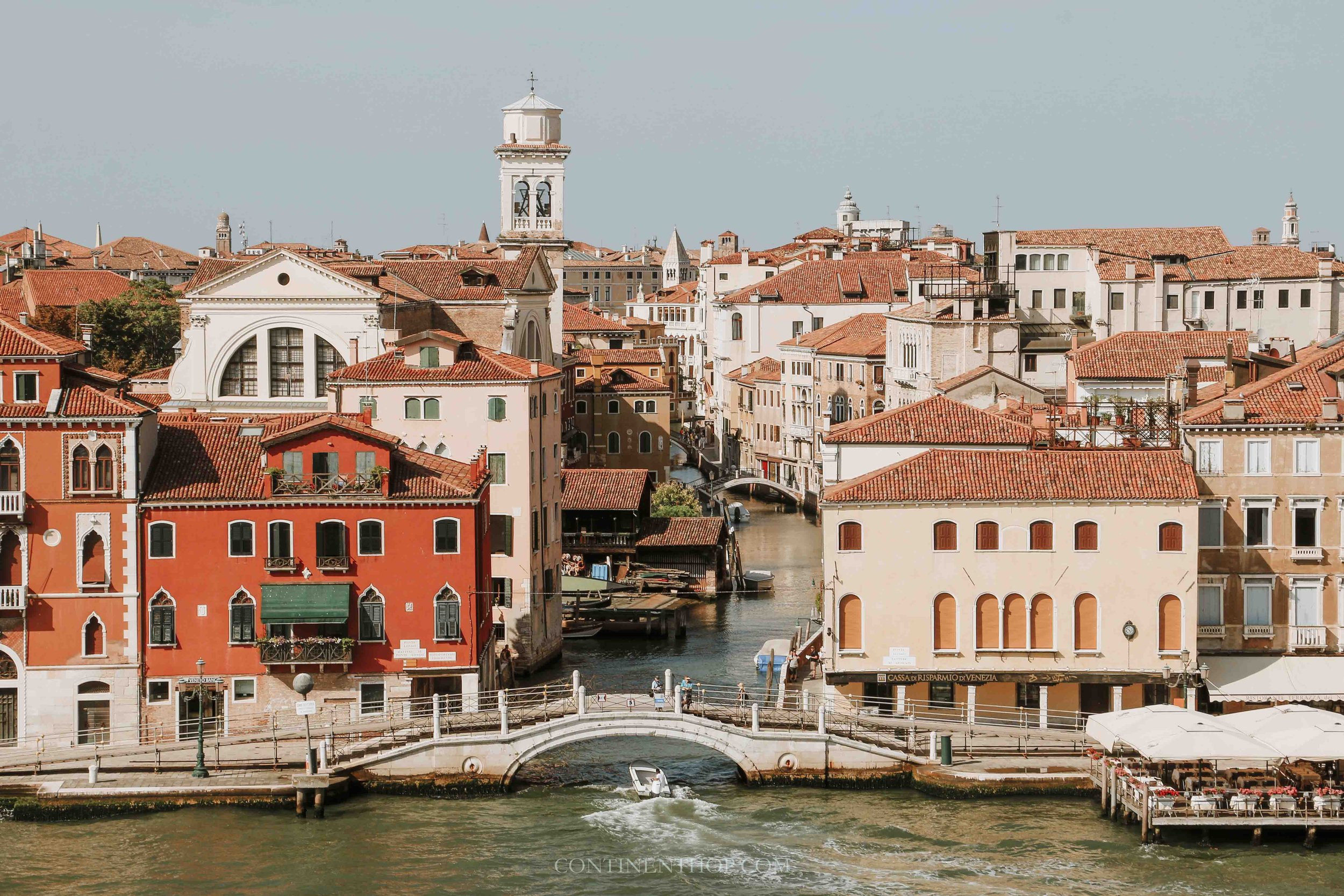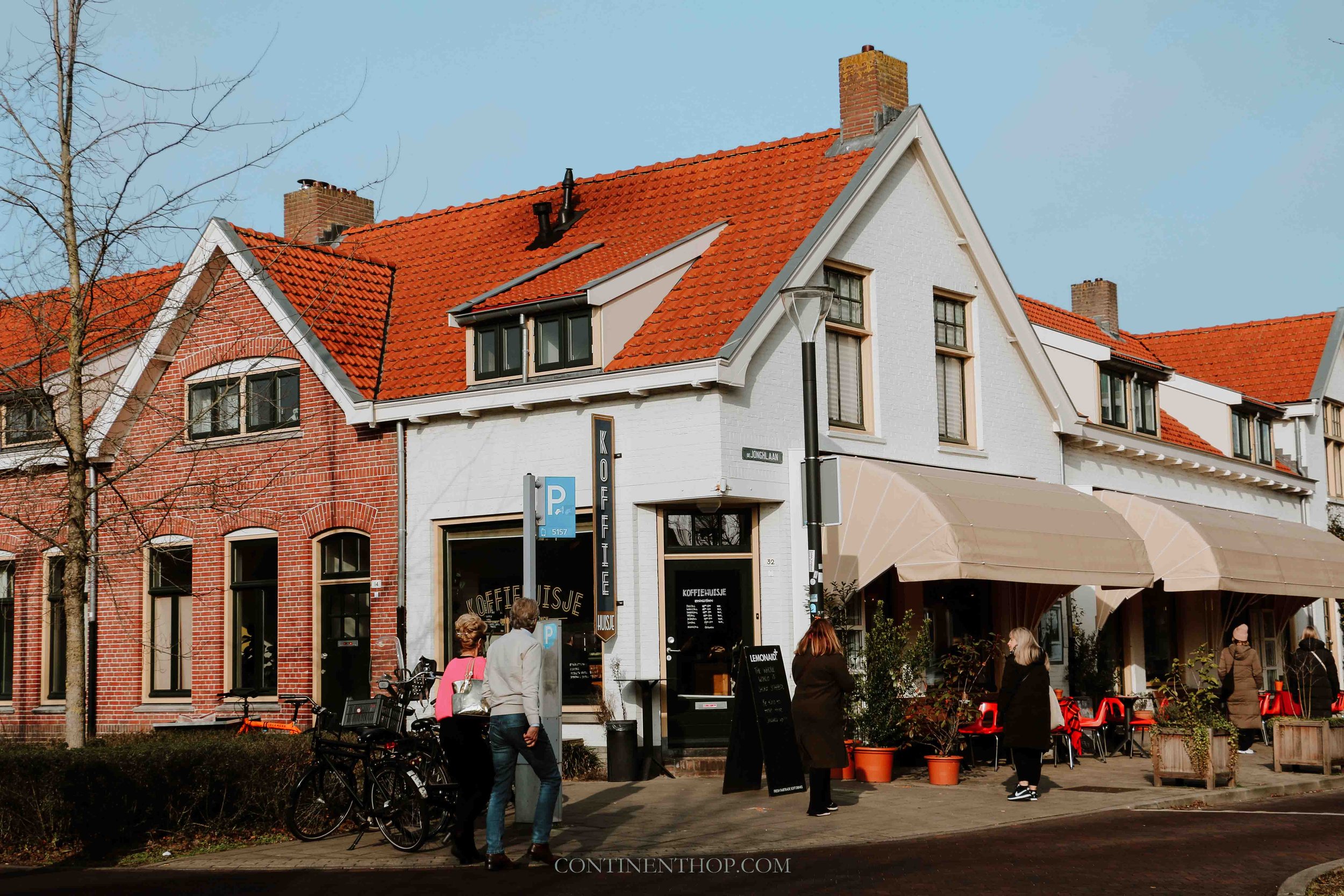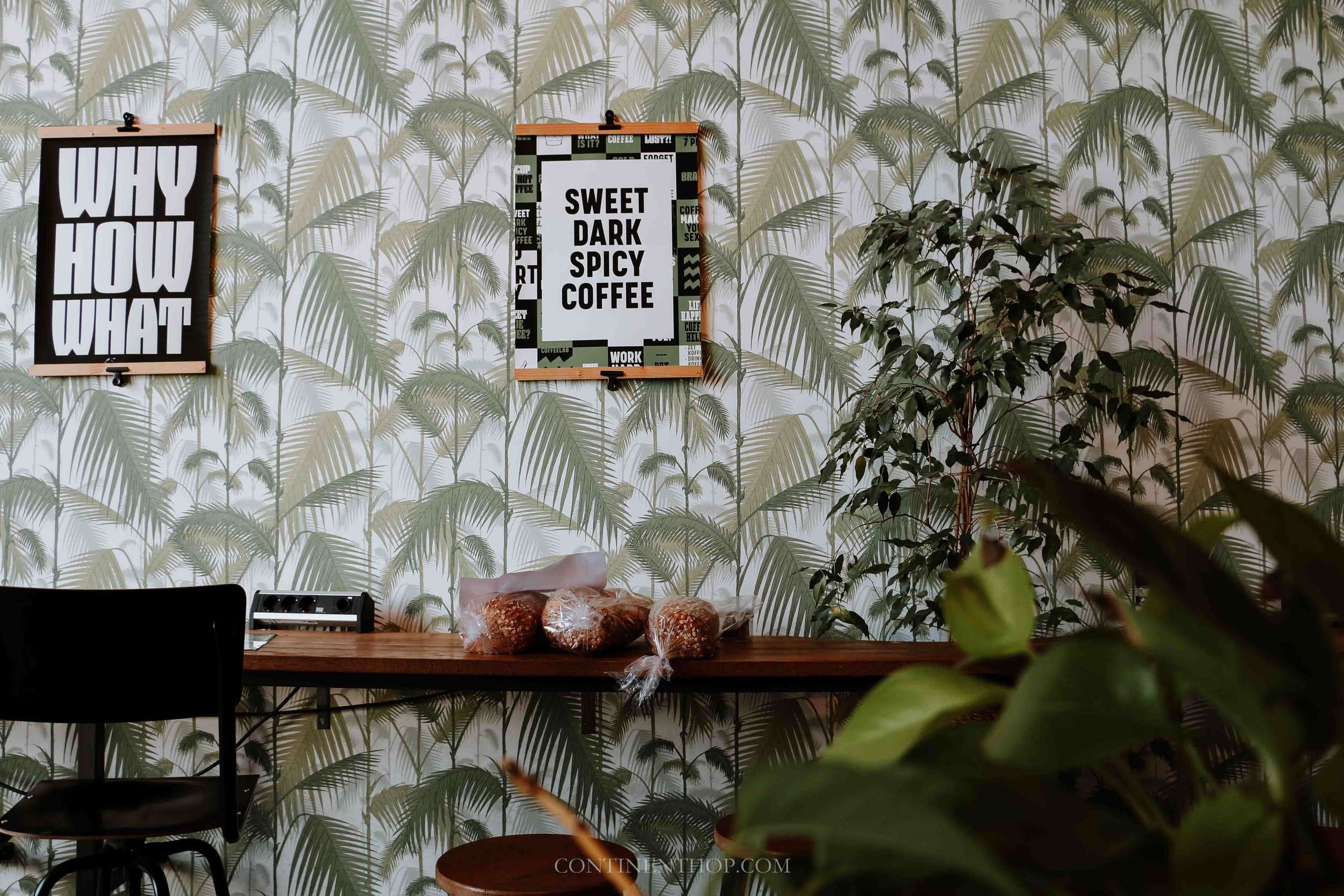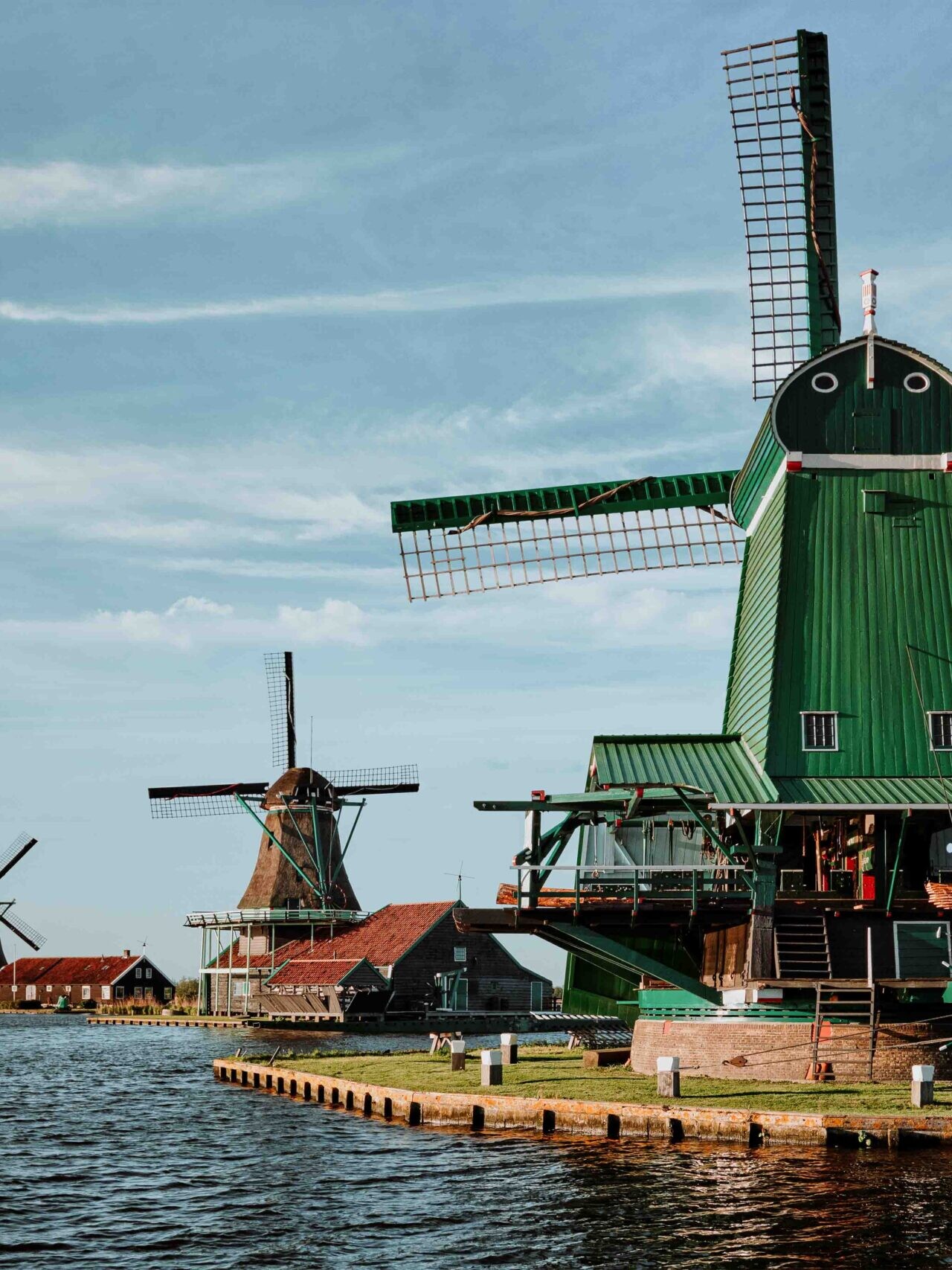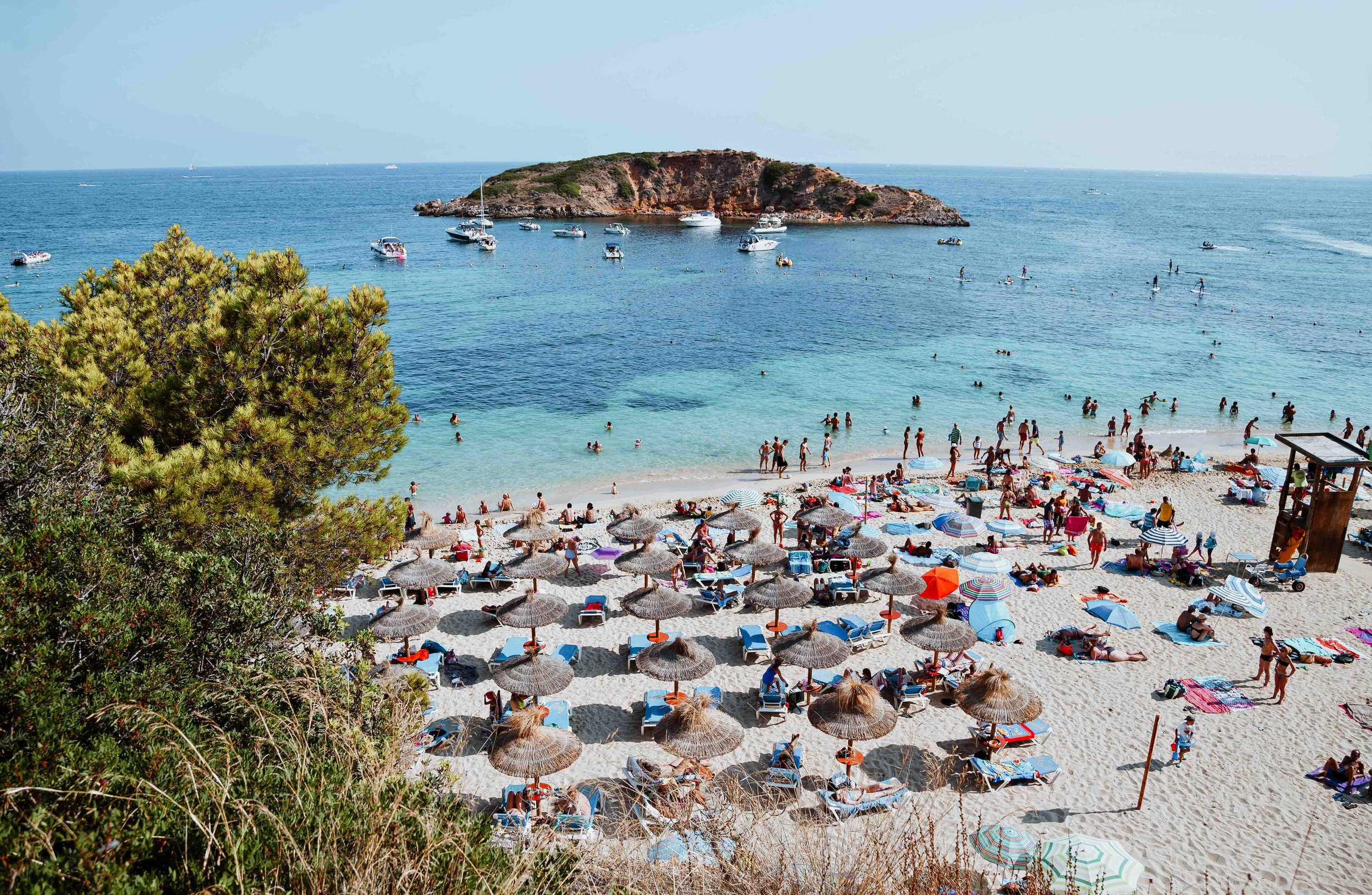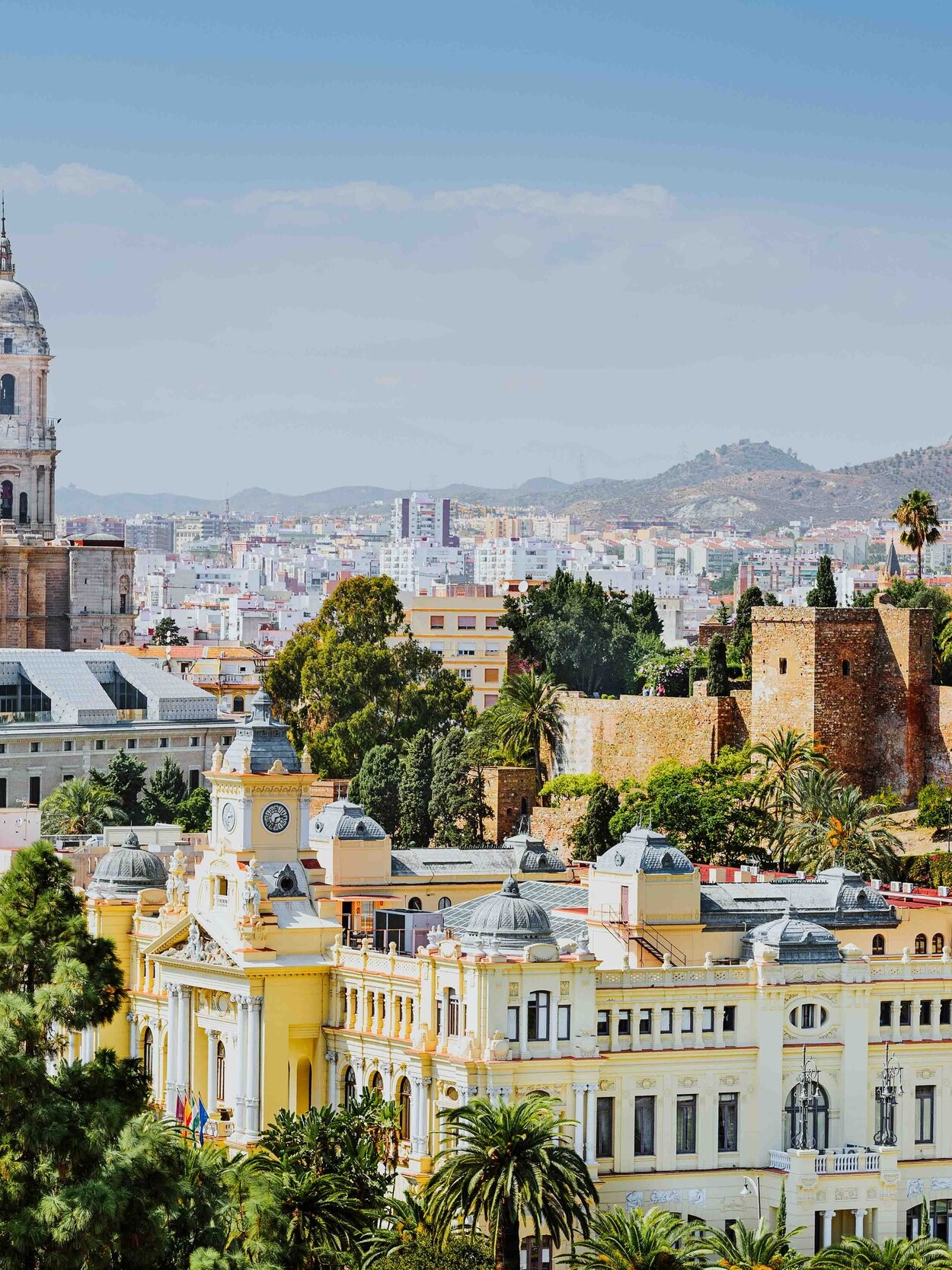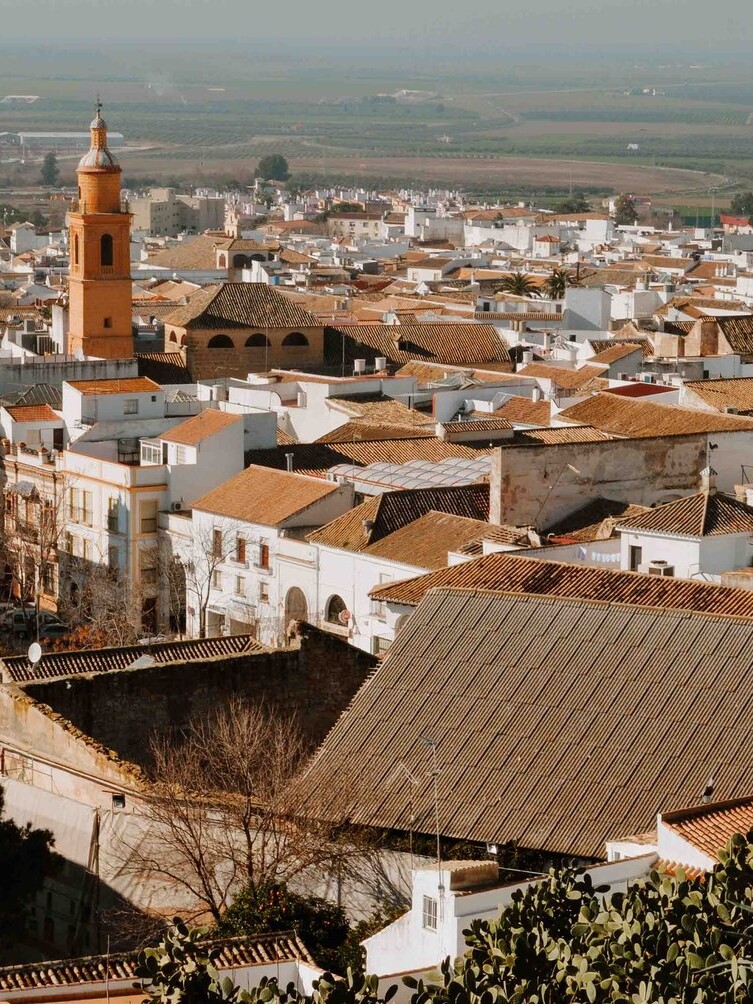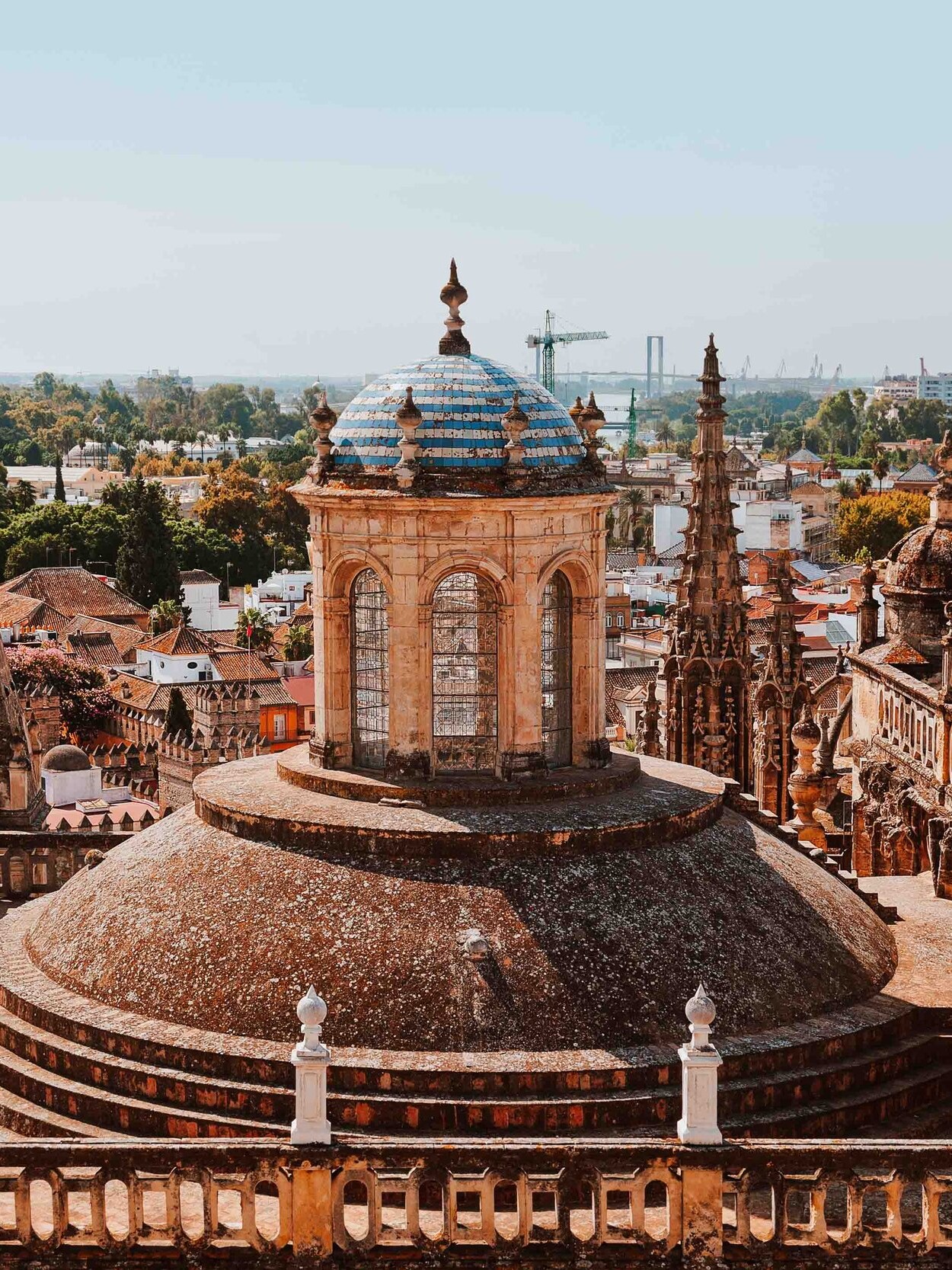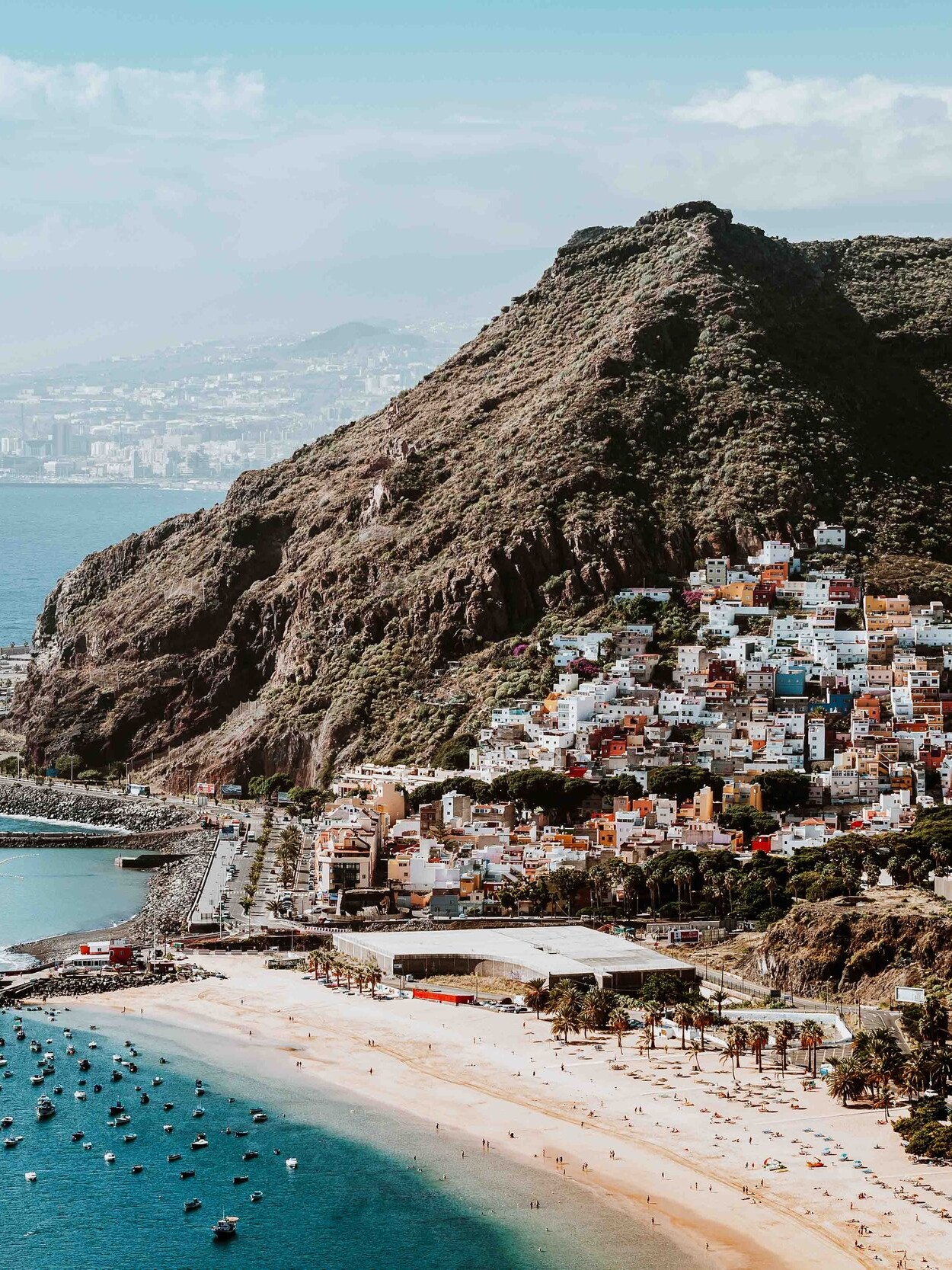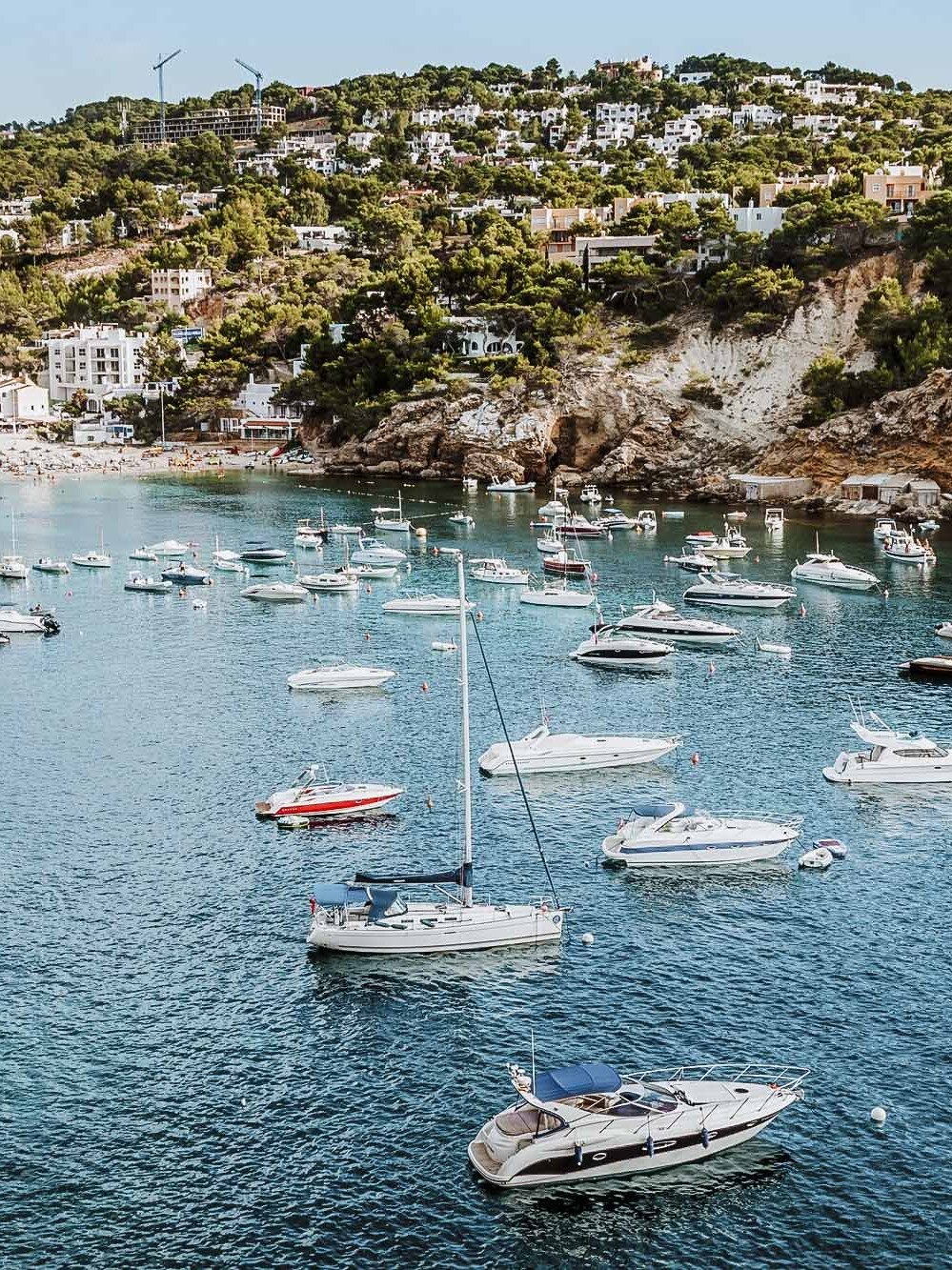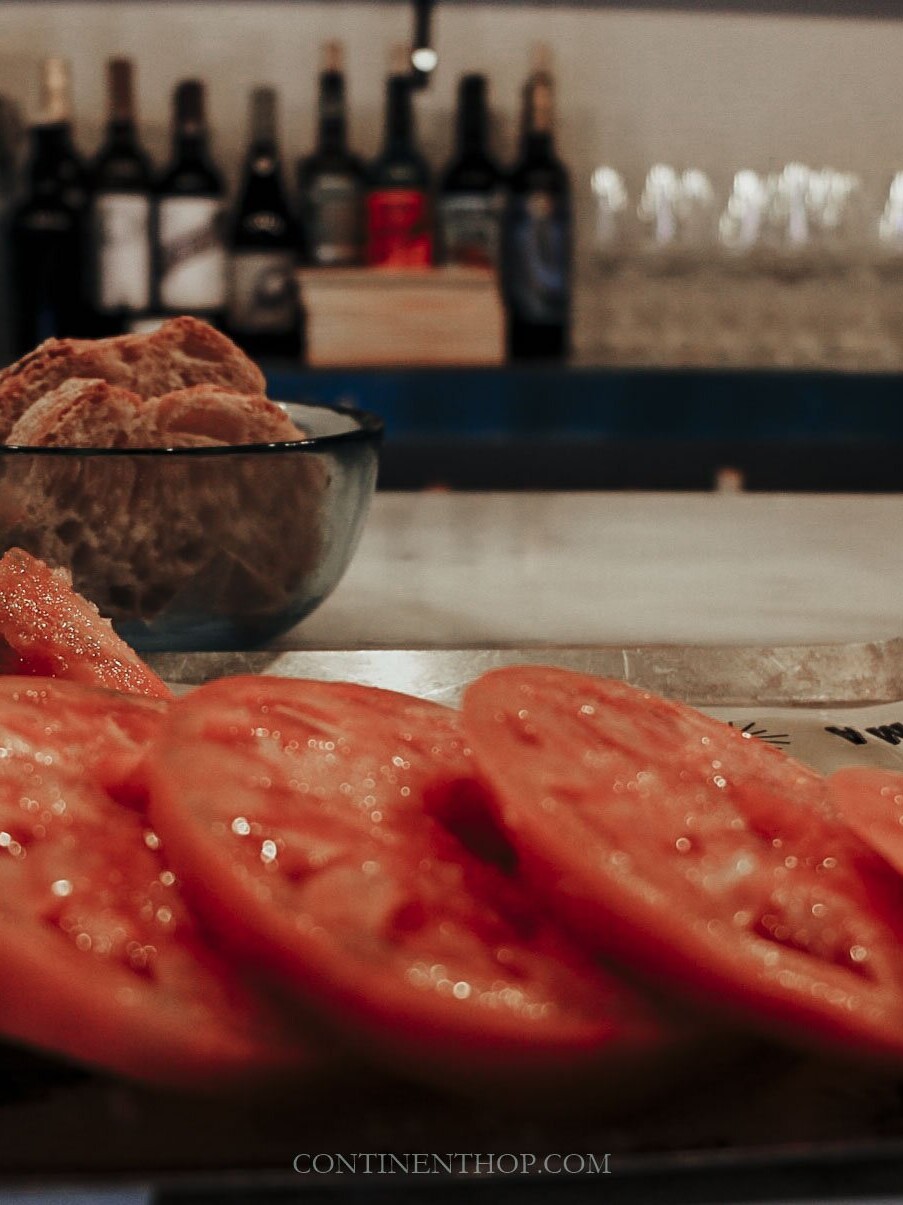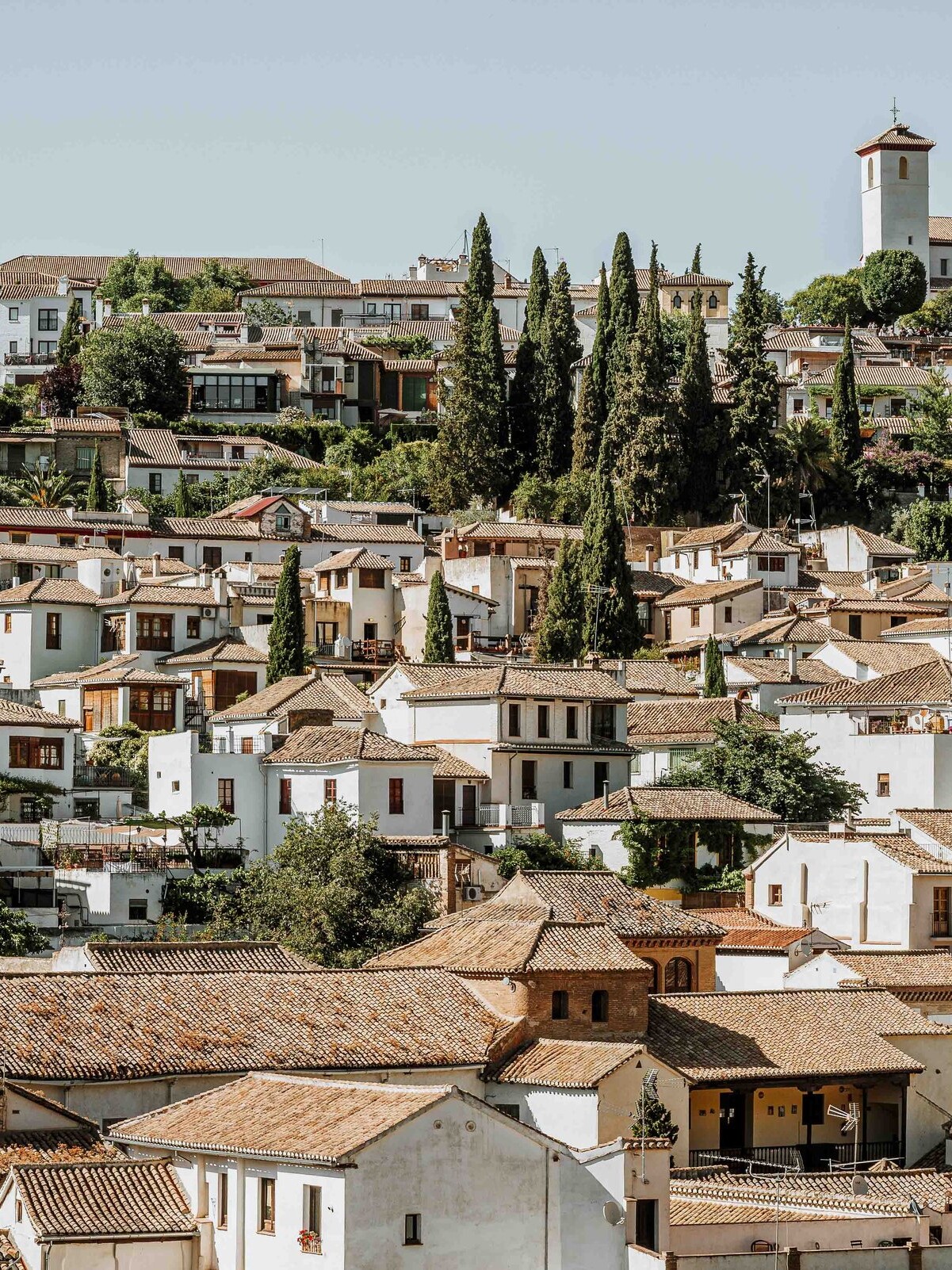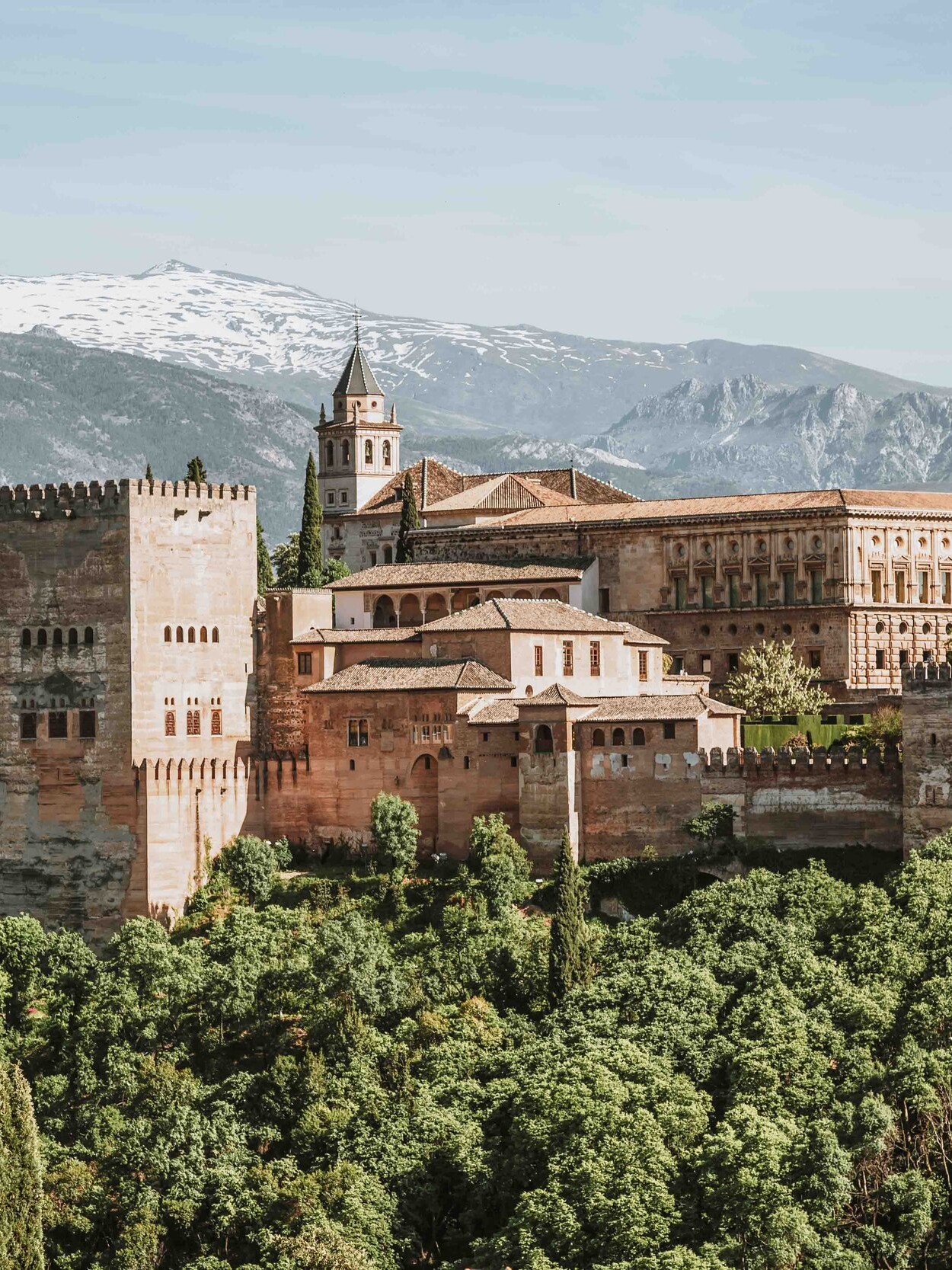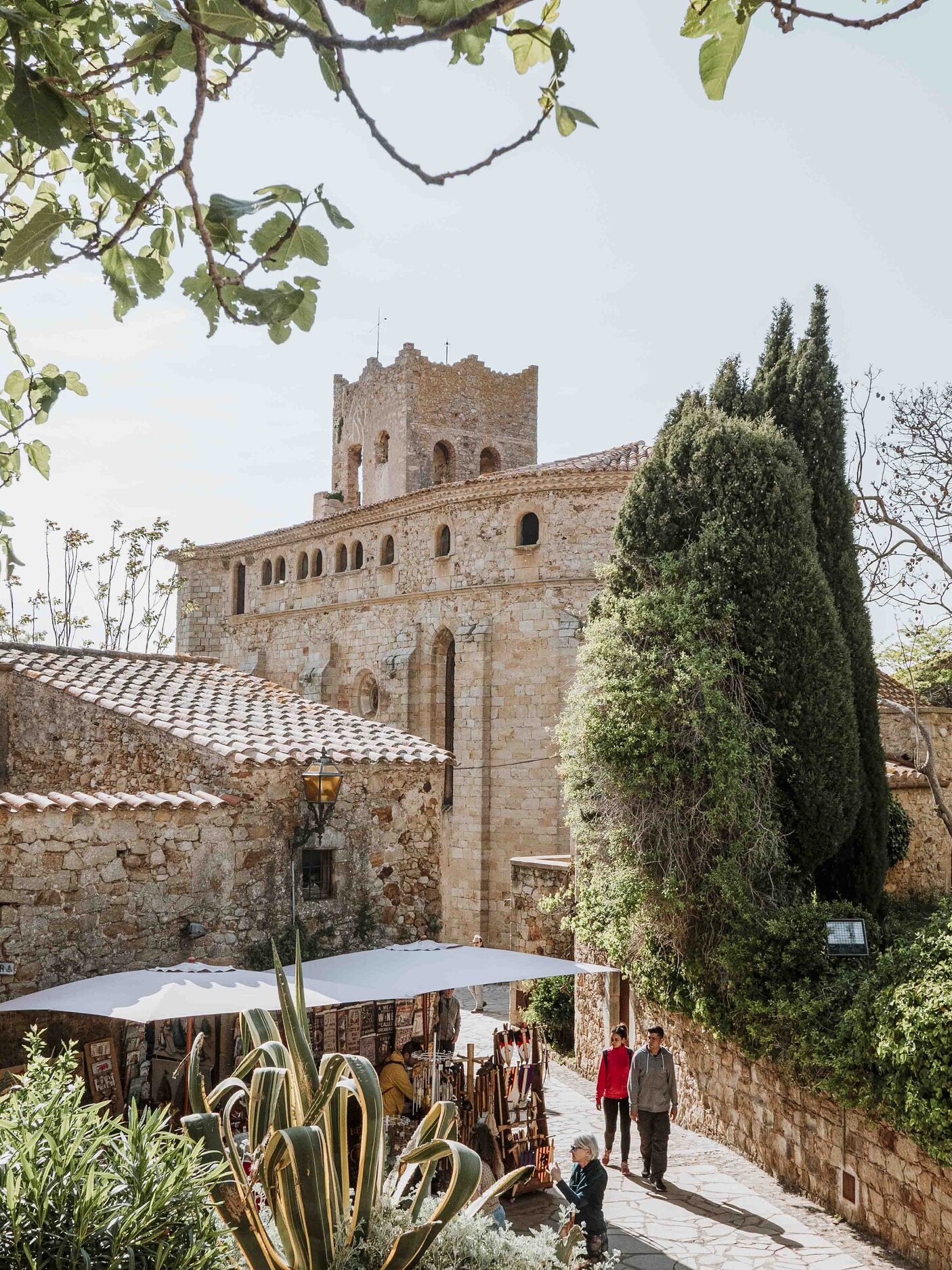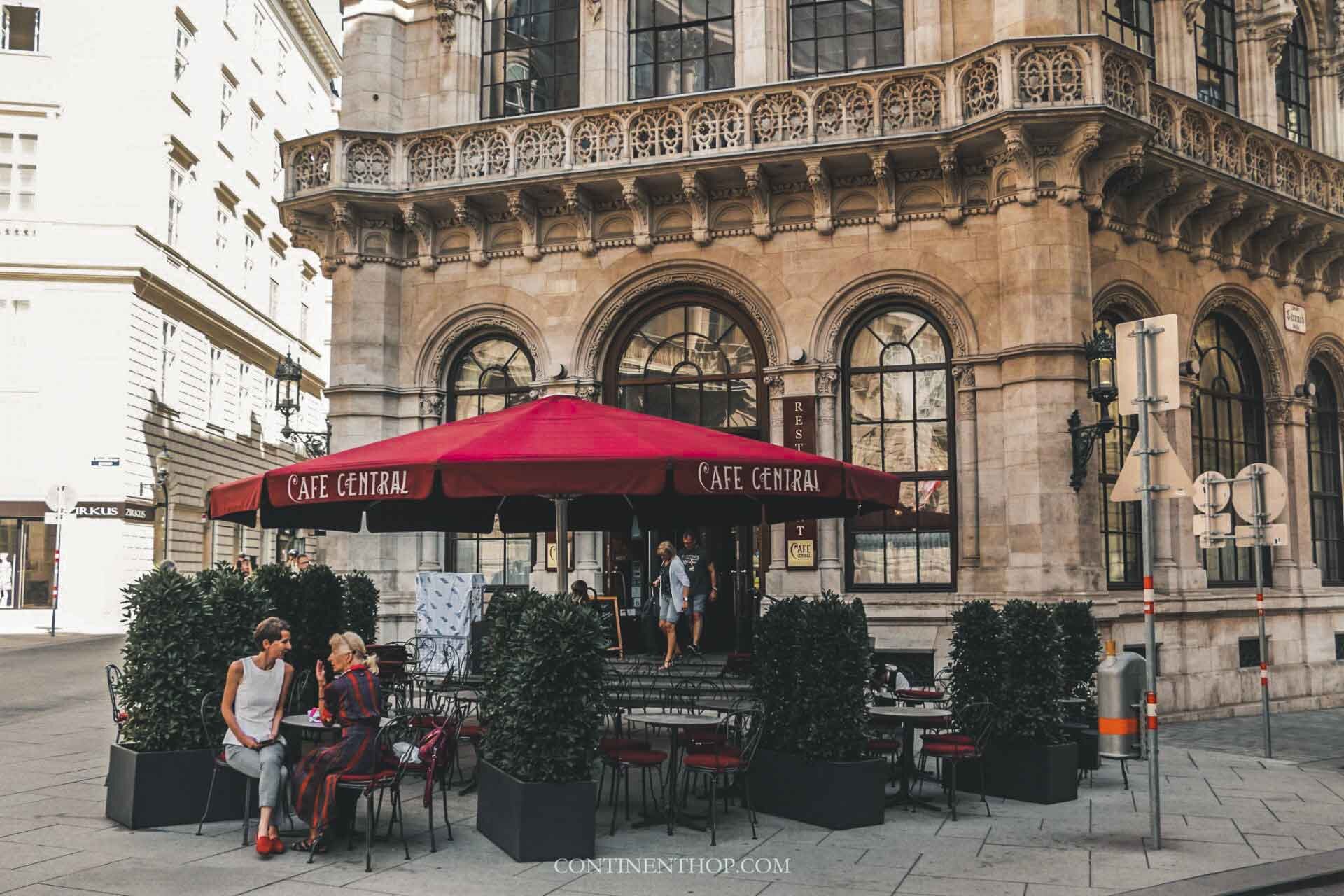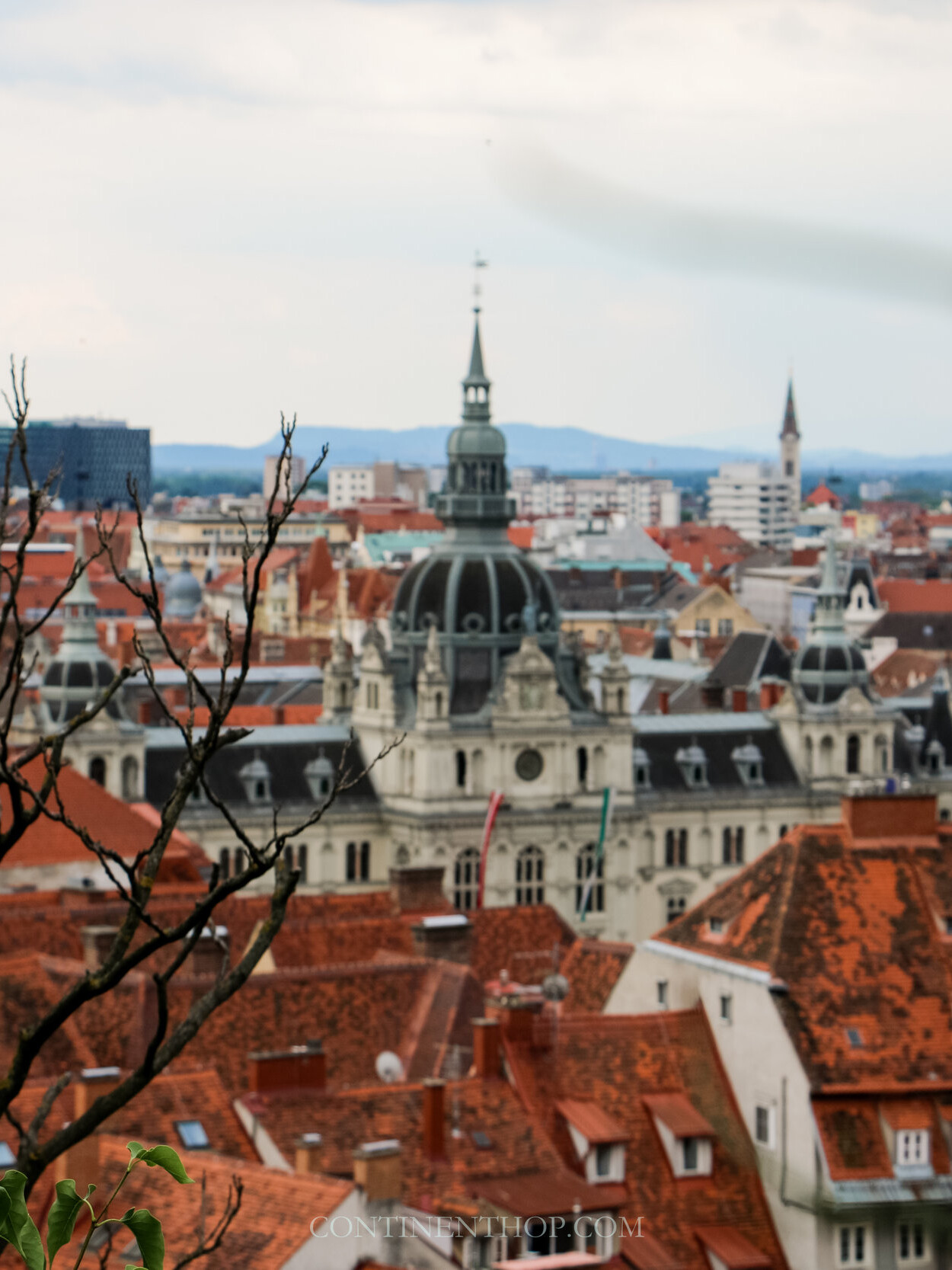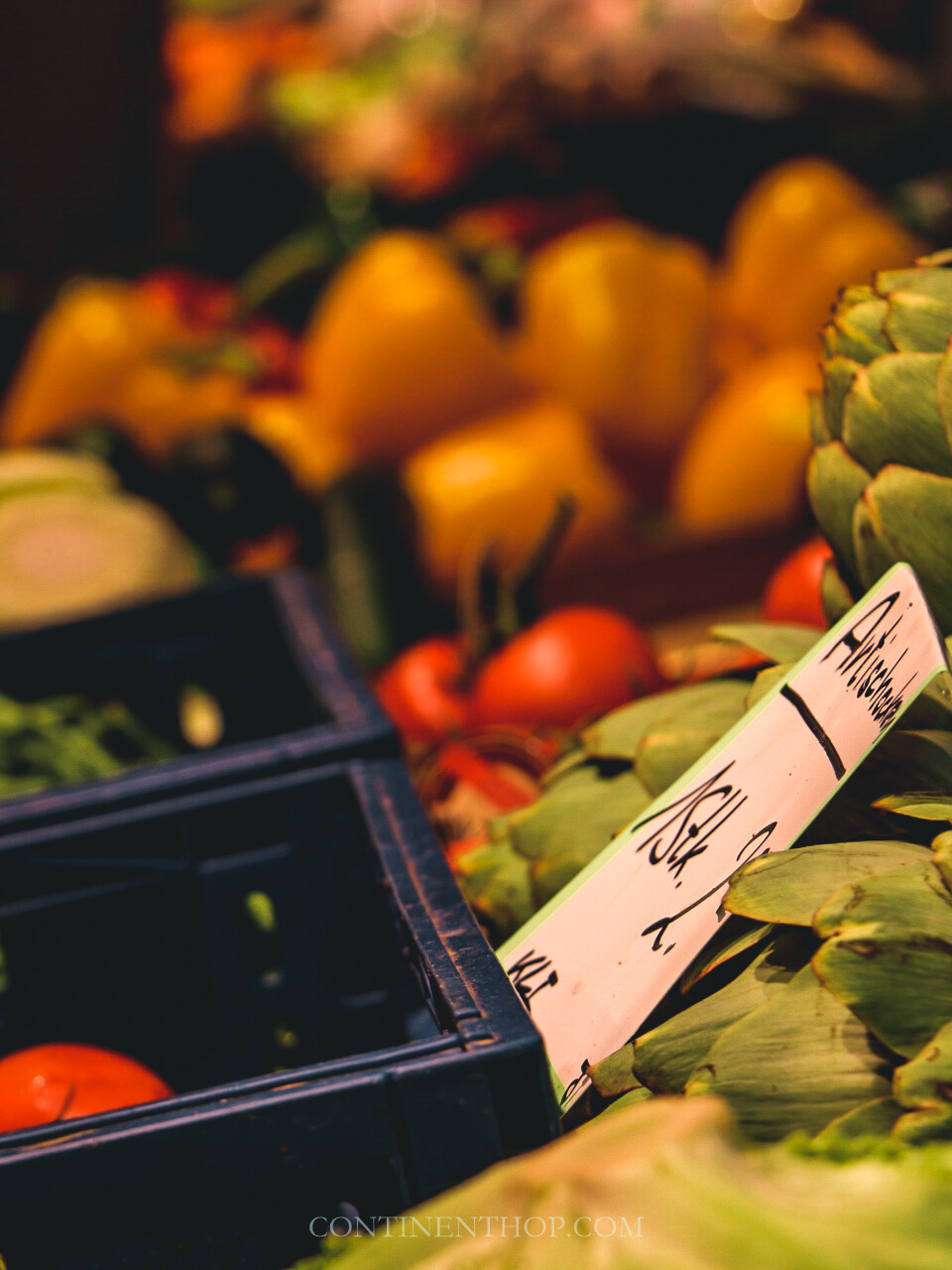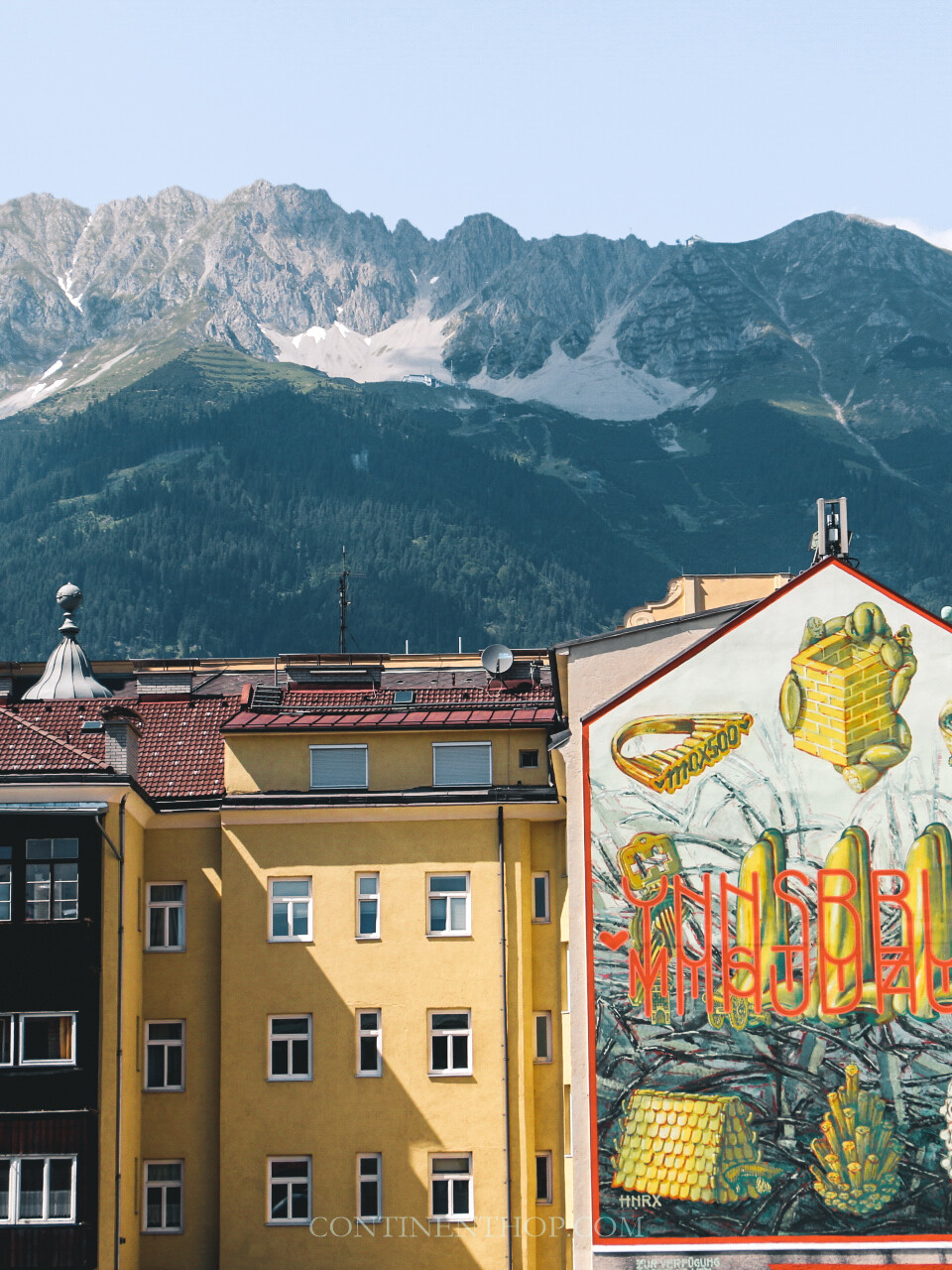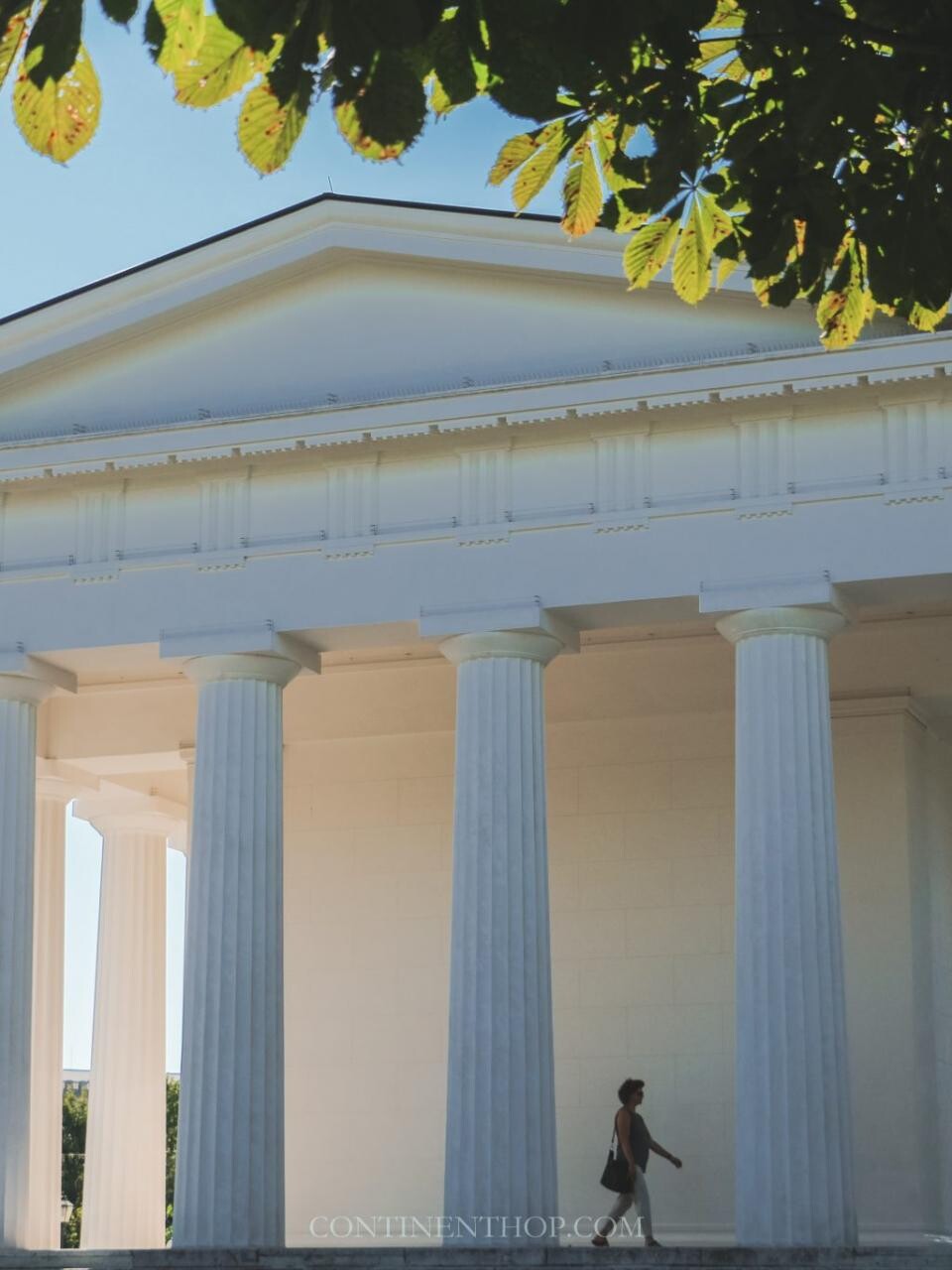Is Florence Worth Visiting - FAB Reasons Why You Should and Not!
Italy is full of numerous pretty places – so which do you pick for your holiday? Is Florence worth visiting? What are the places to avoid in Florence? Is Florence safe at night? Is Florence expensive to visit? Read on for first hand info, what to do and why you should visit (or not!)
Is Florence worth visiting? Feels a bit like asking if pizza tastes good – it almost answers itself. In a world where every travel destination claims to be a must-see, it’s fair to wonder why is Florence Italy worth visiting. It is but read on to decide for yourself!
Florence is more than just a city; it’s a journey back in time to the heart of the Renaissance. Every corner has a story, every building a masterpiece. But beyond the obvious, there’s the food, the culture, the vibe of the city streets that make you feel alive.
I’m going to take you through my own experiences, the sights, and flavours that make Florence unforgettable. By the end, I hope not just to convince you why is Florence worth visiting but to inspire you to experience it for yourself and include it in your Italy itinerary. So, let’s discover all the reasons why is Florence worth visiting.
PLANNING YOUR FLORENCE TRIP | THE ESSENTIALS
Some of the must-do tours
- Tuscany day trip to San Gimignano, Pisa and Siena
- Legends of Florence: Exclusive Walking Tour by night
- Pasta and Gelato making class at a Tuscan farm
- Sunset walking tour with Food and wine tastings
The best places to stay
- Luxury: Portrait Firenze
- Midrange: Hotel David
- Budget: Plus Florence
IN THIS GUIDE
Toggle
Why is Florence worth visiting?
When planning a trip you might scroll through numerous Instagram reels and images on social media trying to put together the prefect itinerary or weekend break for Italy and wonder “Is Florence worth visiting?”
Located in the heart of Tuscany, that is full of rolling hills and vineyards with the most stunning sunsets, it is quite easy to guess why one would visit, as it is the picture-perfect interpretation of Italy.
I did wonder myself if Florence was more than just a checklist city for tourists. Could it be a must visit as everyone says?
Let me take you through all the things I did, my experiences so you can decide for yourself if it is worth visiting, or not. Florence sure did make it worthwhile for me!
Reasons to visit Florence
Monuments and Landmarks that portray the Renaissance
The Renaissance period in Europe that followed the middle ages brough about numerous changes in the continent. One of the most significant was the surge of art and architecture.
Numerous artists whose work is synonymous with this period were Italian so it’s no mystery that when people are keen to delve into the Renaissance period and step into a slice of history, Rome, Florence and numerous Italian spots are the top pick!
The gigantic domes, pillars you would see in Florence came funded by wealthy merchants and families like the Medici and are still awe inspiring.
In Florence it feels like every street has a story and is worth capturing through words and pictures!
Here’s a few top sites is Florence Italy worth visiting from this period.
Brunelleschi’s Dome at Florence Cathedral
The Florence Cathedral, with its iconic dome by Brunelleschi, not only dominates the city’s skyline but also showcases the ingenuity of architects in this period.
The red bricks used in the cathedral for the dome make it stand out and instantly captures everyone’s attention.
DETAILS
Florence Cathedral
Address: Piazza del Duomo, 50122 Firenze FI, Italy
Timings: 10:15 am – 4:45 pm ( Sunday Closed)
Tickets: Free
The Uffizi Gallery
Full of masterpieces from the Renaissance period, is one of the things what Florence Italy is known for as it houses the ‘Birth of Venus’ by Botticelli, one of the most famous pieces of art in the world that was painted for the house of Medici.
In addition to this, you will also find pieces like the Birth of Venus, the Madonna of the Chair, The beheading of St John the Baptist and pieces from Baldinucci, Leonardo da Vinci and Fattori here.
DETAILS
Uffizi Gallery
Address: Piazzale degli Uffizi, 6, 50122 Firenze FI, Italy
Timings: 8:15 AM–6:30PM
Tickets: 25€

The Accademia Gallery
Seeing Michelangelo’s David in the Accademia Gallery was a moment I’ll never forget. It is the main draw to the gallery however the museum does house many other pieces and is worth visiting if art is your cup of tea.
I did spend some time here however did have my attention on David; made completely in marble, it stands at an impressive 17 feet tall and has been at the gallery since 1873.
If you’re planning on visiting both Uffizi and Accademia then this skip the line tour is perfect to save time and possibly money!
DETAILS
Accademia Gallery
Address: Via Ricasoli, 58/60, 50129 Firenze FI, Italy
Timings: 8:15 AM–6:20PM
Tickets: 16€
Basilica of San Lorenzo
The parish Church of the Medici family the Church is one of the oldest Renaissance structures in Florence. What makes it unique is that there hasn’t been any renovations carried out on the facade leaving it as it was originally!
Located in the main centre it is also one of the largest and houses the crypts of the Medici family.
DETAILS
Basilica di San Lorenzo
Address: Piazza di San Lorenzo, 9, 50123 Firenze FI, Italy
Timings: 10.30 AM – 5.30 PM. Closed Sundays

Additional things to do in Florence
The Ponte Vecchio
The Ponte Vecchio is quite synonymous with Florence and can be seen in numerous pictures. The sunsets here are quite remarkable however it is architecturally significant too as it was the first segmental bridge in the West of Europe. Built over the Arno river, it was completed in 1345 and was the only bridge spared by the Germans during WWII.
DETAILS
Ponte Vecchio
Address: Ponte Vecchio, 50125 Firenze FI, Italy
Timings: All day
Tickets: Free
Piazzale Michelangelo
The stunning images you see of the whole of Florence are usually captured in Piazza Michelangelo. The sunset I witnessed here was one of the best ever in Europe and its worth spending an evening here.
Located in the Oltrarno district, it is a hill on the Arno river on the south bank and has replicas of statues made by Michelangelo.
Its also worth considering have a quick picnic here so make sure to grab some meats, cheese and bread before you get here!
DETAILS
Piazzale Michelangelo
Address: Piazzale Michelangelo, 50125 Firenze FI, Italy
Timings: All day
Tickets: Free
Bargello National Museum
For everyone who loves a city because of its art, history and architecture, Florence has much to offer. While I don’t usually spend a lot of time in museums, for a cloudy or maybe too hot a day, a museum hop is worth it!
Bargello is a little different as it houses panel pieces and wooden sculptures in addition to art. Located in the Palazzo del Bargello or Popolo which was a former prison in Florence, it now houses the museum and also has works by Michelangelo, Verrocchio and Donatello to name a few.
DETAILS
Bargello National Museum
Address: Via del Proconsolo, 4, 50122 Firenze FI, Italy
Timings: 8.15 AM – 1.50 PM weekdays, 8.15 – 6.50 PM on Saturdays and Mondays. Closed Tuesdays
Tickets: Around 19 Euros for adults and 8 for kids
Piazza della Signoria
It took me a trip or two to realise that piazza’s are city squares in Italy and the Piazza della signoria also called as Palazzo Vecchio is the main, W shaped square in Florence. Perfect any given day for a stroll. you’ll find the Neptune Fountain here and a David replica here to name a few. The Uffizi Gallery is a quick walk from the square and also has the city council here.
You’ll also find the Loggia del Lanzi here; a loggia is the Italian word for lodge – and outdoor gallery or corridor here.
If you’re looking to visit most spots in a day then this guided city walking tour that covers most attractions is highly recommended!

Enjoy the food (and wine) on offer
Tuscany is famous for its offerings and Florence being located at its centre you’re sure to find many top notch items here.
I had an amazing time in Florence trying all the Tuscan specialities as most of them concentrate on the flavour of the ingredients used, keeping the dish simple yet hearty. Some you need to try are –
- Ribollita – I love soups and if you’re visiting during autumn or the cold months, this soup made from veggies, bread and beans
- Bistecca alla Fiorentina – Steak on the bone from Chianina cattle that’s cooked till rare and smoky. A Tuscan favourite especially for meat eaters
- Pappardelle al Cinghiale – Cinghiale aka wild boar are found aplenty in Tuscany and are usually served as ragu over pasta. Pappardelle is a type of pasta from Tuscany that wider and flatter than spaghetti. The two with some parmesan make a great meal!
- Panino al Lampredotto – A sandwich popular to the region, it is made from tripe however it is very tender and flavourful. A street food, the tripe is placed usually inside a hollow crusty bread with some broth inside
- Panzanella – A salad made with fresh veggies and stale bread it is refreshing and filling. Perfect for a hot summer day!
These are just a few items you could try however Florence is heave for foodies and there’s a lot you can try here! Meat eaters will never fall short of things to try!
If you like wine – you’re in Tuscany so you’re bound to find the ever popular Chianti range. However the Brunello and Vino Nobile from the Val d’Orcia make excellent pairings too.
With all the restaurants on offer, you’ll find the perfect setting no matter the type of meal, be it romantic or solo, Florence will leave you feeling full!
Curious to first try a bit of everything before splurging on a full plate? Then this Sunset walking tour with Food and wine tastings is perfect!

What to do at night in Florence
Florence doesn’t go to sleep when the sun sets; it simply changes its vibe, offering a whole new set of experiences after dark. I’ve explored what to do at night in Florence and can confirm the city is equally pretty if not more at night.
Exploring what to do at night in Florence is an adventure in its own right, offering experiences that range from the serene to the exhilarating including this Night Tour by Electric Bike. Let me share what to do in Florence at night to make sure you have the best time no matter the time of day in Florence!
Take a dreamy walk along the Arno
If you are wondering what to do at night in Florence visiting the Arno River is a must. As the sun sets, the Arno River becomes a mirror, reflecting the glowing lights of the city. A walk along the riverbanks offers a peaceful experience, with the iconic Ponte Vecchio sat atop it.
Irrespective if you’re looking for some quiet after a busy day or are visiting with your partner and would prefer something romantic – it ticks both boxes!
Dive Into the bustling nightlife
Florence isn’t just about old buildings and art; it knows how to have fun when the sun goes down. There are neighbourhoods like Santo Spirito and Santa Croce that come alive at night. Here, you’ll find bars that are perfect for hanging out, making new friends, or just enjoying a drink. It’s lively, friendly, and a lot of fun.
Experience Live Music
From intimate jazz clubs to lively street performances, Florence’s music scene thrives at night. Venues across the city host live bands and solo artists, covering genres that span classical to contemporary. Discovering music in such historic surroundings adds a layer of magic to the experience, blending the old with the new in perfect harmony.
Casa del Popolo di Settignano and Tamero are highly recommended!
Take in the View from Piazzale Michelangelo
For a truly amazing view, a night-time trip up to Piazzale Michelangelo is a must. The city spreads out all lit up and beautiful. It’s a bit of a walk, but totally worth it. The whole city is twinkling, and you can see all the famous spots from up high.
Join a Night Tour for a Unique Perspective
If you though Florence was fascinating during the day, there’s lots of mysteries to be uncovered at night as well! Consider this Exclusive Walking Tour by night, offering insights into the city’s rich history and culture. From ghost tours to historical walks, these tours add a layer of adventure to your Florentine trip.
End Your Night with a Gelato
No day in Italy is complete without gelato, and Florence’s gelaterias serve up some of the best. Even late into the night, you can find locals and visitors alike queuing up for a scoop (or two) of this delight. Walking through Florence’s ancient streets, gelato in hand, is the perfect way to end your evening.
A night in Florence is a world by itself, offering a mix of excitement, culture, and culinary excellence. Whether you’re seeking a quiet moment of reflection by the river or a lively night out with friends, Florence after dark is sure to entertain and keep you busy!
Curious to try your hand at making some? Then this Pasta and Gelato making class at a Tuscan farm is the perfect activity if you’d like to take some authentic tastes back home!

Tips for exploring Florence by night
- Stay in well-lit areas: While Florence is generally safe, it’s best to stick to well-lit, populated areas at night, especially when exploring solo
- Know the taxi numbers: Public transport in Florence is limited at night, so have the numbers for reputable taxi companies saved in your phone
- Check night-time openings: Some museums and attractions have evening hours on certain days. It’s a great way to avoid the crowds and see the sites in a different light
- Explore the nightlife with caution: If you decide to enjoy Florence’s nightlife, be mindful of your drinks and keep them close, especially when alone, to ensure you are safe

Things to know before going to Florence
Visiting Florence, especially if it’s your first time in Florence Italy and you’re travelling to Florence alone, is an exciting adventure.
There are a few things to keep in mind that can make your trip smoother and more enjoyable, whether you’re exploring during the day or discovering things to do in Florence at night.
- Book major attractions in advance: Popular sites like the Uffizi Gallery and the Accademia Gallery often have long queues. Booking your tickets online in advance can save you a lot of time.
- Get a Florence day pass: Florence offers several day passes to enhance visitors’ experiences, providing access to a plethora of attractions and efficient ways to navigate the city.
The Firenze Card is particularly popular, offering 72-hour access to over 72 museums and sites, with options to skip lines and add public transportation. Alternatively, the Florence City Pass caters to those seeking flexibility, including fast-track entry to major museums and a hop-on hop-off bus tour. - Cash is king: While credit cards are widely accepted, smaller shops, markets, and some restaurants prefer cash. It’s always a good idea to carry some euros with you
- Dress code for religious sites: Many of Florence’s attractions are religious sites where modest dress is required. Make sure to cover your shoulders and knees when visiting places like the Duomo and other churches. A scarf is also recommended in some places
- Language: While many Italians speak English, especially in tourist areas, learning a few basic Italian phrases will be appreciated and can enhance your interaction with locals
- City tax: Florence charges a small city tax for tourists staying overnight. This is usually not included in hotel or Airbnb prices and needs to be paid in cash upon arrival
- Explore beyond the centre: Florence has much to offer beyond its most famous attractions. Exploring less-visited neighbourhoods can provide a more authentic experience of the city
- Walking is good: Florence is a compact city best explored on foot. Wear comfortable shoes and be prepared to walk on cobblestone streets during your time in Florence
- Public transportation: Florence’s public transportation system includes buses and trams. Purchasing a ticket in advance and validating it upon boarding is a must
- Try local specialties: Don’t miss out on Florentine steak (bistecca alla Fiorentina), ribollita (Tuscan soup), and, of course, gelato
- Drink water from the Nasoni: The Nasoni are public water fountains found throughout Florence. The water is clean, cool, and safe to drink
- Aperitivo time: Many bars offer an ‘aperitivo’ in the early evening, where you can enjoy a drink accompanied by snacks, often buffet-style, which can serve as a light dinner


When is Florence Italy worth visiting?
Florence is a city that shines in every season, offering unique experiences throughout the year. Deciding when is Florence Italy worth visiting, depends on what you’re looking for in your travel experience. Here’s a seasonal breakdown to help you choose the best time for your visit.
Is Florence worth visiting in the spring?
Spring (March to May) brings Florence to life with mild and pleasant weather, ideal for exploring the outdoor beauty and historic sites without the sweltering heat of summer. The city starts to bloom, both literally and figuratively, as outdoor cafes and gardens become particularly inviting.
While Easter and other public holidays can draw crowds, this season is generally less packed than the peak summer months, allowing for a more relaxed exploration of the city’s treasures.
Florence in August – is Florence Italy worth visiting in Summer?
Summer (June to August) in Florence is characterized by hot, sunny days and a bustling vibe. Florence in August sees the city at its most lively, with a plethora of festivals, outdoor concerts, and events that fill the long days and warm nights.
If you don’t mind the crowds and heat, summer offers the full Florentine experience, though it’s wise to book accommodations and tickets to major attractions well in advance.
Is Florence Italy worth visiting in Autumn?
Autumn (September to November) offers respite from the summer heat and the crowds begin to thin out, making it a fantastic time to visit. The weather remains warm in September but gradually cools down, creating perfect conditions for enjoying the outdoors and the vibrant colours of the changing leaves.
The grape harvest and wine festivals in the surrounding Tuscan countryside are a major draw, offering a perfect excuse to explore beyond the city limits.
Is Florence Italy worth visiting in the winter?
Winter (December to February) presents Florence in a different light, with colder temperatures and fewer tourists, except around the Christmas and New Year holidays.
The city takes on a magical feel during the holiday season, with festive lights, markets, and decorations. It’s the best time for art lovers and those who prefer to wander museum corridors in peace, away from the crowds. Plus, you’ll find the best deals on accommodation during this low season.

Where to stay in Florence
Luxury: Portrait Firenze
Overlooking the Arno River and just steps away from the Ponte Vecchio, this luxury hotel is part of the Ferragamo Group, offering bespoke service and elegantly designed suites.
Midrange: Hotel David
A short walk from the historic centre, Hotel David offers a perfect balance of comfort and value.
Budget: Plus Florence
This modern hostel offers both dormitory and private rooms, making it a great option for budget-conscious travellers.
Why it may not be worth visiting Florence
As with almost every Italian city in the warmer months, Florence may get crowded and busy. Here’s why you may want to skip it although I may suggest skipping summer and visiting in the shoulder months if you prefer avoiding the crowds.
- Busy busy everywhere – You may want to book attractions in advance and even then be prepared for queues as major spots may be filled to capacity, this includes restaurants as well as bookings may be full
- Pricier stays – Accommodation may be more expensive that usual especially in the summer months and you may not get the hotels you would prefer. I would highly suggest booking in advance
- School holidays – You may want to track summer school holidays and try to avoid this period as it tends to get super busy
- Too much to do – I faced this in Rome and Florence was no different. If you’re here only for a couple of days it may be overwhelming to try to do everything has Florence has a lot to offer. Consider planning in advance and listing your top spots to visit. There’s always another time!
- Usual scams – As with any busy European city, you may find pickpockets and common scams especially at touristic spots. The key is always to stay vigilant, keep your belongings close and not in a easy to get spot

So, is Florence, Italy, really worth a visit? After everything I’ve seen and experienced, my answer is a wholehearted yes. From getting lost in the endless masterpieces of the Uffizi Gallery to catching the sunset from Piazzale Michelangelo, every moment in Florence feels like stepping into a living postcard.
For me, Florence isn’t just a stop on a travel itinerary; it’s a dream destination that exceeds expectations, offering a deep dive into the best of art, history, and Italian life. Trust me, once you visit, you’ll understand why saying goodbye to this city is so hard.
FAQ’s – Is Florence worth visiting
Is Florence safe at night?
Florence is generally considered safe at night, especially in well-lit and busy areas. Like any popular tourist city, it maintains a lively atmosphere after dark, thanks to its restaurants, bars, and gelaterias. However, as with traveling anywhere, it’s smart to stay vigilant, especially if you’re exploring less crowded or darker streets.
What places to avoid in Florence?
While Florence doesn’t have specific “no-go” zones, it’s wise to be cautious in less touristy areas late at night and around the train station, as these places can attract pickpockets. Stick to the main streets and populated squares, and you should feel quite secure.
Is Florence expensive to visit?
Florence can be pricey, especially in terms of accommodation and dining in the city centre. However, with some planning, it’s possible to enjoy Florence without breaking the bank. Consider visiting museums on free entry days, eating at trattorias just off the beaten path, and using the city’s affordable public transportation to navigate around. By managing your budget wisely, you can experience the best of Florence without overspending.

Award-winning Analyst, multi-nominated digital content creator and photographer Lavina Dsouza's words capture stories about culture and tradition mainly through its food and people. She has written and contributed to publications such as The Washington Post, Lonely Planet and Matador Network, to name a few. She is the editor of UntraditionalHumans.com, a non-profit created to share inspiring stories from women of colour who break free from traditions and choose happiness.
She's also a speaker passionate about DEI and champions solo travel. She has collaborated with numerous renowned brands such as Intrepid Travel, TripAdvisor, Travel and Leisure and Adobe, to name a few.
She can be found on Twitter and Instagram.
PIN FOR LATER!


EXPLORE MORE OF ITALY
Some of the links on this post are affiliate links. These do not cost you extra to use, but will help provide Continent Hop with a small commission if/when you purchase through them, to recover some of the costs of running this website and providing free content to help you plan your travel. I appreciate your support!
Is Bangkok Worth Visiting - 15 FAB Reasons to Visit Bangkok
Planning a trip to Bangkok and still on the fence wondering, is Bangkok worth visiting? Here’s 15 reasons to visit Bangkok and why is Bangkok a good place to visit. From temples to markets and cabaret shows to Thai massages, visiting Bangkok will make for a memorable vacation!
Bangkok, the capital of Thailand, is a whimsical mix of temples, markets, street food, cabaret shows, muay boxing, nightlife, and traditional massages.
The centuries-old religion and modernity go hand in hand, making the vibrant canvas of old and new. The warm and welcoming locals ensure your visit in Bangkok will be comfortable.
Do you still wonder is Bangkok worth visiting? Then let me give you a detailed list of 15 reasons to visit Bangkok and cover this colourful contrast as much as possible. A once-hidden city is now
transformed into a party destination in Asia where majestic temple towers stand shoulder to shoulder with glittering skyscrapers.
Have you ever come across such an interesting combination? All this and more makes Bangkok worth visiting, no matter how long you stay in this extraordinary city.
So, read on to decide and maybe then you could come back to this Bangkok itinerary!
PLANNING YOUR BANGKOK TRIP | THE ESSENTIALS
Must-do Bangkok tours
- Bangkok City Highlights temple tour
- Calypso Cabaret Show Entry Ticket
- Damnoen Saduak Market and Maeklong Railway Market tour
The best places to stay in Bangkok
- Luxury – Renaissance Bangkok Ratchaprasong Hotel
- Mid-range – K.V.Mansion
- Budget – Breeze Lodge
IN THIS GUIDE
Toggle
Is Bangkok worth visiting?
Top reasons to visit Bangkok
Sacred temples with their ornate architecture
Bangkok is dotted with temples, called ‘wat’ in Thai. A Wat is a complex dedicated to Buddhist temples that reflect Thailand’s rich culture, diverse history, and harmonious religion.
Sites like 17th century Wat Arun make Bangkok worth visiting with its tall porcelain spire, coloured ceramics, and intricately decorated grand altar.
When you visit Wat Pho, you will see Thailand’s largest collection of Buddha images and statues, including a 46-meter-long reclining Buddha.
Its sprawling complex is where close to a hundred stupas along with multiple rock gardens can be found. Wat Pho is also known as the first public university in Thailand to focus on traditional medicine and massage.
I would suggest booking this Bangkok City Highlights temple tour where you can customize which temples you want to explore.
Wat Saket with its gleaming golden stupa, Wat Phra Kaew with its emerald Buddha statue, Wat Traimit with a large statue of the sitting Buddha, and Wat Ratchanatdaram which is home to the beautifully built Loha Prasat Temple are some of the reasons why visit Bangkok, Thailand.
Eccentric night markets with all their dazzle
Wondering what is Bangkok known for? It’s the combination of shopping, eating, and entertainment that this city delivers and attracts millions of tourists every year.
And what better place than a Thai night market to find all of this in one place, right? With more than 15 night markets in Bangkok, you can hop from one spot to another the whole night.
Chatuchak Weekend Market is one of the most popular places in Bangkok where you can find various foods and drinks.
Few of the drinks are a speciality of Chatuchak and are hard to find anywhere.
Asiatique The Riverfront is an open-air mall on the bank of Chao Praya River where everything from shopping and entertainment to food and sightseeing is available. Head to Asiatique in the evening to witness the sunset and then explore the market.
Pak Khlong Talat, also known as Bangkok’s flower market, is open 24 hours a day.
Not your typical Thai night market, but this colourful, fragrant canvas of a market is perfect for spending some time. Saphan Phut Night Market is where you can find multiple tattoo and piercing stalls along with shopping at low prices.
Is Bangkok worth visiting for all its night markets? Yes, you can spend days wandering around the markets and meeting interesting people.
This guided Midnight Food Tour by Tuk-Tuk in Bangkok is loved by tourists.
If you are looking for something that starts a little early, then this Market, Temples, and Food tour with a local guide starts in the evening.


Vibrant nightlife scene that ticks all the boxes
The nightlife in Bangkok goes beyond the typical bar hopping and clubbing.
It presents you with some of the wildest experiences and extravagant shows.
People line up for Muay Thai Boxing as well as cabaret shows, and believe me, both equally keep you on the edge of your seat. Is Bangkok worth visiting to experience this side of nightlife? Definitely!
Calypso Cabaret Show Entry Ticket will let you skip the line and you can get the front seats to witness this unique performance.
Remember to buy Muay Thai Boxing Tickets at Rajadamnern Stadium in advance to book VIP seating. An adrenaline rush is guaranteed during this traditional Thai sportsmanship.
You can also opt for a dinner cruise experience where live music and a delicious buffet will ensure your evening is perfect.
Lip-smacking street food and fusion of tastes
From the bustling night markets to small alleys, street food in Bangkok will greet you everywhere. If you are a foodie and wondering if is Bangkok worth it, then the answer is a definitive yes!
The combination of colours, textures, fragrances, and tastes will take your taste buds on a roller coaster ride.
Is Bangkok worth visiting for all its hyped street food? A hundred per cent yes!
If you are visiting this city for the first time, book this Incredible Food Walking Tour with Tastings and you are good to go. Visit Lumpini Park in the morning and you will find different stalls ready with food, juices, and sweets.
You can go to Liab Duan night market where different ramen bowls at cheaper rates are available.
Khao San Road is where you will get a fusion of classic Thai dishes and unconventional foods. This is the place if you want to try a variety of fired bugs. Thai Crepes, also known as Khanom Bueang, is the Thai version of flavourful tacos.
Khao Man Gai, Khao Phat, and Khao Kaa Moo are a variety of rice dishes where different ingredients like chicken, pork, eggs, crabs, or shrimp are used. Gaeng Massaman, green Thai curry, or red Thai curry are enough to make any meal satiating.

Explore the world’s largest Chinatown in Bangkok
The winding alleys of Chinatown dotted with temples and street food vendors welcome you with sensory overload. The smells, the noises, the crowd, the traffic, and all the corners worth photographing make it one of the best sights in Bangkok.
How do you know you have entered Sampeng Lane when exploring Chinatown?
You will be surrounded by shoes, jewellery, stationery, silk sarongs, toys, and all the knick-knacks you can think of. This narrow lane is buzzing with so many tourists and vendors that you will have a hard time navigating through shops.
Temples like Wat Traimit and Wat Mangkol Kamalawat make for popular points of interest.
Head to Yaowarat Road at night and you will find everything from exotic fruits to fresh seafood.
Exploring, bargaining, and shopping to your heart’s content
No matter when you are going to Bangkok and how many days you are spending there, shopping is a must.
With sprawling malls, diverse outdoor markets, and eccentric night markets, Bangkok is a shoppers’ paradise. And the best part is, you can shop till you drop without even burning a hole in your pocket.
You can head to the grand Icon Siam Mall if you want hundreds of high-end shops under one roof.
The indoor fountain and several restaurants serving different cuisines are a highlight here. Other places like Siam Paragon, Talad Rot Fai Train Market, and Central World make Bangkok worth visiting for shopping enthusiasts.
Chatuchak Weekend Market houses thousands of stalls in more than 25 different sections.
This is where everything from clothes, shoes, and food to antiques, art, and accessories can be found at cheaper rates. Bargain away and grab the best possible deal at Chatuchak Weekend Market.
If you are a digital nomad like me, then you will appreciate this list of cafes in Bangkok that are ideal for working online.
Ideal for family vacations as well
If you are planning a family vacation and wondering what is Bangkok like, know that this city holds so many attractions ideal for all age groups.
Along with different temples, visiting the Grand Palace is a must. Built in 1782, this royal residence has witnessed and shaped Thai culture and history over the centuries.
This ornate structure is known for its impressive architecture and also has the Museum of the Emerald Buddha Temple on the premises.
SEA LIFE Bangkok Ocean World is another place for adults and kids alike. With hundreds of marine species and different underwater experiences, this is one of the reasons why you should visit Thailand with your family.
Asiatique The Riverfront is proud to be the one-stop destination for everyone in the family.
Be it Bangkok’s tallest Ferris wheel or the Sirimahannop Heritage Ship, this place has so many attractions along with shopping and food.
You can spend half a day at Safari World Bangkok where different safari rides, live feeding sessions, an Orangutan boxing show, and a Cowboy stunt show will keep you engaged.
Lumphini Park, Jim Thompson’s House, Madame Tussauds, and Art in Paradise Museum are also perfect for your Bangkok itinerary.

Railway market and water markets
Want to know what can we do in Bangkok apart from all the popular sights? After all the famous night markers, you will find some unique destinations in and near Bangkok.
Damnoen Saduak Floating Market in Ratchaburi is less than 2 hours away from Bangkok and is one of the most sought-after destinations in Thailand.
Farmers in traditional blue shirts wearing straw hats and selling local produce of fruits and vegetables have become the identity of this place.
You can also visit the Khlong Lat Mayom Floating Market, Bang Nam Phueng Floating Market, Taling Chan Floating Market, and Kwan-Riam Floating Market.
The Maeklong Railway Market seems like a regular market that’s settled around the railway tracks. That is until the train horns echo from afar.
The moment you hear the horn, vendors start packing their stalls, pulling down umbrellas, and moving away the chairs from the tracks.
In a few minutes, the train will pass through the market, too close to the stalls, you may feel. But the locals are used to all the drills as they happen as often as 8 times a day.
Unique things like floating markets and the railway market are the answer to the question – is Bangkok worth visiting? You will enjoy these experiences when visiting Thailand.
If you are interested in a day trip from Bangkok, this Damnoen Saduak Market and Maeklong Railway Market tour is perfectly tailored for you.
Experience luxury without burning a hole in your pocket
High-end hotels, luxury resorts, chic spas, and upscale restaurants make Bangkok a hypnotising place. It is a destination where you can spend days pampering yourself and that too without spending a fortune.
If you plan your trip in advance or if you are visiting Bangkok during the off-season, chances are you will find accommodation rates way cheaper than regular.
Food and dining are usually affordable, no matter which cuisine you are eating.
If you are okay with street food and night markets, then it will be a treat for your taste buds as well as your pockets.
If you are an adventure sports enthusiast and want to know is Bangkok worth visiting, then you will find plenty to keep your adrenaline rushing. The same goes for adventure sports including scuba diving, surfing, rock climbing, and sky diving.
In major cities like Bangkok or Phuket, you may find that the rates are a little steep compared to other Thai destinations. But it is still cheaper than European or American destinations.

Boating to get away from all the chaos
Bangkok is a city that’s always buzzing with touristy energy and I won’t lie that sometimes it can feel like too much hustle and bustle.
If you are anything like me, I am sure you will try to find a peaceful spot to relax for a bit. There are tiny cafes hidden away from chaos, there are city parks where you be in the heart of nature, and then there is boating!
River taxis and lunch/dinner cruises are popular along the Chao Phraya River. Bangkok Canal Tour By Long-Tail Boat that lasts for 2 hours is also loved by tourists.
If you would like to explore the city during the day and reserve a night for yourself, then the River Dinner Cruise on the Chao Phraya Princess is a must for you.
Is Bangkok worth seeing from the water? Yes, the twinkling city lights and towering temple structures that highlight the skyline look fantastic.
Perfect for a day trip to Ayutthaya Ruins
Bangkok is less than a 2-hour drive from Ayutthaya ruins, making it an ideal city to stay in if you are a history buff.
This ancient Thai capital dates back to the 14th century and was a flourishing centre for politics, culture, trade and commerce. Unfortunately, it was attacked and burned down by Burmese forces in the 18th century.
Today, after weathering the storms for centuries, the expansive monasteries, temples, and splendid statues still stand tall. If you ever wonder why you should visit Thailand, then know that places like Ayutthaya make it worth all the time.
Witnessing Ayutthaya ruins, exploring the sites, and learning about all the historical and cultural developments here is an interesting experience.
The best way to ensure you understand the true significance of this place is to go on the Ayutthaya Temples Small Group Tour with a local guide where lunch and transport are included. You can spend a whole day exploring the ruins of Ayutthaya.

Welcoming weather most of the year
Bangkok is known for its tropical savanna climate that ensures hot weather throughout the year.
Many travellers wonder what is Bangkok like and how the weather is year-round. With 6 months of rainfall, humidity is also expected. But the best part about Bangkok’s weather is even with the rainfall and hot-humid climate, you can still explore the city comfortably.
The rainfall impacts a few outdoor activities, but the rainy months of June to October also mean cheaper accommodation rates and fewer tourists.
The winter months from November to March are downright pleasant where you can explore outdoor markets and enjoy different activities.
Want to know how you can combine Kanchanaburi and Phuket with Bangkok? Here is the best way to spend 7 days in Thailand.
Experience the magic of traditional Thai massage
Visit Bangkok and you will find Thai massage centres around every corner.
But look beyond the counterfeit massage parlours to find the one that embraces holistic therapy with all its ancient knowledge. Traditional Thai massage is a science that has been taught for generations. You can visit Wat Pho, where Thai massage was first taught publicly.
Even though this massage does not take place in a spa-like facility and is usually conducted in an open-air pavilion, Wat Pho massage is the guaranteed way to understand how it was done traditionally.
You can also check with the hotel staff and get recommendations for genuine places.

Safe for tourists from around the world
Bangkok is a city of smiles and warmth. With no hate crimes or racial crimes against travellers from all walks of life, Bangkok welcomes everyone with open arms.
Many a time, I have come across queries like – is Bangkok safe for American tourists? Or is Bangkok safe for Americans?
I understand people may feel wary when visiting a new destination, but believe me, Bangkok is generally safer for American and European tourists.
The petty thefts like bag-snatching or pickpocketing are common. You may also come across tuk-tuk scams where drivers take you for a city tour at cheaper prices but end up demanding money aggressively for different activities.
Such tourist traps in Bangkok can easily be avoided if you book your tours and activities with trusted agencies.
English is commonly spoken in major touristy cities like Bangkok, so communication won’t be an issue here.
All in all, Bangkok is safe for American/European tourists as well as travellers from other parts of the world. Plan your Thai vacation without worrying about safety.
Well-connected to Thailand as well as other major countries
The benefit of visiting Bangkok is that this Thai capital city is well-connected to the rest of the country.
The extensive network of trains and national highways make it easy to travel from Bangko to other parts of Thailand. There are 2 airports in Bangkok – Don Mueang Airport and Suvarnabhumi Airport – handling domestic and international flights.
So, if you are still asking yourself if is Bangkok worth visiting, then rest assured, that you can visit this city, stay for a few days, have fun, and explore Thailand comfortably afterwards.
You can check this detailed 7-day Phuket itinerary to plan your entire trip.

Is Bangkok worth visiting – all the necessary information
Best time to visit Bangkok
Even though Bangkok is a year-round destination, you may want to avoid it during certain months if you are uncomfortable with hot and humid months.
The best time to visit Bangkok is in winter from November to February.
The Bangkok winter is pleasant, rainfall is rare, and humidity is minimal with the temperature staying around 22 degrees Celsius. You can also visit Bangkok during the shoulder season in the summer months from March to May if you are used to hot weather.
Is Bangkok worth it in April? For those planning a lot of outdoor activities, April should be avoided as temperatures go above 35 degrees Celsius.
The month of October is also considered best for those travelling on a budget.
The monsoon is retreating and tourists from all over the world still have a couple of weeks to arrive. You will be able to grab good deals on accommodation and flight tickets during the Bangkok shoulder season.
It is highly recommended to check this customizable one-month Thailand itinerary and then decide when to plan your vacation.
How to reach Bangkok
Bangkok is the capital of Thailand and is well-connected with the rest of the world. You will find flights to Suvarnabhumi Airport from almost all the major cities.
This airport handles international flights to Thailand and is one of the biggest airports in Southeast Asia.
If you are planning to travel by road, then Thailand is connected to neighbouring countries by international highways. But you will need to take permissions and handle permits in advance.

How to get around Bangkok
For those visiting Bangkok for the first time, getting around and handling public transport may seem a bit confusing.
The crowd, the constantly buzzing streets, and the tourists, it can be hard to navigate. But read this simple guide and you will understand how getting around Bangkok works.
The Bangkok MRT Metro and Bangkok BTS Skytrain are the best ways to get around the city.
Navigating the transit lines can be a bit tricky and you will need to follow the official websites for detailed maps. But, once you get the hang of it, you won’t have to worry about traffic congestion in Bangkok.
Motorbike taxis are common in Bangkok and are affordable as well. It is a pretty convenient option to navigate through Bangkok traffic. But for inexperienced tourists, riding on a bike may feel a little unsafe at first.
Taking a tuk-tuk ride in Bangkok is one of the must-have experiences. Keep in mind that drivers quote higher prices for tourists. Bargain the final price before getting in a tuk-tuk as there is no meter system.
The air-conditioned and non-AC buses run fairly well and cover long routes like Krabi, Pattaya, Phuket, Chiang Mai, and Ayutthaya.
Metered taxis are a comfortable way to move around Bangkok. But, Bangkok traffic jams are common and a taxi can take much longer to cover the distance.
You can consider water taxis if you are exploring riverside areas.
Where to stay in Bangkok
Bangkok is dotted with hotels, hostels, and homestays. This touristy city has something that will fit everyone’s budget.
If you are backpacking or looking for a budget stay, then the Khao San area is a perfect choice. Keep in mind that Khao San is a favourite amongst budget travellers and there aren’t many high-end hotels here.
If you book a stay here, keep in mind that loud music and traffic make it hard to catch some sleep at night. Depending on your budget, you can decide how many days for Bangkok you need. I would recommend at least 3 days in Bangkok to understand this city a little better.
Sukhumvit neighbourhood is for those who want to experience luxury and still stay close to all the popular places. The dining and nightlife in this area will keep you on your toes all through the night.
Silom area is where the famous Lumphini Park is located.
With numerous restaurants and cafes around, staying in Silom is a treat. If you are a shopping enthusiast, then Sial neighbourhood is for you. This is where malls like Central World and Siam Paragon can be found.
You can also consider staying in Chinatown where a mix of luxury and budget hotels awaits tourists. It will also mean being a part of this colourful canvas during your stay.
Here are a few recommended hotels in Bangkok –
Budget hotel in Bangkok – Here Hostel Bangkok is located near Khao San Road and comes with a plethora of amenities. There are AC private or shared dormitory-style rooms and storage cabinets for luggage.
Mid-range hotel in Bangkok – K.V.Mansion is where you will find a blend of comfort and budget. Located in trendy Sukhumvit, this Bangkok hotel comes with a private balcony, an on-site restaurant, free parking, and free wifi.
Luxury hotel in Bangkok – Renaissance Bangkok Ratchaprasong Hotel is the best place to stay where elegant rooms come with a classy spa, different dining options, fitness facilities, and an indoor swimming pool. It is conveniently located in the central district near Central World Plaza.
So, is Bangkok worth it? Absolutely! Be it backpacking across Southeast Asia or a quick, adventurous trip, Bangkok welcomes all with similar zeal.
Plan your visit in Bangkok without any delay and this Thai city will take you for a once-in-a-lifetime ride.

FAQs – Is Bangkok worth visiting
-
How many days should I spend in Bangkok?
It is recommended to spend at least 3 days in Bangkok to explore top sights like Wat Arun, the Grand Palace, the Temple of Emerald Buddha, the Jim Thompson House Museum, a plethora of night markets, and shopping malls. So, when wondering is 3 days in Bangkok enough, know that you can make the best of your time.
-
Is Bangkok city worth visiting?
Bangkok city is worth visiting for the fusion of history and culture it offers. Bangkok is also worth a visit as the bustling energy this Thai capital has is hard to find anywhere. From cabaret shows to food markets, there are several eccentric points of interest that make Bangkok worth all the time.
-
Is Bangkok a good tourist destination?
Bangkok is one of the top tourist destinations in the world with warm locals welcoming travellers from all corners of the globe. Bangkok is affordable for budget travellers, offers a variety of foods, has a vibrant mix of shopping scenes, and is known for its bustling nightlife scene, making it one of the best places for tourists.
-
Should I go to Bangkok or Phuket?
It depends on the kind of experience you are looking for. If you are interested in a bustling city where everything from cabaret shows to cheap street food is available around the corner, then Bangkok is for you. If you are looking for a beach vacation in a laid-back town, then Phuket is the ideal place.

Lavinia Dsouza
Award-winning Analyst, multi-nominated digital content creator and photographer Lavina Dsouza's words capture stories about culture and tradition mainly through its food and people. She has written and contributed to publications such as The Washington Post, Lonely Planet and Matador Network, to name a few. She is the editor of UntraditionalHumans.com, a non-profit created to share inspiring stories from women of colour who break free from traditions and choose happiness.
She's also a speaker passionate about DEI and champions solo travel. She has collaborated with numerous renowned brands such as Intrepid Travel, TripAdvisor, Travel and Leisure and Adobe, to name a few.
She can be found on Twitter and Instagram.
PIN FOR LATER!


EXPLORE MORE OF THAILAND
Some of the links on this post are affiliate links. These do not cost you extra to use, but will help provide Continent Hop with a small commission if/when you purchase through them, to recover some of the costs of running this website and providing free content to help you plan your travel. I appreciate your support!
Is Athens Worth Visiting - TOP Reasons Why you Should and Shouldn't!
First-time Athens visitor who wants to know ‘Is Athens worth it?’ Here are my favourite things and top reasons to visit Athens and what makes this Greek city special. I’ve included unique places and all the ways to stay safe too!
Many have asked ‘Is Athens worth visiting?’ or what are the reasons to visit Athens?
For me, age-old ruins that are spread across the Acropolis, engaging museums that hold pieces of ancient history, colourful lanes of Plaka that steal your heart, and beautiful islands that are a stone’s throw away make Athens worth visiting.
The best decision was to buy the Acropolis and 6 Archaeological Sites Combo Ticket in advance. It helped me save so much time and I could use that to explore the best bits of Athens.
I loved how spellbinding the ruins of the Parthenon are, when you first visit Athens. And no matter how many times you explore Plaka, you always manage to find quirky cafes.
So, for those who wonder ‘Is Athens worth it?’, I have compiled a list of reasons to visit Athens, Greece and what makes this city special including ways to save money and safety tips!
PLANNING YOUR ATHENS TRIP | THE ESSENTIALS
Popular Athens tours –
- Acropolis Entry Ticket with Optional Audio Guide
- Street Food Tasting Tour in Athens
- Hydra, Poros, and Aegina Day Cruise with Lunch
Best hotels in Athens –
- Gatsby Athens for a luxurious stay.
- Adrian Hotel when you want to stay in Plaka.
- Pella in Hotel for budget travellers.
IN THIS GUIDE
Toggle
Is Athens worth visiting?
Yes, Athens is worth visiting for all types of tourists.
It is a vibrant quilt stitched together with ancient ruins of the Acropolis, fascinating exhibits of the National Archaeological Museum, numerous historic temples, the picturesque neighbourhood of Plaka, the bustling Central Market, and mouther watering traditional Greek food mixed with modern cuisines.
So, if you are wondering ‘Is Athens nice to visit?’ then rest assured that this Greek city has a lot to offer and can turn out to be one of the nicest vacations.
You can refer to my travel guide that explains how many days in Athens are enough for a great trip, especially if its your first visit.
When is Athens worth visiting?
Athens is one of the European destinations worth visiting all year round. Of course, each season has its lows and highs, but depending on your budget, you can plan an Athens trip anytime you want and still get the best of Greece.
Summer in Athens is from mid-May to September and is the peak tourist season. Even though the weather stays hot and dry, Athens still sees most of its visitors in summer.
Athens pros and cons in summer include – the days are long and attractions start staying open late in the evening.
Is Athens expensive to visit during summer? The prices for accommodation, tours, and flights start surging up and budget travellers may find it hard to book decent stays at reasonable prices.
Fall in Athens is from mid-September to November with temperatures coming down and touristy crowds leaving the city.
You will still find lines at most of the popular attractions, but it won’t be that time-consuming. Keep in mind that many sites start following winter timings and closing times are shifted to late afternoon.
Start your day early in the morning to cover all the major points of interest without any hassle. Carry a rain jacket as November in Athens sees light showers.
Winter in Athens is from November To March, making it off-season for tourism. Is Athens worth visiting in December? Yes, Athens is one of the cities where rain and cold do not bring it to a halt.
Pack winter jackets and carry an umbrella as Athens in December is worth visiting with fewer tourists and cheaper accommodation and attractions prices.
Spring in Athens is from March to May and many consider it a shoulder season to explore the city.
Is Athens cheap to visit during spring? Yes, many of the sites offer reduced rates for tickets hotels, tours, and flights are at lesser prices.
Spring is a great time for budget travellers to visit Athens.

Is Athens worth it?
Top reasons to visit Athens
Acropolis of Athens
The Acropolis of Athens has dominated the skyline of Athens for centuries is an ancient citadel known for art, architecture, and historical importance.
Is Athens worth visiting for the Acropolis? Yes! It dates back to the 5th century BC and even after weathering the storms and human interventions, the ruins still stand tall, telling a story of a bygone era.
Some of the most popular structures here are the Parthenon, the Erechtheion, the Propylaea, the Temple of Athena Nike, the Odeon of Herodes Atticus, and the Stoa of Eumenes.
For a seamless experience, I suggest buying the Acropolis Entry Ticket with Optional Audio Guide in advance. It will help you skip the lines and an audio guide will help you understand the true significance of the Acropolis.
DETAILS
Acropolis of Athens
Address: Athens 105 58, Greece
Timings: Winter timings are from 8 am to 5 pm. Early summer timings are from 8 am to 7.30 pm with a gradual reduction in closing time every 15 days.
Price: €20 for adults in summer and reduced price of €10 for adults in winter. Free for children up to 18 years old
Acropolis Museum
The Acropolis Museum is a treasure for history buffs. More than 4,000 objects right from the Greek Bronze Age were found in the ruins of the Acropolis and are housed in this museum today.
No doubt the Acropolis Museum is one of the top things to do in Athens. The sleek glass and steel design of the museum interestingly contrasts with all the ancient artefacts that are exhibited here.
The Parthenon Gallery has several stunning sculptures. The space is designed in such a way that you can also see the archaeological excavations that are still underway. Spend at least 2 hours here to understand the historical and cultural importance of the ruins.
DETAILS
Acropolis Museum
Address: Dionysiou Areopagitou 15, Athina 117 42, Greece
Timings: Monday to Thursday 9 am to 5 pm. Friday 9 am to 10 pm. Saturday and Sunday 9 am to 8 pm. Summer timings may vary.
Price: Acropolis Museum ticket prices and group bookings

Panathenaic Stadium
The Panathenaic Stadium has several reasons to be proud of.
It was built around 330 BC mainly for the Panathenaic Game where the natural slopes on the side of the ravine were beautifully incorporated in the structure.
This is the place where the first modern Olympic games were held in 1896. Known to be the world’s only stadium built entirely of marble, this unique archaeological monument is one of the reasons to visit Athens.
DETAILS
Panathenaic Stadium
Address: Leof. Vasileos Konstantinou, Athina 116 35, Greece
Timings: March to October – 8 am to 7 pm. November to February – 8 am to 5 pm
Price: €10 for adults, €5 for students, and children under 6 can visit for free
Ancient Agora of Athens
The ancient Agora of Athens was a public gathering place for social or political activities.
Two of the most important finds here include the Temple of Hephaestus and the Stoa of Attalus.
The Temple of Hephaestus is among the best-preserved temples from ancient times whereas the reconstructed Stoa of Attalus is used as the Museum of the Ancient Agora today.
This famous landmark with so much history packed in one place is one of the reasons that make Athens worth visiting.
DETAILS
Ancient Agora of Athens
Address: Athens 105 55, Greece
Timings: 8 am to 5 pm.
Price: Full €10, Reduced €5
Athens National Garden
Athens National Garden was known as the Royal Garden until the 1970s and when you visit it, you will realise how true the garden stands to its past name.
This 38 acres of nature right in the heart of Athens is everything that you need for a leisurely time.
When you are done exploring the Acropolis or hiking the Lycabettus Hill, this is the place you can head to for relaxing your feet. Different types of trees, including the Washingtonia palm trees, can be found here.
You will also come across a few ruins while strolling the shaded walkways. Athens National Garden is the perfect place to add to your Athens trip.
DETAILS
Athens National Garden
Address: Leof. Vasilisis Amalias 1, Athina 105 57, Greece
Timings: 6 am to 6 pm
Price: Free
Kerameikos Archaeological Site
Kerameikos Archaeological Site is one of the lesser-known places in Athens that deserves a spot in your itinerary.
This was first known as the potters’ Quarter and the outer part was used as a cemetery for more than a thousand years.
Today, the on-site museum exhibits burial-related artefacts where everything from marble sculpture to jewellery and funerary urns is displayed.
All these absorbing exhibits answer the question ‘Is Athens worth it?’ You can visit the Outer Kerameikos ruins located near the museum.
Temple columns and remains of public buildings were also found during excavations, marking their historical importance.
DETAILS
Kerameikos Archaeological Site
Address: Ermou 148, Athina 105 53, Greece
Timings: Summer timings from 8 am to 7 pm with a gradual reduction in closing time every 15 days. Winter timings from 8 am to 3 pm.
Price: Full €8, Reduced €4

Mount Lycabettus
Take a cable car to reach the top of Mount Lycabettus or choose to hike to get to the highest point in Athens. Offering spectacular views of the Acropolis and the city,
Lycabettus will take you away from all the hustle and bustle. If you have wondered ‘Is Athens worth it?’ then standing on the hilltop, taking in the vistas will tell you how this city is worth all the efforts.
Visit the Church of Saint George of Lycabettus, eat something at the hill-top restaurant, and check if the Amphitheater of Lycabettus is planning any event of your interest.
DETAILS
Mount Lycabettus
Address: Mount Lycabettus, Athens 114 71, Greece
Timings: Timings may vary depending on the weather.
Price: Free
Varvakios Central Municipal Market
Varvakios Central Market is heaven for foodies where everything from traditional Greek cuisine to fusion dishes come together.
As fresh produce, unique spices, seafood, and dried fruits dominate the stalls, this market turns into a colourful canvas every day.
No matter how much time you are planning to spend here, you need to stop by Karayiannis to try the Greek version of ‘tapas’.
The market usually closes around 3 pm, but a few shops stay open till evening. So, I would suggest visiting the Athens Central Market early in the morning or for brunch to make the most of your time.
DETAILS
Varvakios Central Municipal Market
Address: Νο68 Βαρβακειος Αγορα, Athina, Greece
Timings: 7 am to 6 pm
Price: Free

Museums in Athens
Athens is home to several interesting museums that are spread across the city and have stayed under the tourist radar for many years.
Apart from the popular Acropolis Museum and the National Archaeological Museum, you may have heard of The Jewish Museum of Greece and the Benaki Museum.
If you have wondered ‘is Athens worth visiting?’, then know that a variety of attractions like these make this city worthwhile.
It is recommended to buy this popular Athens City Pass with 30+ Attractions and Hop-On Hop-Off Bus tour to save time and money.
The Byzantine and Christian Museum was founded a century ago and has an extensive collection of 25,000, fabrics, frescoes, manuscripts, pottery, pictures, and scriptures.
The Museum of Cycladic Art is a known place amongst art enthusiasts.
The Numismatic Museum of Athens is solely dedicated to ancient as well as modern coins, gems, medals, stamps, and weights.
War Museum Athens is a sombre reminder of how wars have shaped the history of the world from time to time.
Hellenic Motor Museum is a unique place for car lovers.
Neighbourhoods in Athens
Most of the visitors know of Plaka, but Athens has plenty of such neighbourhoods hiding in plain sight that are a delight to explore.
Monastiraki is another picturesque area where iconic neoclassical houses dot around the streets.
The Monastiraki Flea Market and traditional tavernas are worth exploring when strolling here. The bohemian vibes of Psyri combined with wonderful street art and a plethora of cafes make it an attractive place to explore.
Taking a Street Food Tasting Tour in Athens is the perfect way to pamper your taste buds while understanding different neighbourhoods.
The glamorous Kolonaki is where you can go for upscale shopping and enjoy a variety of tiny boutiques and designer shops.
Those interested in experiencing Athens nightlife can head to Kolokotroni Street where the sun sets and makes way for refined nightlife scenes.
If you enjoy live music shows, then Exarcheia is your place to be.

Top islands near Athens worth visiting
The archipelago of Saronic islands is closest to Athens, making it a popular destination for day trips or quick weekend getaways.
You can choose an island or two for island hopping and plan your trip on your own or you can consider booking one of the popular tours like Hydra, Poros, and Aegina Day Cruise with Lunch to make transportation easier.
Saronic Swimming Cruise with Lunch & Unlimited Wine is another option if you are interested in an off-beat island tour from Athens.
Poros – the island of Poros (not to be confused with Paros) is all about tiny beaches and greenery. Its vintage charm ensures you are transported to the past while taking a walk here.
But is Athens worth visiting for a day trip to the Saronic islands? Of course, if you cannot spend a couple of days finding out what these islands have in store, taking a day trip from Athens is the perfect way to step back in time.
The Askeli Beach, Vagionia Beach, Monastiri Beach, tiny Poros Port, the Monastery of the life-giving Spring, and the Archaeological Museum of Poros are some of the places to keep you engaged here.
Hydra – One of the popular islands near Athens, Hydra is only one and a half hours away from the Greek capital.
Cars and motorcycles are not permitted on Hydra, preserving its quaint charm. But the island is so compact that you can easily cover it on foot.
You can explore the exhibits at the Kountouriotis Mansion and Museum of Hydra. There are several tiny churches and the Prophet Elias Monastery that you can visit. Beaches in Hydra include Spilia, Avlaki, Vlychos, and Mandraki.
Spetses – Spetses is another vehicle-free island with a well-preserved history. The best way to see what the island offers is to rent a bike and explore the cobbled streets of Spetses.
You can stop by the Bouboulina Museum as this 300-year-old mansion will tell you a lot about maritime history. The kid-friendly beach of Agios Mammas, the popular Agia Marina, and the picturesque Agia Paraskevi are some of the beaches in Spetses where you can catch some tan.
You can also spend one day in Athens and cover most of the important sites. Wear your best comfortable footwear and get ready for an action-packed day in Athens.

Where to stay in Athens?
Most of the first-time Athens visitors choose to stay around Syntagma Square or in Plaka as this area offers excellent public transport and easy connectivity to all the popular Athens attractions.
If you are a budget traveller, consider booking a stay in Exarcheia or Metaxourgeio. If you are looking for luxury hotels in Athens, then Kolonaki neighbourhood is the place to be.
The bustling area of Psiri is for those who want to immerse themselves in the nightlife of Athens. Here are a few popular hotels in Athens suggested for your stay –
Luxury hotels in Athens – Gatsby Athens is one of the 5-star hotels in Athens located in the heart of the city. The classy art deco aesthetic, comfortable AC rooms, airport transfers, and 2 on-site restaurants make it an ideal place to stay.
Mid-range hotels in Athens – Adrian Hotel in Plaka is one of the top hotels in Athens city centre with amenities like free wifi, private parking, and family rooms. If the weather permits, you can enjoy a rooftop breakfast with a view of the Acropolis.
Budget hotels in Athens – Pella in Hotel near Monastiraki Square is amongst the best budget hotels in Athens near the Acropolis. This is where AC rooms, free wifi, toiletries, and luggage storage are available at pocket-friendly rates.
Of course, you can also head to the famous island of Santorini for the next part of the trip and know why visit Santorini for a true Greek experience.
Is Athens safe for tourists?- Athens safety tips
Many people who are visiting the Greek capital for the first time wonder – Is Athens safe for tourists? Yes, Athens is safe for travellers. But here are a few Athens safety tips for you to follow to ensure you have a trouble-free trip.
Petty theft like pickpocketing is common, mainly in touristy areas. So, take care of your valuables while visiting the popular sites.
Never leave your phone unattended in a cafe or a bar as phone snatching incidents are usual.
Is Athens safe for tourists using public transport? Yes, the Athens metro and tram are quite safe if you keep your bags near and ensure your phone and wallet are not in the back pocket.
Many people ask ‘is Athens walkable?’ You can cover a few attractions on foot, but I would suggest using a licensed taxi for a safe and cheap journey around the city.
Tourist scams like offering jewellery and then demanding money for it are common in Athens. Keep your hands in your pockets if someone tries to offer you a friendship bracelet.
Is Athens safe for tourists and solo female travellers? It is if you avoid quiet areas after sunset and carry a pepper spray if that makes you feel safer.
If you are visiting Athens in summer, be mindful of heat waves. Follow the instructions and stay hydrated.
Now that you know this is a safe city, why don’t you plan to spend 7 days in Greece and soak in the local culture?

No need to worry about whether is Athens worth visiting as the Greek city will welcome you with open arms. Athens is everything you have hoped for and then some more from a city break. With so many reasons to visit Athens, when are you planning to explore Athens?
FAQs – Is Athens worth visiting?
-
How many days in Athens is enough?
3 days in Athens is enough time to visit popular places like the Acropolis, the Acropolis Museum, Ancient Agora, and the Panathenaic Stadium. In 3 days, you can also stroll around famous neighbourhoods like picturesque Plaka and quirky Monastiraki.
-
Which is better Athens or Rome?
Athens and Rome, though historical, both the cities offer different things and are hard to compare. But if you are looking for a city break to spend 3 days or more, then Rome is the better choice as it has more places to explore and things to do. If you want a quick getaway, you can cover Athens in 2 days.
-
Why do people want to go to Athens?
Athens, the birthplace of Western civilisation, is an amalgamation of ancient ruins, vibrant neighbourhoods, fascinating museums, scrumptious cuisine, and bustling nightlife, attracting all types of tourists from all around the world.
-
What is so great about Athens?
The skyline of modern Athens is dominated by the ancient ruins of Acropolis. This city carries the well-preserved traces of a bygone era in its bustling heart. Coupled with that, Athens has wonderful museums, interesting districts, cute cafes, fine-dining restaurants, and happening nightlife to make it inviting for tourists.

Award-winning Analyst, multi-nominated digital content creator and photographer Lavina Dsouza's words capture stories about culture and tradition mainly through its food and people. She has written and contributed to publications such as The Washington Post, Lonely Planet and Matador Network, to name a few. She is the editor of UntraditionalHumans.com, a non-profit created to share inspiring stories from women of colour who break free from traditions and choose happiness.
She's also a speaker passionate about DEI and champions solo travel. She has collaborated with numerous renowned brands such as Intrepid Travel, TripAdvisor, Travel and Leisure and Adobe, to name a few.
She can be found on Twitter and Instagram.
PIN FOR LATER!


EXPLORE MORE OF GREECE
Some of the links on this post are affiliate links. These do not cost you extra to use, but will help provide Continent Hop with a small commission if/when you purchase through them, to recover some of the costs of running this website and providing free content to help you plan your travel. I appreciate your support!
Is Lucerne Worth Visiting in 2024? - Here's Why you Should and Shouldn't!
Lucerne is quite busy in summer, however it is one of the most popular cities in Switzerland! If you’re wondering ‘ Is Lucerne worth visiting ‘ then here’s why you should and shouldn’t visit Lucerne, the must see in Lucerne and how to get to Lucerne!
When I think of Lucerne, I always remember the reflection of the twinkling lights of Chapel Bridge dancing in the blue water of the Reuss River.
After a tiring day I spent strolling the lanes of this medieval town, that simple yet charming sight was all I needed to feel refreshed. And that’s how Lucerne is- simple and charming.
You may wonder – is Lucerne worth visiting? Should I go from Zurich to Lucerne for this promised charm? The short answer is, yes!
The well-preserved old town, medieval architecture like the Jesuit church, and the cobalt blue lake surrounded by snow-capped Alps make Lucerne worth visiting.
Want to know the long answer? Here’s my experience of going to Lucerne from Zurich and why it became one of my favourite Switzerland cities.
PLANNING YOUR LUCERNE TRIP | THE ESSENTIALS
Recommended tours in Lucerne
- Walking Tour with Chocolate & Cheese Tastings
- Mount Titlis Day Tour from Lucerne
- Mount Rigi with cruise and cable car ride from Lucerne
Best hotels in Lucerne –
- Luxury hotel in Lucerne – Hotel Schweizerhof Luzern
- Mid-range hotel in Lucerne – Hotel De la Paix
- Budget hotel in Lucerne – Barabas Luzern
VISITING LUCERNE
IN THIS GUIDE
Toggle
Why is Lucerne worth visiting?
When is Lucerne, Switzerland worth visiting?
Lucerne is worth visiting throughout the year. Lucerne in summer as well as Lucerne in winter make for an equally inviting destination where the true beauty of Switzerland will soothe your eyes.
Is Lucerne worth visiting in winter? Lucerne in winter from December to March is a majestic sight with snowy Alps ready for skiing and Lucerne Christmas market welcoming you with open arms. Ensure you are packing thermals and jackets to keep you warm as you get ready to explore this compact Swiss destination.
Is Lucerne worth visiting in spring? Lucerne in spring from mid-March to June is when you get this city without tourists and crowds. As the snow starts melting after April, check if hiking trails are ready for you. Here’s the travel guide to refer to when visiting Switzerland in spring.
Is Lucerne worth visiting in summer? Lucerne in summer from mid-June to September is the best time to visit Lucerne. This is the peak tourist season with hiking, paragliding, swimming in Lake Lucerne, and summer festivities all around.
Is Lucerne worth visiting in Autumn? Lucerne’s autumn months are October and November when tourists start leaving the town but the winter cold is yet to arrive. This shoulder season makes Lucerne Switzerland worth visiting for budget travellers. Read all about Autumn in Switzerland and how you can enjoy this time before planning your vacation.


How to get to Lucerne Switzerland?
Lucerne is linked to Zurich and Berne by road and rail system. You can catch a flight to either Zurich or Berne and then take a taxi, bus, or train to Lucerne.
It is recommended to buy a Swiss Travel Pass for unlimited travel on train, bus, and boat.
Buying the Swiss Travel Pass will give you free entry to more than 500 museums, city tours at discounted rates, and easy access to scenic trains.
The preferred way is to go from Zurich to Lucerne as the Zurich airport is well-connected with all the major European hubs as well as to the world.
Lucerne to Zurich distance is around 50 kilometres and you can cover the road in less than an hour. You can hire a taxi or rent a car as this road trip promises some stunning views.
Many prefer to take a train from Zurich to Lucerne as it is convenient. There are around 40 direct trains that travel between Zurich and Lucerne.
You can check the timetable of Swiss Federal Railways to decide which train suits your Lucerne itinerary.
Some tourists also cover Basel and Lucerne in one trip. The Basel to Lucerne train runs around 50 times a day and takes 1 hour 20 minutes to cover the distance.
After you reach Lucerne, it is easy to get around the city. You can cover the Old Town on foot or rent a bicycle.
You can use a bus system to go to different areas of Lucerne and reach nearby attractions. The Swiss Travel Pass will be helpful when using public transport in Switzerland.
If you are planning any half-day trips from Lucerne, then Swiss rail will serve you best.

What makes Lucerne worth visiting – Must see in Lucerne
Connectivity and all is okay, but is Lucerne Switzerland worth visiting and what can you do here?
This must be your next question. So, here’s the list of all the things that make Lucerne worth visiting. You can also check the detailed day-by-day Lucerne itinerary to plan your itinerary.
No matter how you plan your days in Lucerne, this Walking Tour with Chocolate & Cheese Tastings is a must. Combining cheese, chocolates, and wine with architecture and history is the best way to understand a city like Lucerne.
Lucerne Old Town
Lucerne Old Town, Altstadt, forms the heart of the city and has several historic buildings dotting the bank of river Reuss.
One of the prettiest towns in Switzerland, Lucerne Altstadt is where you can spend hours wandering around, soaking in the medieval vibes that still dominate the modern city.
If you want to know more about the history of Lucerne, then this 1-Hour Historical Tour with Night Watchman is an interesting option.
You will find plenty of cafes and restaurants along the old town boulevard where you can grab a coffee or a bite to eat when you want a break. I loved how tiny cafes overlooking the river felt so soothing amidst all the hustle and bustle.
Chapel Bridge
A wooden bridge that only needs 5 minutes to cross over is actually the oldest covered bridge in the world.
Dating back to the 14th century, you will find several paintings from the 17th century decorating the interior of this lovely structure.
Many of these paintings were destroyed during the 1993 fire and even though it was restored to its former glory, I still wonder how beautiful it must have been before this tragedy.

Church of St. Leodegar
Church of St. Leodegar is of religious as well as historic importance when it comes to must-see in Lucerne.
This 17th-century Roman catholic church is known for its stunning white stone interior and the twin Gothic belltowers that mark the Lucerne skyline.
It’s near the Chapel Bridge and you can stop by for some time on your way to the Lion Monument.
DETAILS
Hofkirche St. Leodegar
Address: St. Leodegarstrasse 6, 6006 Luzern, Switzerland
Timings: 7:00 a.m. to 7:00 p.m.
Price: Free
Lion Monument
The famous Lion Monument of Lucern stands as a reminder of the sombre history this country has been through.
During the French Revolution, more than 700 Swiss Guards were massacred in 1792 at the Tuileries Palace in Paris.
This monument of the dying lion is dedicated ‘to the loyalty and bravery of the Swiss’. A tragedy that happened centuries ago will move you today as you stand in front of this 10-metre-long and 6-metre-high monument.
Lucerne Promenade
Taking a stroll along Lucerne Promenade is the best way to be a part of the local canvas.
This delightful area with a backdrop of Lucerne Altstadt is a popular place to hang out.
If you get a chance to visit Lucerne during one of the events, chances are you will find this Lucerne Promenade dotted with food stalls and lively with music performances.

Swiss Transport Museum
The Swiss Transport Museum, one of the most popular museums in Switzerland, is located in Lucerne.
Perfect for kids and adults alike, this place has everything from ships and aircrafts to automobiles and trains under one roof.
The interactive museum also has a planetarium and a theatre on the premises. The space exhibit is interesting to explore as it has three full-size models of Mars rovers along with a 4.5-tonne satellite that was returned safely to Earth.
DETAILS
Swiss Museum of Transport
Address: Lidostrasse 5, 6006 Luzern, Switzerland
Timings: 10:00 a.m. to 6:00 p.m. all days
Price: Check here
Richard Wagner Museum
The Richard Wagner Museum in Lucerne is a villa-turned-museum and holds cultural importance.
A popular German composer and theatre director Richard Wagner stayed in this city during the late 1860s and completed epic operas like Die Meistersinger von Nürnberg and Siegfried here.
This 15th-century villa exhibits historical photographs, original manuscripts, and paintings, making it a treat for music lovers as well as history buffs.
DETAILS
Address: Richard-Wagner-Weg 27, 6005 Luzern, Switzerland
Timings: Tuesday to Sunday – 11:00 a.m. to 5:00 p.m. / Monday closed
Price: Adults – 12 CHF per adult, 5 CHF for kids
Glacier Garden
Glacier Garden of Lucerne is one of the unique places to visit in the city.
This open-air museum will take you back in time and will tell you a story of how this rocky terrain was formed. The mirror maze created in 1896 is an interesting sight for kids and adults alike.
The rocky underworld, Giant’s kettles, and the Alpine park are enough to keep you engaged for a couple of hours.
DETAILS
Gletschergarten Luzern
Address: Denkmalstrasse 4a, 6006 Luzern, Switzerland
Timings: 10:00 a.m. to 6:00 p.m. all days
Price: Adults – 22 CHF per adult, 12 CHFT for children above 6

Attend the carnival in Lucerne
Lucerne Carnival is the biggest annual event in the city where streets come alive with unique parades.
It is held every year in winter for six days, where every day is marked with all the creative costumes, impressive masks, Guggen musicians, and people dancing in alleys.
If you can plan your Lucerne trip during Carnival Lucerne, you will get to witness a wild celebration.
It will be a great opportunity to be a part of the local canvas and mingle with people from all walks of life.
I would suggest confirming carnival dates in advance and booking your stay at least a couple of months before. With tourists pouring from all around the world during the Lucerne Carnival, it gets hard to find a good place to stay.
Mountain excursions from Lucerne
I love staying in Lucerne because even though I am in a city, the magnificent Alps are always a stone’s throw away.
Mount Titlis Day Tour makes for an exciting experience as the Rotair revolving cable car takes you on a panoramic journey to the mountaintop where fascinating views await.
Another famous day trip from Lucerne is Mount Rigi with a cruise and cable car ride. This journey includes a scenic cruise across Lake Lucerne, then a ride on a cogwheel railway, and finally an aerial cable car to take you to the top of Mount Rigi.
Mount Pilatus is another destination that can be reached in under an hour. Depending on your schedule, you can plan for a half-day trip or go for a full-day adventure to Mount Pilatus.
So, for all those who wonder is Lucerne Switzerland worth visiting, all these thrilling mountain excursions and breath-taking landscapes make Lucerne one of the best Switzerland cities.
A day trip to Lucerne – Zurich to Lucerne
If you are visiting Switzerland only for a couple of days, then consider planning a day trip to Lucerne from Zurich.
I would suggest taking a train to Lucerne as it takes less than an hour, promises a journey through some stunning landscapes, and is faster than a road trip.
As the Lucerne to Zurich distance is only around 50 kilometres and Lucerne is a compact city, you can plan a fast-paced Lucerne itinerary to cover significant sights.
Are you wondering – is Lucerne Switzerland worth visiting? Is it Lucerne worth all the hustle? Then the answer is – yes!
For me, the easiest way to cover Lucerne in one day was to book a customized tour. I would suggest booking the Lucerne & Mount Pilatus Day Tour from Zurich as it guarantees the best of Lucerne.

Where to stay in Lucerne
The best places to stay in Lucerne
Is Lucerne Switzerland worth visiting if you are a budget traveller? I have seen this question about many of Switzerland’s popular destinations.
When it comes to Lucerne, the mix of luxurious 5-star properties, elegant 3-star hotels, and budget stays makes Lucerne Switzerland worth visiting no matter what your budget is.
I would suggest booking a stay in or around Lucerne Old Town to make the most of your time.
If budget is not a concern, consider booking hotels in Lucerne next to the lake. Some of the best hostels in Lucerne are located around Lucerne Lake and the views you will wake up to here will take your breath away.
I am listing some of the best places to stay in Lucerne. Remember to book your Lucerne hotel in advance as most hotels are sold out during peak season.
Luxury hotel in Lucerne – Hotel Schweizerhof Luzern is a 5-star hotel located in Lucerne Old Town and is only 10 minutes away from the train station. E
legantly decorated modern rooms overlooking Lake Lucerne, a Finnish sauna, a bio sauna to pamper you, and 2 restaurants offering exotic gourmet cuisine on the premises make Hotel Schweizerhof Luzern one of the best places to stay in Lucerne.
Mid-range hotel in Lucerne – Hotel De la Paix is a 3-star property located in the heart of the city near the Lion Monument. This pet-friendly Lucerne hotel offers free wifi, room service, and baggage storage.
The Restaurant Lapin-brasserie on the premises is known for catering with perfection.
Budget hotel in Lucerne – Barabas Luzern is one of the cheap hotels in Lucerne with an excellent location. Even though a budget hotel, it does not compromise on comfort.
With an interesting history, Barabas Luzern is a historic building that was used as a prison in the past. Today, after modern renovations, the cells are transformed into cosy rooms with free wifi. How interesting is that?
Safety tips
– is Lucerne Switzerland safe?
Yes, Lucerne Switzerland is absolutely safe for all types of travellers.
Lucerne is friendly to everyone, welcoming of solo female travellers, and is a kid-friendly Swiss city with a low crime rate.
Even when it’s late evening or late at night and the city is quiet, you will feel safe in Lucerne as police presence is noticeable.
When I was visiting Lucerne, I explored different city areas after sunset, some of which are not that popular and touristy. But not once have I felt unsafe in Lucerne.
This city is one of the best travel destinations for solo female travellers.

I have been to Lucerne multiple times and I feel Lucerne is worth visiting for its stunning Altstadt, alluring city experience, and the Alps that surround Lake Lucerne.
If you have already visited Lucerne and looking for more inspiration, then here are some of the best 2-days in Switzerland train itinerary ideas for your next vacation.
FAQs – Is Lucerne Switzerland worth visiting?
-
What is so special about Lucerne?
Lucerne is one of the prettiest cities in Switzerland that has managed to preserve the true Swiss beauty. The fascinating medieval architecture stands shoulder to shoulder with modern buildings, reflects in sparkling blue Lucerne Lake and is surrounded by majestic Alps.
This charming combination makes Lucerne worth visiting when it comes to top Switzerland destinations.
-
Which is better to visit Zurich or Lucerne?
Zurich offers the typical city experience with better connectivity to the rest of the world whereas Lucerne is where the charm of snowcapped Alps enveloping a pretty Altstadt can be found.
So, if you are looking for a typical Switzerland experience where the charm of mountains can be found even when staying in a city, then it’s better to visit Lucerne.
-
How many days do you need in Lucerne?
You need to spend at least 3 days in Lucerne to explore the best Lucerne attractions and also give some time to nearby destinations.
You can spend 2 days wandering around Lucerne Old Town and soaking in the allure of this Swiss city. Then on the 3rd day in Lucerne, you can plan a day trip to Mount Titlis or Mount Pilatus.
-
Which is better Interlaken or Lucerne?
The answer to which is better Interlaken or Lucerne depends on how many days you are spending at these locations. If you are in Switzerland only for a couple of days, then Lucerne is the best choice considering it can be covered in lesser time.
Interlaken, though a traditional resort town, offers a typical Alps experience with numerous hiking and skiing trails. So, Interlaken deserves more time.

Award-winning Analyst, multi-nominated digital content creator and photographer Lavina Dsouza's words capture stories about culture and tradition mainly through its food and people. She has written and contributed to publications such as The Washington Post, Lonely Planet and Matador Network, to name a few. She is the editor of UntraditionalHumans.com, a non-profit created to share inspiring stories from women of colour who break free from traditions and choose happiness.
She's also a speaker passionate about DEI and champions solo travel. She has collaborated with numerous renowned brands such as Intrepid Travel, TripAdvisor, Travel and Leisure and Adobe, to name a few.
She can be found on Twitter and Instagram.
PIN FOR LATER!


EXPLORE MORE OF SWITZERLAND
Some of the links on this post are affiliate links. These do not cost you extra to use, but will help provide Continent Hop with a small commission if/when you purchase through them, to recover some of the costs of running this website and providing free content to help you plan your travel. I appreciate your support!
Is Burano worth visiting? - Here's Why you Should and Shouldn't Visit!
Burano is a pretty island near Venice that has grown popular over the last few years. Is Burano worth visiting when you’re already in stunning Venice? Absolutely! Read on why is it worth going to Burano and why you shouldn’t!
Have you ever found yourself scrolling through travel photos online, only to stumble upon images of a place so vividly colourful it seems almost unreal? That’s how I first encountered Burano, a small island in the Venetian Lagoon, which led me to ask myself: Is Burano worth visiting? Should I allocate extra days to check it out?
As someone who has this island, I’m here to tell you – YES!
Amongst all the destinations Italy has to offer, Burano is a masterpiece with houses painted with all the colours of the rainbow. So, here’s what Burano has to offer, why is it worth going to Burano and things you need to consider if you decide to visit, including tips and tricks!
Note that both islands can be reached within the hour and are usually covered in a half-day trip unless you plan on staying longer to enjoy after the crowds have left!
PLANNING YOUR BURANO TRIP | THE ESSENTIALS
Tours in Burano worth checking out
- Guided Tour of Burano Island
- From Venice: Murano & Burano Guided Tour by Private Boat
- Venice: Burano, Torcello & Murano Boat Tour w/Glassblowing
Where to stay in Burano
IN THIS GUIDE
Toggle
Is Burano worth visiting
Asking ‘is it worth going to Burano?’ is like asking if it’s worth having a scoop of your favourite ice cream on a hot day. The moment you step foot on Burano, you’re hit with a vibrant splash of colours. It’s not just about the pretty houses; it’s about the feeling you get wandering those streets. It’s peaceful, yet alive with culture and history.
Famous for its lace-making, Burano offers a glimpse into a craft that’s been perfected over generations. The locals are friendly, the seafood is fresh and delicious, and every corner offers a new photo opp. It’s not just about the visuals, though they are stunning. It’s the feeling of stepping into a community that’s held onto its traditions while welcoming visitors with open arms.

Why is Burano worth visiting – What to see in Burano
Heading to Burano was like stepping into a vibrant postcard, and let me tell you, every corner of this island is bursting with stories waiting to be discovered. Here’s what I did when I visited and will answer the question- Why is Burano worth visiting?
A convenient way to explore Burano is by booking this Guided Tour of Burano Island. You can also check out this article about more things to do in Burano.
Use the Table of Contents at the top, to check how to get to Burano and tentative costs if you’d like to check those out first!
Explore the colourful streets
First things first, you can’t visit Burano without taking time out to wander through the streets to get lost – intentionally. Every street and corner has bright houses, which were apparently made bright, so that fishermen could find their way home when a fog came in from the sea – a big reason why is Burano worth visiting.
Each house is painted in a bright, bold colour, making every street unforgettable. Trust me, you need to carry your camera so that you capture all of them!
Visit the Lace Museum (Museo del Merletto)
Next up, the Lace Museum was a highlight for me and a reason why is Burano worth it. Housed in the historic Palazzo del Podestà di Torcello, the Lace Museum traces the history of lace-making in Burano, an art for which the island is renowned worldwide.
It was fascinating to see how Burano’s famous lace is made. It takes ages for the craftsmen to produce their work which is why items from here are quite exquisite!
The museum displays fine examples of Burano lace, from intricate tablecloths to delicate garments, and offers insights into the techniques and history of this fine craft. It’s a deep dive into a craft that’s been perfected over centuries, and seeing it up close is truly special.
DETAILS
Lace Museum (Museo del Merletto)
Address:P.za Baldassarre Galuppi, 187, 30142 Venezia VE, Italy
Timings: 10 AM –4 PM
Tickets: Adults – €5, Children €3.50
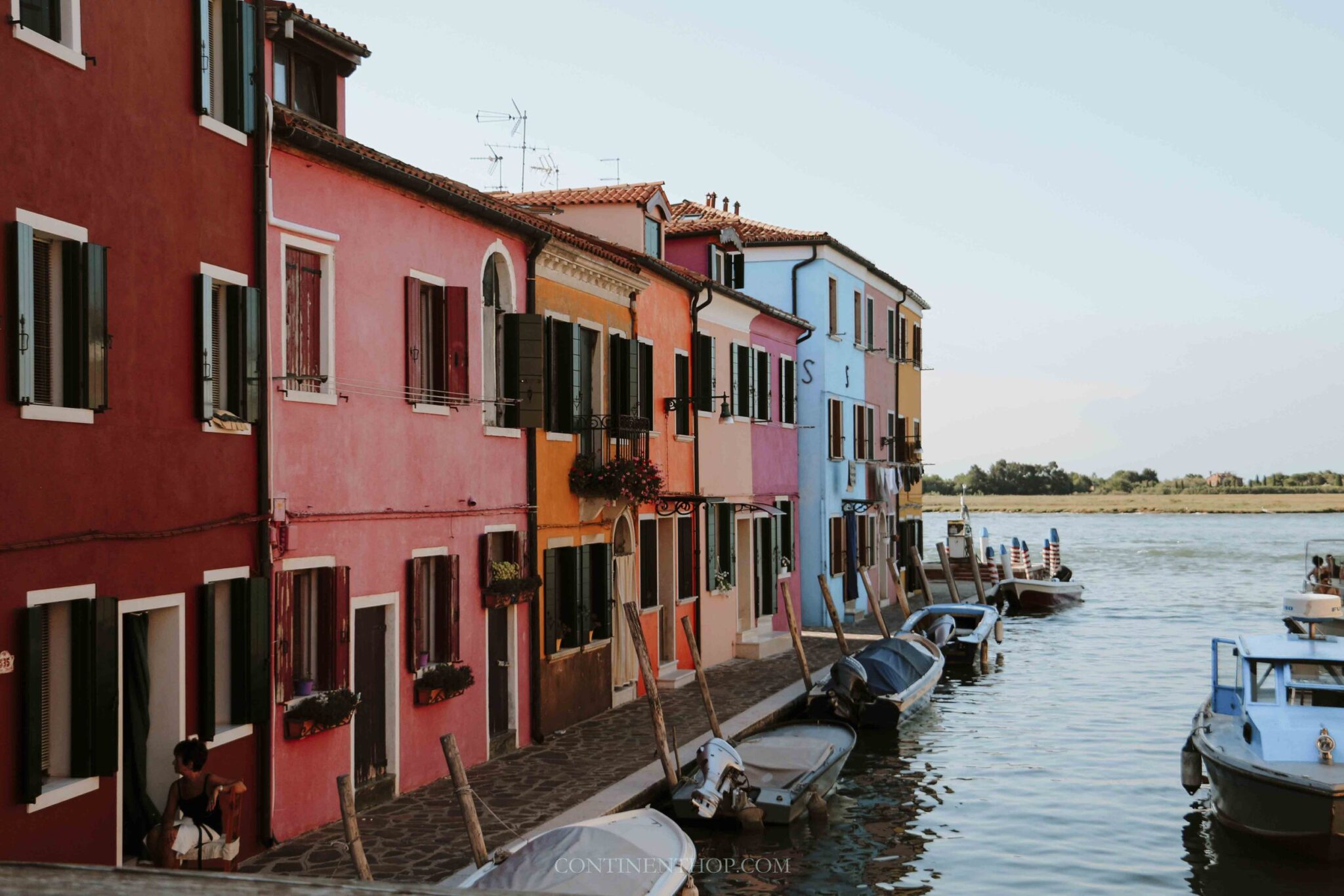
Shop for Authentic Lace Products
After learning all about lace, I couldn’t resist picking up a few lace items to bring home. The shops around Burano are filled with authentic, handmade lace products, from delicate doilies to elegant dresses. It’s a great way to support local artisans and take a piece of Burano’s heritage with you.
Explore Piazza Galuppi
Named after the 18th-century composer Baldassare Galuppi, this square is the heart of Burano. Lined with restaurants, cafes, and shops, it’s a perfect place to enjoy a meal or a coffee while exploring the town. The square is also where you’ll find the statue of Baldassare Galuppi, paying homage to the island’s musical heritage.
Enjoy the Local Cuisine
No visit to Burano is complete without trying some local specialities. The island is famous for its seafood, particularly the Risotto de Go, a creamy risotto made with the local goby fish. Also, be sure to try the Bussolà and Esse cookies, traditional sweets that make a perfect snack as you explore.
Restaurants in Burano Venice
Here are some notable restaurants in Burano that are worth checking out:
Trattoria al Gatto Nero stands out as one of Burano’s most beloved eateries. This place has a cosy vibe that makes you feel right at home, and the seafood risotto? Absolutely to die for.
Then there’s Riva Rosa Ristorante. It’s a bit more upscale, with modern takes on classic Venetian dishes. Eating their mixed seafood antipasto with the canal view in the background felt downright luxurious. It’s perfect for a special evening out.
Visit the Church of San Martino Vescovo
This church is notable for its 16th-century bell tower, which, much like the Leaning Tower of Pisa, has a noticeable tilt. Inside, you’ll find a Crucifixion scene by the Venetian painter Giambattista Tiepolo. The church itself is a serene spot that reflects the island’s spiritual heritage.
DETAILS
Church of San Martino Vescovo
Timings: 8 AM –12 PM, 3 PM – 7 pm
Tickets: Free

When is Burano worth visiting
Deciding when to visit Burano depends on what you’re looking for in your travel experience.
- Spring (March to May): This is a fantastic time to visit Burano. The weather is starting to warm up, but it’s not too hot yet, making it perfect for walking around and exploring all those colourful streets without the summer crowds. Plus, the spring light is just incredible for photos.
- Summer (June to August): Summer is peak tourist season, and while Burano will be busier, it’s also when the island is at its most vibrant. The weather is warm, ideal for those boat tours around the island or enjoying a gelato as you stroll. Just be prepared for more people and higher prices.
- Fall (September to November): Fall in Burano is like a hidden gem. The crowds start to thin out, and the weather is still pleasant, especially in early fall. It’s a great time to enjoy the local cuisine and experience the island’s culture more authentically. Plus, the changing seasons add a beautiful backdrop to the already stunning scenery.
- Winter (December to February): If you’re not a fan of cold weather, winter might be challenging, but it’s worth considering. The island is much quieter, giving you a more intimate experience of its beauty and traditions. Just note that some restaurants and shops might have reduced hours or be closed.
So, when is Burano worth visiting? Honestly, it shines all year round, but if I had to pick, I’d say spring and fall are the sweet spots. You get the beauty, the culture, and more elbow room to explore. But no matter when you go, Burano’s charm is always in full bloom.


Where to stay in Burano
While Burano itself is a small island with limited accommodation options, most visitors choose to stay in Venice or on nearby islands and make day trips to Burano. However, there are a few places to stay on the island if you’re looking for an immersive experience in Burano’s colourful setting.
Luxury: Venissa Wine Resort
Located on the nearby island of Mazzorbo, which is connected to Burano by a footbridge, Venissa offers a luxurious stay amidst vineyards, with elegantly designed rooms and high-end amenities. It’s known for its restaurant and wine production, providing a unique Venetian experience.
Midrange: Casa Burano
Casa Burano is an aesthetically pleasing boutique hotel located directly on Burano. Each room is individually designed to reflect the island’s vibrant colours and artisanal heritage, offering a comfortable and stylish stay.
Budget: Casa Nova
If you are looking for a more budget-friendly option, Casa Nova provides simple, clean, and cosy accommodation in Burano. It offers the charm of staying on the island at a more affordable price point, perfect for travellers who want to experience Burano’s beauty without breaking the bank.
Where is Burano
Burano is a picturesque island located in the Northern Venetian Lagoon, in the Veneto region of Italy. The Venice to Burano distance is about 7 kilometres (about 4 miles), making it easily accessible by Vaporetto (water bus). This charming island is part of an archipelago of four islands linked by bridges.
How to get to Burano Italy
Now that you know why is it worth going to Burano, getting there, is straightforward. Since Burano is an island, the most common and practical way to reach it is by water transport ie Vaporetto. Here’s how you can get to Burano from Venice.

Is it worth going to Burano from Venice?
For visiting Burano from Venice, you typically take a vaporetto from Venice. The main departure points are Fondamente Nove or San Zaccaria near St. Mark’s Square. Line 12 is the direct service to Burano, offering scenic views of the lagoon during the approximately 45-minute journey. Tickets can be purchased at the Vaporetto stations, and it’s advisable to check the timetable in advance for the latest schedules.
The journey offers a scenic route through the Venetian Lagoon, allowing you to soak in the serene water views before reaching Burano’s vibrant shores.
A major reason why is Burano worth it is the island’s small size makes it perfect for exploring on foot, and its proximity to other islands like Murano, famous for its glass-making, and Torcello, known for its ancient churches and quiet charm, makes it a great choice if you are looking for day trips to the islands to experience the beauty and heritage of Venice’s less crowded neighbours.
Is Murano or Burano better?
Is Murano and Burano worth visiting? Yes! Especially if you’re already planning to be in Venice.
Choosing between Murano and Burano comes down to what you’re into. I visited both on my trip to Venice on this Murano & Burano Guided Tour and Murano is all about the glass.
Walking through the island, you’ll see glass workshops and showrooms at every turn. I was fascinated watching artisans transform globs of molten glass into delicate art right before me.
The Glass Museum was a highlight, showing off centuries of glass-making history. Murano feels a bit more laid-back, with its focus squarely on this incredible craft.
Burano, on the other hand, is a blast of colour. It’s not just for show; the tradition has deep roots in the island’s fishing history as mentioned above.
Then there’s the lace. Burano’s lace is exquisite, and seeing the precision with which it’s made is astounding. The Lace Museum dives into this history, but just walking into shops and seeing the lacework is enough to appreciate its beauty. Plus, the seafood in Burano is some of the best I’ve had – fresh and simple.
So, if you ask me, is Murano and Burano worth visiting? It depends. If you’re captivated by art and the magic of glassblowing, Murano it is. But if you’re after vibrant scenes for your photos and a taste of traditional lace, visiting Burano won’t disappoint.
I found both islands offered a unique slice of Venetian culture that you don’t get in the city. Can’t go wrong with either, but the contrast between Murano’s glass artistry and Burano’s colourful, lace-lined streets provided two very different, yet equally memorable experiences.
I would pick both!

How long do you need in Burano?
Spending time in Burano, you’ll find that a half-day to a full day is generally enough to soak in the island’s charm, explore its colourful streets, visit the lace shops, and even enjoy a leisurely meal.
I found that starting early in the morning allowed me to experience Burano before the crowds arrived, making the exploration of its vibrant, picturesque streets more enjoyable.
So, if you’re still wondering “Is Burano worth it?” my answer is a big yes. It’s not just about seeing the bright houses or learning about the special lace they make there.
What makes Burano special is how it keeps its traditions alive and how everyone works together to keep the island looking beautiful. I found out that the government even decides what colour you can paint your house!
This place is more than just a pretty spot; it’s a community where old customs are still a big part of everyday life. For anyone looking for a real, lively place to visit, Burano it is!
Is Burano worth visiting– FAQs
-
Is Burano expensive?
For experiencing Burano’s charm—its spectrum of colourful houses and picturesque canals—costs nothing. Yes, If you’re dining out or shopping for its renowned handmade lace. Affordable eats and treats can be found if you venture off the main paths. Planning helps manage expenses, ensuring you can soak in the beauty and culture of Burano without overspending.
-
Is Burano safe?
Yes, Burano is very safe for tourists, offering a friendly and welcoming environment.
-
How long does it take to get to Burano from Venice?
It takes approximately 45 minutes by Vaporetto (water bus) from Venice to Burano.
-
How far is Burano from Venice?
Burano is about 7 kilometres (roughly 4 miles) from Venice.
-
Is Burano a good place to visit?
Yes, Burano is a fantastic place to visit. Renowned for its vividly coloured houses and intricate lace-making, this charming island offers a unique blend of art, culture, and history. Its tranquil canals and friendly atmosphere provide a serene escape from the hustle of Venice, making it a must-see destination.

Award-winning Analyst, multi-nominated digital content creator and photographer Lavina Dsouza's words capture stories about culture and tradition mainly through its food and people. She has written and contributed to publications such as The Washington Post, Lonely Planet and Matador Network, to name a few. She is the editor of UntraditionalHumans.com, a non-profit created to share inspiring stories from women of colour who break free from traditions and choose happiness.
She's also a speaker passionate about DEI and champions solo travel. She has collaborated with numerous renowned brands such as Intrepid Travel, TripAdvisor, Travel and Leisure and Adobe, to name a few.
She can be found on Twitter and Instagram.
PIN FOR LATER!


EXPLORE MORE OF ITALY
Some of the links on this post are affiliate links. These do not cost you extra to use, but will help provide Continent Hop with a small commission if/when you purchase through them, to recover some of the costs of running this website and providing free content to help you plan your travel. I appreciate your support!
Is Malta Worth Visiting - Here's Why you Should and Shouldn't!
Many travellers tend to ignore Malta as it’s not connected to mainland Europe! However, Malta completely caught me by surprise! Beautiful climate, budget friendly spots and warm people! Here’s why is Malta worth visiting, why it is good for holidays and what it’s like!
When I first thought about visiting Malta, a small island in the Mediterranean, I wondered, “Is Malta worth visiting?” Tucked away in the Mediterranean, Malta might not be the first country that springs to mind for a holiday as it’s not connected to the mainland, but as I discovered, it’s a country that’s hard to ignore and perfect for an extended weekend break.
Imagine azure seas, sunny skies, and towns filled with history. Malta isn’t big, but it’s got a lot of charm. Walking through the old streets of Valletta, the capital city, feels like stepping back in time. Malta’s history is a mix of different cultures like the Romans and the British, which makes it interesting. The most interesting part is that many places in Malta are the Game of Thrones locations.
If you’re sceptical is Malta nice to visit, read along while I explain why is Malta worth visiting and give you several reasons why is Malta worth a visit.
PLANNING YOUR MALTA TRIP | THE ESSENTIALS
Must-do guided tours
- Mdina and Rabat: Guided City Walking Tour
- Valletta: Guided Walking Tour with Optional Cathedral Tour
- Prehistoric Temples of Malta Tour
- Malta: Comino, Blue Lagoon & Caves Boat Cruise
- Valletta: Maltese Food and Drink Guided Walking Tour
The best places to stay
IN THIS GUIDE
Toggle
Is Malta worth visiting?
Why visit Malta and what is Malta like
Before heading on to the reasons to visit Malta, let me tell you a little about this tiny island in the Mediterranean. Malta is packed with history – ancient temples, stunning churches, and old forts. Walking around the cities, especially Valletta, the capital feels like stepping back in time or the stunning St. Paul’s Bay.
But Malta’s history isn’t the only reason why is Malta worth visiting. The beaches here are gorgeous, with clear blue water, they are perfect for swimming and snorkelling. The Blue Lagoon? It’s like something from a postcard. And don’t get me started on the food – it’s a delicious mix of Italian and Mediterranean flavours. You’ve got to try the local dishes!
The people in Malta are super friendly, too. They make you feel welcome right away. In short, if you’re looking for a place with great history, beautiful beaches, awesome food, and kind people, Malta’s got it all. It’s a small island, but it leaves a big impression.
Is Malta a good holiday destination?
Is Malta good for holidays for history buffs? Absolutely. Malta’s rich history is evident in its well-preserved sites. Some of the sites that you can visit proves why is Malta a good place to visit. Let’s jump into the reasons why is Malta a good place for a holiday and why is Malta worth visiting.
Is Valletta worth visiting?
Valletta, Malta’s capital, is not just a city but a historic jewel, designated as a UNESCO World Heritage site and a big reason why is Malta nice to visit. This city is a treasure trove for anyone fascinated by 16th-century architecture, highlighting the grandeur of the Baroque era. You can book this Guided Walking Tour of Valletta to fully explore the city.
Wandering through the city, I came across the magnificent St. John’s Co-Cathedral. Inside, the artistic richness, particularly Caravaggio’s masterpieces, left me in awe.
DETAILS
Address: Triq San Gwann, Il-Belt Valletta, Malta
Timing: 9:00 AM – 4:15 PM ( Sunday closed)
Tickets: € 15 for Adults and € 12 for Students
Another must-visit is the Upper Barrakka Gardens, offering not only a peaceful retreat but also spectacular views of the Grand Harbour, framed by ancient cannons and fortified walls.
DETAILS
Upper Barrakka Gardens
Address:292 Triq Sant’ Orsla, Il-Belt Valletta, Malta
Timing: 7:00 AM – 10:00 PM ( Everyday)
Tickets: Free
For a more recent historical perspective, you can visit the Lascaris War Rooms that highlight Malta’s strategic role during World War II. Touring these underground tunnels and rooms, originally the headquarters for the British and Allied Mediterranean campaign, I gained insight into the island’s crucial role during this tumultuous period.
DETAILS
Address: Lascaris Ditch Valletta, VLT 2000, Malta
Timing: 10:00 AM – 4:30 PM ( Sunday closed)
Tickets: € 14 for Adults and € 7 for Children
Mdina and Rabat
If you are still confused about is it worth visiting Malta, let me tell you about Malta’s ancient cities. Venturing to Mdina and Rabat on this Guided City Walking Tour, I felt like I was stepping back in time.
Mdina, the ‘Silent City’, is this incredibly serene and ancient walled city. As soon as I stepped through its gates, the modern world seemed to fade away. The streets are narrow and maze-like, lined with old noble houses and palaces that speak volumes about its past. The standout for me was the Cathedral of Saint Paul – its baroque architecture is just stunning, and it really dominates the city’s skyline.
DETAILS
Address: 2 Triq San Pawl, L-Imdina MDN 1061, Malta
Timing: 9:30 AM – 4:30 PM ( Sunday closed)
Tickets: € 10 for Adults and € 8 for Student
Then there’s Rabat, right next to Mdina, but it’s a whole different vibe. It’s more lively and bustling with everyday life. Walking through Rabat, I explored St. Paul’s Catacombs – an intricate network of underground burial sites that gave me a unique glimpse into early Christian Malta. I also visited the Roman Villa, where I saw some amazing ancient mosaics.
DETAILS
Address: Hal-Bajjada, Ir-Rabat, Malta
Timing: 9:00 AM – 5:00 PM ( Tuesday closed)
Tickets: € 6 for Adults and € 3.5 for Children
Roman Villa
Address: Wesgha tal-Musew Rabat, RBT 1202, Malta
Timing: 9:00 AM – 5:00 PM ( Monday and Wednesday closed)
Tickets: € 6 for Adults and € 3 for Children
Hagar Qim and Mnajdra
The incredible prehistoric temple sites Hagar Qim and Mnajdra are among the oldest free-standing structures in the world, and being there, I could really feel the weight of history around me. I booked this Prehistoric Temples of Malta Tour.
Hagar Qim, perched on a hilltop with a breath-taking view of the Mediterranean Sea, was awe-inspiring. The temple’s massive megalithic stones, some of which are several meters high, left me wondering about the ancient people who built them without modern technology. The way the temple is aligned with the solstices and equinoxes showed me how advanced these ancient builders were in understanding astronomy.
A short walk from Hagar Qim took me to Mnajdra, set in a rugged landscape that felt like a world away from anywhere I’d been before. This temple complex felt even more mystical, especially with its precise astronomical alignment.
DETAILS
Hagar Qim and Mnajdra Archaeological Park
Address: Triq Hagar Qim, Il-Qrendi QRD 2501, Malta
Timing: 10:00 AM – 6:00 PM ( Tuesday closed)
Tickets: € 10 for Adults and € 5.5 for Children


Is Malta worth visiting for Natural Wonders and Beaches
For those asking, “Is Malta nice for a holiday for nature lovers?” Malta’s natural landscapes provide a resounding yes.
Blue Grotto
The Blue Grotto, located on the southern coast of Malta, is a series of sea caverns that are nothing short of mesmerizing. These natural wonders are known for their brilliant blue waters and the play of light that creates a magical spectacle.
Why visit Malta for its Beaches
Malta’s beaches are really something special and a big reason why is Malta a good place to visit. Golden Bay is a big hit with its wide sandy beach and super clear water. It’s perfect for swimming and just chilling out in the sun. The beach is surrounded by these tall cliffs which make it look amazing.
Mellieha Bay is another great beach, especially if you’re with family or like gentler waters. It’s got shallow water, making it safe for kids or anyone who just wants to wade and splash around making it one of the reasons why is Malta a nice place to visit with family. Plus, it’s the longest beach in Malta, so there’s lots of room for beach games and fun.
Then there’s the Blue Lagoon in Comino, a tiny island between Malta and Gozo. This place is like a piece of paradise with its bright turquoise water and white sandy bottom and you can explore it by booking this Blue Lagoon boat cruise. The water is shallow and super clear, and it’s like swimming in a giant pool. It’s so peaceful and beautiful there, making it a must-visit spot in Malta.
Dingli Cliffs
For those who appreciate rugged landscapes, the Dingli Cliffs offer spectacular views of the Mediterranean. These are the highest points in Malta, offering panoramic views of the Mediterranean Sea. Walking along the clifftops, I was greeted with an unspoiled landscape and the vast expanse of the open sea, which was tranquil. The cliffs are also a great spot for birdwatching, especially during migration seasons.
DETAILS
Dingli Cliffs
Address: V92P+V45, Dingli, Malta
Timing: Open all day, every day
Tickets: Free

Is Malta worth visiting for adventure and activities
If you are still wondering why is Malta worth visiting an array of adventure activities will definitely convince you.
As a diver’s paradise, Malta boasts some of the clearest waters in Europe, teeming with rich marine life and intriguing wrecks. Diving spots like the Um El Faroud and the Blue Hole are not just about exploring underwater marvels; they’re an experience in witnessing history and natural beauty converge beneath the waves.
Also, Malta’s countryside offers stunning hiking trails. Walking the trails of Mgarr or along the Dingli Cliffs, I was struck by the picturesque landscapes and the peaceful ambience.
Water sports enthusiasts will find Malta’s crystal-clear waters perfect for activities like windsurfing, sailing, and jet-skiing.
Is Malta a good place to visit for cuisine and gastronomy
Exploring Malta isn’t complete without diving into its local cuisine, a delightful blend of flavours influenced by its Mediterranean neighbours. The traditional Maltese pastizzi, with its flaky pastry filled with ricotta or peas, became my go-to snack.
Wine tasting in Malta was another delightful surprise. The island’s wineries, which are starting to gain international recognition, offer tastings of local wines that are as unique as the island itself. I recommend booking this Maltese Food and Drink Guided Walking Tour to fully enjoy Maltese cuisine.
Is Malta a nice place to visit for arts and learning
If you are wondering is Malta good for art lovers, Malta’s vibrant arts scene and museums provide a positive response.
The Manoel Theatre in Malta is an absolute treasure, being one of the oldest theatres still in operation in Europe. When I visited, I was immediately struck by its stunning baroque architecture and the cosy, intimate feel of the place. They host all sorts of shows here – from classical music and opera to modern plays and dance performances.
DETAILS
Teatru Manoel
Address: Old Theatre Street, Il-Belt Valletta, Malta
Timing: Depends on shows
Tickets: You can buy tickets for shows here.
Not far from the theatre, I found the National Museum of Fine Arts in Valletta. This place is a paradise for art enthusiasts. It’s filled with a wide range of art, spanning from medieval times right up to the modern era. Walking through the museum, I saw everything from classic Maltese paintings to international modern art. They also have sculptures, historical furniture, and even silverware.
DETAILS
Address: Auberge D’Italie, Merchants St, Valletta, Malta
Timing: 9:00 AM – 5:00 PM ( Tuesday closed)
Tickets: € 10 for Adults and € 5.50 for Children

When is Malta worth visiting?
If you are thinking about when should i visit Malta, let me tell you that Malta is a great year-round destination. Spring and autumn are ideal for comfortable weather and fewer crowds, perfect for exploring and outdoor activities.
Summer is best for beach lovers and vibrant nightlife, while winter offers a quieter, more cultural experience with mild weather, ideal for sightseeing and enjoying local festivities.
Is Malta worth visiting in October
Is Malta nice in October? Yes! October in Malta is delightful. The weather is warm but not too hot, perfect for beach activities and outdoor exploration. The sea is still warm for swimming and the summer crowds have thinned, making it a great time to enjoy both land and sea attractions.
Is Malta worth visiting in November
November is a good time to visit Malta for those who prefer a more tranquil experience. The weather is cooler and wetter, but still pleasant for sightseeing. It’s an ideal time for cultural visits and enjoying the local cuisine without the peak season rush.
Is Malta worth visiting in December
Yes, Malta in December is charming. The island is quieter, perfect for exploring historical sites without the crowds. Festive decorations and Christmas markets add a special ambience. Though cooler, the weather is mild compared to much of Europe, making outdoor activities still enjoyable.
Is Malta worth visiting in January
Visiting Malta in January means fewer tourists and more opportunities to interact with locals. The weather is cool, but not freezing, ideal for leisurely walks through ancient cities. It’s a time to experience Malta’s authentic charm at a slower pace.
Is Malta worth visiting in February
Malta in February offers a peaceful getaway. The weather can be unpredictable, ranging from cool to mild, but it’s great for exploring the great indoors – museums, historic buildings, and cafes. The island celebrates Carnival in February, a vibrant and colourful festivity.

Is Malta expensive to visit
Visiting Malta can be moderately expensive, but it largely depends on your travel style and choices.
- Accommodation Costs
- Budget: €15-€30/night for hostels
- Mid-range: €60-€120/night for hotels
- Luxury: Over €200/night, especially in peak season
- Food and Dining
- Street food: €5-€15/meal
- Mid-range restaurants: €20-€40/person
- High-end dining: €50+/meal
- Transportation
- Public buses: Around €2/journey
- Day passes Approx €4.50, good for extensive travel
- Attractions
- Historical sites/museums: €5-€20 entrance fee
- Other activities (e.g., boat tours): €10-€30
Where to stay in Malta
Luxury: The Gomerino Hotel
This 4-star hotel is situated in Valletta, offering amenities like an outdoor and indoor pool, fitness centre, and terrace. It’s a great blend of luxury and location.
Mid-range: La Falconeria Hotel
Located in a convenient yet quiet part of historic Valletta, this hotel offers stunning rooms with Maltese balconies and excellent service
Budget: Inhawi Boutique Hostel
Known for its outdoor pool and sea views, it’s a great choice if you are looking for comfort in a budget.

Malta travel tips
Traveling to Malta can be an enriching experience if you’re armed with some handy tips:
- Accommodation: Book in advance, especially during the peak summer months. Consider staying in Valletta for its central location or in coastal towns for beach access
- Transportation: Public buses are reliable and cover most of the island. Renting a car is a good option for flexibility, but remember that Maltese drive is on the left. Also, parking in popular areas can be challenging
- Currency and Expenses: Malta uses the Euro. It’s wise to have some cash for smaller establishments, but most places accept credit cards. Keep an eye on your budget as tourist areas can be pricey
- Cultural Etiquette: Maltese people are generally warm and friendly. Respect local customs and traditions, especially when visiting religious sites – dress modestly in such places
- Language: Maltese and English are the official languages. English is widely spoken, so communication is generally not an issue
- Weather: Pack according to the season. Summers are hot and dry, so light clothing, sunscreen, and hats are essential. Winters are mild but can be rainy, so bring a light jacket

In conclusion, the question “Is Malta worth visiting?” finds its answer in the island’s history, natural beauty, culture, and warm hospitality. From wandering through the historic streets of Valletta to relaxing on the stunning beaches, each moment was a discovery. The rich history, diverse landscapes, and delicious food made my trip unforgettable.
Malta’s warm hospitality made me feel right at home. It’s a place where history, nature, and culture blend seamlessly, making every day exciting. For anyone wondering – is Malta nice to visit for a holiday, I say go for it. You’ll find something unique and memorable, just like I did.
Is Malta worth visiting – FAQs
Is Malta a good place to go on holiday?
Absolutely, Malta is a great place for a holiday. It’s got everything: beautiful beaches, loads of history, tasty food, and a really friendly vibe. Whether you’re into exploring old cities or just want to chill by the sea, Malta’s got you covered.
How many days in Malta is it worth visiting?
Around 5 to 7 days is ideal for a trip to Malta. This gives you enough time to explore its historic cities, enjoy the beaches, and experience the local culture and cuisine. It’s perfect for a thorough yet relaxed exploration of the island’s main attractions, including a possible day trip to Gozo.

Award-winning Analyst, multi-nominated digital content creator and photographer Lavina Dsouza's words capture stories about culture and tradition mainly through its food and people. She has written and contributed to publications such as The Washington Post, Lonely Planet and Matador Network, to name a few. She is the editor of UntraditionalHumans.com, a non-profit created to share inspiring stories from women of colour who break free from traditions and choose happiness.
She's also a speaker passionate about DEI and champions solo travel. She has collaborated with numerous renowned brands such as Intrepid Travel, TripAdvisor, Travel and Leisure and Adobe, to name a few.
She can be found on Twitter and Instagram.
PIN FOR LATER!


EXPLORE MORE OF MALTA
Some of the links on this post are affiliate links. These do not cost you extra to use, but will help provide Continent Hop with a small commission if/when you purchase through them, to recover some of the costs of running this website and providing free content to help you plan your travel. I appreciate your support!
Where is hot in October in Europe? 35 FAB Warm Spots for Some Sun!
October in Europe is when autumn is at its peak with yellow leaves everywhere and a nip in the air, with people steadily bringing out the winter coats and cardigans. But all of Europe isn’t so! Here’s where is hot in October in Europe for some winter sun, maybe even a dip in the sea and brilliant getaways!
Winter is finally at the doorstep in October in Europe however not all places are chilly! There’s places in Europe that are not a secret yet many don’t tend to think of – even when they really need to catch some sun and sea!
These places are the perfect answer to the question – Where is hot in October in Europe? As these are the hottest places in October in Europe and they’re budget-friendly too!
If you are not looking to travel to far off spots, here’s where the warmest places are before winter sets in!
Some of the best trips and stays for a last minute trip!
Great tours for your vacay
- Delos & Rhenia Islands Cruise from Mykonos
- Perge, Aspendos, Side and Waterfall (sightseeing) excursion
- Tour of Albanian Riviera: Vlora, Dhermi, Himara, Saranda, and Ksamil in 3 Days
Some FAB Hotels for a stay
IN THIS GUIDE
Toggle
Where is hot in October in Europe?
Here’s the hottest places in October in Europe
Warm places to visit in October – Italy
October is an ideal time to visit Italy due to the warm temperature, fewer tourists, and cheaper prices. Rome and Venice are better in October than in the summer or winter. You will find Italy all wrapped up in Autumn air during this time, making it one of the best warm holiday destinations in October.
This is the month when you can explore all the major cities, catch some tan on Italian beaches, and hike up the mountains without worrying about the weather.
Venice
The average temperature in Venice in October: 19° / 9°C
What makes Venice unique in October: Venice is the city where you will find warm weather in October in Europe. And as October is the start of the opera season, you can catch Opera at La Fenice Theater.
Things to do in Venice in October: Here’s a 2 day Venice Itinerary Italy that has information about everything you need to see in Venice. You can also take part in the Venice Marathon and enjoy the spirit of Halloween in Venice in October.
Pro-tip to visit Venice: Do not forget to carry a light jacket when wandering around Venice in the autumn season.
Milan
The average temperature in Milan in October: 18° / 11°C
What makes Milan unique in October: Even though Milan starts getting cold after September, you can still add this to your October trip. The best part about this city is it usually has Milan Fashion Week around the 1st week of October. A perfect opportunity for fashion enthusiasts to visit this fashion capital of the world, isn’t it?
Things to do in Milan in October: Duomo di Milano, II Cenacolo, Castello Sforzesco, Santa Maria Della Grezzo, Monte Napoleone, Pinoteca De Brera, Teatro Alla Scala
Pro-tip to visit Milan: Even though the weather definitely makes it amongst the hot holidays in October, be prepared to experience a little chilly evening once in a while. So, carry your layers accordingly.
Rome
The average temperature in Rome in October: 22° / 12°C
What makes Rome unique in October: Even though Rome experiences rain showers in October, you will find it a pleasant month to wander around the city. One of the warm places to go in October, visiting Rome during this time will give you hours of outdoor time to spend at places like the Colosseum and the Roman Forum.
Things to do in Rome in October: Colosseum, St. Peter’s Square, Trevi Fountain, Vatican museums and the Sistine Chapel, Basilica di Santa Maria Maggiore, the Pantheon and the Spanish Steps, Roman Forum, Galleria Borghese and Musei Capitolini.
Pro-tip to visit Rome in October: It is important not to add Vatican Museums to your itinerary on the same day as the Colosseum. Both places need hours to explore and visiting them on the same day will not do justice to either.
Florence
The average temperature in Florence in October: 21° / 11°C
What makes Florence unique in October: Visiting attractions like Boboli Gardens in October will give you a chance to soak in the beautiful colours of fall foliage.
Things to do in Florence in October: Santa Maria Del Fiore, Uffizi Palace and Gallery, Leonardo Active Museum, Accademia Gallery, Piazzale Michelangelo, Musée Marino Marini, Pitti Palace, Basilica of Santa Croce
Pro tip to visit Florence: Want to know where is it hot in October? Florence is the answer you are looking for. Occasional rainfall is welcomed by locals and the wind calls for warm clothing or a light jacket.


Warm European countries in October – Spain
Spain is as diverse as any country can get. Home of Pablo Picasso, heaven to football lovers, and a paradise for foodie souls, every day is a fiesta when you are in Spain. This is where you will come across Museo Nacional del Prado, La Sagrada Familia, Alhambra, and the famous party island of Ibiza. Welcoming everyone from backpackers to billionaires, you must visit Spain for all the unique experiences it has in store.
Coastal regions like the Canary Islands and Barcelona have warm temperatures, which are ideal for enjoying the beaches. Madrid, Seville, and Granada have pleasant temperatures as well.
Canary Islands
Average temperature in the Canary Islands in October: 26° / 20°C
What makes the Canary Islands unique in October: When you go to the Canary Islands in October, the bright skies and warm sea will welcome you with open arms. Though the Canary Islands are known for being hot places in Europe in October, this month can actually prove ideal for a visit.
Things to do in the Canary Islands in October: You can include Mount Teide, Timanfaya National Park, Siam Park, Playa de Las Teristas, Jameos del Agua, and Las Canteras Beach in your itinerary apart from the famous tourist destinations.
Pro tip to visit the Canary Islands: It can be a good time to plan outdoor activities and be in the heart of nature. But remember to pack light clothes and stay hydrated.
Barcelona
Average temperature in Barcelona in October: 23° / 17°C
What makes Barcelona unique in October: Barcelona is popular for being a summer destination, but it is still one of the warm destinations in October where you can experience pleasant temperatures during the day. The Barcelona weather in October can be a little unpredictable with occasional showers. So, pack accordingly.
Things to do in Barcelona in October: La Sagrada Familia, Park Güell, Casa Milà, Casa Batlló, La Rambla, Tibidabo, Palau Nacional de Montjuïc, Camp Nou, La Boqueria market Maritime, Museum and sailing in a sunset cruise at Port Vell.
Pro tip to visit Barcelona: The days are balmy enough to go sunbathing but keep in mind that the sea can start getting chilly for a swim.
Madrid
Average temperature in Madrid in October: 19° / 11°C
What makes Madrid unique in October: Madrid is one of the warm places in October where warm and sunny days await you during this month. Spending a day lazing around in the 19th century El Retiro Park can be the best way to start your vacation.
Things to do in Madrid in October: Royal Palace, Thyssen-Bornemisza Museum of Art and the Reina Sofia Museum, Santiago Bernabéu Stadium, El Retiro Park, Thyssen-Bornemisza, San Miguel Market, Puerta de Alcalá
Pro tip to visit Madrid: The metro is the best way to get around; travel above ground if you’d like to see what you’re passing as the sights are worth it!

Hot places in Europe in October – Greece
Greece is a vibrant quilt that is stitched together with ancient ruins of the Acropolis of Athens, soulful monasteries of Meteora, pink sandy beaches of Elafonisi, and the surreal beauty of Melissani Cave.
Greece’s unofficial party capital Mykonos will ensure you have an exciting time here whereas hauntingly beautiful Navagio beach will give you a chance to be in the heart of nature. And of course, you cannot miss the magical sunsets Santorini is famous for!
Greece is warm in October. So, you do not have to worry about ‘is it hot in Greece in October?’ during this time. Evenings are chilly in some places, but daytime temperatures are in the mid-20s. You won’t find summer crowds in October, plus hotels have shoulder season rates.
Athens
Average temperature in Athens in October: 23° / 15°C
What makes Athens unique in October: If you are wondering ‘is Greece hot in October?’ and if you should visit cities like Athens during this time, then don’t worry. Athens has the perfect weather in October where you can feel the winter approaching, but so slowly that you can still enjoy the outdoors.
Things to do in Athens in October: This itinerary has all the information you’ll need for visiting Athens in a day
Pro tip to visit Athens: Do not miss a chance to take walking tours around this Greek city as less crowds and pleasant days will help you make the best of your time.
Santorini
Average temperature in Santorini in October: 22° / 17°C
What makes Santorini unique in October: With dry weather and temperature that can go up to 25°C, Santorini ranks amongst hot places in October, Europe. No matter what the weather is, you will still find the breath-taking sunsets to soothe your soul here.
Things to do in Santorini in October: Here’s 2 days in Santorini itinerary. But if you’d like to spend more time on this mesmerising island, here is more information about what you can do in Santorini: How many days in Santorini Greece.
Pro tip to visit Santorini: As this month is not a peak tourist season in Santorini, remember that some businesses may close down towards the end of October. So, confirm that before booking any tours and activities.
Or you can visit any of the islands near Santorini, like Mykonos, Naxos, and Ios.


Warm destinations in October in Europe – Portugal
Portugal is the perfect combination of bustling cities and sleepy villages. This country is known for its distinctive architecture that dates back to the 1500s–1800s.
It has popular sights like Park and the National Palace of Pena, the Portugal cuisine is simple and yet scrumptious, the Algarve beaches are breath-taking, and the resorts are luxurious. All these things ensure your trip to Portugal will be a memorable experience.
October is one of the best months to visit Portugal. It has a mix of sunny and rainy days. It rains more in the country’s northern port, making southern destinations like Lisbon, Sintra, and Porto ideal for an October vacation.
Lisbon
Average temperature in Lisbon in October: 23° / 15°C
What makes Lisbon unique in October: If you visit Lisbon in October, you will find sunny skies or at least partially sunny skies to allow several beach days. It may not be warm enough for sunbathing, but you can take a stroll on a beach.
Things to do in Lisbon in October: Carmo Convent ruins, Belem Tower, Lisbon Cathedral, Castelo de. S Jorge, Jerónimos Monastery, Santa Justa Lift, Oceanário de Lisboa, Lisbon Cathedral, Miradouro das Portas do Sol
Pro-tip to visit Lisbon: The early days may require a sunhat as it is one of the hot places in October whereas late October may need a light jacket.
Sintra
Average temperature in Sintra in October: 21° / 13°C
What makes Sintra unique in October: Making a list of warm places to visit in October? Add Sintra without any delay! Sintra starts getting mildly colder with gentle winds in October. You can spend hours at the UNESCO World Heritage Site of Quinta da Regaleira or get out of the city and head to the Sintra-Cascais Natural Park.
Things to do in Sintra in October: Park and National Palace of Pena, Castelo dos Mouros, Quinta da Regaleira, Sintra National Palace, Park and Palace of Monserrate, Convent of the Capuchos
Pro tip to visit Sintra: The only thing you have to worry about is peak tourist hours between 11 am to 3 pm. So, try to start your day early.
Porto
Average temperature in Porto in October: 21° / 12°C
What makes Porto unique in October: Try visiting Porto around mid-October and you will find it a lot less crowded than in other months. As it is part of one of the warm European countries in October, the autumn month of October brings balmy days.
Things to do in Porto in October: Ribeira Square, Luís I Bridge, Clerigos Church and Tower, Porto Cathedral, Bolsa Palace, Igreja do Carmo, Monument Church Of St Francis, Avenida dos Aliados
Pro-tip for visiting Porto: The city of Porto is all about narrow cobbled streets dotted with cafes and shops. So, wander around, sip a cup of coffee, and make the best of your time. Make this trip a leisurely one.

Warm places to go in October – Turkey
Turkey is a country where Asia and Europe come together to create a distinctive mix of history, culture, and religion. The narrow streets of Istanbul will captivate you with the aroma of spices, the sounds of prayers, and the numerous mosques and museums. Bodrum is the city where you will find several relaxing beaches.
The Turkish resort city of Antalya will keep you engaged with fascinating ruins. Do not miss a chance to take a hot balloon ride over the unique rock formations of Cappadocia.
October is the shoulder season in Turkey. However, many tourists visit Cappadocia and Istanbul in October. The weather is warm and pleasant in October.
It is ideal for walking around and admiring the architecture and natural beauty of the country. Daytime temperature is around 18°C in Cappadocia and 25°C in the capital Istanbul.
Here’s an itinerary that includes the best of West Turkey (Istanbul, Cappadocia, Izmir, Pammukale and Antalya): 10 day Itinerary turkey
Hot holidays in October in Europe – Malta
The tiny archipelago of Malta suddenly became famous after Game of Thrones was filmed here. Thanks to this world-famous series, the world has come to know the beauty of Valletta, Mdina, and Gozo. Its well-developed beaches add a modern touch while different museums and theatres are busy preserving ancient history and culture.
The UNESCO World Heritage Sites of Ħal Saflieni Hypogeum and Megalithic temples of Malta are where history (and of course, GOT) comes to life!
Except for the months of November, January, and February, any of the months are a good time to visit Malta. In October, the temperature is between 25 and 17°C. The days are long and sunny. So in October, Malta has the perfect beach weather to enjoy the beach.
October is an excellent time for swimming in Malta’s scenic Blue Lagoon. Other than the Blue Lagoon, here’s what you should see in Malta in October.
Valletta
The average temperature in Valletta in October: 25° / 18°C
What makes Valletta unique in October: October is the off-season in Valletta and that means you can explore the streets of this historic city without worrying about crowds. Even though it is one of the warm places to go in October, you may witness occasional showers. So, check the weather forecast while planning your trip to Valletta.
Things to do in Valletta in October: St John’s Co-Cathedral, Upper Barrakka Gardens, Fort St Elmo, Valletta Waterfront, Lascaris War rooms, Saluting Battery, Three cities, Casa Roca Piccola
Pro-tip to visit Valletta: Taking a walking tour of the city and seeing Game of Thrones filming locations will be the best way to spend a day. If you have more time, it’s also worth going to St Paul’s Bay, a small port town just 17 km from Valetta. It’s a small coastal town that has a lot to offer. Here’s all the information: St Paul’s Bay Malta things to do
Mellieha
The average temperature in Mellieha in October: 25° / 18°C
What makes Mellieha unique in October: You will love visiting Mellieha in October as it can be one of the places hot in October. The weather is ideal for sunbathing and the water temperature is perfect for taking a dip.
Things to do in Mellieha in October: Mellieha/Ghadira Bay, Ramna Bay, Popeye village, Mellieha Air raid shelter, Coral Lagoon, Ghadira Nature Reserve, Armiere Bay Beach, Paradise Bay
Pro-tip to visit Mellieha: This Maltese resort town is all about a laid-back vacation where you can catch some tan and relax on a beach. So, do not forget to pack sunscreen and a sunhat.


Warm places to visit in October in Europe – Gibraltar
Gibraltar is a narrow peninsula at the southern edge of Spain, under the jurisdiction of the UK. Gibraltar’s main attraction is the Rock of Gibraltar, a monolithic limestone that’s been a strategic military base for the British since 1704.
The Moorish Castle dating back to the 14th century and 18th century Great Seige Tunnels are enough to attract travelers from around the world. A trip to Gibraltar is bound to be a historic affair with a touch of adventure activities and relaxing beaches.
The maximum temperature reaches 23°C, and the lowest temperature is 17°C making Gibraltar one of the ideal warm holiday destinations in October.
The average temperature in Gibraltar in October: 23° / 17°C
What makes Gibraltar unique in October: Gibraltar is the place where you experience the Mediterranean autumn season in October as it is one of the hot countries in October. So, comfortable weather is almost guaranteed even when most parts of Europe already started experiencing winter air.
Things to do in Gibraltar in October: The Rock of Gibraltar, St Michael’s Cave, Upper Rock Nature Reserve, The Great Seige Tunnels, Ocean Village, Gibraltar Botanic Gardens
Pro-tip to visit Gibraltar: Taking a cable car ride is a must and of course, you cannot miss the Moorish Castle and Botanic Gardens. Carry a light jacket in case the wind is chilly but other than that, you are good to go.
Warm places to go in October – Cyprus
Cyprus is where traditions are respected above anything else and heritage is preserved with all its might. Its turbulent history and kaleidoscopic culture have resulted in offering many churches, monasteries, and castles.
Be it the blissful vibes of Nissi Beach or the mythological gem of Petra Tou Romiou, or the sun-kissed coastal areas, vacationing in Cyprus is an experience you shouldn’t miss.
October is warm enough to enjoy swimming on Cyprus’s beaches and spend time in the picturesque countryside. The average highs are 26°C during the daytime.
Towards the end of October, evenings start getting chilly, but it’s not unbearably cold. In October, the average low temperature is 15-17°C in Nicosia, Paphos, and Larnaca.
What makes Cyprus unique in October: When you look for warm countries in October, you will be surprised to find Cyprus on the list. This island country may look small, but it makes for a lovely October vacation with its beaches, wineries, and different archaeological sites.
Here’s a 7-day Cyprus itinerary to enjoy the October holiday sun in Cyprus: Itinerary Cyprus 7 days. This itinerary includes information about Nicosia, Paphos, and Larnaca.
Pro-tip to visit Cyprus: Planning a Cyprus vacation means spending most of the day outside exploring manmade as well as natural sights. So, carry plenty of water, stay hydrated, and do not forget to carry sunscreen!

Where is hot in Europe in October: Croatia
The Mediterranean paradise of Croatia is the place where ancient and modern worlds collide with each other. The ancient walls of Dubrovnik, the 4th-century structure of Diocletian’s Palace, and the beauty of Plitvice Lakes National Park will take you back to simpler times during the day. The peppy nightlife on the beaches of Korčula and Brač will pull you into the modern world after sunset. With a blend of different flavours, Croatia is bound to be a memorable vacay.
Croatia’s average daily temperature is 18°C in October. The highs range from 20°C to 18°C, and the low temperature ranges from 14°C to 12°C. It has pleasant weather, and popular destinations in Croatia have fewer crowds during October. October is shoulder season in Croatia, so some hotels along the coast start closing for winter ferries operate on the winter schedule.
Zagreb
Average temperature in Zagreb in October: 16° / 9°C
What makes Zagreb unique in October: Zagreb is known for hosting different festivals in October. So, do check the updated schedule and be a part of the local canvas. If you are planning hiking, biking, or swimming, then it is recommended to check the weather forecast.
Things to do in Zagreb in October: Cathedral of Zagreb, St Mark’s Church, Park Maksmir, Lotrščak Tower, Museum of Broken Relationships, Stone Gate, Jarun, Sljeme
Pro tip to visit Zagreb: Zagreb sees around 11 days of rain on average in October and that means you have to carry an umbrella or a rain jacket when wandering the streets. But, do not let that stop you from soaking in the fall landscapes around here.
Motovun
The average temperature in Motovun in October: 18° / 8°C
What makes Motovun unique in October: Motovun is a tiny, medieval hilltop village that is all about nature and surrounding landscapes. And that also means it gets moderately chilly with a gentle breeze. The weather is usually ideal for biking along the winding roads or a leisurely olive oil tasting.
Things to do in Motovun in October: Hilltop Walled Ancient City of Motovun, Benvenuti Winery, Ancient City Walls, Bell Tower, Fakin, St Stephen’s Church
Pro-tip to visit Motovun: If you are lucky, you will also get to be a part of the Truffle Days’, a festival that is celebrated every Fall. This festival can be attended in Motovun, Croatia as well as other neighbouring villages.
Dubrovnik
The average temperature in Dubrovnik in October: 22° / 16°C
What makes Dubrovnik unique in October: Even though mild, Dubrovnik showers in October can be enough to pause your outdoor pursuits. Carry an umbrella just to be safe. Dubrovnik is also one of the places where warm weather in October in Europe can be experienced. So, pack your bags keeping that in mind.
Things to do in Dubrovnik in October: Walls of Dubrovnik, Old Town, Lokrum island, Fort Lovrijenac, Copacabana beach, Koločep Island, Uvala Lapad beach, Bellevue beach, Mount Srđ
Pro-tip to visit Dubrovnik: Irrespective of the weather, you must walk around Dubrovnik Walls and the old town to truly understand the charm of this Croatian town. And of course, opt for the King’s Landing tour to make the best of your vacation here.
Warm holiday destinations in October in Europe – Bulgaria
Bulgaria is a country for adventure enthusiasts as well as laid-back tourists. As the Balkan mountains will call your name, the beaches along the Black Sea coastline will welcome you to catch some tan.
The capital Sofia will introduce you to the rich culture and turbulent past whereas places like Rila Monastery make sure you understand the country’s history and heritage. Bulgaria is often ignored by travellers and it needs to be changed now!
Bulgaria isn’t hot in October but pleasant enough to visit the beaches and mountains. The maximum temperature is 17-19°C during the day and 5-10°C at night. It rains for 10-15 days in October, so plan your trip accordingly.
Sofia
The average temperature in Sofia in October: 17° / 5°C
What makes Sofia unique in October: Ride an iconic tram to be a part of the local life and spend hours at the National Palace of Culture. If you like to be in the heart of nature, then taking a direct bus to the top of Vitosha mountain is highly recommended. As it is among the warm destinations in October, you will love the autumn air on the mountain.
Things to do in Sofia in October: St. Alexander Nevsky Cathedral, Boyana Church, St George Rotunda Church, National Palace of Culture, National Museum of History, Museum of Illusions Sofia, Saint Sofia Monument, South Park
Pro-tip to visit Sofia: The average daily temperature in Sofia in October can drop below 10°C in the evenings and that is why it is necessary to carry a light jacket.
Plovdiv
The average temperature in Plovdiv in October: 19° / 7°C
What makes Plovdiv unique in October: Plovdiv usually sees dry weather in October and there are only 3 to 5 rainfall days on average. So, this is the perfect city for those interested in checking warm holiday destinations in October.
Things to do in Plovdiv in October: Plovdiv Old Town, Plovdiv Roman Theatre, Park Tsar Simeon, Alyosha, Ancient Stadium of Philippopolis, Ethnographic Museum, Kapana suburb, Air Museum Plovdiv
Pro-tip to visit Plovdiv: Stroll around the old town, explore the Ancient Theater, take a wine tour, and you will have a perfect October day in Plovdiv.

Hot countries in October near Europe – Egypt
Magnificent monuments, primaeval pyramids, bustling souks, and sandy beaches. Egypt is this and a lot more! Even though it can be one of the hottest places in October, visiting this mythical country is a must.
The cities like Cairo are slowly turning into modern abodes and the shades of the desert will swoon you right away. Sunshine may remain your constant companion throughout the day. So, pack your bags accordingly.
October is considered shoulder season in Egypt. So, prices are lower in October as the number of tourists increases from November onwards. December-January is the peak season for Egypt.
There’s a lot of difference between the northern part of Egypt and the central and southern regions. Except for the Mediterranean coast, the country receives very little rainfall throughout the year, so rain shouldn’t be a problem.
Egypt in October: Where you should go
Cairo
The average temperature in Cairo in October: 30°/ 19°C
What makes Cairo unique in October: You may think that the answer to ‘where is hot in October?’ can be Cairo, but no! October can be the perfect month to plan your trip to Cairo as it is neither too warm nor too cold.
Things to do in Cairo in October: Giza Necropolis, The Egyptian Museum, Mosque of Muhammad Ali, Coptic Cairo, Cairo Citadel, Khan-e-Khalili, The Museum of Egyptian Antiquities
Pro-tip to visit Cairo: The weather will be ideal for quad bike ATV rides in the desert or for a camel ride by the Giza.
Alexandria
The average temperature in Alexandria in October: 28° / 18°C
What makes Alexandria unique in October: Alexandria in October is known for its dry weather. The chances of rain are as low as only 3 days on average. It gives you plenty of time to explore the city on foot.
Things to do in Alexandria in October: Citadel of Qaitbay, Catacombs of Kom el Shoqafa, Royal Jewellery Museum, Ancient Roman theatre, El Mahmurah Beach, Stanli Beach, Montazah Beach, Corniche, Greco Roman Museum
Pro-tip to visit Alexandria: After you are done exploring Alexandria on foot, head to Antoniades Garden to relax or find El Mamurah Beach to watch the sunset.
Hurghada
The average temperature in Hurghada in October: 32° / 22°C
What makes Hurghada unique in October: Hurghada is one of the hot places in October where you can spend a day under sunny skies without worrying about temperatures dropping below 20°C.
Things to do in Hurghada in October: Boat trip to Giftun islands, Hurghada Marina,
Pro-tip to visit Hurghada: If you are an adventure enthusiast, then this beach resort town is an excellent scuba diving spot. If you are a foodie, then there are plenty of restaurants, bars, and cafes to choose from. Whatever you opt for, do not miss a chance to explore El Dahar – the old town area – where traditional Egyptian coffee shops are located.
Luxor
The average temperature in Luxor in October: 35° / 19°C
What makes Luxor unique in October: When you want to explore the ‘world’s greatest open-air museum’, October marks the start of peak season and yet experiences fewer crowds.
Things to do in Luxor in October: Luxor can get hot in October. Its average high is 35°C. But if you want to see the ancient royal tombs and temples of Egyptian royals, consider taking a day trip from Hurghada to see the city’s highlights. Here’s all the information you’ll need for a Hurghada to Luxor day trip.
Pro-tip to visit Luxor: October is the ideal time to take a cruise on the Nile River. You can take it either from Luxor to Aswan or take one starting from Cairo.


Morocco
Morocco is sometimes called a ‘cold country with a hot sun.’ And you would be able to experience this the most in winter. But you can visit many cities in October, which is Autumn.
The weather varies a lot in different regions of Morocco. It’s a great time to visit Marrakech as daytime temperatures are still as high as 29°C. You can also see Essaouira, but coastal cities in Morocco get windy during this time. Morocco receives less rainfall, but if you are visiting North Africa in October, be prepared for the occasional rainfall.
Morocco in October: Where you should go
Marrakech
The average temperature in Marrakech in October: 28° / 15°C
What makes Marrakech unique in October: The city starts experiencing autumn air and you can pack light clothes without worrying about the scorching sun or rain. You can even plan a camel ride or quad tour during this time.
Things to do in Marrakech in October: Marrakech is famous for its souks, hammams, and delicious local food. Here’s a Marrakech 3 day itinerary with everything you need to know about what’s worth seeing in the city.
Pro-tip to visit Marrakech: October is a great time to see the Atlas Mountains, for which you can start your trip from Marrakech. Mount Toubkal, the highest mountain peak, is about 164 km from Marrakech.
Essaouira
The average temperature in Essaouira in October: 23° / 18°C
What makes Essaouira unique in October: The city of Essaouira is known for its pleasant weather in October. The chances of rain are lesser and day temperatures hover around 20°C. That gives you a lovely day to witness and experience the combination of old and new Essaouira has to offer.
Things to do in Essaouira in October: Sqala du Port d’Essaouira, Plage d’Essaouira, Palma Quad, Mogadore island, Gallery Kasbah, Mogador Island (near Kasbah), Bayt Dakira
Pro-tip to visit Essaouira: When in Essaouira, mix things up a little. From 18th-century seafront ramparts of Skala de la Kasbah to the beach where you can go surfing, you will find a variety of things to do here.
Ouarzazate
The average temperature in Ouarzazate in October: 27° / 13°C
What makes Ouarzazate unique in October: Gentle breeze, cooler days, and 9 hours of sunshine ensure Ouarzazate is ready to greet travellers even when rest of the Europe is busy anticipating cold winters.
Things to do in Venice in October: Cinema Museum, CLA Studio, Cinema Studio Atlas, Taorirt Kasbah, Tifoultoute Kasbahl. Or if you want to plan your trip to cover Marrakech- Ouarzazate- Dades Valley, this 7 day itinerary for Morocco has all the info for it.
Pro-tip to visit Ouarzazate: Ouarzazate is a gateway/stop on the way to the Merzouga desert and is well known for its film studios. Game of Thrones, Lawrence of Arabia, and The Living Daylights are some of the many things filmed here.

Jordan
Jordan is all about weathered sandstones and sand dunes that carry reddish hues. From the ancient historic monuments of Petra to the glamorous resorts on the seashore, Jordan has it all. And how can you forget Wadi Rum Valley where rock climbing, camel safaris, and horse rides are offered for adrenaline junkies. One of the hot countries in October, Jordan will welcome you with sunny skies.
Autumn (September to November) is when many tourists visit Jordan. Tourist sites get fairly crowded, and airfare and hotels are expensive too. The temperature is ideal for swimming in the dead sea and visiting nearby places like Amman, Aqaba, and Petra.
Jordan in October: Where you should go
Amman
The average temperature in Amman in October: 26° / 14°C
What makes Amman unique in October: Even though October temperature starts decreasing in Amman, the days are ideal for walking tours, hiking or other outdoor activities.
Things to do in Amman in October: Amman, the bustling capital, is where most international tourists start or end their tour. Here’s more information about the top Amman things to do.
Pro-tip to visit Amman: The Dead Sea is about 60 km away from Amman. So from Amman, you can go to the Dead Sea for a day trip or stay at one of the resorts near the Dead Sea. Here’s all the information to get from Amman to Dead Sea.
Aqaba
The average temperature in Aqaba in October: 33° / 21°C
What makes Aqaba unique in October: Aqaba is the port city in Jordan that turns into one of the considerably hot places in October. But going to the beach for scuba diving, windsurfing, or simply sunbathing will ensure you have all the fun during this Jordan trip.
Things to do in Aqaba in October: Berenice Beach Club, South Beach, Aqaba Fortress, Aqaba Park, Sharif Hussein bin Ali Mosque, Ancient Islamic City of Isla, Aqaba Marine Park
Pro-tip to visit Aqaba: If you are interested in scuba diving or other water sports, try to book your activities in advance to avoid last-minute hassle.
Wadi Rum
Average temperature in Wadi Rum in October: 26° / 14°C
What makes Wadi Rum unique in October:
Things to do in Wadi Rum in October: October is the best time to visit Wadi Rum. Here’s a detailed guide about the top things to see in Wadi Rum: What to do in Wadi Rum
Pro tip to visit Wadi Rum: Try spending a couple of nights in Wadi Rum as its one of the best places to see the Milky Way with the naked eye! It was honestly one of the best experiences I’ve ever had!
Petra
Average temperature: 27° / 12°C
What makes Petra unique in October: Milder temperatures and budget-friendly prices as the winter crowds are yet to arrive in full force!
Things to do in Petra in October: History buffs will love Petra. Here’s what you can expect inside Petra Jordan.
Pro-tip to visit Petra: Its is quite the walk to the Treasury. So make sure you wear comfortable shoes and carry water! Its either that or donkey carts. If it is walking then make sure you start early and leave at sunset as else it can get quite hot in the noon!

UAE and Oman
UAE and Oman have hot and dry weather in October. Spend time in Dubai in the UAE before heading to Oman. October is the transitional period before the peak season starts in Dubai. So if you visit in October, hotels, and flights are cheaper.
UAE and Oman are only 5 hours away through a road trip. So you can take a bus or drive from Dubai to Oman or vice versa. If you have the time, it is worth visiting Oman for its natural beauty. Oman has picturesque deserts, mountains, beaches, and fjords. Here’s a guide for travelling from Dubai to Oman by road.
UAE and Oman in October: Where you should go
The average temperature in Dubai in October: 35° / 24°C
What makes Dubai unique in October: For those who are not used to warm weather, Dubai can be one of the hot countries in October. But, as compared to other seasons, Dubai experiences pleasant weather with cooler temperatures in October.
Things to do in Dubai in October: Burj Khalifa, Burj Al Arab, Dubai Mall, Dubai Miracle Garden, Ski Dubai, Jumeirah Beach, Dubai Museum, Jumeirah Mosque, Dubai Spice Souk
Pro-tip to visit Dubai: The skies are clear and sunny with rare rainfall. So, stick to shopping malls, souks, and gardens during the day and head off to the desert and beach in the evening.
Oman
Muscat
The average temperature in Muscat in October: 34° / 24°C
What makes Muscat unique in October: The answer to ‘where is it hot in October?’ is Muscat. With temperatures similar to Dubai and lesser rainfall, Muscat in October experiences a hot autumn month. But that also means it is the perfect time to enjoy beach adventures and activities. The water temperature is perfect for those who like to swim.
Things to do in Muscat in October: Sultan Qaboos Grand Mosque, Mutrah Souq, Royal Opera House Muscat, Al Alam Palace, Mutrah Corniche, Bait Al Zubair Museum, Qurum Beach, Bimmah Sinkhole (128 km away from Muscat)
Pro-tip to visit Muscat: If you are an outdoor enthusiast, then from Muscat, you can travel to the Wahiba Sands region and Jebel Akhdar mountains.
Musandam
The average temperature in Musandam in October: 34° / 27°C
What makes Musandam unique in October: One of the hot holidays in October, Musandam is not the place to explore outdoors for hours together. But, spending some relaxing time on Bassa Beach and taking a Dhow cruise will ensure you have a good vacation.
Things to do in Musandam in October: Bassa Public beach, Bukha fort, Khawr Najd, Khasab Fort
Pro-tip to visit Musandam: The temperature in Musandam in October is notorious for reaching high and you will need to carry light clothes to sustain the heat.
Where is hot in October in Europe – FAQ’s
Where is the hottest holiday destination in October?
When it comes to some of the top hottest holiday destinations in October, Cancun in Mexico tops the list with its 32°C average temperature. Marrakesh in Morocco and Sharm El Sheikh in Egypt share 28°C whereas Cyprus and Rio De Janeiro come near with its 26°C.
Which is the best place in Europe to visit in October?
You can head to Dubrovnik to soak in the warm sea and catch some tan on white sandy beaches. Cities like Madrid and Barcelona are perfect if you want to be a part of the local canvas as lots of cultural events and festivals are celebrated here in October.
Is October a good time to go to Europe?
Visiting Europe in October will help with budget-friendly accommodations. As October is the shoulder month in many European countries, you will find lesser crowds as peak summer months are finally over and winter tourists are yet to arrive.
How is Greece in October?
Greece in October is known for its mild weather where the average temperature during the day is 23ºC and it may come down to 14ºC at night-time. The sea is usually warm and you will love swimming in the water, especially during the first 2 weeks of October. It may start getting chilly towards October end.

Award-winning Analyst, multi-nominated digital content creator and photographer Lavina Dsouza's words capture stories about culture and tradition mainly through its food and people. She has written and contributed to publications such as The Washington Post, Lonely Planet and Matador Network, to name a few. She is the editor of UntraditionalHumans.com, a non-profit created to share inspiring stories from women of colour who break free from traditions and choose happiness.
She's also a speaker passionate about DEI and champions solo travel. She has collaborated with numerous renowned brands such as Intrepid Travel, TripAdvisor, Travel and Leisure and Adobe, to name a few.
She can be found on Twitter and Instagram.
PIN FOR LATER!


EXPLORE MORE OF EUROPE
Some of the links on this post are affiliate links. These do not cost you extra to use, but will help provide Continent Hop with a small commission if/when you purchase through them, to recover some of the costs of running this website and providing free content to help you plan your travel. I appreciate your support!
10 Hottest Places in Europe in September - FAB Spots for a trip! (2024)
September in Europe slowly but steadily brings yellowing autumn leaves and a nip in the air for almost all places in Europe but not all! Being shoulder season it is one of the best times so here’s the hottest places in Europe in September! These hot countries in Europe in September are perfect for some sun!
Just before the biting cold hits Europe, in September, the continent gets a chance to bask in the lingering warmth of summer, offering one final chance to embrace the sun-drenched destinations that showcase the continent’s true beauty.
As the temperatures gradually cool elsewhere, there are still pockets of Europe that blaze with a fiery passion.
In September, these hottest places in Europe offer a captivating fusion of warmth, culture, and natural allure that will leave an indelible mark on you.
So, if you are looking to grab that one last opportunity to soak in the sun before the snow, read on to find out about the best places to go in September for sun in Europe!
Some of the best trips and stays for a last minute trip!
Europe Tours
- Delos & Rhenia Islands Cruise from Mykonos
- Perge, Aspendos, Side and Waterfall (sightseeing) excursion
- Tour of Albanian Riviera: Vlora, Dhermi, Himara, Saranda, and Ksamil in 3 Days
Europe Hotels
IN THIS GUIDE
Toggle
Hottest Places in Europe in September
Best places to go in September for sun – Greece
Santorini
The average temperature in Santorini in September: 26° C / 20° C
What is the weather in Santorini in September? Santorini is one of the best places to visit Greece in September as the weather is perfect if you are looking for the best places to go in September for sun.
You can expect very warm temperatures and little to no rainfall, with lots of sunny days. The sea temperature is also ideal for a quick swim or if you plan to enjoy some seaside activities.
What to do in Santorini in September? Santorini counts among the warmest places in Europe in September, so you have to take a swim on one of its famous beaches such as Perissa, Kamari, or Perivolos is a must. Lined along these beaches are many bars and cafes dishing out relishing Greek cuisines such as Fava me Koukia and Saganaki!
Explore the picturesque village of Oia and the bustling capital of Fira and take in the mesmerizing views from the Santorini Caldera, a volcano believed to be associated with the myth of the Lost City of Atlantis!
You should also visit Akrotiri, an ancient Minoan city buried under volcanic ash, and the ruins of Thera, a historic city perched on the hilltop near Kamari Beach. Any visit to Santorini is incomplete without a moment of wine tasting at the famous Santorini Wines! One of the best things to do is book a catamaran cruise and head off to see the sunset (drinks and food included!)
What to pack for Santorini in September? Greece is one of the hot countries in Europe in September and you may be worrying about what to pack for Europe in September, to deal with the warm climate.
I have you covered! All you need is a set of light airy clothes for exploring and a swimsuit for some beach time and you are set.
Where to stay in Santorini in September? I would recommend staying either in Oia or Fira when visiting Santorini.
In Oia, the Art Maisons Oia Castle is a beautiful hotel located on the edge of the caldera with beautiful views of the Aegean Sea and features traditional yet elegant accommodations.
For those planning to stay in Fira, the Lilium Hotel Santorini offers elegantly furnished air-conditioned rooms overlooking the sea and the volcano, and offers the choicest collection of exotic cocktails!
Mykonos
The average temperature in Mykonos in September: 25° C / 20° C
What is the weather in Mykonos in September? Greece has its charms in September and Mykonos is easily one of the best holiday destinations in Europe in September. The weather is pleasantly warm and there are plenty of sunny days, apt for relaxing on Mykonos’s famed beaches.
What to do in Mykonos in September? As one of the best places to go in September for sun, you should not beach Mykonos famous beaches including Paradise Beach and Super Paradise Beach. Explore the charming capital, Mykonos Town or ‘Chora’, and gaze upon the iconic windmills, the historic church complex of Panagia Paraportiani, and Little Venice, a picturesque neighborhood known for its waterfront houses with colorful balconies that hang over the sea.
Take this Delos & Rhenia Islands Cruise from Mykonos to visit Delos, an archeological site with ruins of ancient temples and monuments such as the Terrace of the Lions, and Rhenia, a tranquil and uninhabited island known for its pristine beaches and crystal clear waters.
What to pack for Mykonos in September? As with all hot places in Europe in September, all you need to carry are airy cotton clothes, a good pair of shoes for walking around the island, and swimwear to enjoy snorkelling or diving.
Where to stay in Mykonos in September? Mykonos Town is the main hub of the island and there are lots of options for a stay. The Vencia Boutique Hotel is located in Chora and features an infinity pool with views of the sunset and the sea! The rooms are comfortable with a Cycladic-style decor.
If you prefer staying away from the hustle and bustle of the city, the Nimbus Mykonos located in Agios Stefanos is an excellent option, with an outdoor pool, decked terrace, and a poolside bar and beautifully furnished rooms.
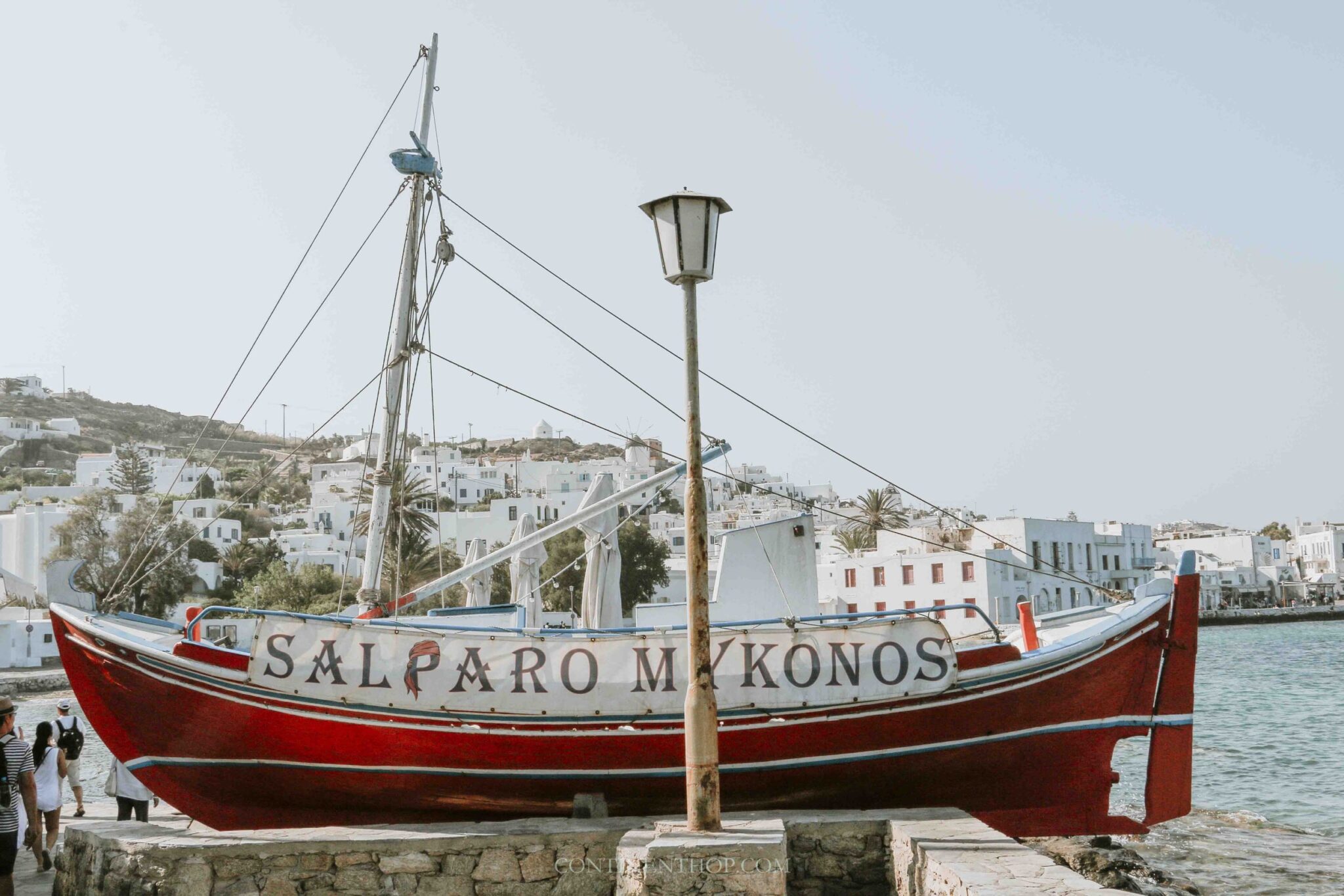

Crete
The average temperature in Crete in September: 29° C / 20° C
What is the weather in Crete in September? Crete is the hottest part of Greece in September, with hot and balmy evenings and sunny days. Expect a little rainfall, nothing that would disrupt any travel plans. The temperature of the sea is warm and inviting!
What to do in Crete in September? If you are looking for the best places to go in Europe in September for sun, Crete is your answer as it has something for everyone. Thalassophiles will have the time of their lives at Elafonisi Beach and the Baloos Lagoon, whereas trekking enthusiasts can hike through the stunning Samaria Gorge.
History buffs can visit the Palace of Knossos and the Archaeological Museum of Heraklion, which has a vast collection of artifacts from Crete’s rich history. Also on your list should be the Palace of Phaistos and the Arkadi Monastery. Don’t forget to indulge in the flavours of Cretan cuisine such as dakos (rusk salad), kalitsounia (cheese pies), and Cretan honey!
What to pack for Crete in September? You know you have to pack light when visiting one of the hottest places in Europe in September. Cool clothing is your friend as you explore Crete, with lots of sunscreen and swimwear.
Where to stay in Crete in September? When thinking of hot places to go in September Europe, you should never compromise on a comfortable stay to beat the heat!
The capital of Heraklion has many options to stay and also provides easy access to some famous attractions. The GDM Megaron is a luxury hotel located in a historic building near the Old Port of Heraklion and offers elegant rooms, a rooftop terrace with panoramic views, a swimming pool, a spa, and a fine dining restaurant.
Chania is another picturesque city on Crete’s northwest coast where you can plan a stay away from the bustling capital. The Casa Delfino Hotel & Spa is located in a 17th century Venetian mansion and has a courtyard, and a rooftop terrace offering panoramic views of the town.

Hottest Places in Europe in September – Turkey
Kaş
The average temperature in Kaş in September: 29° C / 23° C
What is the weather in Kas in September? Turkey is one of the list of hot countries in Europe in September and the weather of Kaş is a testimony to this, as one of the hot places in Europe September.
The climate of Kaş in September is pleasantly warm and a gentle breeze provides a cooling comfort. It is usually dry with little to no rainfall.
What to do in Kas in September? The beach is definitely on our mind when we plan a trip to any warmest place in Europe September, and Kaş is no exception. A perfect spot for sunbathing, swimming, and enjoying the beautiful coastal scenery is Kaputaş Beach.
I recommend taking the Kekova and Sunkey City Boat Tour from Kaş to visit the island of Kekova, where you can explore the ruins of the ancient Lycian city!
There are trails galore for hiking enthusiasts, be it the Lycian Way, a trail that stretches over 500 kilometres, or the Saklikent Gorge, a natural wonder. Also, visit the imposing Simena Castle and the Kaş Marina, a lively hub with numerous restaurants, cafes, and shops.
What to pack for Kaş in September? If you are visiting one of the best places to go in September for sun, a strong sunscreen, pair of shoes, and light breathable clothes are necessities. I would recommend avoiding wearing revealing clothes since Turkey is a conservative country.
Where to stay in Kaş in September? Kaş is known for its natural beauty and has many cozy accommodations for a stay. The Gumus Peninsula Hotel is a 3-star hotel featuring well-furnished accommodations with an outdoor swimming pool, a garden, and a terrace, along with English, Italian, and Continental food options.
The Molino Hotel is located close to many attractions and offers beautiful rooms with a balcony and garden view and also a terrace and a restaurant.
Antalya
The average temperature in Antalya in September: 29° C / 23° C
What is the weather in Antalya in September? Antalya can be counted in the list of hottest place in Europe September as the weather is quite warm and pleasant, transitioning from summer to autumn. It is quite sunny with short-lived rainfalls. The Mediterranean remains warm and is perfect for enjoying water activities.
What to do in Antalya in September? Even if it is one of the hottest places in Europe in September, Antalya has many things to do apart from the usual sea visits. Stroll through the charming streets of Old Town, also known as Kaleiçi, and admire the well-preserved Ottoman architecture and Hadrian’s Gate.
Discover the region’s rich history at the Antalya Museum and the ancient ruins of Perge and Termessos and the Aspendos Theatre with the Perge, Aspendos, Side and Waterfall (sightseeing) excursion, where you can also witness the beauty of Antalya’s many waterfalls.
Take a cable car to Tahtali Mountain to enjoy panoramic vistas of the Mediterranean coastline. Or if you simply want a calming swim and soak up the sun, head to the Konyaalti and Lara beaches. Interested in shopping? Head to the MarkAntalya!
What to pack for Antalya in September? I know you may be tired of hearing this, but light and breathable clothing such as t-shirts, shorts, skirts, and dresses are a good option. Try going for natural fabrics such as cotton and linen. Don’t forget to pack your swimsuit and a high SPF sunscreen and a scarf or cap to cover up when needed.
Where to stay in Antalya in September? My choice would be to stay in either in Kaleiçi or, if you are a gold enthusiast, Belek.
In Kaleiçi, the Adalya Port Hotel is overlooking the Old Harbour and is housed in a traditional building but with modern amenities. You can relish various traditional and international dishes on the rooftop Panorama restaurant and bar, with views of the marina and the Mediterranean.
Golf enthusiasts heading to Belek can stay at the Xanadu Resort Hotel, located on the seafront, which offers a huge private beach and a sun pier with loungers! The hotel also has an amphitheater and provides numerous indoor and outdoor facilities.

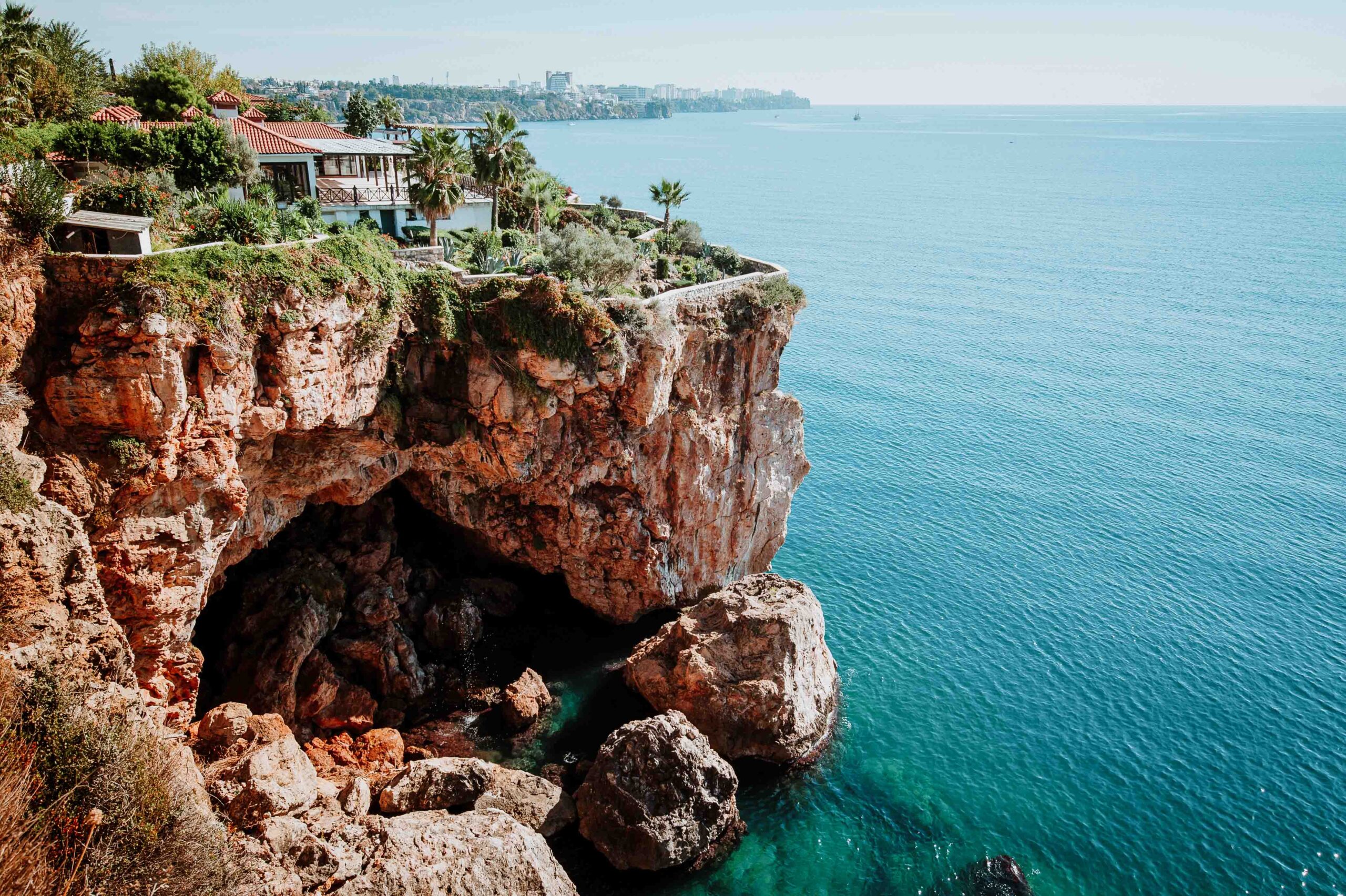
Hottest Places in Europe in September – Portugal
Algarve Coast
The average temperature of the Algarve Coast in September: 26° C / 19° C
What is the weather on the Algarve Coast in September? Portugal has the best weather in Europe in September and the Algarve Coast mimics this. September is the beginning of Autumn on the Algarve Coast with hot sunny days and cool evenings along with occasional spells of rain.
What to do on the Algarve Coast in September? If you are planning for a relaxing vacation by the beach, Portugal’s beaches are legendary. Spend your days soaking in the sun and enjoying crystal-clear waters at popular spots like Praia da Marinha, Praia da Falésia, or Praia da Rocha.
Embark on this Benagil Caves Kayaking Experience to the famous Benagil Cave and discover the natural beauty of Ria Formosa natural park.
Wander around the historic town of Lagos and its charming Old town, gaze upon the majestic Ponda de Piedade cliffs, and discover the maritime history of the region at the Lagos Marina. If you want to experience Portugal’s nightlife, head to Alvora, a fishing village, and a resort town.
What to pack for the Algarve Coast in September? The perfect weather along the Algarve Coast makes it the best place to go in September for sun and all you need to pack are light clothes and swimwear. But do also carry a jacket for a slightly chilly evening along with a raincoat to protect against occasional showers.
Where to stay on the Algarve Coast in September? Many beautiful cities are scattered all along the Algarve coast and I would recommend you stay either in Faro or Lagos.
Faro is the capital of the Algarve region and is a transportation hub with its international airport.
3HB Faro is a modern and stylish hotel situated near the Ria Formosa Natural Park and just a short drive from Faro Airport and offers a convenient base for exploring the Algarve region with contemporary rooms and suites that are tastefully decorated.
In Lagos, the Lagos Atlantic Hotel is a 4-star property with airconditioned rooms located just meters away from the beach and has an outdoor swimming pool, a garden, and a bar.
Hot countries in Europe in September – Spain
Andalucia
The average temperature of Andalucia in September: 29° C / 20° C
What is the weather in Andalucia in September? September signifies the advent of autumn in Spain and it is among the hot countries in Europe in September. The beginning of the month is typically sunny and hot. There may be occasional thunderstorms, but they are rare and the coastline may get a little humid.
What to do in Andalucia in September? Those looking for the best places to go in September for sun in Andalucia should head to the Costa del Sol and enjoy beautiful beaches including Marbella, Fuengirola, and Torremolinos.
The charming capital of Seville is a sight for sore eyes as you explore the magnificent Seville Cathedral, the Real Alcázar, and the Plaza de España, the lively neighborhood of Triana, and take a boat ride along the Guadalquivir River. Don’t forget to enjoy a traditional Flamenco show in Seville.
Also visit the historic city of Córdoba, known for its magnificent Mezquita and the Alhambra palace complex in Granada.
If you enjoy hiking, head to the Sierra Nevada National Park near Granada or see the unique white villages scattered across the region. Do indulge in Andalusian cuisine,like gazpacho, fried fish (pescaíto frito), salmorejo, and tapas.
What to pack for Andalucia in September? For Andalucía in September, pack lightweight and breathable clothing, and don’t forget to bring a hat, sunglasses, and sunscreen for the sunny days. Comfortable walking shoes are essential. A light jacket or sweater may be needed for cooler evenings and, of course, swimwear for beach visits.
Where to stay in Andalucia in September? The capital city of Seville boasts a range of accommodations. Located in the heart of the city, Hotel Casa 1800 Sevilla offers stylish rooms, a rooftop terrace with panoramic views, and modern decor.
Those interested in a luxurious getaway in the countryside can head to Marbella, where the Villa Padierna Palace Hotel, nestled in the hills, offers opulent rooms, beautiful gardens, and beautiful views of the Mediterranean.
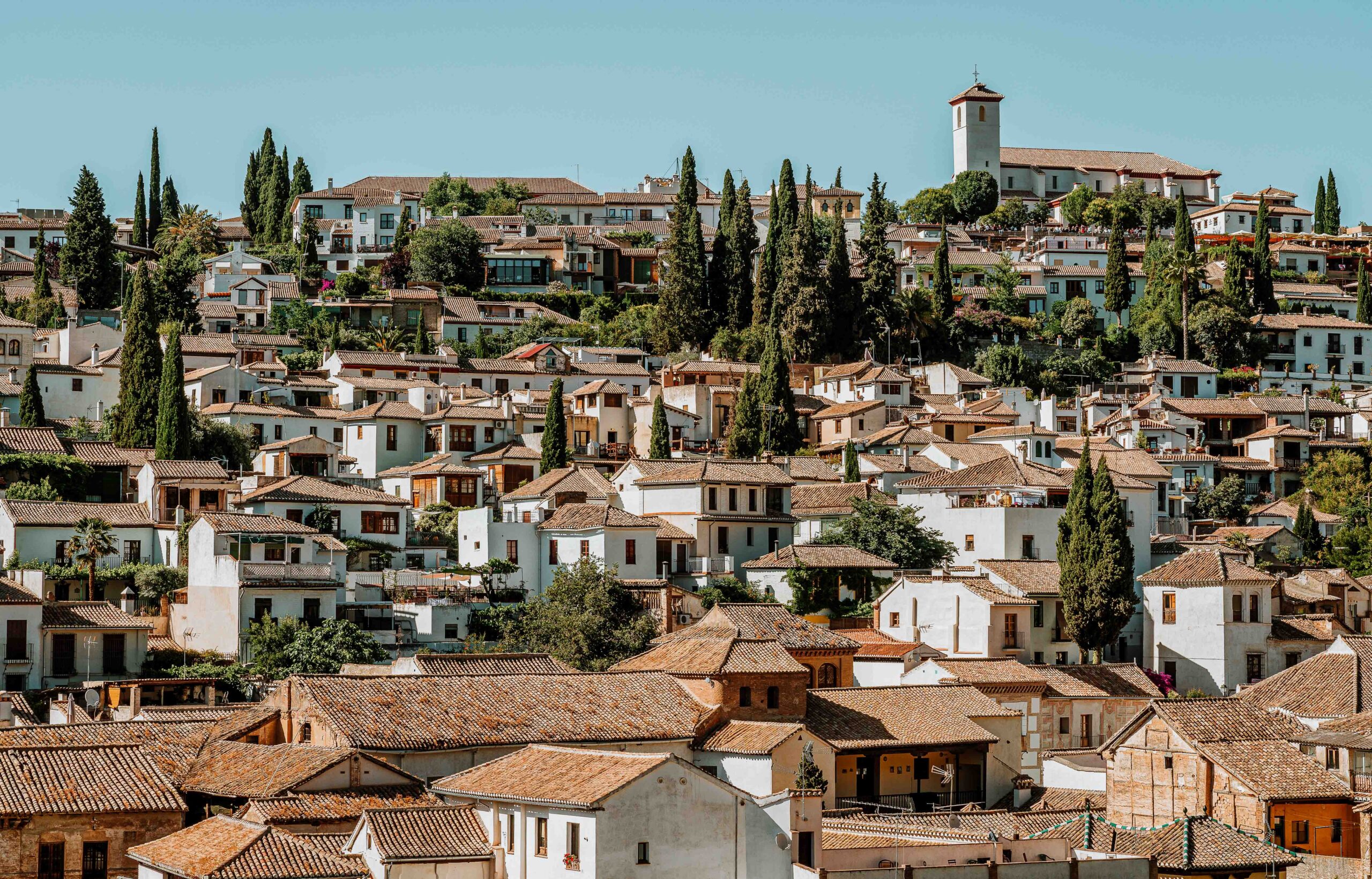
Hot countries in Europe in September – Croatia
The average temperature of Croatia in September: 26° C / 19° C
What is the weather of Croatia in September? Croatia counts in the list of hot countries in Europe in September, so the weather is generally mild and pleasant, with mostly sunny and warm days and cool nights. You may encounter some cloudy days and rainfall.
What to do in Croatia in September? Visit the stunning city of Dubrovnik, which was King’s Landing in the epic TV show ‘Game of Thrones’. Explore the shooting locations in the Ultimate Game of Thrones Tour and transport yourself to the reign of Queen Sansa(if you liked the ending)! September is also a month of festivals and you should not miss the Manikin International Festival and the World Theatre Festival in Zagreb
Discover the enchanting Plitvice Lake National Park and enjoy its lush greenery and see the historic city of Split. Croatia’s coastline is dotted with mesmerizing islands such as Hvar, Vis, Brac, and Korcula which deserve a visit.
The Istrian region is a gem where you can explore charming coastal towns like Rovinj and Pula and enjoy a swim in the Adriatic.
What to pack for Croatia in September? Bring lightweight and breathable clothing for warm days, but also include a light jacket or sweater for cooler evenings along with swimwear and raincoat for rainy days.
Where to stay in Croatia in September? The capital of Zagreb has fantastic options for a stay such as the Esplanade Zagreb Hotel, which was opened in 1925 as a refuge for passengers from the Orient Express! The hotel provides elegant rooms, excellent service, and a range of amenities.
If you want to stay closer to the sea, the Dubrovnik Palace Hotel is situated on the Lapad Peninsula and offers stunning views of the Adriatic Sea, with modern rooms and a beachfront location.
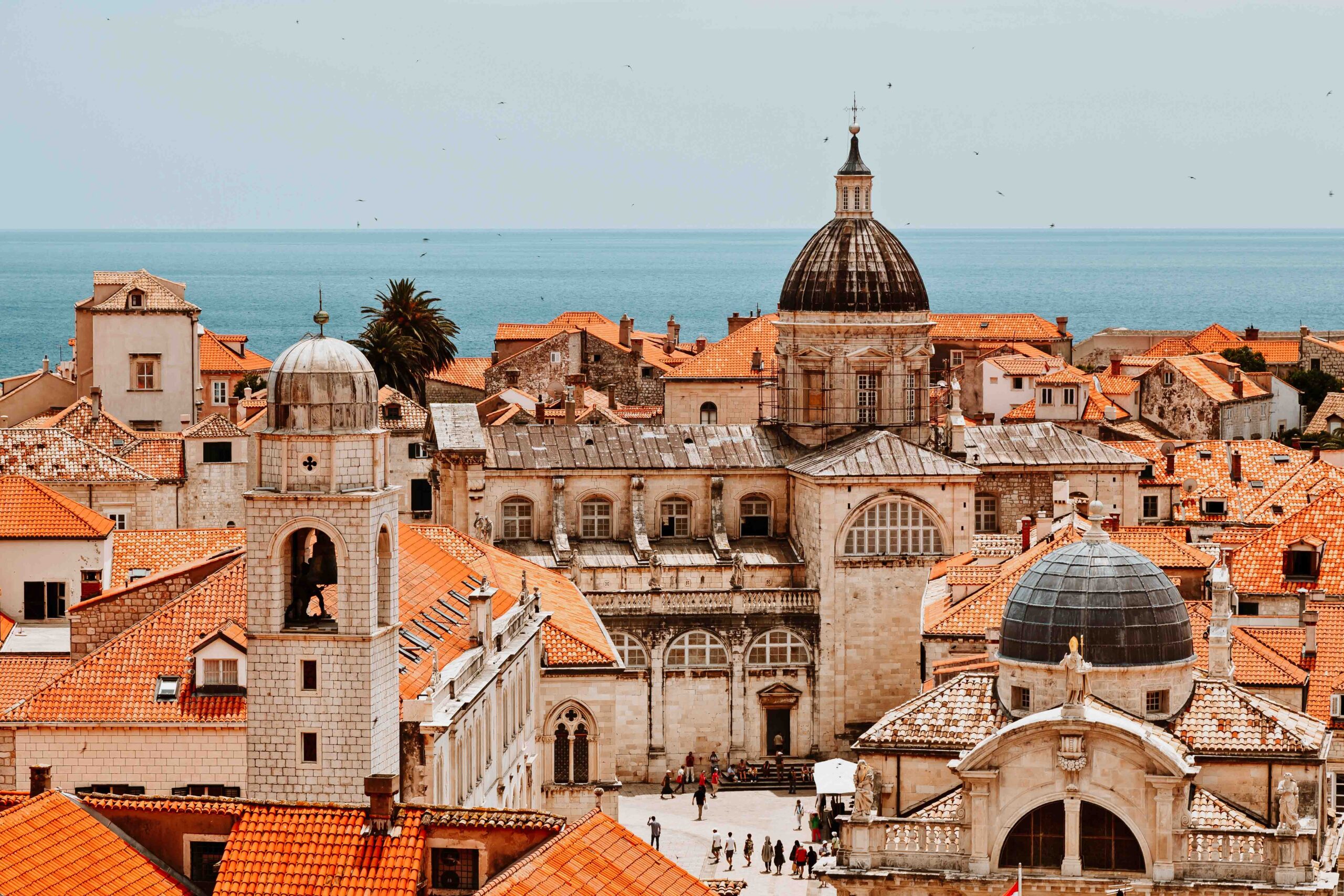
Hottest Places in Europe in September – Albania
Albanian Riviera
The average temperature of Albania Riviera in September: 32° C / 15° C
What is the weather on the Albanian Riviera in September? With comfortable temperatures including warm, humid, and sunny days and cool nights, the Albanian Riviera is among the best places to go in September for sun. Although it may rain significantly for a few days in September.
What to do on the Albanian Riviera in September? The Albanian Riviera is one the hidden gems of Europe and is a beautiful coastal region with many pearls which you can visit from Tirana, the capital, through this Tour of Albanian Riviera: Vlora, Dhermi, Himara, Saranda, and Ksamil in 3 Days where all the hassles of planning and booking will fly away!
Here you can swim, sunbathe, and indulge in water activities like snorkelling or kayaking and see sights such as the Blue Eye Spring and the Butrint Archeological Park.
You can visit these pearls on the coastline Embark on a hiking adventure at the Llogara National Park, through which Julius Caesar traversed, and try delicious Albanian cuisines like Tavë Kosi (baked lamb with yogurt) and Fërgesë (a cheese and meat dish).
What to pack for the Albanian Riviera in September? As Albania counts among the hot countries in Europe in September, pack lightweight and breathable clothing suitable for warm weather, a light jacket for cooler evenings, and a raincoat for the unexpected rainfall, along with swimwear and comfortable shoes.
Where to stay on the Albanian Riviera in September? My choices would be to stay in the coastal town of Saranda or Dhermi. In Saranda, the Demi Hotel has a beautiful restaurant and private beach area with air-conditioned rooms and a balcony with sea views.
In Dhermi, the Blue Boutique Hotel is located on an elevated position and is just 600 meters from the beach, featuring an on-site restaurant and bar with comfortable rooms.
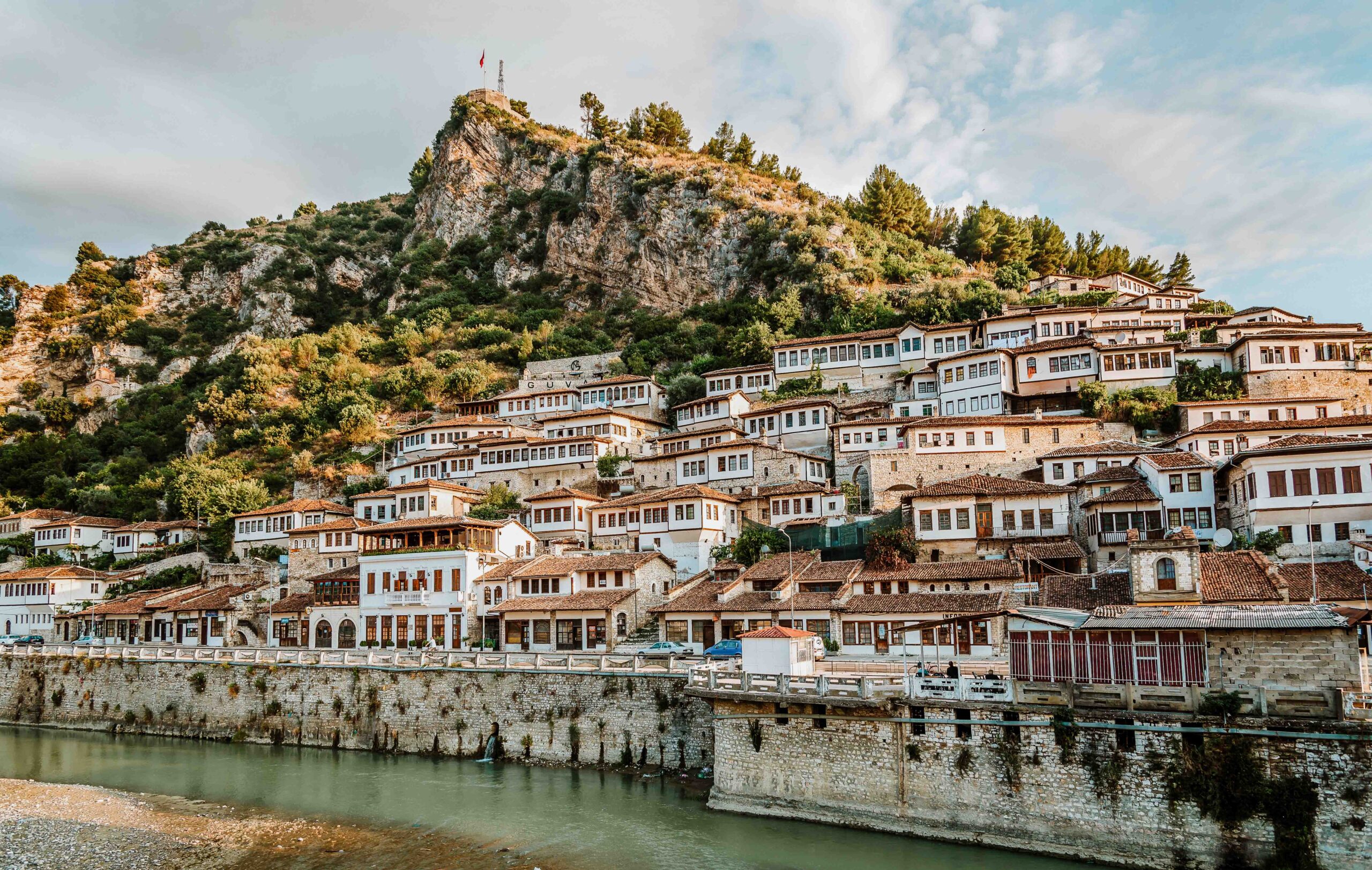
Best places to go in September for sun – Morocco
Marrakech
The average temperature in Marrakech in September: 33° C / 19° C
What is the weather in Marrakech in September? Morocco is among the hot countries in Europe in September and Marrakech is also one of the hottest place in Europe in winter due to the desert climate. So you can expect lots of warmth and sunshine.
What to do in Marrakech in September? If you are craving some sunlight in September, head to Marrakech as it is one of the best places to go in September for sun and there are lots of things to do!
EDM lovers must visit the Oasis Festival and if you want a pick into the region’s culture, then don’t miss the Bride’s Festival in the Atlas Mountains.
Do some haggling at the Marrakech Souks and take some rest at the Le Jardin Secret, a hidden oasis in the city. Learn more about the city’s history at one of the museums including the Yves Saint Laurent and the Dar el Bacha museum.
Stop for a photo session at the Jardin Majorelle and witness the beautiful architecture of the Ben Youssef Madrasa and enjoy the nightlife at the Jemma al Fna Square.
What to pack for Marrakech in September? If you are traveling to one of the hot countries in Europe in September like Morocco, it is advisable to bring linen and cotton clothes for the daytime and a jacket during the evenings as it can get a little cool.
As Morocco is a Muslim country, It would be best to cover up as much as possible although Morocco is quite liberal. Hats and sunglasses would also be helpful during the day.
Where to stay in Marrakech in September? The Medina of Marrakech is part of the Old City and is one of the best places to live in. The Riad Al Rimal is a beautiful hotel located in Medina and has a rooftop terrace with a hot tub, a pool, and a hammam.
The Riad Soundouss is another highly-rated property with authentic Moroccan furniture decorated with mosaics, ceilings, and traditional artifacts, and modern air-conditioned rooms.
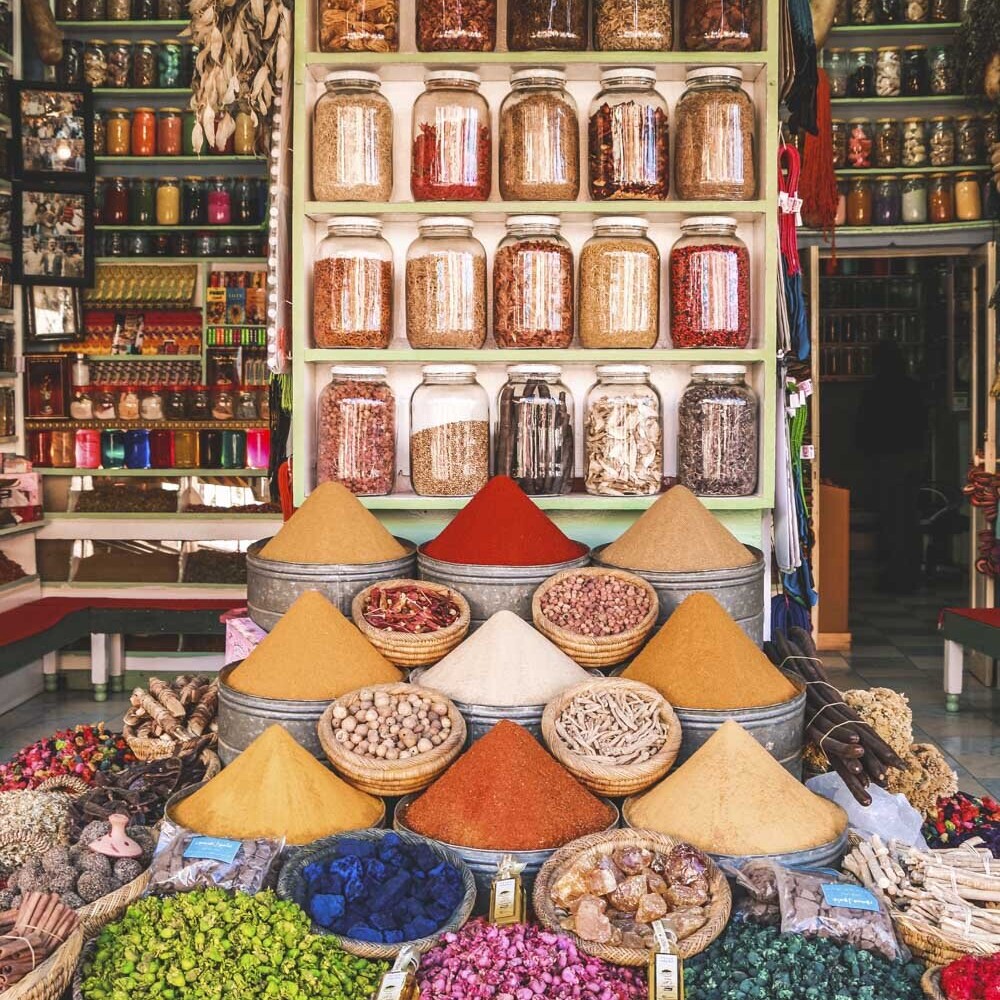
Swimming or sunbathing? Walking tours or a hiking adventure? Museums or Marinas? What are you choosing for your travel in Europe in September?
Be it the popular Spanish destinations or off-the-beaten path Maltese beaches, wherever you go, these hottest places in Europe in September will make for a memorable vacation.
Best places to go in September for sun – FAQ’s
Where in Europe is hot in September?
Apart from the choices I have provided above, Malta, Crete, and Sardinia also count among the hot countries in Europe in September, with warm days and lots of sunshine.
Where is the hottest place to visit in September?
If you are looking for hot countries in Europe in September, you should visit either Greece, Portugal, Spain, or Italy, particularly Sardinia and Sicily. Apart from these, Cairo in Egypt and Bangkok can also get pretty hot in September.
Is September a good time to visit Europe?
If you are looking for the best places to go in September for sun, Europe has the maximum options as, throughout the continent, the days are sunny and warm and the temperature of the sea is also just perfect for a swim!
Is Italy hot in September?
Yes, Italy is one of the hottest places in Europe in September and is a great time to visit the country. Particularly famous during September are the cities of Rome and Venice or the regions of Sicily and the island of Sardinia.

Award-winning Analyst, multi-nominated digital content creator and photographer Lavina Dsouza's words capture stories about culture and tradition mainly through its food and people. She has written and contributed to publications such as The Washington Post, Lonely Planet and Matador Network, to name a few. She is the editor of UntraditionalHumans.com, a non-profit created to share inspiring stories from women of colour who break free from traditions and choose happiness.
She's also a speaker passionate about DEI and champions solo travel. She has collaborated with numerous renowned brands such as Intrepid Travel, TripAdvisor, Travel and Leisure and Adobe, to name a few.
She can be found on Twitter and Instagram.
PIN FOR LATER!
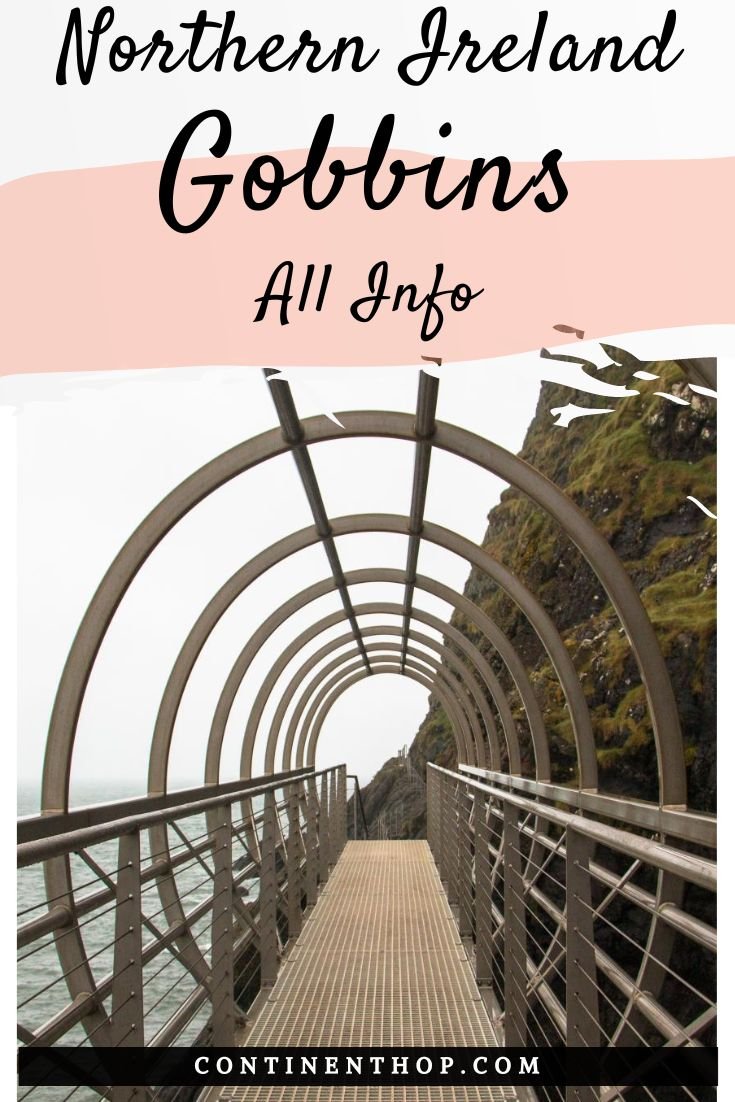

EXPLORE MORE OF EUROPE
Some of the links on this post are affiliate links. These do not cost you extra to use, but will help provide Continent Hop with a small commission if/when you purchase through them, to recover some of the costs of running this website and providing free content to help you plan your travel. I appreciate your support!
Where's Hot in April in Europe? 20 Warm Places to Visit in April (2024)
Here are some of the best warmest places in Europe in April because everybody craves some sun and probably, the beach after cold winters. These hottest places in Europe in April are a must for sun-worshippers and you’ll find lots of recs on what to do and see at each place!
April signals the advent of spring in Europe and brings with it temperatures which are neither too hot nor too cold where you can explore the continent when it is at the peak of its beauty.
Additionally, April is the best time to visit Europe as it is just prior to the summer season which attracts huge crowds.
You can visit some of the best European destinations in April unperturbed by crowds and with warm weather throughout which offers you better options for stays and sightseeing but at comparatively lower prices.
You can experience the charm of some of the warmest places in Europe in April right from the less-explored places such as the island of Gozo in Malta, Gibraltar & Cyprus to the more traditional destinations such as Italy, France, Spain, Turkey, Croatia, Portugal, & Greece.
20 Warmest Places in Europe in April
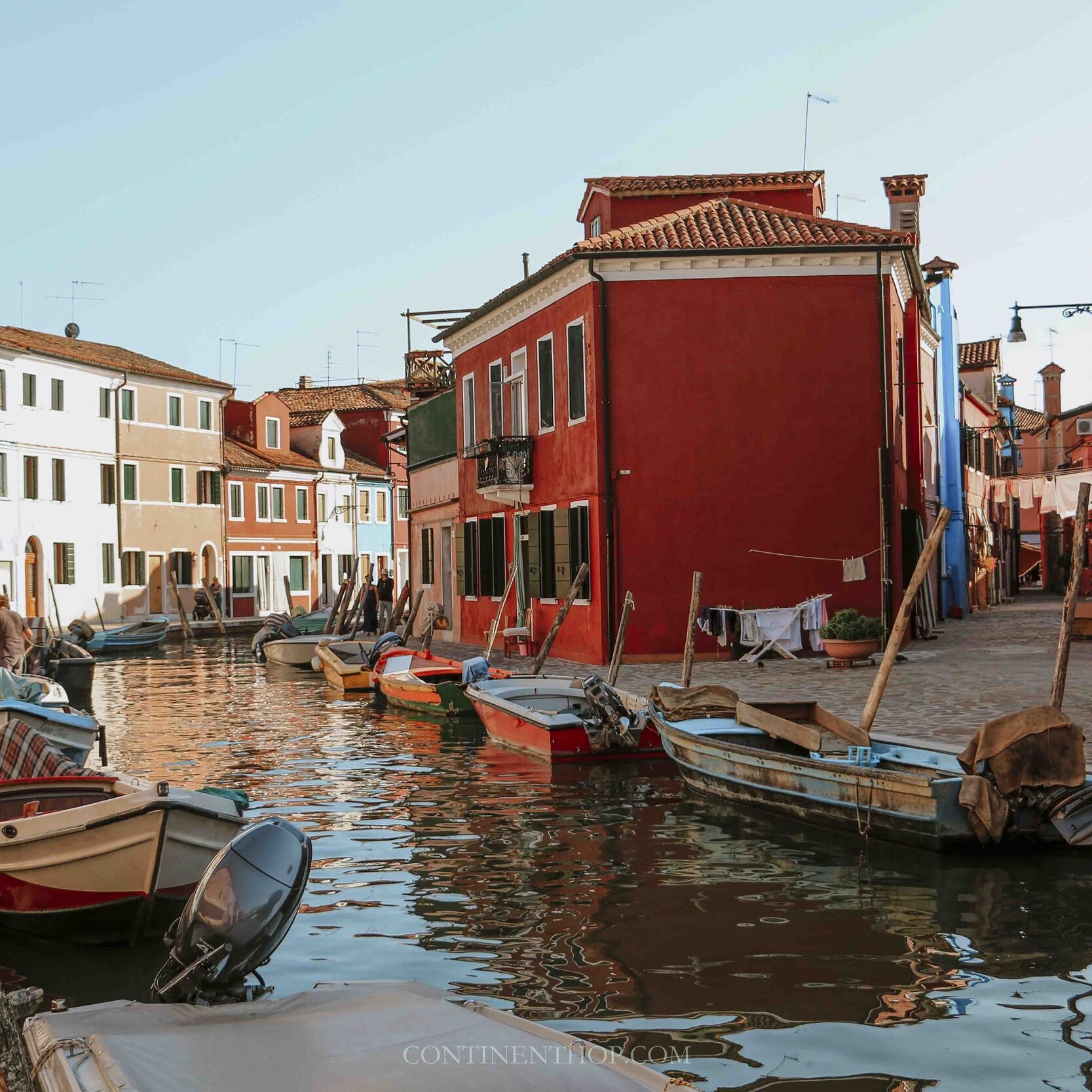
What’s The Hottest Place in Europe in April?
1. Cyprus
Average temperature: 25° / 15°
Average Sea Temperature: 20º / 16º
Average Daily Sunshine: 9 Hours
What is the weather in Cyprus in April? Cyprus is one of the hottest places in April in Europe, with the advent of Spring. Nights may get a little chilly. You can also expect little rainfall over a period of 4-5 days.
What to do in Cyprus in April? With mild temperatures, it’s the perfect time to bask in the sun’s embrace on one of the serene beaches in Cyprus and take a refreshing dip.
For those seeking a more invigorating experience, the Troodos Mountains provide the ultimate challenge. Explore awe-inspiring historical sites such as the Pafos Mosaics, the Tombs of the Kings, and the ancient city of Kourion.
Next, head to the Kato Pafos Archaeological Park, where history comes alive with ancient buildings, including a Roman Odeon, Roman baths, and a Byzantine basilica.
What to pack for Cyprus in April? If you are wondering where it’s hot in April in Europe, Cyprus is the most prominent answer.
Therefore, make sure that you pack adequate light breathable clothes such as t-shirts and shorts, along with swimwear to swim your tiredness away.
Where to stay in Cyprus in April? The five-star Elysium Hotel located in Paphos is located right on the beachfront and offers breathtaking sunset views of the Mediterranean.
The Saunders Holiday Home, located around 1 km from the beachfront and features a beautiful garden, is also a good option for a stay.
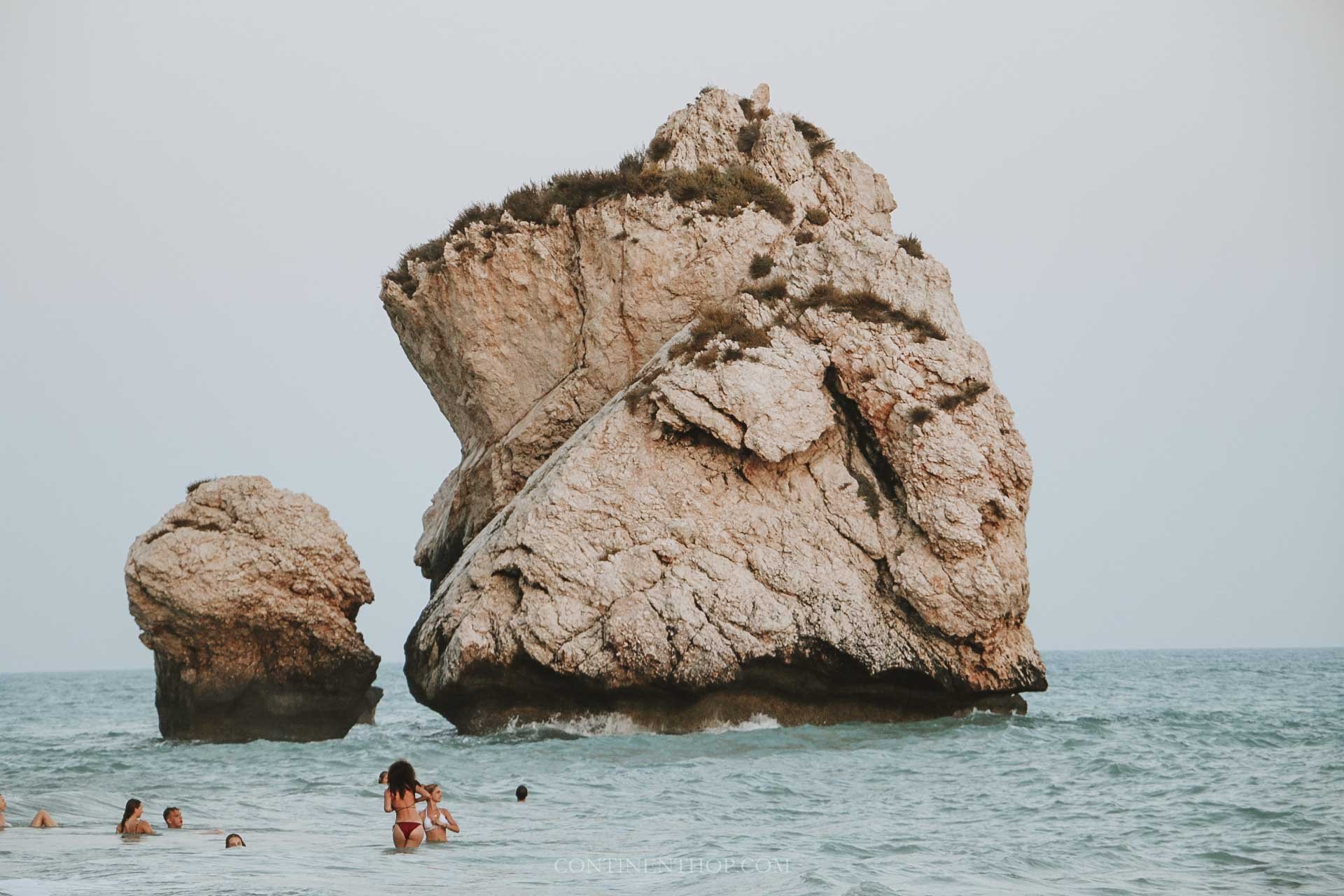
Warmest Places In Italy In April
2. Amalfi Coast, Italy
Average temperature:19° / 15°
Average Sea Temperature: 20º / 16º
Average Daily Sunshine: 6 Hours
What is the weather on the Amalfi Coast in April? For all beach enthusiasts, Amalfi Coast is the best European destination in April due to its warm weather in April.
Maximum afternoon temperatures can be around 18°, making it the perfect time to explore outdoors. Do expect mild occasional rain showers.
What are the things to do on the Amalfi Coast in April? A guided tour of the nearby ruins of Pompeii, which were destroyed by a volcanic eruption from Mount Vesuvius in AD 79, is a must for your itinerary.
Take a sip of fine Italian wines at the very bottom of the Mountain and explore the wineries around.
Take a boat ride to the beautiful coastal towns of Positano, Amalfi, Sorrento, and Ravello, which offer great options for hiking and exploring nature.
What to pack for the Amalfi Coast in April? Since Amalfi Coast is one of the hottest places in Europe in April, carry light clothes and beach apparel for sunbathing and swimming.
The long walks and hikes would also require comfortable shoes, a jacket, and an umbrella, just in case the rain decides to wash away your plans!
Where to stay on the Amalfi Coast in April? Positano and Amalfi are the most sought-after spots for a stay on the coast.
Il San Pietro di Positano is one of the best hotels located in Positano with elegantly furnished rooms with terrace and sea views and gourmet food from a Michelin-starred restaurant.
In Amalfi, Hotel Santa Catarina is an Art Nouveau villa built on a rock overlooking the sea and offers stunning views of the entire coastline.
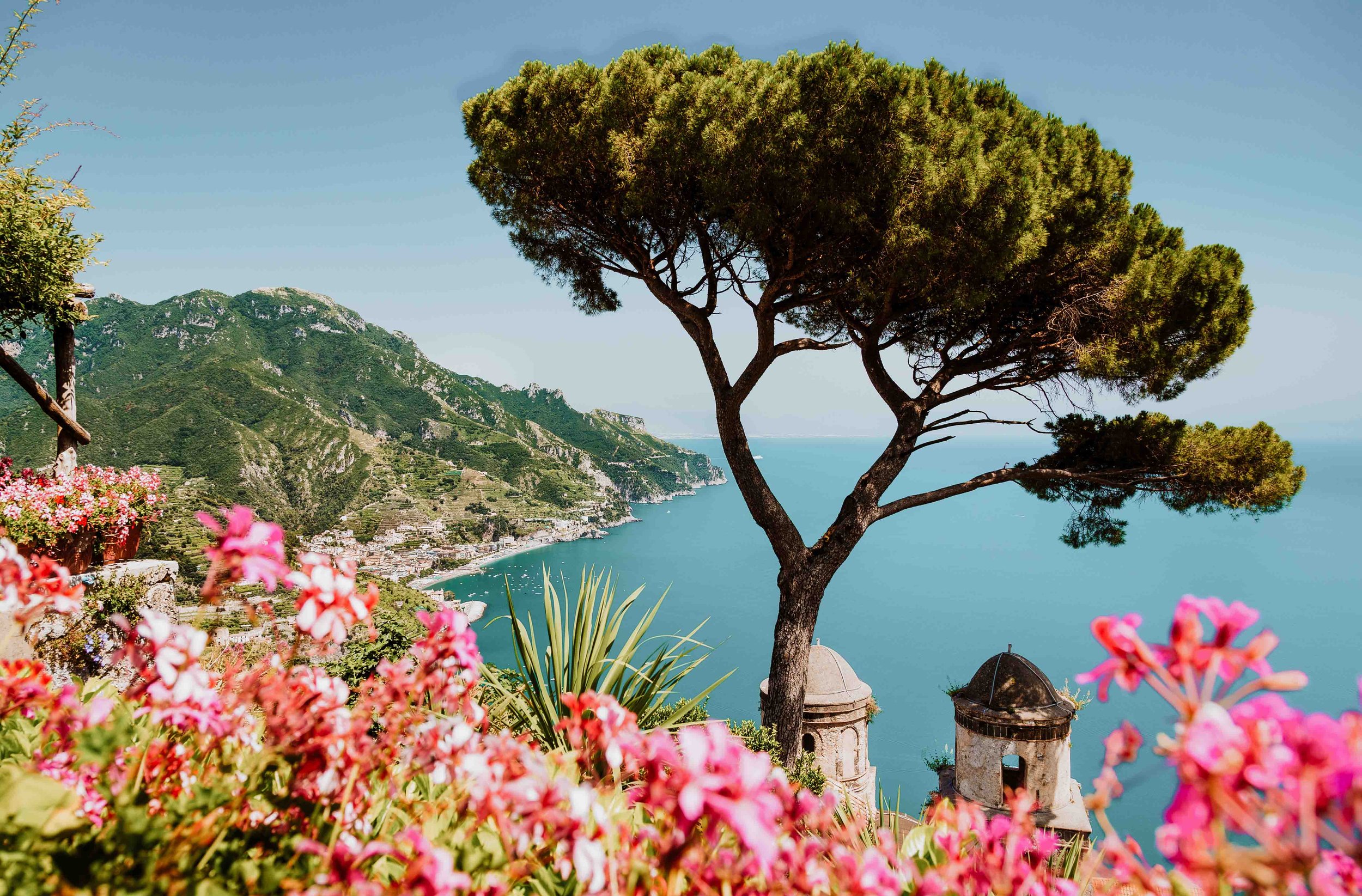
3. Rome, Italy
Average temperature:19° / 9°
Average Sea Temperature: 17º / 14º
Average Daily Sunshine: 8 Hours
What is the weather in Rome in April? With spring slowly settling in, one of the warmest places in Europe in April, Rome offers warm weather in Europe in April with sunny days and chilly nights.
However, April is also the rainiest month in the Italian capital and you can expect some showers, albeit not too intense.
What to do in Rome in April? One of the earliest birthplaces of modern civilisation and the Catholic church, Rome offers spending architectural marvels such as the Colosseum and St. Peter’s Basilica, one of Christianity’s holiest sites.
Mesmerize yourself with the guided tour of the Sistine Chapel and the Vatican, which contain detailed paintings and frescos depicting the Renaissance period.
For those seeking a spookier vibe, walk through the Roman catacombs, which are immense underground cemeteries.
Do not miss the chance to visit the Roman Forum and the Palatine Hill, which were once the centre of public life for everyday Romans.
What to pack for Rome in April? A jacket to protect you from chilly evenings and a poncho to protect you from showers are all you need to explore the city’s beauty.
Where to stay in Rome in April? For those looking for a stay in luxury, Umilta 36 is a grand hotel located in the centre of Rome offering faster connectivity to all major spots.
If you would prefer a budget stay, Olimpia is a prime air-conditioned apartment in the central area of Rome.
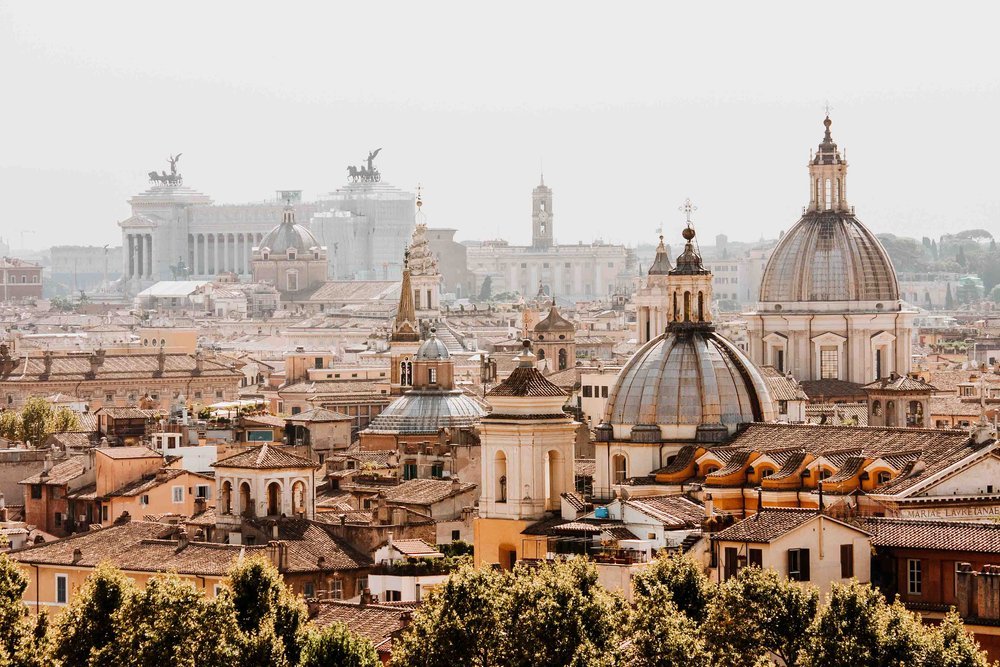
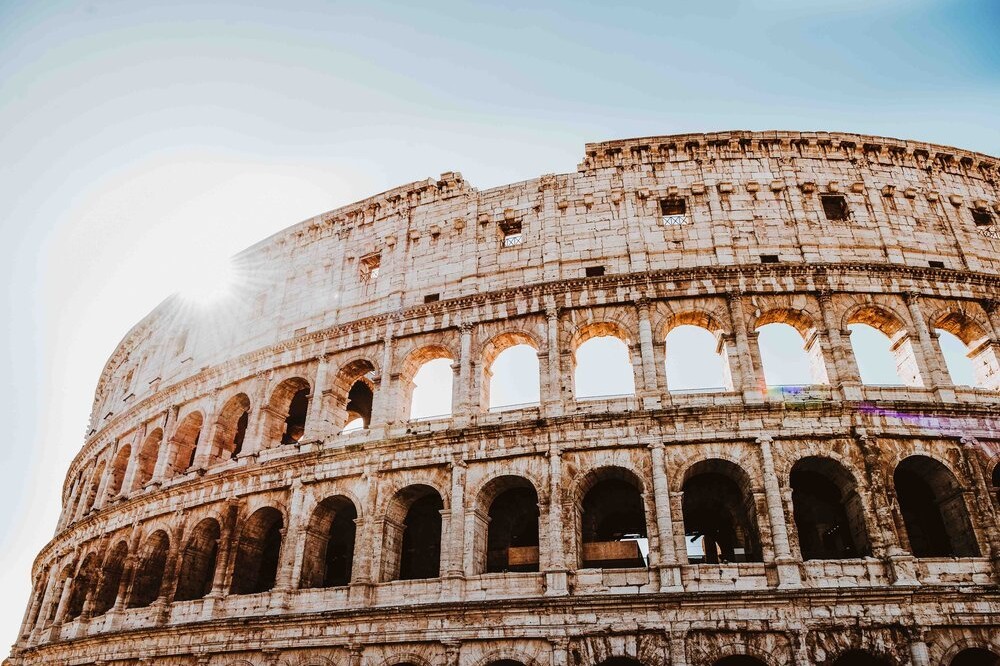
4. Sicily, Italy
Average temperature: 20° / 11°
Average Sea Temperature: 17º / 15º
Average Daily Sunshine: 7 Hours
What is the weather in Sicily in April?
Sicily is the largest island in Italy, and all throughout April, it enjoys a mild Mediterranean climate with warm days and cooler evenings. It’s the first month when it really starts to feel more like summer, and there’s way less rain and cloudy days.
You might encounter occasional rain showers, but they are usually very brief.
What to do in Sicily in April?
Some of the best places to visit in Sicily center around the island’s rich history and vibrant culture. You can visit the Valley of Temples in Agrigento, wander the streets and local markets of Palermo, or hike up to the summit of Mount Etna.
Another famous place to visit is the hilltop town of Taormina. From here, you can see an ancient Greek theatre that overlooks a stunning view of the Ionian Sea.
What to pack for Sicily in April?
While the days are warm, evenings can be cool, so it’s wise to pack layers. Include comfortable walking shoes for exploring archaeological sites and rural landscapes.
Sunscreen and a hat are also must-haves for the sunny days in April.
Where to stay in Sicily in April?
Sicily is a massive Island, so it’s important that you choose the right place to stay, which is different depending on the purpose of your trip.
Palermo is the best spot for people wanting to relax on the best beaches in Sicily. There’s a great boutique hotel right on the port called Hotel Trinacria.
However, if you want more of a big city vibe, then Le Suites Del Duomo House in Catania is awesome, and people planning to see as many archaeological sites as possible should consider staying at Hotel Exclusive in Agrigento.
5. Venice, Italy
Average temperature: 18° / 7°
Average Sea Temperature: 16º / 10º
Average Daily Sunshine: 8 Hours
What is the weather in Venice in April? Venice is one of the best places to go in Europe in April due to its sub-tropical climate offering a perfect blend of warm days and mild and slightly rainy evenings.
What to do in Venice in April? Stroll through the historic streets and along the winding canals, marvelling at the timeless beauty of St. Mark’s Square, the iconic St. Mark’s Basilica,and the palace of the Doge.
Take a romantic gondola ride through the Grand Canal and experience the city from a different perspective.
Discover what the vibrant neighbourhoods of Dorsoduro, Castello and Cannaregio have to offer.
Take a day trip to Murano, Burano, and Torcello, known for their glassblowing and lace-making traditions.
What to pack for Venice in April? Venice is a city best explored on foot, so a pair of comfortable waterproof walking shoes and light breathable clothes are needed.
I recommend a light jacket for unexpected chilly evenings along with an umbrella so that the light showers do not dampen your evenings!
Where to stay in Venice in April? For modest travellers, the B&B Corte Campana is the perfect option as it is less than a kilometre away from the St. Marks Basilica, the Doge Palace and the Piazza San Marco.
The Mocenigo Grand Canal Luxury Suites is the choice of luxury, with a fully equipped kitchenette with a dining area, a fridge and a microwave and a distance of just 500 meters from the city centre.
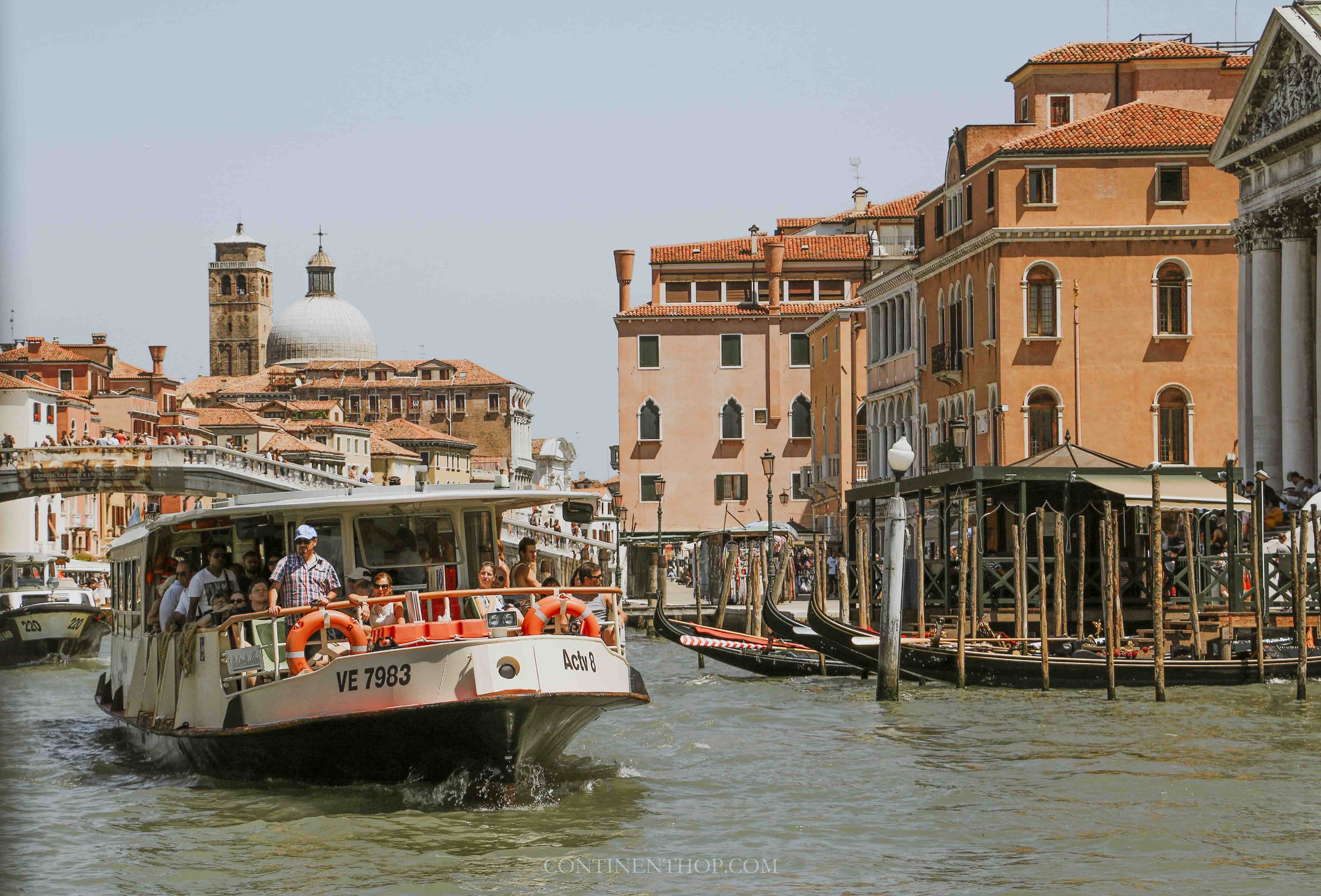
Warmest Places in Portugal in April
6. The Algarve, Portugal
Average temperature: 18° / 7°
Average Sea Temperature:18° / 14° C
Average Daily Sunshine: 9 Hours
What is the weather in The Algarve in April?
The Algarve is the entire south coast of Portugal. It’s about 150 kilometers wide and stretches 50 kilometers north of the ocean. The main city here is Faro. In April, the weather is much less rainy than in March, and it starts to feel more like summer without the intense heat!
What to do in The Algarve in April?
The best places to visit in The Algarve are the beaches. Some of the most well-known beaches are Praia do Camilo, Praia de Dona Ana, and Albufeira Beach.
The most famous thing to do at any time of the year is take a boat tour to Benagil Cave. If you’re able to come in early April, you can still beat most of the summer crowds!
What to pack for The Algarve in April?
Your packing list should include plenty of gear for warm weather and long beach days. For me, this looks like a couple of swimsuits, sunhat, and sandals.
I also like to bring a couple of cute outfits to wear for photos along the scenic coastline!
Where to stay in The Algarve in April?
Main Street Apartments is one of the most comfortable places to stay in Faro. It’s close enough to the city center to walk to bakeries, shops, and nightlife but far enough to avoid traffic when you’re taking day trips to other destinations in the area!
They offer fully furnished apartments with a great view of the city and a sofa bed in case you’re traveling with friends or a family.
7. Madeira, Portugal
Average temperature:13° / 7°
Average Sea Temperature: 19° / 17° C
Average Daily Sunshine: 6 Hours
What is the weather in Madeira in April? Madeira has warm weather in April in Europe with pleasant and sunny days, though it may get cold when the sun sets. You may experience little rainfall, but not such much so as to wash away your plans!
What to do in Madeira in April? For hiking enthusiasts, hike through the highest points of the island such as the Pico do Arieiro to the Pico Ruivo and soak in the sights of the mesmerizing sunrise.
Adrenaline junkies, prepare yourself to take a walk over the Cabo Girao skywalk, the highest cliff skywalk in Europe! Take a comfortable tour in a catamaran for a session of whale and dolphin watching.
April is the perfect time to witness the island’s rich floriculture in full bloom. So make sure you add Jardim Botanico da Madeira to your itinerary.
What to pack for Madeira in April? A little umbrella and a raincoat are necessities. Additionally, pack layers if you plan to spend a lot of time outside, especially in the evenings.
Where to stay in Madeira in April? Funchal, the pristine capital city of Madeira, is the perfect base for your trip and offers a wide variety of stay options.
Football aficionados would be excited to stay at the Pestana CR7 Funchal, a hotel which has a partnership with legendary footballer Cristiano Ronaldo!
The Enotel Magnolia is also a highly-rated hotel located near the centre of Funchal and offers beautiful rooms.
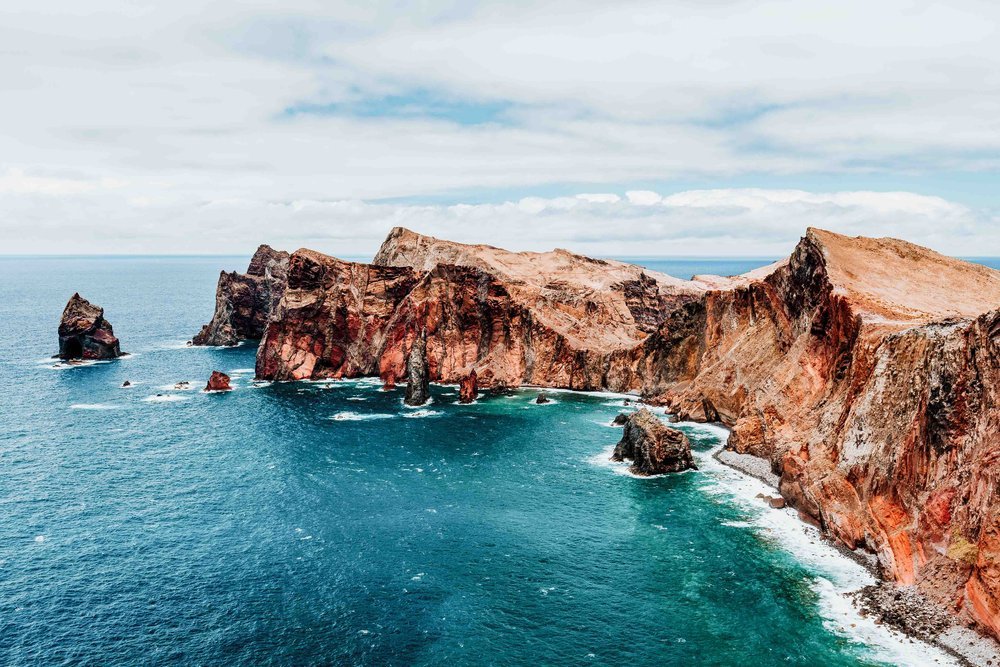
Warmest Places In Greece In April
8. Kos, Greece
Average temperature: 20° / 13°
Average Sea Temperature: 19° / 15° C
Average Daily Sunshine: 9 Hours
What is the weather in Kos in April? April is a shoulder month in Kos, falling just in between winter and the summer making it one of the underrated warmest places in Europe in April.
Therefore, the climate is pretty mild, with the beginning of the month cooler than the end. The seas are just about perfect.
What to do in Kos in April? With its turquoise waters and golden sand, the beaches of Kos are a true paradise. Head to Psalidi, Kefalos or Lambi for a perfect day at the beach.
Take a boat tour to the Volcanic Island of Nisyros and stroll through its stunning lunar landscape.
Discover the ancient spots of Kos, such as the famous Asklepieion, the Roman Odeon, and the medieval castle of Kos. Read everything you need to know about April in Greece.
In fact, almost all of the Greek Islands are pretty warm in April, including Crete, Mykonos, Paros, and Naxos.
What to pack for Kos in April? Since the climate is mild, you need to pack light but do carry a jacket for the chill when the sun sets.
Where to stay in Kos in April? The Blue Lagoon City Hotel is located right in the city centre and around 200 meters from the port, with elegant rooms.
Villa Georgios offers beautiful apartments just off the bay and features many taverns and bars at budget-friendly rates.
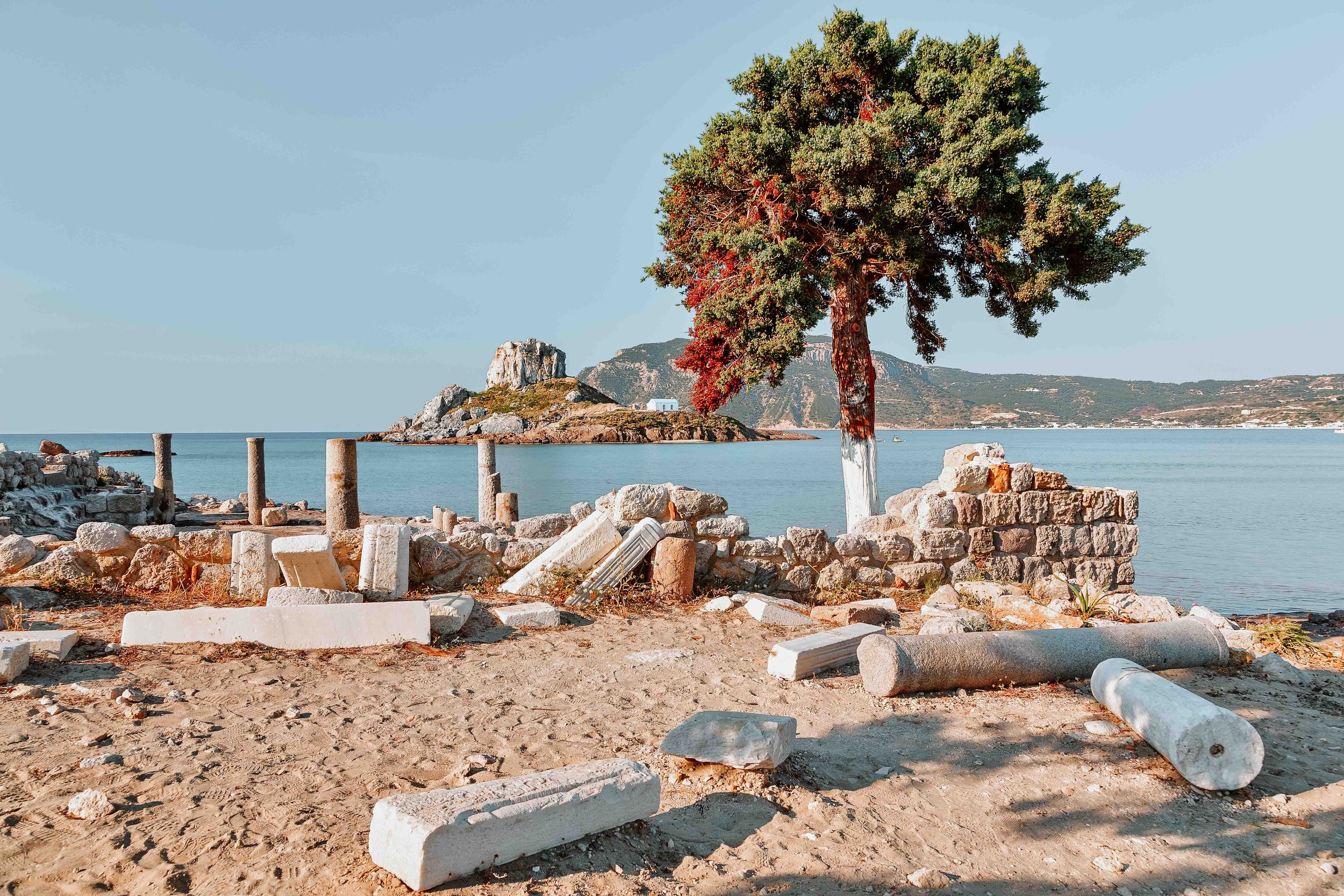
9. Athens, Greece
Average temperature: 20° / 12°
Average Sea Temperature: 17° / 14° C
Average Daily Sunshine: 8 Hours
What is the weather like in Athens in April? April makes Athens one of the best European destinations. On a pleasantly warm day, the city blooms with wildflowers, offering perfect options for sunbathing. In the evenings, the retreating winter chills the air a bit.
What to do in Athens in April? Take a guided tour of the ancient landmarks of Athens such as the Acropolis, the Parthenon, and the Acropolis Museum.
Head to one of the nearby beaches, like Vouliagmeni or Sounion, to soak up the sun and enjoy a swim in the crystal-clear waters of the Aegean Sea. Take a stroll through the National Museum of Contemporary Art. Check this Athens itinerary for more information.
What to pack for Athens in April? Short-sleeve tees, jeans, and a light jacket would be enough for daytime excursions, but layers are still required for the evenings.
Where to stay in Athens in April? The King George Palace is a historic hotel, located in the heart of Athens, that offers a sophisticated blend of traditional elegance and modern comfort.
The Athinais Hotel is a charming and budget-friendly hotel located in the heart of Athens and is located a stone’s throw away from some of the famous landmarks in Athens.
Hottest places in Spain in April
10. The Canary Islands, Spain
Average temperature: 22° / 16°
Average Sea Temperature: 20° / 18° C
Average Daily Sunshine: 8 Hours
What is the weather in the Canary Islands in April? The Canary Islands of Spain definitely fall within the list of hot countries in April in Europe, with mild and sunny days.
The seas are a perfect temperature for taking a dip. However, as with all things Europe, evenings may get a little chilly.
Gran Canaria is the most popular Canary Island to visit in April, even though 4 other Canary Islands have warmer temperatures!
What to do in the Canary Islands in April? Visit the island’s pristine beaches, where golden sands and crystal-clear waters invite you to relax, swim, and soak up the sun.
Explore the famous Playa de las Teresitas, El Bollullo, and Los Cristianos, and see why the Canary Islands are known for having some of the best beaches in Spain.
Designated as a UNESCO World Heritage Site, a guided hike to Mount Teide is a must for anyone.
For a unique experience, why not go whale and dolphin watching in April?
What to pack for the Canary Islands in April? Aptly renowned as one of the warmest places in Europe in April, you only need to ensure that you carry a jacket for chilly evenings.
Where to stay in the Canary Islands in April? Tenerife is the most sought-after destination to stay in the Canary Islands, along with Lanzarote.
On Tenerife, the Nivaria Beach Apartment and Villas are the perfect options with a beachside view, a pool with heating options, and elegantly designed rooms.
The Delmas Hotel Embelmatico, located in Lanzarote, is a modern villa offering picturesque views of the mountains.
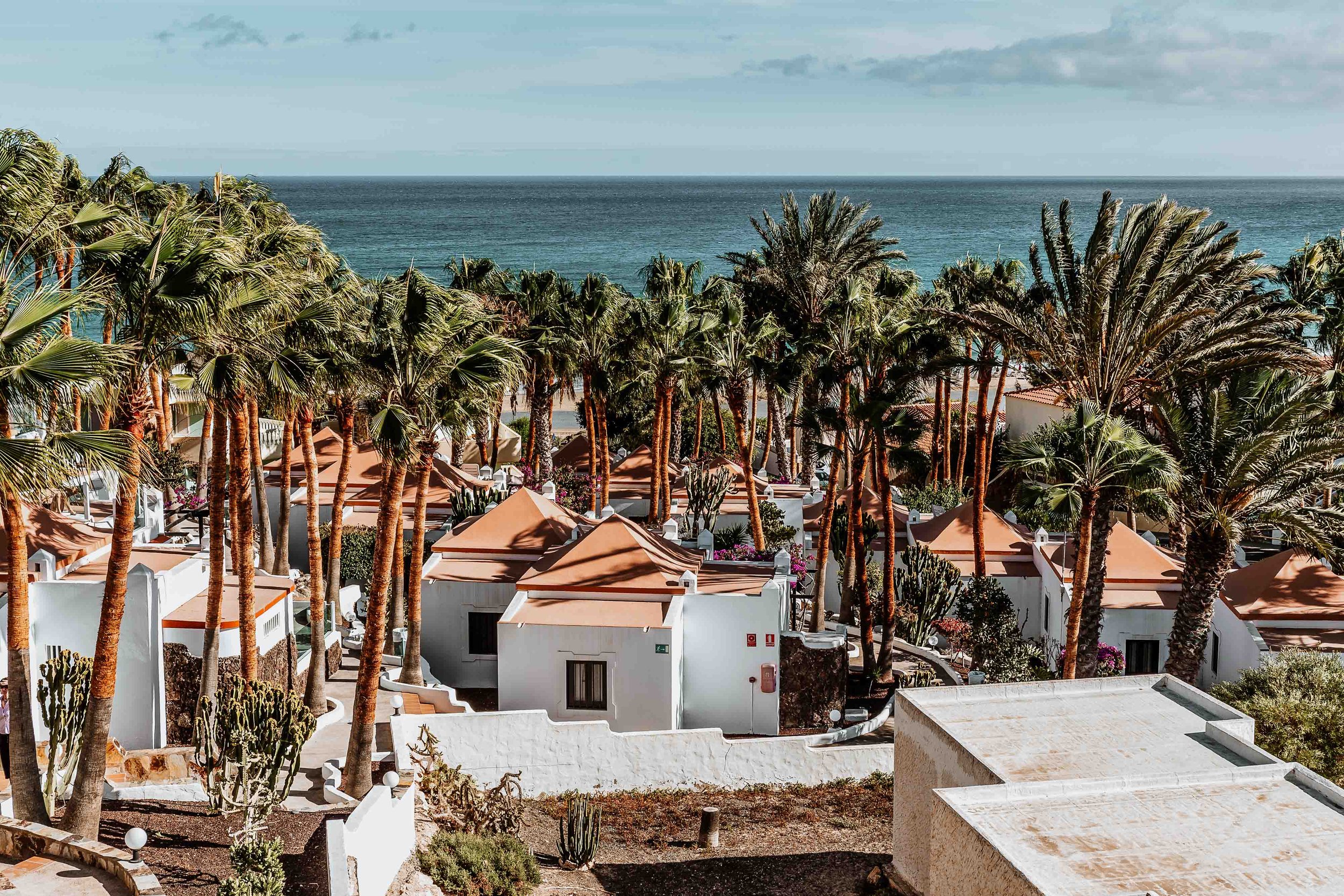
11. Seville, Spain
Average temperature:22° / 11°
Average Sea Temperature: 20° / 17° C
Average Daily Sunshine: 8 Hours
What is the weather in Seville in April? Seville is amongst the hot places in Europe in April and has a mildly cool climate with a gentle breeze and occasional rain.
What to do in Seville in April? With the sweet scent of blooming oranges, Seville has a lot of options for you. Visit the Alcazar Palace, which is a true masterpiece of Mudejar architecture.
Soak in the majesty of one of the largest cathedrals in the world, the UNESCO World Heritage Site of the Catedral de Sevilla.
Take a cruise along the Guadalquivir River, where you can sip on a welcome drink and gorge on Spanish cuisine such as an Iberian acorn-fed ham appetizer with cured manchego cheese.
Make sure you also take a detour to the Plaza de toros de la maestranza, one of the world’s most prominent bull-fighting rings.
What to pack for Seville in April? As one of the hot places in Europe in April, you will only require light clothes for sightseeing activities and some warm sweaters to shield you from the little cool evenings.
Where to stay in Seville in April? Aquitania Home Suites is the perfect option, with an ideal location right in the city centre and offers great amenities.
Hotel Casa 1800 Seville is a four-star accommodation near the centre of Seville and has beautifully decorated rooms with fantastic service.
12. Malaga, Spain
Average temperature: 21° / 11°
Average Sea Temperature: 19° / 15° C
Average Daily Sunshine: 8 Hours
What is the weather in Malaga in April? Malaga is amongst the warmest places in Europe in April and has a sunny and warm climate, as the season gradually shifts from spring to summer.
However, keep an eye out for mild April showers.
What to do in Malaga in April? Art lovers, rejoice! Malaga is the birthplace of the famous painter Pablo Picasso and a visit to the Picasso Museum in Malaga is a must.
Visit the magnificent Moorish fortress of Alcazaba, which is a must-see for any history buff.
Málaga is famous for its delicious cuisine and what better way to sample it than by embarking on a tapas crawl through the city’s many bars and restaurants?
What to pack for Malaga in April? Having the distinction of being one of the hottest places in Europe in April, all you need to carry for Malaga are light clothes to help you beat the heat.
Where to stay in Malaga in April? The Gran Hotel Miramar GL is one of the best hotels located right in the centre of Malaga and that too on a beachfront! It is also a listed 20th Century building.
For those seeking a budget-friendly stay without compromising on luxury, Hotel La Chancla is located right on the beachfront in the traditional fishing neighbourhood of the city.

13. Ibiza, Spain
Average temperature: 19° / 11°
Average Sea Temperature: 18° / 15° C
Average Daily Sunshine: 7 Hours
What is the weather in Ibiza in April? Ibiza has a mild and pleasant climate with typically warm and sunny days and chilly nights. However, Ibiza is also prone to receive little rainfall in April.
What to do in Ibiza in April? One of the warm places to visit in April Europe, known as the White Island, Ibiza has many things to do.
Take a boat trip along the rugged coast to discover the island’s hidden caves such as the Can Marca cave, the Cave of Light, the Cave of Santa Agnes etc. Each one is more mesmerizing than the last.
As the sun sets, the island comes alive with its legendary nightlife. Hit the clubs and dance the night away to the beat of the world’s best DJs.
What to pack for Ibiza in April? As one of the best places to go in Europe in April, all you need to carry are light clothes and shorts for your many walks.
But, in order to not get chilly at night, be sure to carry some warm clothes too.
Where to stay in Ibiza in April? Hotel Osiris is one of the best places to stay near the beach in Ibiza. This family-run hotel offers guests a selection of rooms and is only a short distance from the Es Puet beach.
Hostal La Torre Ibiza Cap Negret located in the city centre is a budget-friendly accommodation featuring a terrace and breathtaking views of the sea.
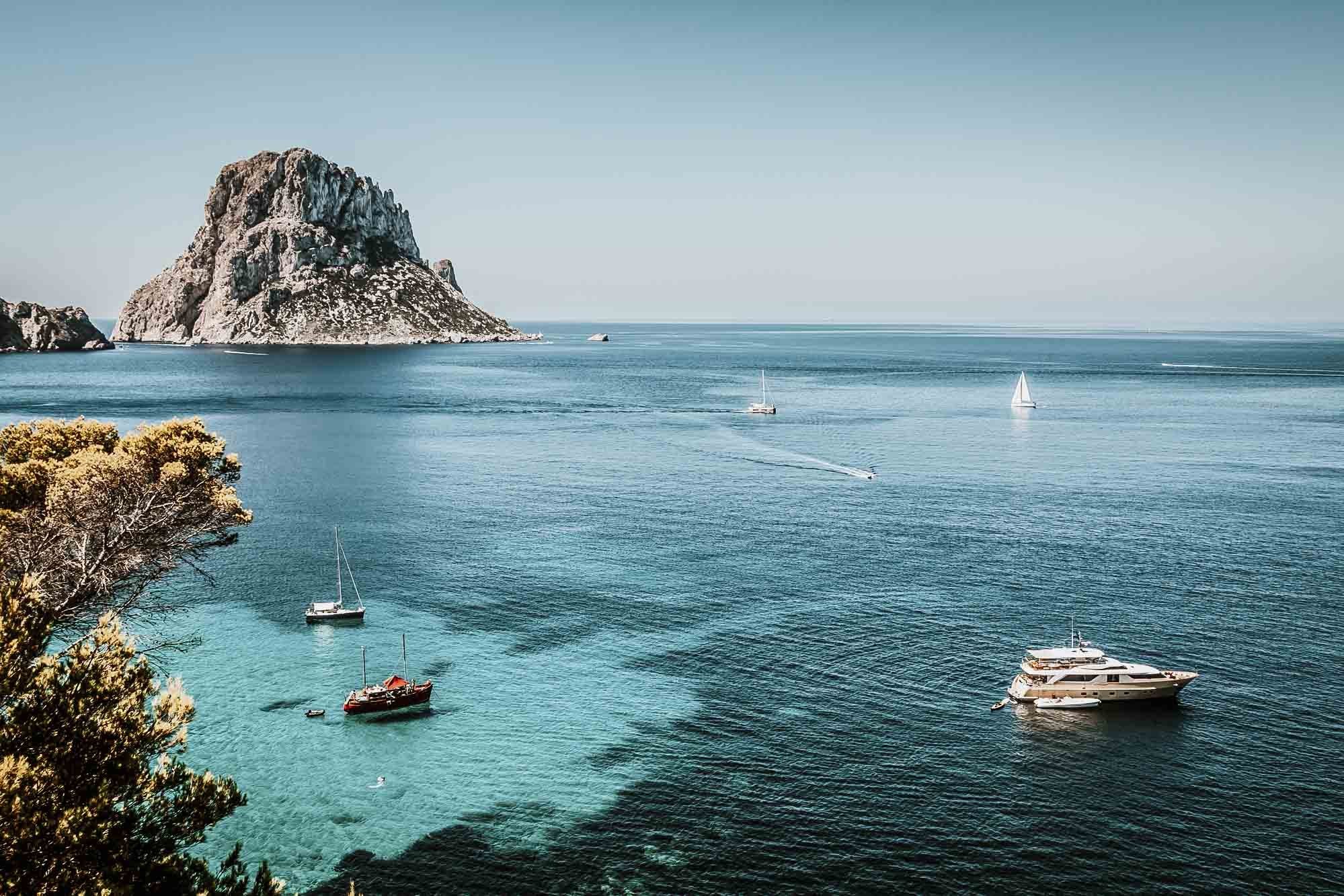
Hottest places in Turkey in April
14. Bodrum, Turkey
Average temperature: 22° / 13°
Average Sea Temperature: 19° / 16° C
Average Daily Sunshine: 9 Hours
What is the weather in Bodrum in April? Bodrum in Turkey is one of the hottest places in Europe in April, with warm daytime temperatures and relatively high humidity, though it’s mainly pleasant with blue skies.
Do keep in mind that you may witness moderate rainfall.
What to do in Bodrum in April? Join one of the boat tours and sail around the Bodrum peninsula or take a dip in the blue waters, engage in snorkeling, or get tanned by sunbathing along the beaches of Ortakent, Bitez, Gumbet, or Turgetreis.
Immerse yourself in the rich history by visiting Bodrum Castle, a UNESCO World Heritage Site.
For those having an interest in underwater archaeology, the castle houses a museum that displays many underwater artifacts.
Make sure that you take a stroll through the ruins of the Mausoleum of Mausolus, one of the Seven Wonders of the Ancient World.
What to pack for Bodrum in April? With its hot climate, all you need to carry are T-shirts and shorts with sunscreen to shield you from the heat. It’s safer to also carry an umbrella to protect you from the rain.
Where to stay in Bodrum in April? The Radisson Collection Hotel, Bodrum is a highly-rated accommodation offering peaceful vibes with beautiful rooms.
The Lujo Hotel A la Carte is also a beautiful option with its three private beaches and an on-site waterpark, though it is situated a little far away from the city centre.
15. Istanbul, Turkey
Average temperature: 17° / 8°
Average Sea Temperature: 13° / 7° C
Average Daily Sunshine: 6 Hours
What is the weather in Istanbul in April? Istanbul is one of the best places to go in April in Europe as the days are sunny, dry, and long but not too hot, signaling the end of winter and the advent of spring.
You may experience little rain showers.
What to do in Istanbul in April? One of the best reasons to visit Istanbul in April is the Tulip Festival, when the streets of Istanbul come alive with the vibrant colours of tulips in full bloom, filling the city with their sweet fragrance.
One of the highlights of the festival is the Tulip Garden in Emirgan Park.
Take a leisurely stroll along the water’s edge and admire the stunning views of the city’s historic buildings, including Topkapi Palace, Dolmabahce Palace, and the Galata Tower.
Take a tour of the iconic Hagia Sophia and marvel at the intricate mosaics and at the historical significance of this architectural masterpiece.
Stroll through the Basilica Cistern, which lies beneath the city’s streets.
What to pack for Istanbul in April? Due to its warm sunny climate in April, you can wear light cotton clothes and shorts in Istanbul, except when you visit mosques.
Carry a light jacket in case the evenings decide to get cold.
Where to stay in Istanbul in April? Attractions like the Hagia Sophia, the Blue Mosque, and the Grand Bazaar are all within walking distance of the White House Hotel Istanbul. It’s in a fantastic location in the centre of the Historical Peninsula.
The Soho House Istanbul, located in the heart of Istanbul, is a tastefully designed accommodation featuring classy rooms and posh amenities.
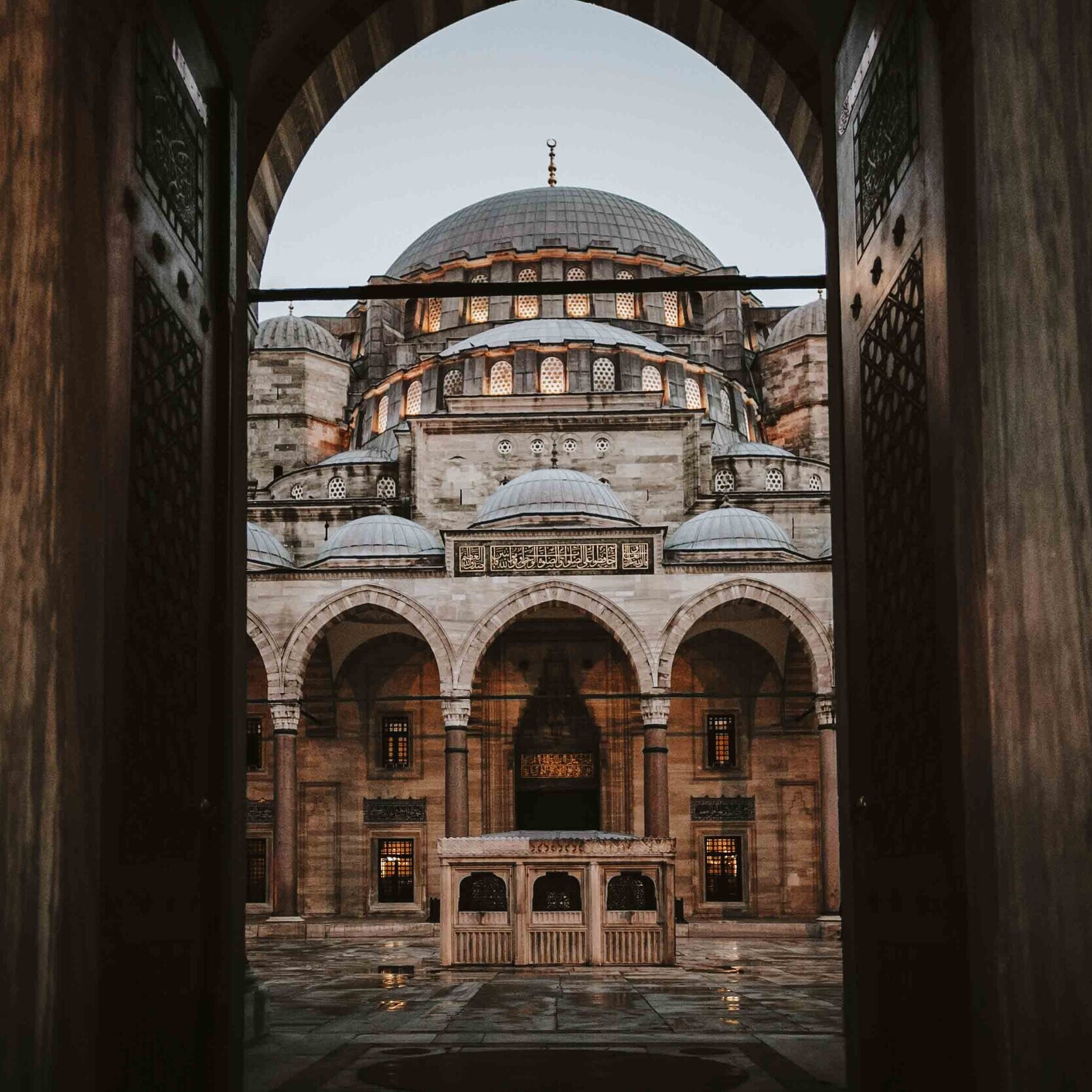
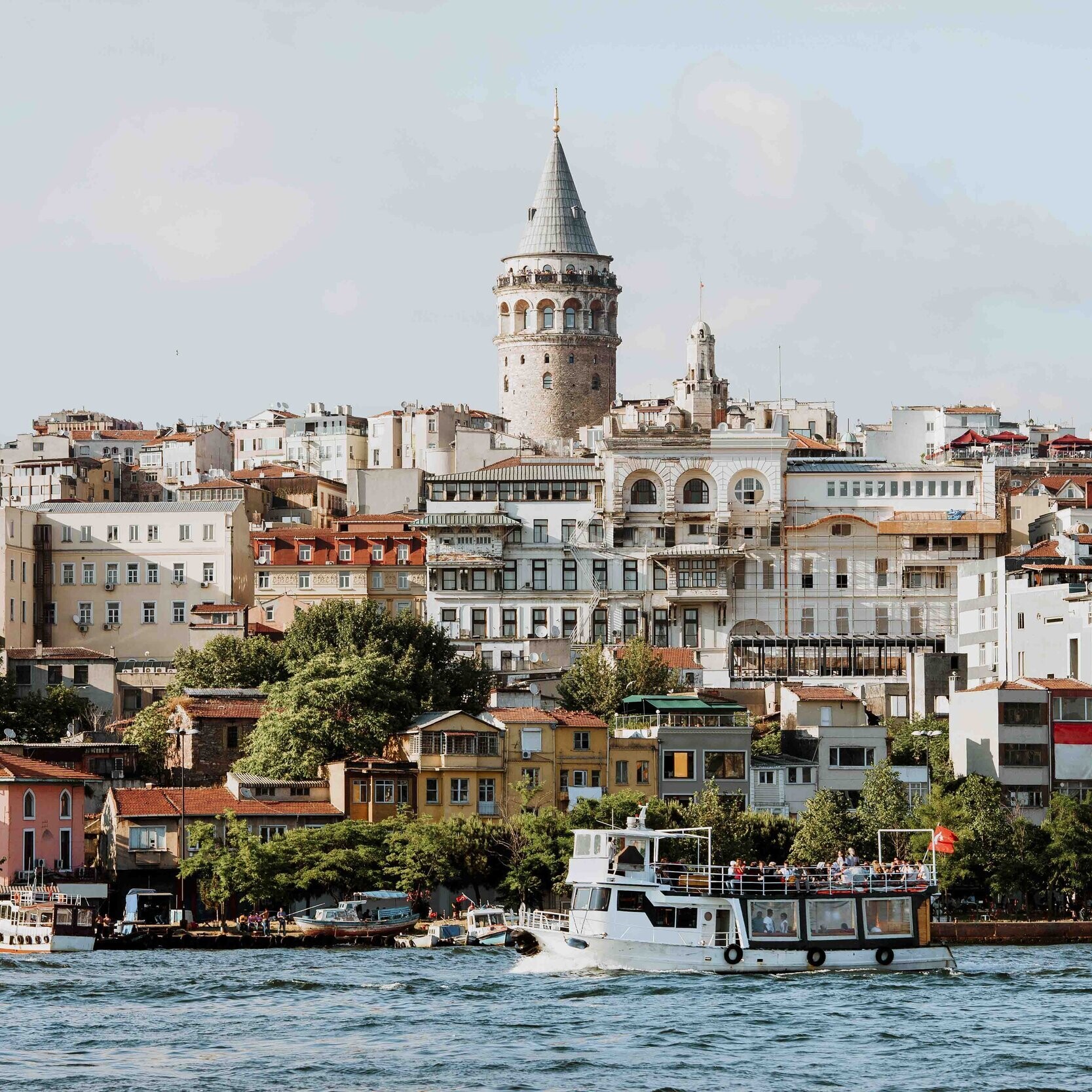
More Hot Places to Visit During April in Europe
16. Croatia
Average temperature: 18° / 11°
Average Sea Temperature: 16° / 13° C
Average Daily Sunshine: 6 Hours
What is the weather in Croatia in April? As one of the warm European countries in April, Croatia has a mild temperature in April with pleasant sunny days and chilly evenings, with relatively good chances of moderate rainfall.
What to do in Croatia in April? Immerse yourself in the rich history and architecture of the cities of Split, Dubrovnik, and Zagreb.
Marvel at the ancient ruins of the Roman palace in Split, wander the charming streets of Dubrovnik’s Old Town, and admire the stunning Gothic and Baroque buildings in Zagreb.
See the sights of Kings Landing as you discover the film sites of the show in Dubrovnik.
What to pack for Croatia in April? On sunny days, a pair of T-shirts and jeans can help you on your long walks. However, you will need layers to keep yourself warm in the evening when the temperature drops.
Make sure you carry a good raincoat to brace through the showers.
Where to stay in Croatia in April? The cities of Zagreb and Dubrovnik are the preferred destinations for a stay in Croatia.
Hotel Capital in Zagreb is located in the heart of the city and has options of beautiful rooms with stunning views of the city.
The Rixos Premium in Dubrovnik is a highly-rated hotel located minutes away from the Old Town and offering panoramic views of the sea.
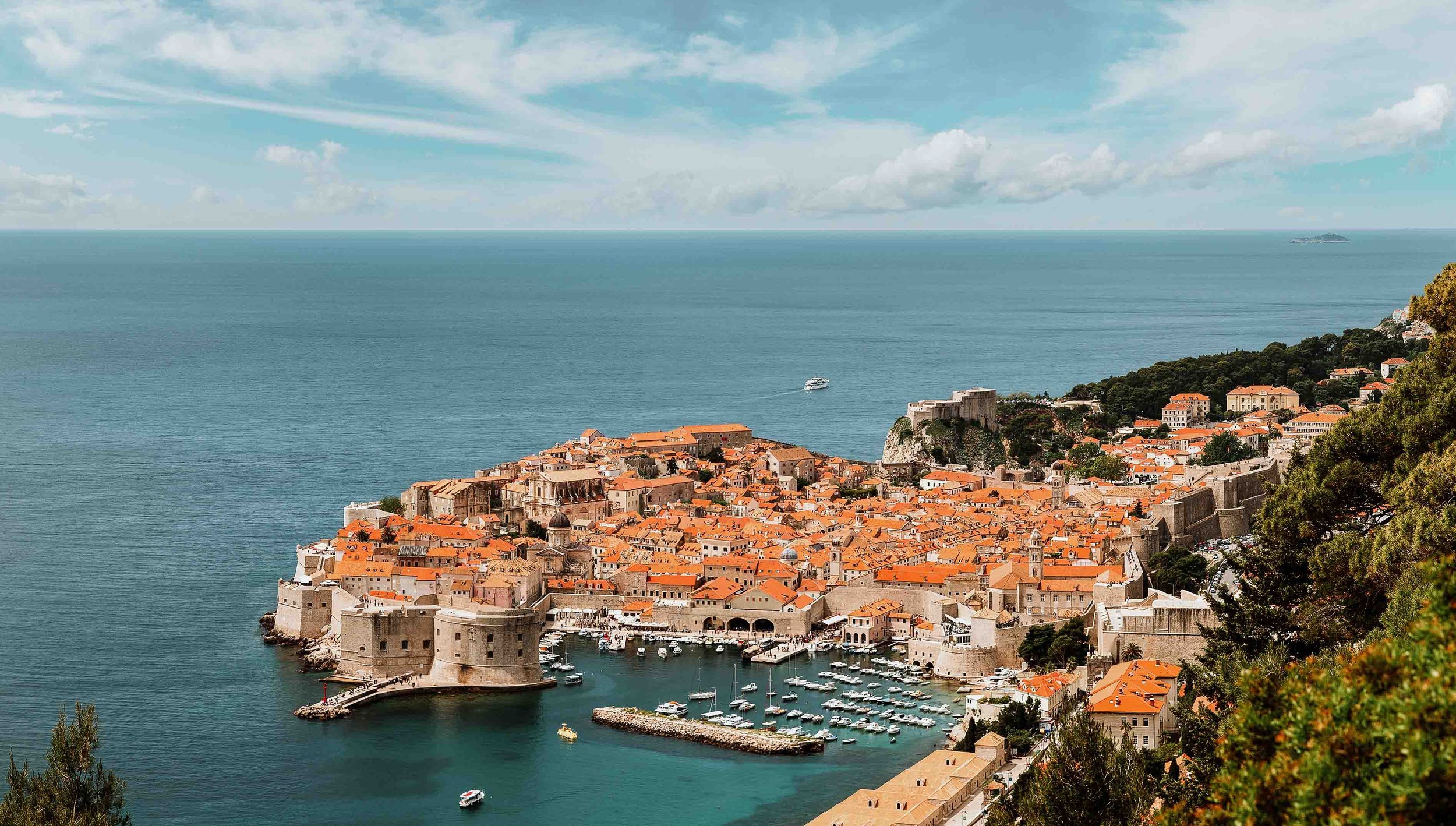
17. Nice, France
Average temperature: 16° / 11°
Average Sea Temperature: 16° / 13° C
Average Daily Sunshine: 11 Hours
What is the weather in Nice in April? With its sunny skies and comfortable temperatures, Nice is among the warm European cities in April. However, for someone who is a thalassophyte, the seas around Nice are still not open for a swim due to chilly waters.
What to do in Nice in April? Nice is among the warmest places in Europe. You can stroll through the maze of charming streets in its Old Town or Vieille Ville.
Take a scenic walk along the Promenade des Anglais as it offers stunning views of the Mediterranean and opportunities for people-watching, sunbathing, and cycling.
Immerse yourself in the city’s history at the Nice Côte d’Azur Museum.
Visit the Cours Saleya market as it is renowned for its vibrant flowers, with stalls overflowing with fragrant blooms, juicy fruits, and crisp vegetables.
Take a hike to the top of Chateau Hill. which offers panoramic views of the city and the seas and is home to several historic landmarks, such as the Castle Hill Cemetery, the Jardins Albert I, and the Monument aux Morts.
What to pack for Nice in April? With its mildly unpredictable climate due to coastal winds, it is important to pack both light airy clothes as well as heavy jackets, should you plan a visit to Nice in April.
A comfortable pair of shoes is a must since most of the sightseeing will involve lots of walking.
Where to stay in Nice in April? The Studio 21m² Rue de France is an apartment located in the centre of Nice and offers a breathtaking view of the French Riviera and the seaside.
The Anantara Plaza Nice Hotel is a 5-star property located in the centre of Nice and offers elegant rooms along with scores of facilities.

18. Monaco
Average temperature: 16° / 11°
Average Sea Temperature: 16° / 13° C
Average Daily Sunshine: 9 Hours
What is the weather in Monaco in April? Monaco is the best European destination in April due to its fairly warm and pleasant weather following the settling in of spring. Be prepared to experience a wet climate.
What to do in Monaco in April? Join a group tour and visit the most famous sites of Monaco, from the medieval village of Eze, the Terrace of Monaco at La Turbie, the Principality of Monaco, and the fascinating city of Monte Carlo.
Take a scenic drive along the famous Monaco Grand Prix circuit, which winds its way through the streets of the city and offers breathtaking views of the Mediterranean.
Explore the breathtaking beauty of the Princess Grace Rose Garden, visit the Oceanographic Museum and go to the famous Monte Carlo Casino, where you can try your luck at the roulette wheel.
What to pack for Monaco in April? Due to its pleasant weather, you can pack light for a trip to Monaco, with shorts and T-shirts. Do carry a jacket for the once-in-a-while chilly evenings and the rain.
Where to stay in Monaco in April? Boutique Hotel Miramar is the perfect place, with its close distance to the Grand Casino and a sundeck where you can sip on cocktails as you gaze at the sunset.
Port Palace is a palatial hotel which directly overlooks the yachts anchored around Port Hercules. The best perk is its location, right in the centre of the Monaco Grand Prix track!
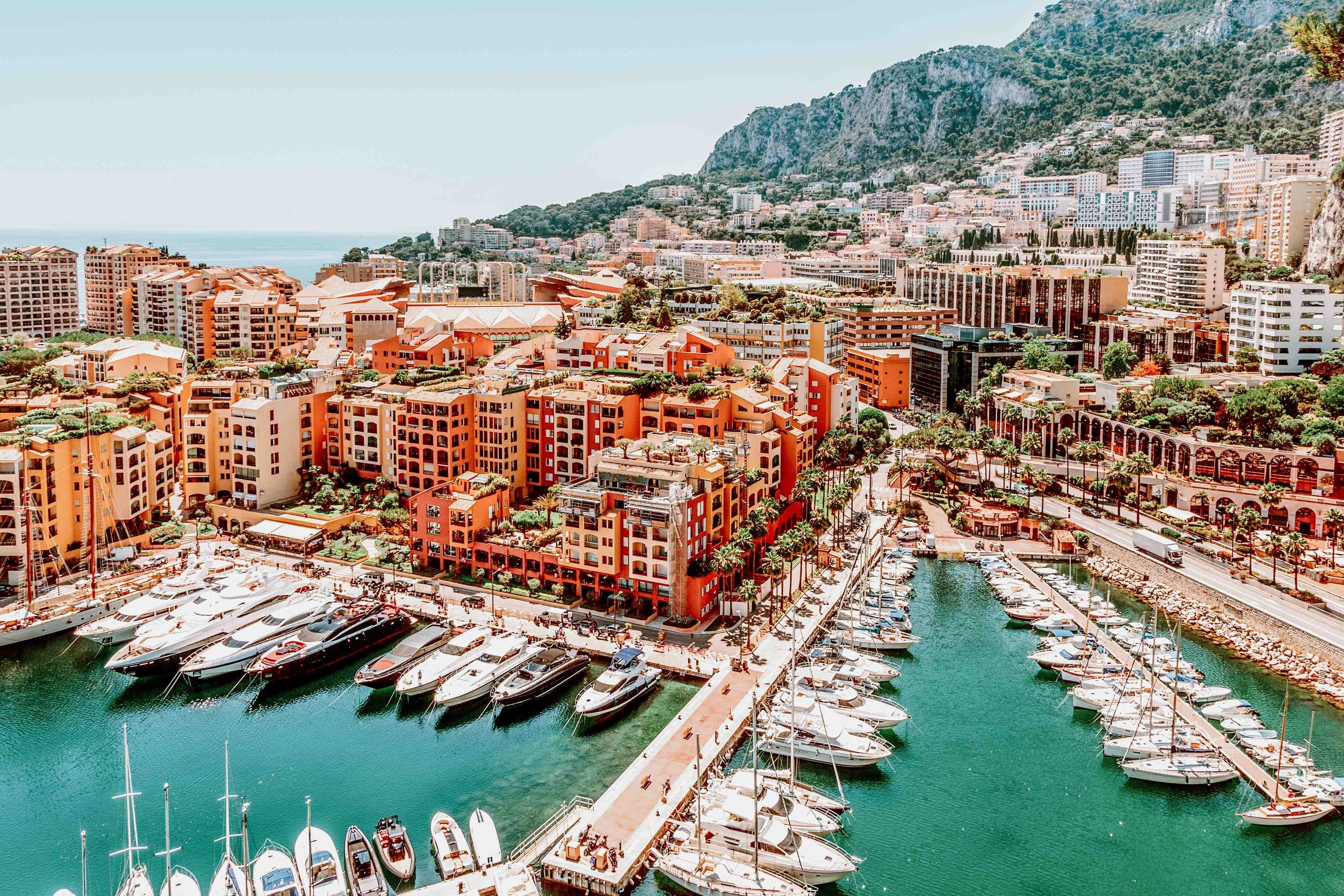
19. Gozo, Malta
Average temperature: 20° / 12° C
Average Sea Temperature: 18° / 15° C
Average Daily Sunshine: 8 Hours
What is the weather in Gozo in April? The climate of Gozo makes it one of the best places to visit Europe in April as it is quite cool, along with refreshing spells of rainfall which do not last for very long.
The days are sunny, warm, and long whereas the evenings can get a little chilly.
What are the things to do in Gozo in April? April is an ideal time for tourists to go swimming and sunbathing, preferably during the daytime.
You can also engage in scuba diving and snorkeling activities at Xlendi Bay, as Gozo offers clear waters and very diverse marine life.
You can also take a Quad Bike Tour in Gozo or a Hop-on Hop-off city sightseeing bus. Consider visiting beautiful arches such as the Wied il-Mielah window. Here’s a complete list of things to do in Gozo.
Do explore different Game of Thrones filming locations in Malta during your vacation.
What to pack for Gozo in April? Gozo has relatively warm weather in April in Europe during the daytime; however, evenings might get chilly.
Light rainfall can also be expected. So, make sure to carry light breathable clothes for the day and light jackets along with raincoats and an umbrella to protect you from the rain.
Where to stay in Gozo in April? For those looking for a preferably cheaper stay in Victoria, such as a Bed & Breakfast, Provicario is the preferred choice for most tourists, located just 300 meters away, it offers a magnificent view of the Gran Castellano.
For those of you preferring a luxurious touch, the Kempinski Hotel San Lawrenz is a good option.
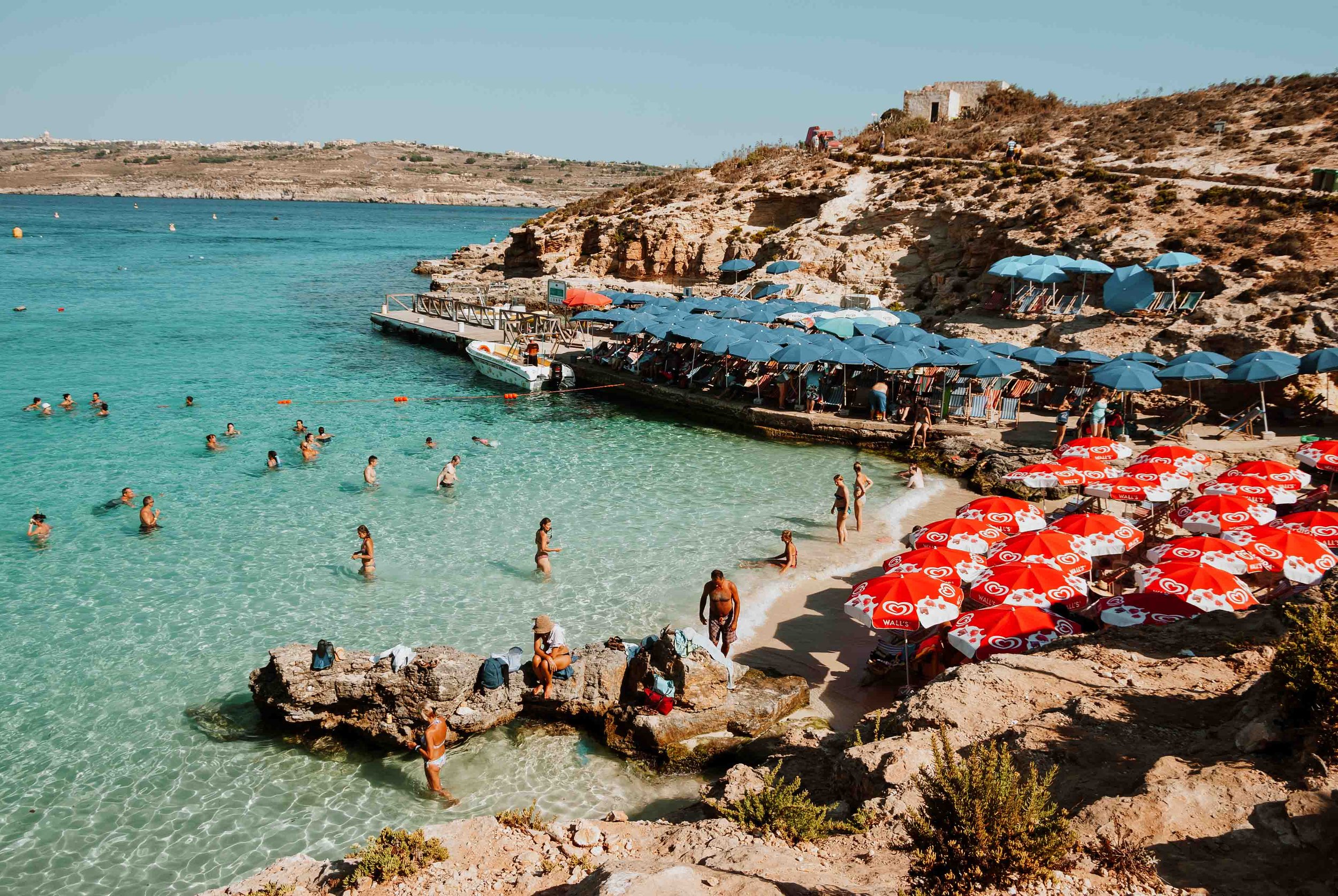
20. Gibraltar
Average temperature: 20° / 13° C
Average Sea Temperature: 19° / 15° C
Average Daily Sunshine: 10 Hours
What is the weather in Gibraltar in April? Gibraltar is among the warmest countries in Europe in April, with pleasant temperatures throughout the day. Gibraltar also witnesses moderate rainfall in April.
What to do in Gibraltar in April? April is the ideal time to explore Gibraltar and its many attractions. Take a guided tour of the Rock of Gibraltar, a high promontory offering a view of the stunning landscape.
Cruise through the Strait of Gibraltar and witness wild dolphins thrive in their natural habitat or the St. Michael’s cave, famous for its light show.
Pictures of landscapes like the Rock of Gibraltar can be made into lasting memories by converting them into custom enamel pins! Perfect to take home as a souvenir, exactly as you need it to be! The best bit is that you could probably make one even after you’re back, in case you forget to collect one in Gibraltar itself!
What to pack for Gibraltar in April? If you are heading to Gibraltar in April, make sure that you carry a light jacket for the chill, along with a raincoat or an umbrella.
Where to stay in Gibraltar in April? The Rock Hotel is a magnificent hotel sitting atop the Rock of Gibraltar with its colonial style façade and offers stunning views.
The Bentley Holiday Apartments are a budget-friendly option with a panoramic view of the sea and the Rock.
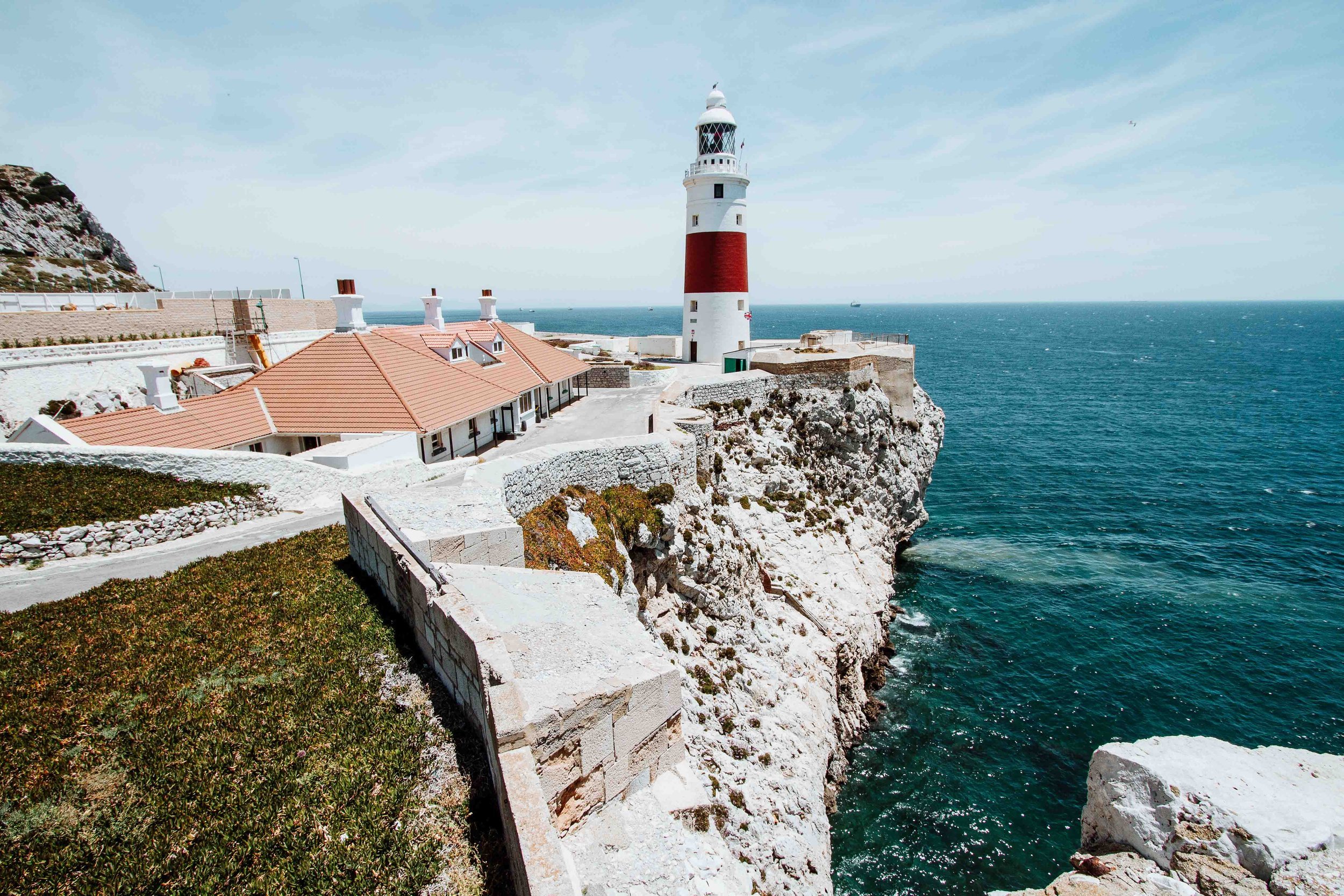
With so many exciting destinations to choose from, which ones are you picking for your next April vacation? These warm places to visit in April in Europe should surely keep you on your toes!
Croatia for its history, Istanbul for its tulip festival, or Ibiza for its nightlife and beaches?
FAQs
Where is the warmest place in Europe in April?
Cyprus is the warmest place to visit in Europe in April and has sunny and warm days with perfectly balanced cool evenings. You can also head out to the Amalfi Coast, Bodrum or Istanbul if you want to experience warmer weather in Europe in April.
Where is the warmest place to go in April?
For those of you wishing to go beyond Europe, Cancun in Mexico is one of the warmest places to visit in April, with a temperature ranging from 30° / 22 ° and is widely considered as the Caribbean of Mexico with stunning beaches and many historical sites of Mayan origin.
Which part of Europe is best in April?
If you want to experience a warm climate and enjoy a sunbathe or a swim in the seas, the Canary Islands, the Amalfi Coast and the French Riviera are the places to go, with their assortment of splendid white sand beaches.
Still, hoping for a cold vibe? Head to Switzerland and immerse yourself in its snow-clad peaks, skiing rings and green stretch of grasslands.
Is Italy warm in April?
Yes, Italy is quite warm in April. April is the beginning of the shoulder season in Italy and signals the advent of Spring, with warm, pleasant, sunny days and chilly evenings accompanied by occasional rainfall. It is the perfect place to be for those seeking respite from the cold.
Final Thoughts
So, if winter is lasting a little longer this year and you’re looking to escape the cold, there are tons of warm places in Europe in April that you can travel to!
All the spots on this list have near-guaranteed warm weather and sun, and a few even have relatively warm sea temperatures if you want to take a dip in the Mediterranean!
Cyprus is the hottest place in Europe, but I have guides that will show you how to plan an epic itinerary and other warm countries as well. These include Greece, Spain, and France,
However, my favorite place to go in April is Malta. Enjoy your spring getaway!

Award-winning Analyst, multi-nominated digital content creator and photographer Lavina Dsouza's words capture stories about culture and tradition mainly through its food and people. She has written and contributed to publications such as The Washington Post, Lonely Planet and Matador Network, to name a few. She is the editor of UntraditionalHumans.com, a non-profit created to share inspiring stories from women of colour who break free from traditions and choose happiness.
She's also a speaker passionate about DEI and champions solo travel. She has collaborated with numerous renowned brands such as Intrepid Travel, TripAdvisor, Travel and Leisure and Adobe, to name a few.
She can be found on Twitter and Instagram.
PIN FOR LATER!

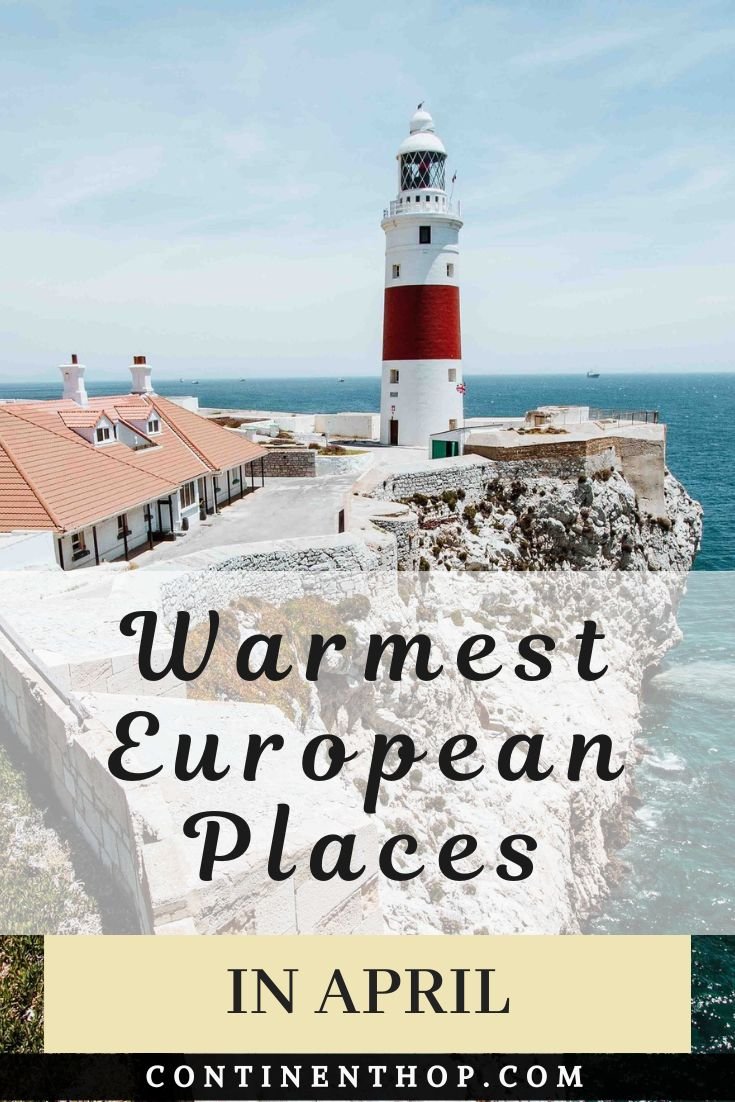
EXPLORE MORE OF EUROPE
Some of the links on this post are affiliate links. These do not cost you extra to use, but will help provide Continent Hop with a small commission if/when you purchase through them, to recover some of the costs of running this website and providing free content to help you plan your travel. I appreciate your support!
Is Eindhoven Worth Visiting? Here's Top Reasons why you Should and Shouldn't! (2024)
Eindhoven isn’t on visitors’ radar when they think of The Netherlands. However, this city which was the headquarters to Phillips, is the place to be if you’re into design! If you’re wondering ‘Is Eindhoven worth visiting’, here are all the top reasons to spend at least one day in Eindhoven!
If you’re thinking about visiting the Netherlands, you may be wondering which cities to go to. While Amsterdam and Rotterdam are undeniably popular tourist destinations, another city worth considering is Eindhoven.
‘Is Eindhoven worth visiting?’ you may be wondering. The answer is a definite yes! Eindhoven is a lively and creative city with a rich history and plenty to see and do.
This article will dive into reasons why is Eindhoven worth visiting, explore the city’s top attractions, its food and drink scene, and its many cultural and outdoor activities.
Guided Tours for the best Eindhoven experience –
- City Center Walking Tour
- Van Gogh Village Museum Nuenen Entry Ticket
- Bottle Distillery Tour and Tasting Experience
Places to stay in Eindhoven –
IN THIS GUIDE
Toggle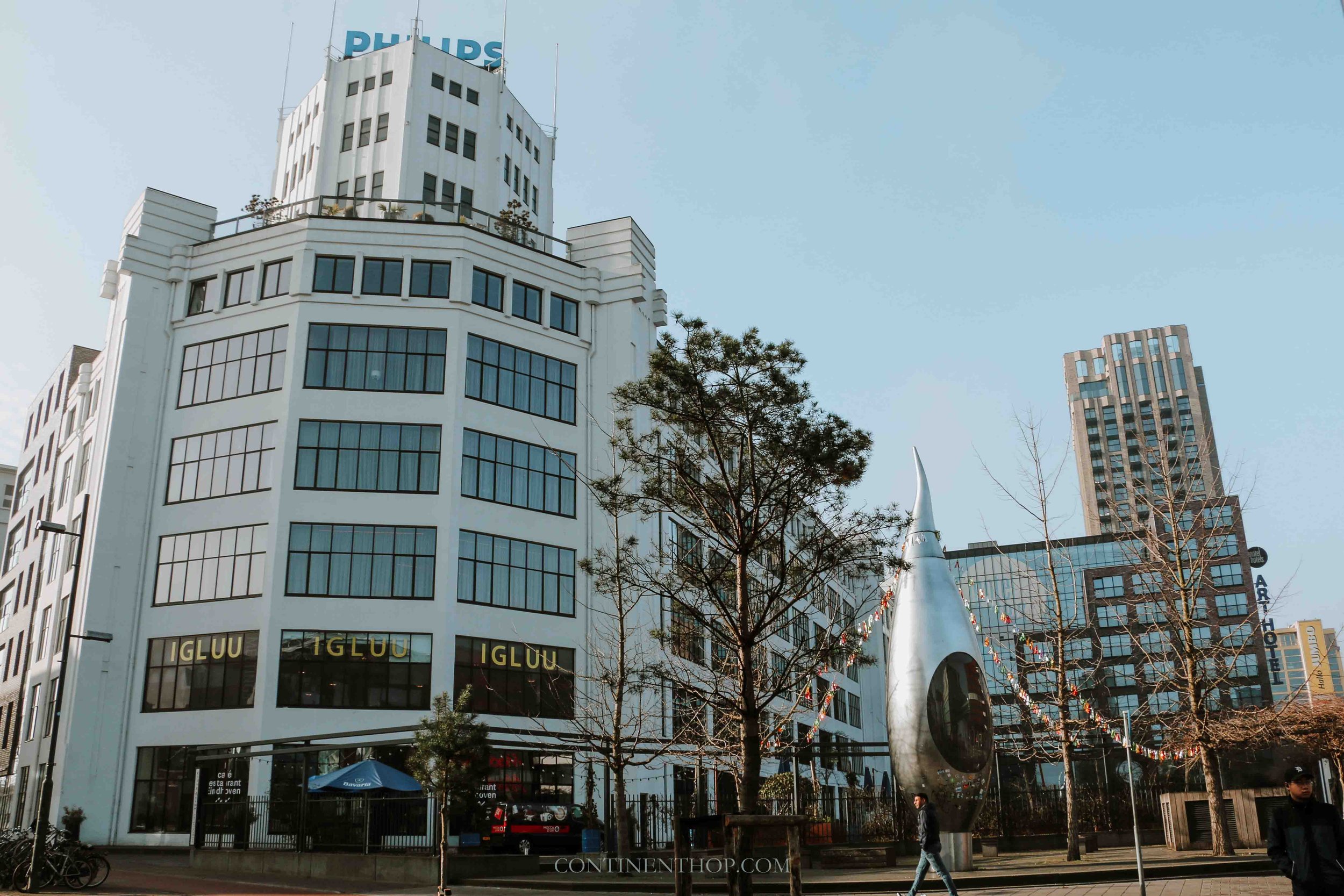
Is Eindhoven worth visiting?
Located in the southern part of the Netherlands, Eindhoven town is perhaps best known as the birthplace of Philips, the world-renowned electronics company and this legacy can be seen throughout the city. Because of its cutting-edge technology and innovative research institutes, Eindhoven is also known as the ‘smartest region’ in the world.
However, Eindhoven is much more than just an industrial hub; it is also a cultural city, with a thriving arts scene, innovative design studios and galleries, and vibrant nightlife.
Eindhoven has something to offer everyone, whether they are interested in history, art, or outdoor activities. There is plenty to see and do in this dynamic city, from the Philips Factory Complex and the Van Abbemuseum to the many bike paths and nature reserves.
Another great reason why is Eindhoven worth visiting, is its connectivity with more than 75 destinations in Europe, via the Eindhoven Airport.
When is Eindhoven worth visiting?
Eindhoven is a year-round destination with something for everyone. The best time to visit Eindhoven, however, is between April and September, during the spring and summer.
The weather is mild and pleasant during this time, making it ideal for exploring the city on foot or by bicycle. It is also when many of the city’s outdoor events and festivals take place, including the well-known Dutch Design Week and the annual Park Hilaria fair.
However, if you prefer a quieter atmosphere and cooler temperatures, the winter months can also be a great time to visit and enjoy the city’s indoor attractions and holiday markets.
Where is Eindhoven and how to reach
Eindhoven is a city in the province of North Brabant in the south of the Netherlands. Eindhoven to Amsterdam distance is about 125 kilometres southeast. Here are some ways to reach Eindhoven:
-
By Air: Eindhoven has its airport, Eindhoven Airport, which is only 8 kilometres from the city centre.
-
By Train: The city centre of Eindhoven is home to a well-connected railway station. It has direct connections to many major Dutch cities, including Amsterdam, Rotterdam, and Utrecht. International trains travel to and from Belgium, Germany, and other parts of Europe.
-
By Bus: Eindhoven has a good bus network that connects the city to other parts of the Netherlands and Europe. The central bus station is located directly across from the train station.
-
By Car: Eindhoven is easily accessible by car because it is located near several major highways. It is about a 1.5-hour drive from Amsterdam and a 1-hour drive from Rotterdam.
Once in Eindhoven, you can explore the city by bus or bike. If you prefer to travel by car, the city has a good network of taxis and car rental companies.
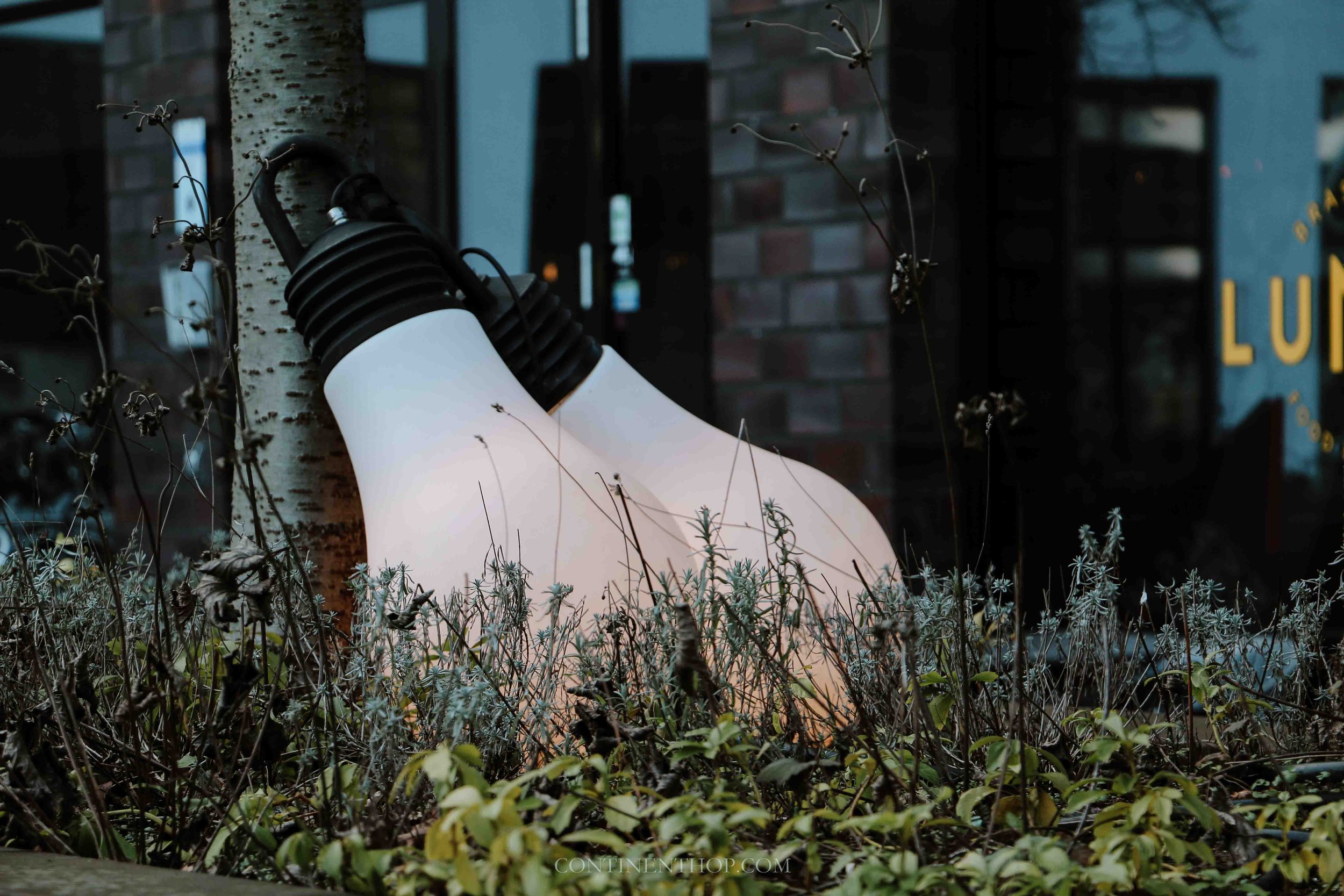
History of Eindhoven
Eindhoven has a long and interesting history that dates back to the Middle Ages when it was just a small village. Over time, it gained importance, particularly in the nineteenth century when it became an industrial centre.
Philips helped drive the city’s growth and reputation for innovation and technology.
Attractions in Eindhoven: : What is Eindhoven like?
You can spend one day in Eindhoven, and explore this vibrant town. Here are some things do that are the reasons why is Eindhoven worth visiting:
Explore the museums of Eindhoven
Various museums in Eindhoven are one of the many reasons why is Eindhoven worth visiting.
Van Abbemuseum
The Van Abbemuseum is a modern art museum in Amsterdam that exhibits works by Dutch and international artists. It is well-known for its exceptional and thought-provoking exhibitions and is an excellent place to spend an afternoon.
The museum’s collection includes everything from contemporary art to works from the twentieth century. Throughout the year, the museum also hosts a variety of temporary exhibitions.
DETAILS
Van Abbemuseum
Address: Bilderdijklaan 10, 5611 NH Eindhoven
Timings: Tuesday to Sunday, 11 am-5 pm (closed on Mondays)
Price: €12,50 (adults), free (children under 18)
DAF Museum
The DAF Museum is a one-of-a-kind attraction devoted to the history of the DAF truck and car company. You can learn about the company’s history through a variety of exhibits, including vintage vehicles and engines. The museum also houses a collection of art and design pieces made by DAF employees.
DETAILS
DAF Museum
Address: Tongelresestraat 27, 5613 DA Eindhoven
Timing: Tuesday through Sunday from 10:00 am to 5:00 pm
Price: Adults: €9.50, Children aged 5 to 15: €5.00, Children under 5: free

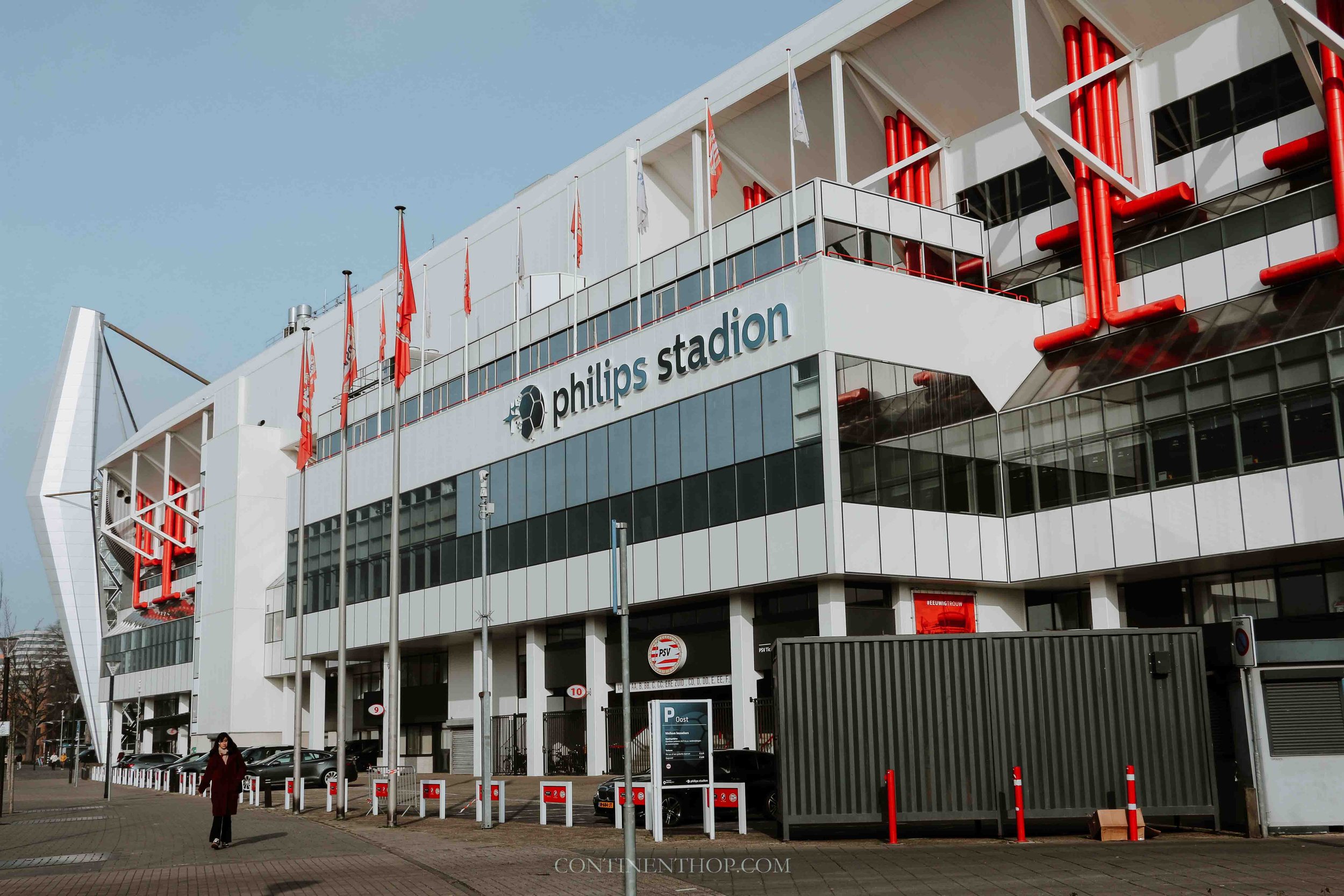
Philips Museum
The Philips Museum is a must-see in Eindhoven. It is housed in the former Philips headquarters and tells the story of the company’s history and innovation over the last century.
The museum includes interactive exhibits and displays, including a replica of the original Philips workshop. You can learn about the company’s innovative products, including the first Philips radio and the iconic Philips light bulb.
DETAILS
Philips Museum
Address: Emmasingel 31, 5611 AZ Eindhoven
Timing: €9 (adults), €6 (students), free (children under 18)
Price: Tuesday to Sunday, 11 am-5 pm (closed on Mondays)
Visit the Philips Factory Complex
If you are interested in the city’s industrial history, you should visit the Philips Factory Complex. The complex was formerly the Philips electronics company’s headquarters and is now a cultural centre. The buildings, which include galleries, cafes, and shops, are open to the public.
DETAILS
Philips Factory Complex
Address: Emmasingel 31, 5611 AZ Eindhoven, Netherlands
Timing: Tuesday to Sunday: 11 am – 5 pm, Closed on Mondays
Price: Adults: €10, Children aged 6 to 18 years: €5, Children under 6 years: Free
Discover Eindhoven’s Design and Art Scene
Eindhoven has a long history of design and art. The city being home to several well-known designers and artists and continuing to be a creative and innovative hotspot can be one of the answers to your question: is Eindhoven worth visiting?
The city hosts the annual Dutch Design Week, which attracts thousands of designers, artists, and visitors from around the world, being one of the reasons why is Eindhoven worth visiting.
De Blob
De Blob is a vibrant art installation in Eindhoven’s city centre. It is a large inflatable structure that lights up at night, creating a colourful and playful atmosphere in the area.
You can walk around the installation and take pictures or climb up to the top of the structure to enjoy panoramic views of the city. From the top, you can see the city’s skyline, including the nearby Philips Stadium and the historic Dommel River.
DETAILS
De Blob
Address: Piazza 31, 5611 AE Eindhoven
Timing: open 24/7
Price: Free
Strijp-S
Strijp-S is a former industrial site that has been converted into a creative and cultural hub. It is home to a variety of shops, restaurants, and galleries.
The neighbourhood is known for its distinctive architecture, with many of the structures dating back to the early twentieth century. You can stroll through the streets and admire the art installations and street art that can be found throughout the neighbourhood.
DETAILS
Strijp-S
Address: Kastanjelaan, 5616 LZ Eindhoven
Timing: open 24/7
Price: Free to visit
Enjoy the outdoors at Genneper Parken
Genneper Parken is a lovely nature reserve in Eindhoven that is ideal for hiking, cycling, and other outdoor activities. The park contains forests, lakes, and streams, as well as numerous hiking trails.
You can also take advantage of the park’s numerous sports facilities, which include a swimming pool, ice skating rink, and golf course.
DETAILS
Genneper Parken
Address: Antoon Coolenlaan 1, 5644 RX Eindhoven
Timing: open daily from 8 am-11 pm (times may vary for individual attractions within the park)
Price: Free to visit
Explore the Village of Nuenen
The Village of Nuenen, located just outside of Eindhoven, is well-known for its association with Vincent van Gogh, who worked and lived there for two years in the late 1800s.
You can explore the Vincentre Museum, and take a walking or cycling tour through the countryside surrounding Nuenen, which will take you past many of the locations Van Gogh painted, including the famous Potato Eaters painting.
I would suggest booking this Van Gogh Village Museum Nuenen Entry Ticket in advance for a seamless experience.

Take a tour of Eindhoven Bottle Distillery
The Eindhoven Bottle Distillery is a one-of-a-kind and forward-thinking craft distillery in the heart of Eindhoven. It is the world’s first distillery to produce spirits exclusively in glass bottles, having opened in 2016. You can take this guided tour of the distillery and learn about the process while sampling some drinks.
DETAILS
Eindhoven Bottle Distillery
Address: Cederstraat 1B, 5652 EB Eindhoven
Timing: Tours are available on Fridays, Saturdays, and Sundays at various times
Price: from €12,50-€25 per person depending on the tour package chosen
Attend a Football Match
The PSV football club is based in Eindhoven, and attending a match is a great way to immerse yourself in the city’s sports culture. The Philips Stadium is a cutting-edge venue that can seat up to 35,000 people, and the atmosphere on match days is electric.
DETAILS
Philips Stadium
Address: Philips Stadion, Frederiklaan 10A, 5616 NH Eindhoven
Timing/Price: Ticket prices and tour timings vary depending on the season and schedule, so it’s best to check their website for current information
Experience Eindhoven’s Nightlife
The city’s numerous bars, pubs, and nightclubs, are some of the reasons Why is Eindhoven worth visiting. Stratumseind, one of the Netherlands’ longest bar streets, is located in the heart of Eindhoven and is a popular hangout for both locals and tourists. It has over 50 bars and clubs, with live music, DJs, and dancing.
Throughout the year, the city also hosts several music festivals and events, such as the annual Eindhoven Psych Lab and the Glow Festival, which features spectacular light installations and projections throughout the city.
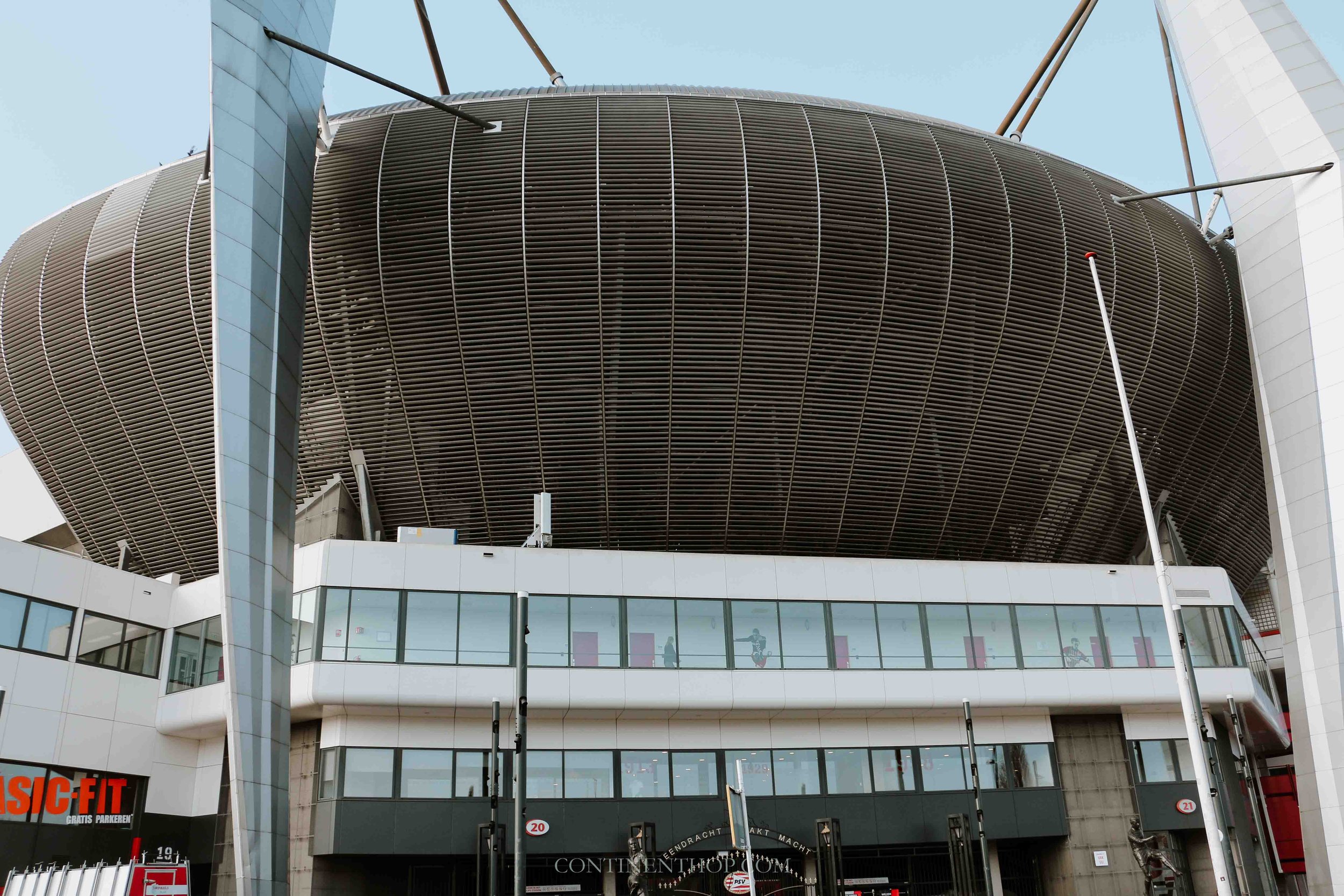
Taste Local Cuisine
Eindhoven has a diverse food and drink scene, with many local specialities and popular food and drink spots to try.
The city is well-known for its craft beer, and there are numerous breweries and beer gardens to be found throughout the city, such as the Little One Speakeasy Bar and Drinkers Pub. Don’t forget to try delectable local dishes like Stroopwafels, bitterballen, and herring.
What many will also like is that Eindhoven is multicultural so you will also find some great restaurants serving the freshest European, American and Asian cuisine here.
Visit St. Catherine’s Church
St. Catherine’s Church is a lovely Gothic-style church in the centre of Eindhoven. The church, which dates from the 15th century, is known for its beautiful stained-glass windows and ornate interior. You can attend one of the many concerts and events held there throughout the year.
DETAILS
St. Catherine’s Church
Address: Kerkstraat 1, 5611 GH Eindhoven
Timing: Monday to Saturday from 12:00 PM to 4:00 PM
Price: Admission is free

Take a Bike Tour
The Netherlands is famous for its bike culture, and Eindhoven is no exception. It has various innovative bike paths such as the Van Gogh Roosegaarde Cycle Path, inspired by Van Gogh’s ‘Starry Night’ and the world’s first-ever floating bicycle path, the Hovenring,
You can rent bikes and take a tour of the city’s many bike paths and trails. You can book this E-Fatbike Rental and explore the local sights of Eindhoven.
If you find this a little difficult to navigate, then consider booking this City Centre Walking Tour first to understand what this city has to offer.
Where to stay in Eindhoven
Eindhoven has some great properties to spend a night at, here are some recommendations:
Luxury: NH Collection Eindhoven Centre
Located less than a kilometre away from Philips stadium, NH Collection Eindhoven Centre is a 5-star hotel providing premium rooms with a breakfast buffet. Van Abbemuseum is 701 m away.
Midrange: Hotel the Match
Only 8 kilometres from Eindhoven Airport, this property is perfect for a one-night stay, featuring air-conditioned rooms, a garden, a bar, and free Wi-Fi.
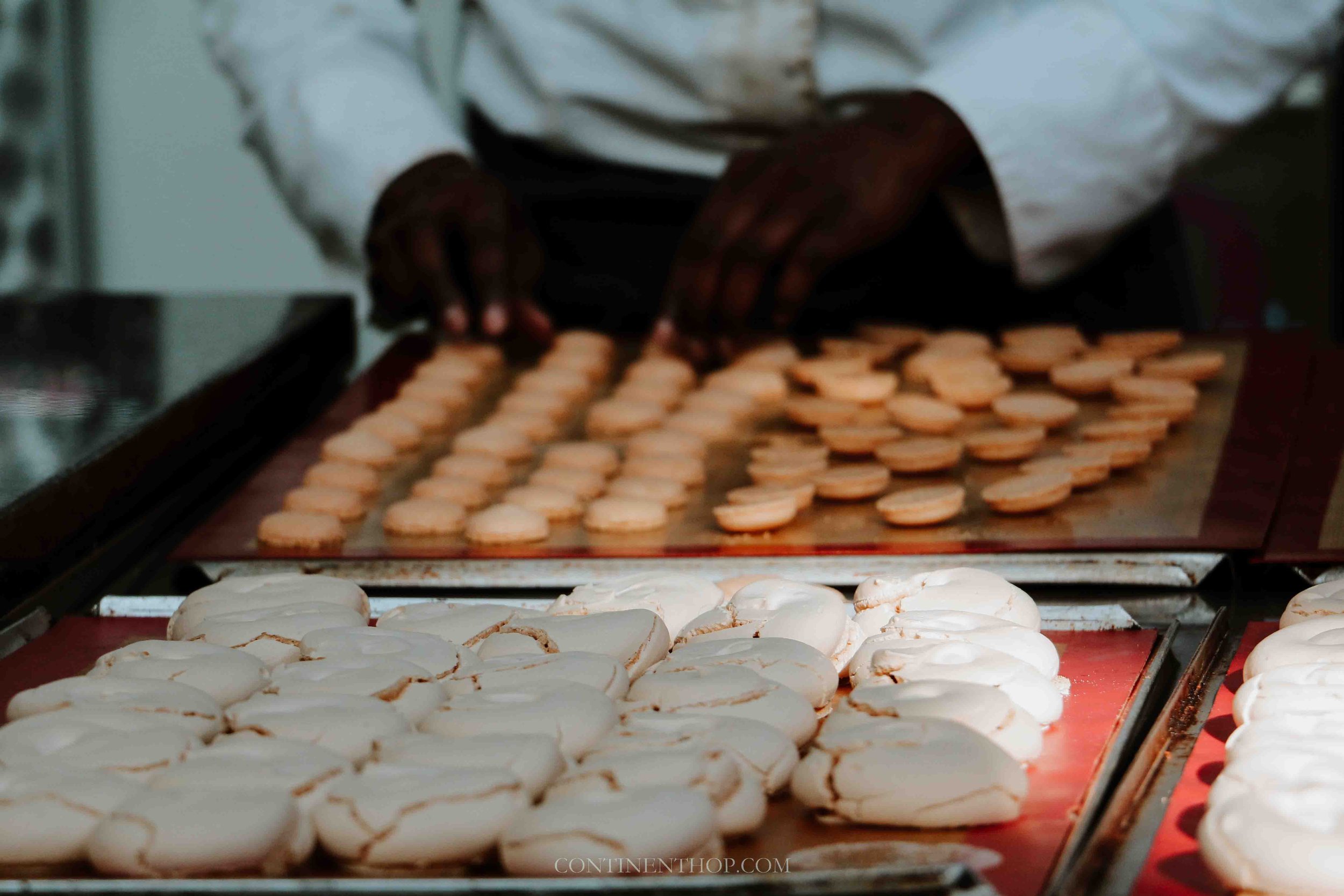

Safety Tips: Is Eindhoven Safe?
Is Eindhoven safe for tourists? This is a question that you may have when planning a trip to this vibrant Dutch city. The good news is that Eindhoven is generally regarded as a safe place to visit, with a low crime rate and friendly locals. However, it is always important to take certain safety precautions to ensure a safe and enjoyable trip. Here are some safety tips to keep in mind so that you don’t worry about whether is Eindhoven safe.
One of the most important safety tips to remember when visiting Eindhoven is to be aware of your surroundings. This means being aware of pickpockets and keeping your valuables close at hand at all times. Another important tip is to stay in well-lit and busy areas, especially at night.
If you’re travelling alone or with a small group, avoid walking alone at night, especially in unfamiliar areas. Instead, consider taking a taxi or taking public transportation to get around the city.
It’s also a good idea to keep an eye on local news and government websites for any potential safety concerns in Eindhoven, such as protests or demonstrations. Trust your instincts and report any suspicious activity to the authorities.
Overall, while Eindhoven is a safe city to visit, it’s important to take the necessary precautions to ensure a safe and enjoyable trip. Is Eindhoven Safe? The answer is yes, but it’s better to be safe than sorry.
Approximate budget: Is Eindhoven expensive?
Eindhoven is regarded as a reasonably priced destination in the Netherlands. Budget-friendly lodging options range from €30-50 per night, with meals at local restaurants or cafes costing between €10 and €15.
A single trip on public transportation costs about €2-4, and many attractions are free to visit. Overall, Eindhoven can be a great choice if you are looking for a low-cost trip to the Netherlands.
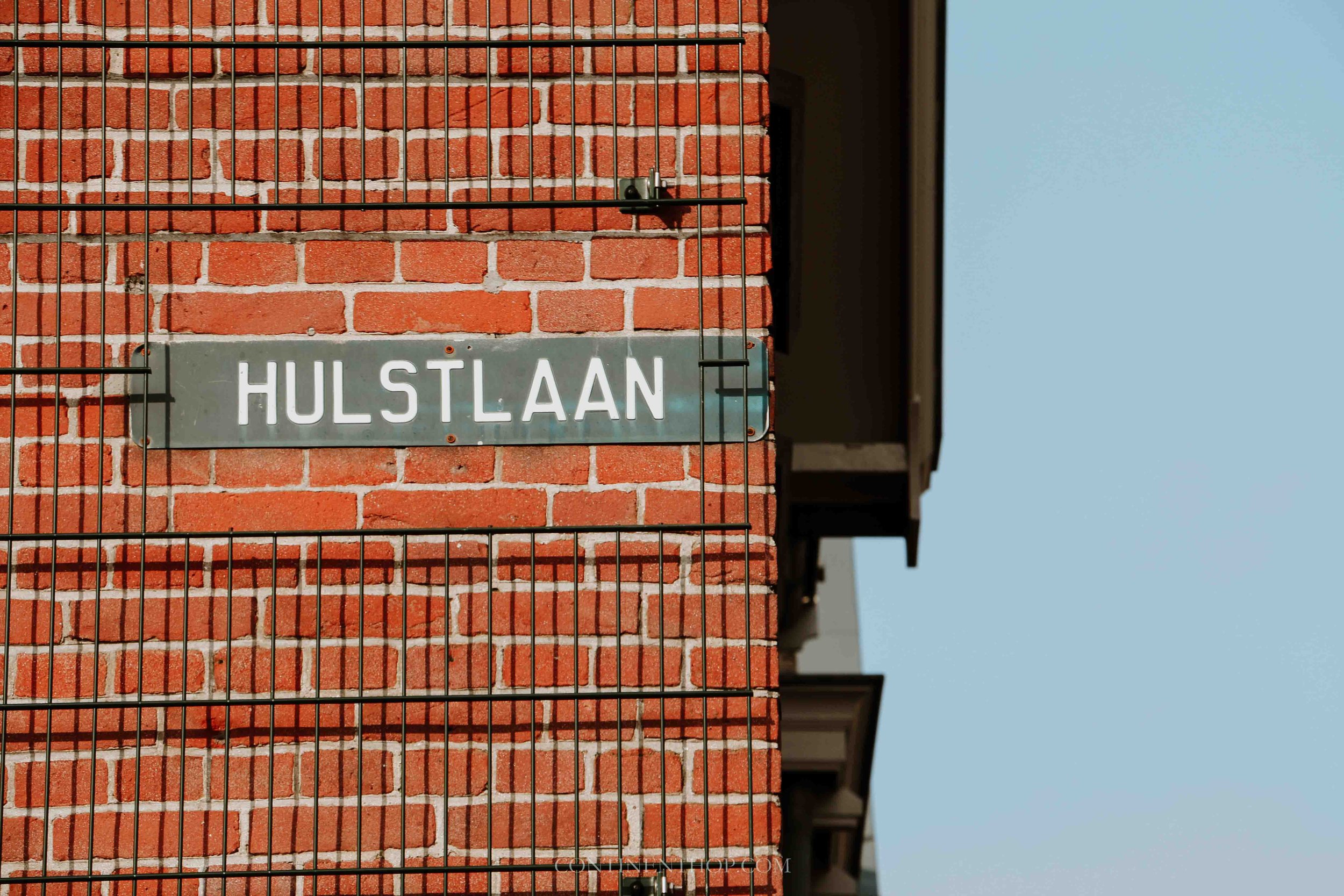
Eindhoven is a city that should not be missed. It has something for everyone, with a rich history, a vibrant cultural scene, and a variety of activities and attractions to suit all interests.
So, why not plan a trip to Eindhoven and experience all that this fascinating city has to offer?
Why is Eindhoven worth visiting FAQs
- How many days do you need in Eindhoven?
If you only want to see the main attractions, such as the Van Abbemuseum, the Phillips Museum, and the DAF Museum, you could do so in a day or two. However, if you want to spend more time exploring the city, experiencing its nightlife, or taking day trips to nearby areas like the Village of Nuenen or Genneper Parken, you should plan to stay for at least 3-4 days.
- What is Amsterdam to Eindhoven distance?
Eindhoven to Amsterdam distance is about 125 kilometres.
- Is Eindhoven a good place to live?
Yes, Eindhoven is a wonderful place to live because of its vibrant culture, friendly community, and plentiful job opportunities in the technology and design industries. Furthermore, the city has a high standard of living, good public transportation, and a variety of housing options to suit a variety of budgets and lifestyles.
- Is Eindhoven a good place to visit?
Yes, Eindhoven is worth visiting as it is an industrial hub and has a tremendous art and design culture with lots of museums and art galleries to visit.

Award-winning Analyst, multi-nominated digital content creator and photographer Lavina Dsouza's words capture stories about culture and tradition mainly through its food and people. She has written and contributed to publications such as The Washington Post, Lonely Planet and Matador Network, to name a few. She is the editor of UntraditionalHumans.com, a non-profit created to share inspiring stories from women of colour who break free from traditions and choose happiness.
She's also a speaker passionate about DEI and champions solo travel. She has collaborated with numerous renowned brands such as Intrepid Travel, TripAdvisor, Travel and Leisure and Adobe, to name a few.
She can be found on Twitter and Instagram.
PIN FOR LATER!
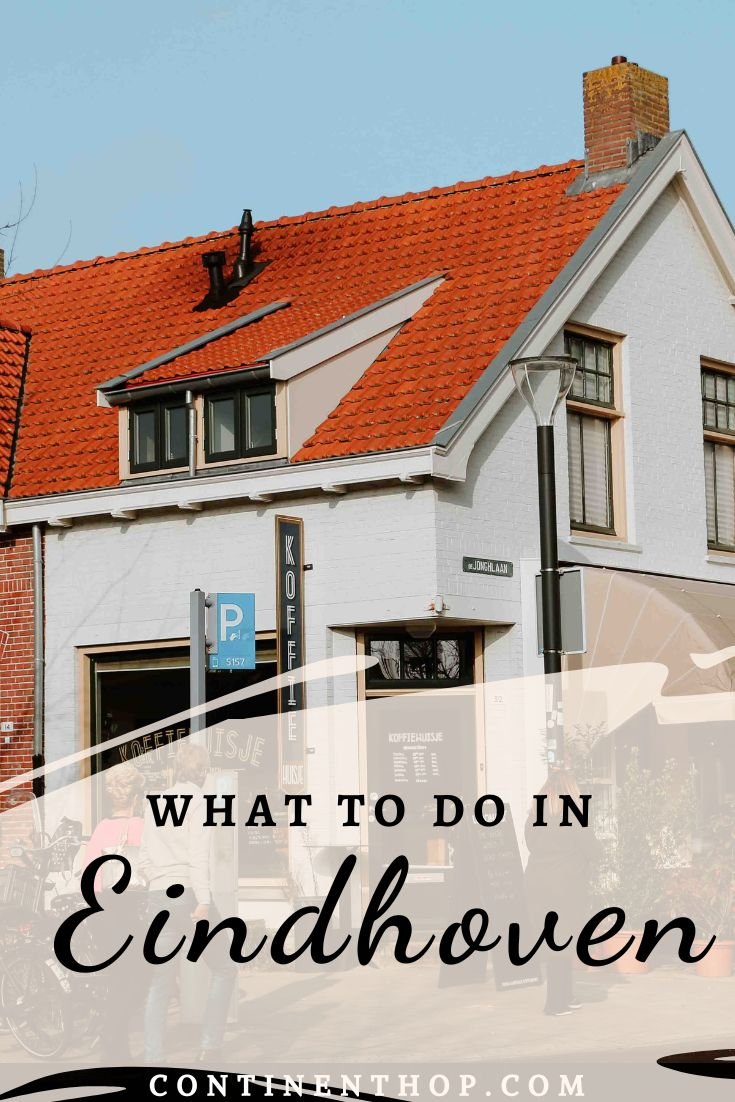
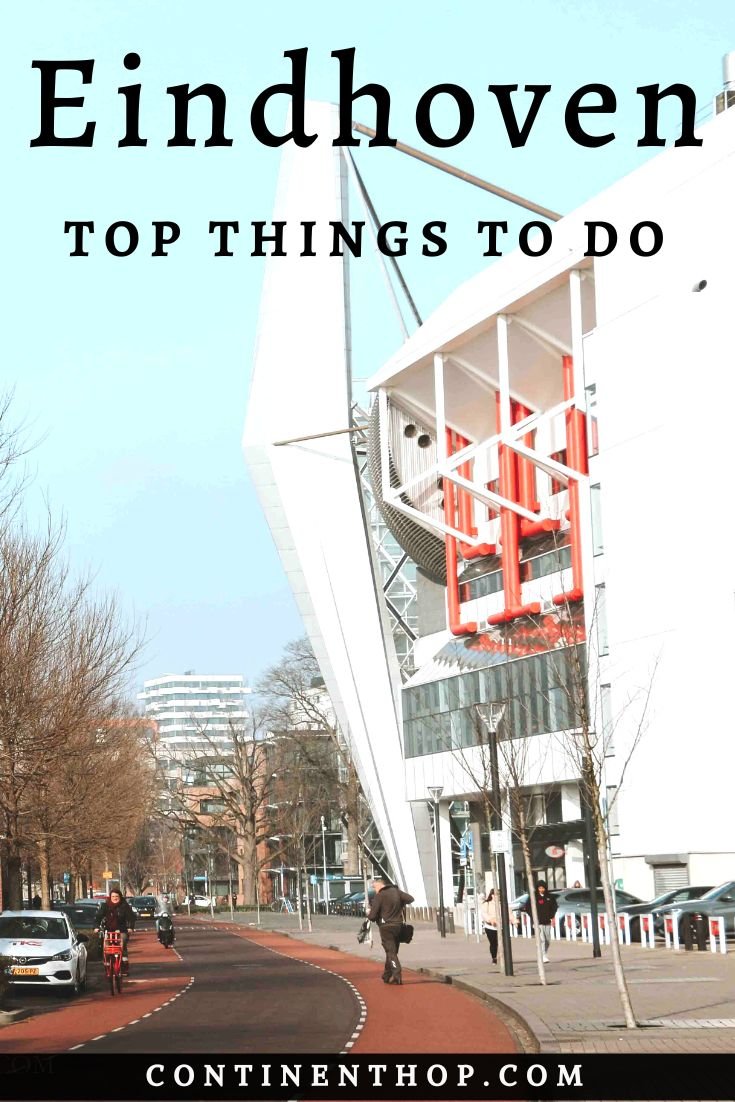
EXPLORE MORE OF THE NETHERLANDS
Some of the links on this post are affiliate links. These do not cost you extra to use, but will help provide Continent Hop with a small commission if/when you purchase through them, to recover some of the costs of running this website and providing free content to help you plan your travel. I appreciate your support!
Weekend in Majorca - The Best of Majorca in 2 Days (2024)
Majorca, or as Spain prefers to call it – Mallorca is a stunning island in the Mediterranean.
Even though it is full of luxury beach resorts, historic places carrying Roman and Moorish past, spectacular mountains, and sheltered coves, many prefer to spend only a weekend in Majorca.
The capital city of Palma is dotted with interesting places to visit during the day and bars and pubs to hit after the sun has set.
Other towns and villages on the island have preserved their charm. A historic tram ride is the perfect example of how Majorca lets you take a step back in the past.
When planning Majorca weekend, you will find plenty of tours and tourist attractions to add to the itinerary.
So, here is all the information you will need for your weekend in Majorca.
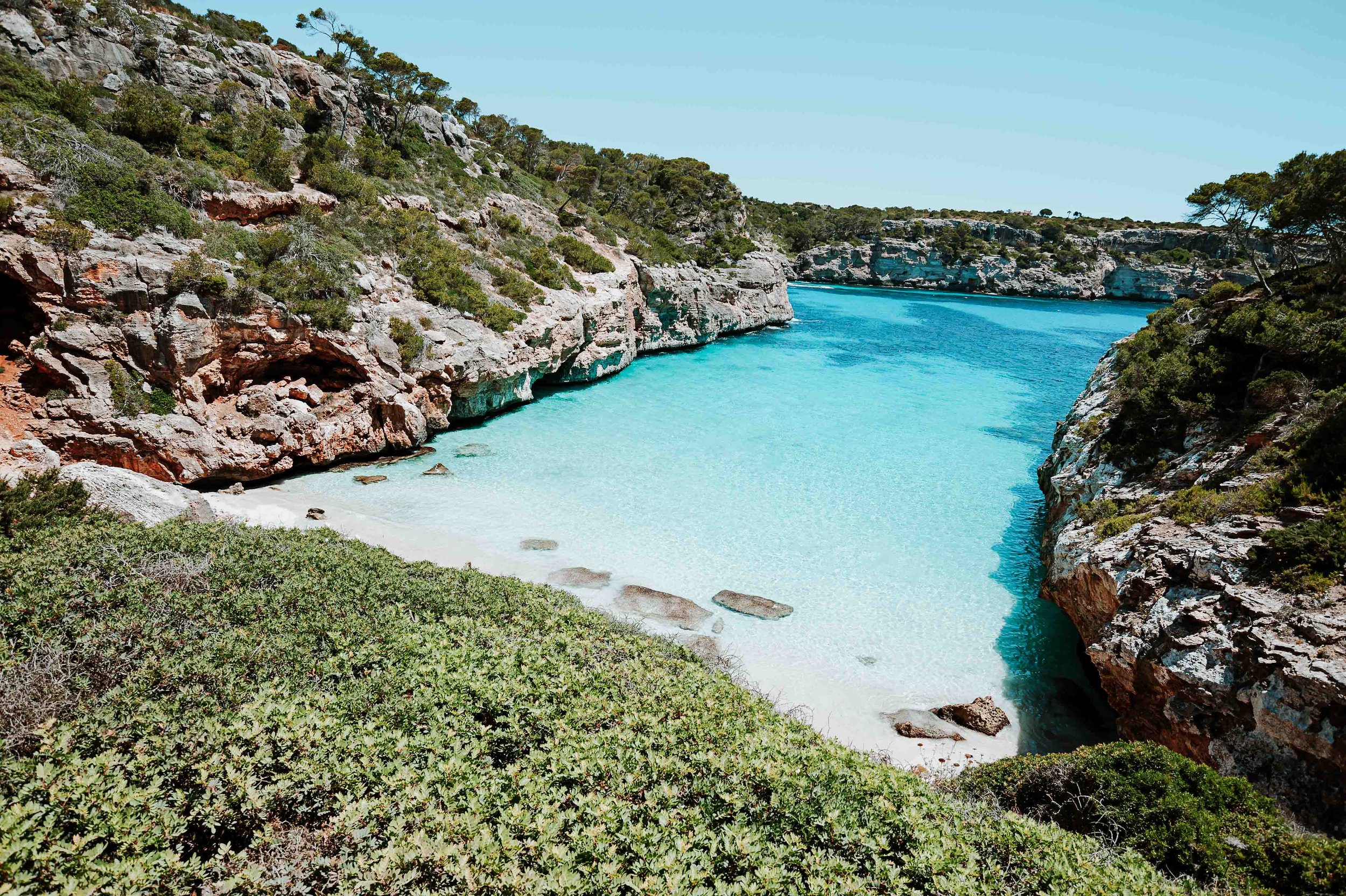
How to plan a weekend in Majorca
Before getting to Majorca, most visitors have to pass through Barcelona. I’ve covered how to get to Majorca below however before getting to Majorca, I would suggest spending a couple of days in Barcelona if you haven’t visited before.
If you’re looking to do something a little different consider a boat hire in Barcelona! This is quite the unique activity in Barcelona. Not only can you head off by yourself if you know how to drive one but it is the perfect activity if you’re with a group.
The sunsets in Spain are mesmerizing and an activity like this makes for an unforgettable experience! An evening should be good enough however you could also spend the entire day as many boats do come with a kitchen and lounge area perfect to store belongings, food and drinks! Then head off to Majorca!
If you’re wondering what to do in Majorca, there’s lots other than just beach hopping! It is one of Spain’s most attractive yet underrated destination for a reason!
When it comes to spending 2 days in Majorca, the best way is to stay in the capital city of Palma, explore its places of interest for a day, and head to nearby towns or villages on the next day.
Staying in Palma will give you a chance to spend most of the time understanding the city’s history, architecture, and food scenes.
And as it has several interesting places nearby, you will be able to cover other villages without spending much time traveling.
Many people chose to stay in Alcudia during the weekend in Majorca, but it is recommended if you are looking for a slow-paced vacation without adding different tourist attractions to your itinerary.
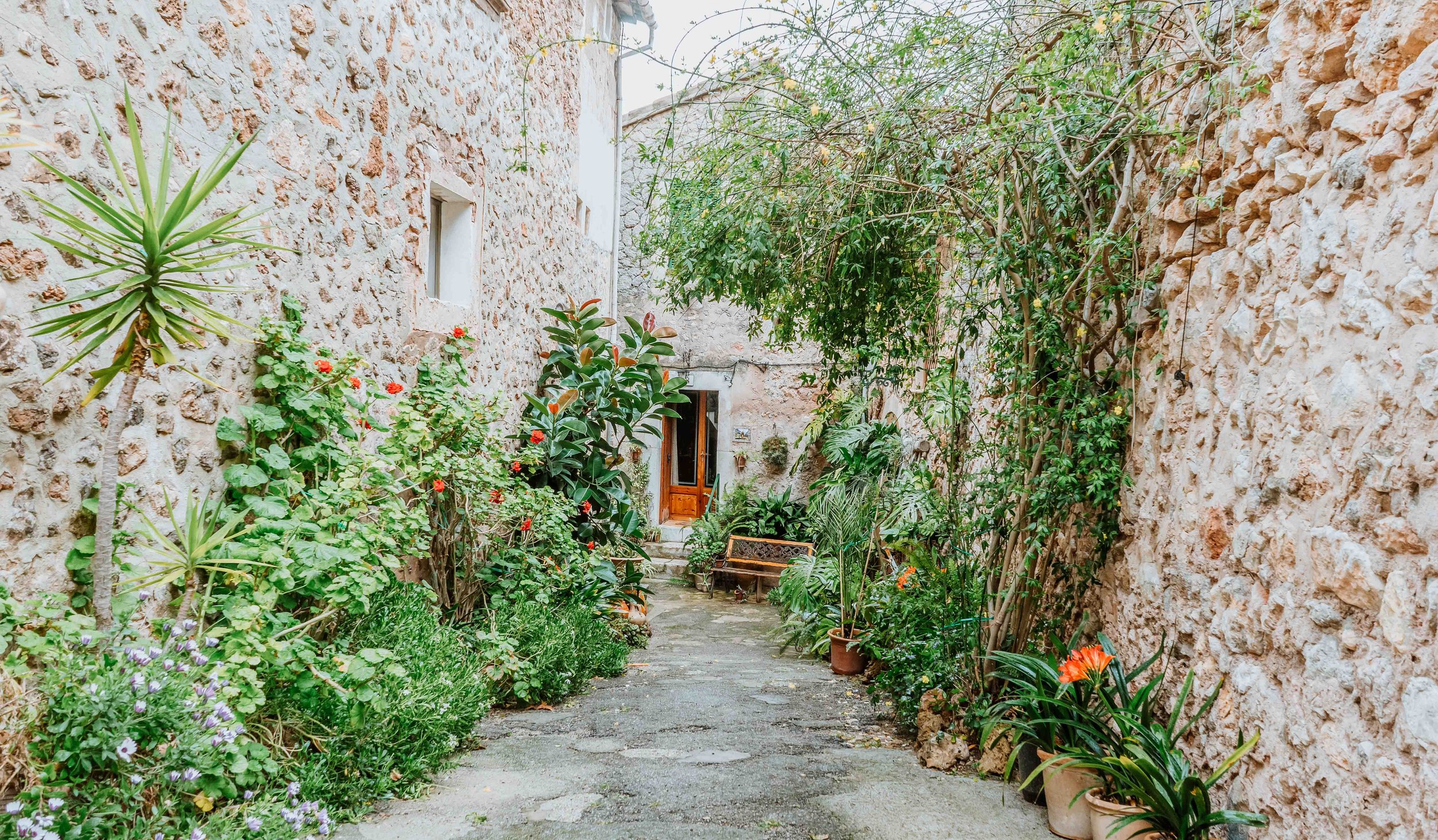
Where to stay in Majorca
The island of Majorca is home to numerous hotels, resorts, service apartments, and homestays.
From luxury 5-star hotels in Majorca to modest BnBs, you can choose from different types of accommodations for your Majorca weekend depending on your budget and interest.
Hotels in Palma – staying in the capital city of Palma will help you make the best of your weekend trip in Majorca. You can consider staying in Hotel Saratoga as it is located in the heart of the city with different tourist attractions only minutes away.
If you are a beach lover, then this beachfront Melia Palma Bay is an excellent choice. You will find Ca’n Pere Antoni Beach only 350 meters away. Along with an outdoor pool, a roof-top terrace with sea views is also available at the property.
Hotels in Alcudia – staying in Hotel Can Mostatxins is a treat when it comes to relaxation as well as architecture. Restored 15th and 19th century buildings make it a good place to stay and its spa facilities ensure you are pampered during your weekend in Majorca.
You can also consider PortBlue Club Pollentia Resort & Spa. Even though it is a little away from the city center, you will like its extensive sports and spa facilities. It is located next to Can Cap de Bou Beach making it a perfect hotel for your Majorca weekend.
Day 1 in Majorca
You can keep the popular La Seu cathedral and Royal Palace of La Almudaina for the morning.
These two are the main points of interest when you are only spending 48 hours in Majorca.
If you feel a bit tired after taking a tour of the Gothic Roman cathedral and the impressive palace, then you can stop by S’Hort del Rei for some time.
This public garden in Majorca is known for its delicate fountains and beautiful statues. It will make for a lovely stop when you want to relax and still enjoy the beauty of the island.
For the 2nd half of the day, Castell de Bellver is a must.
Located a little away from the center of the city, this 14th-century circular castle is perched on top of the hill. Taking a free guided tour is recommended to understand its interesting history.
If you take a bus to the castle, then keep in mind that the bus stops at the foot of the hill and you will have to walk uphill to reach the castle.
When using public transport, you can consider booking this Palma de Mallorca: 24 or 48-Hour Hop-On Hop-Off Bus Tour for covering as many sights as possible.
Depending on how much time you have, you can either stop by Es Baluard Contemporary Arts Centre or Palma Aquarium.
Both the places are popular tourist attractions in Majorca and attract travelers from around the world.
Or you can skip these places and spend the remaining time lazing around Cala Major. This sheltered sandy beach will make your Majorca weekend fun.
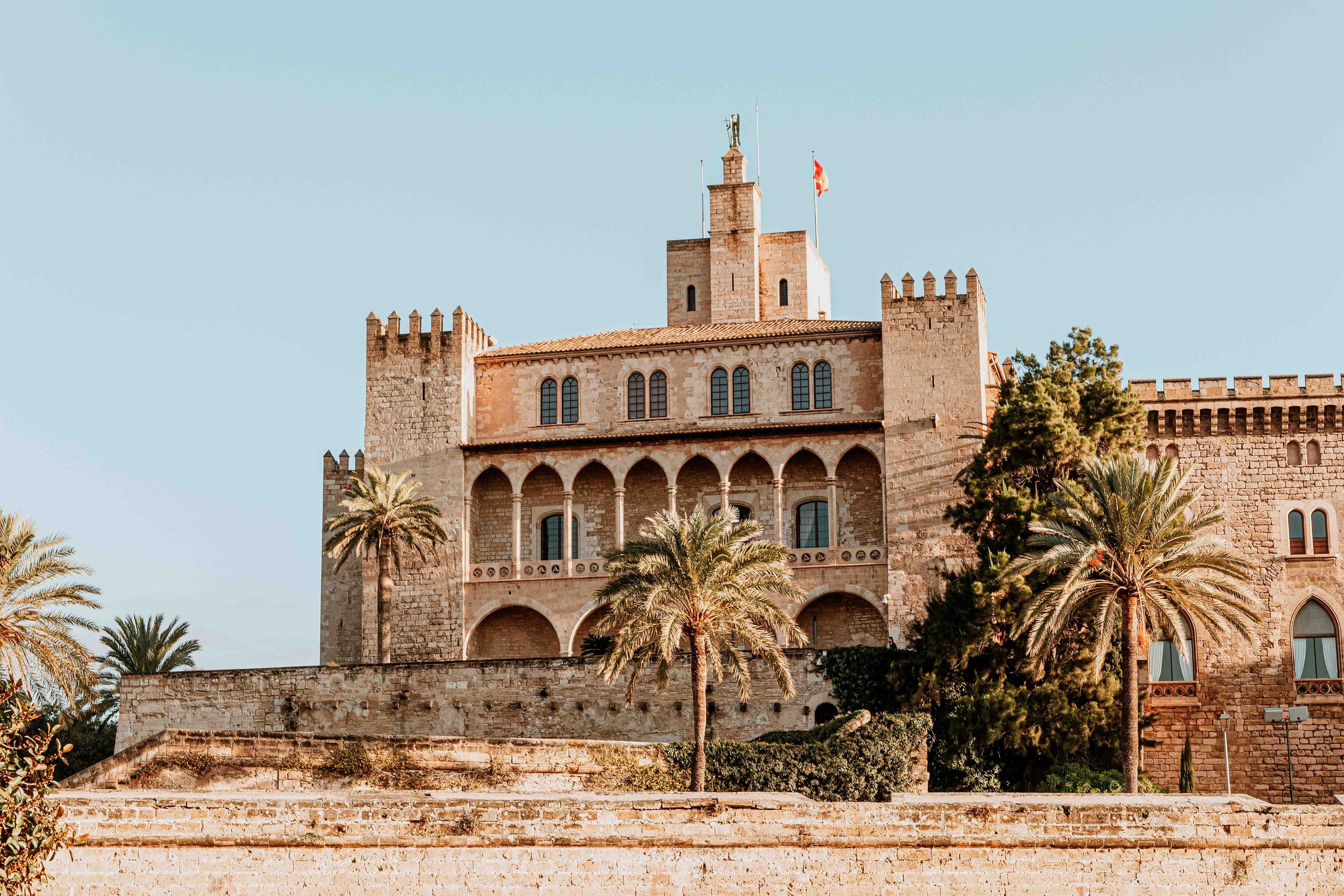
Day 2 in Majorca
When it comes to making the best of the weekend in Majorca, it is recommended to take one of the popular Majorca day trips.
It will help you explore more places of interest without having to worry about transport.
A Tramuntana Tour with Historic Railway Ride is enjoyed by many. Taking this tour will give you a chance to soak in the stunning vistas of Tramuntana mountains and explore the charming towns of Deía and Valldemossa. Consider visiting Valldemossa on a day tour as you can get to ride the the historic train and spend a wonderful day in the country.
If you’re travelling with kids, and still need some activities that can keep them engrossed yet fascinated, the Palmaquarium is a great choice. Full of Mediterranean sea life and events this aquarium of the Balearic islands is sure to keep everyone in the family busy for at least half a day if not more!
They also focus on conversation activities and have the only 360 degree whale experience in all of Europe!
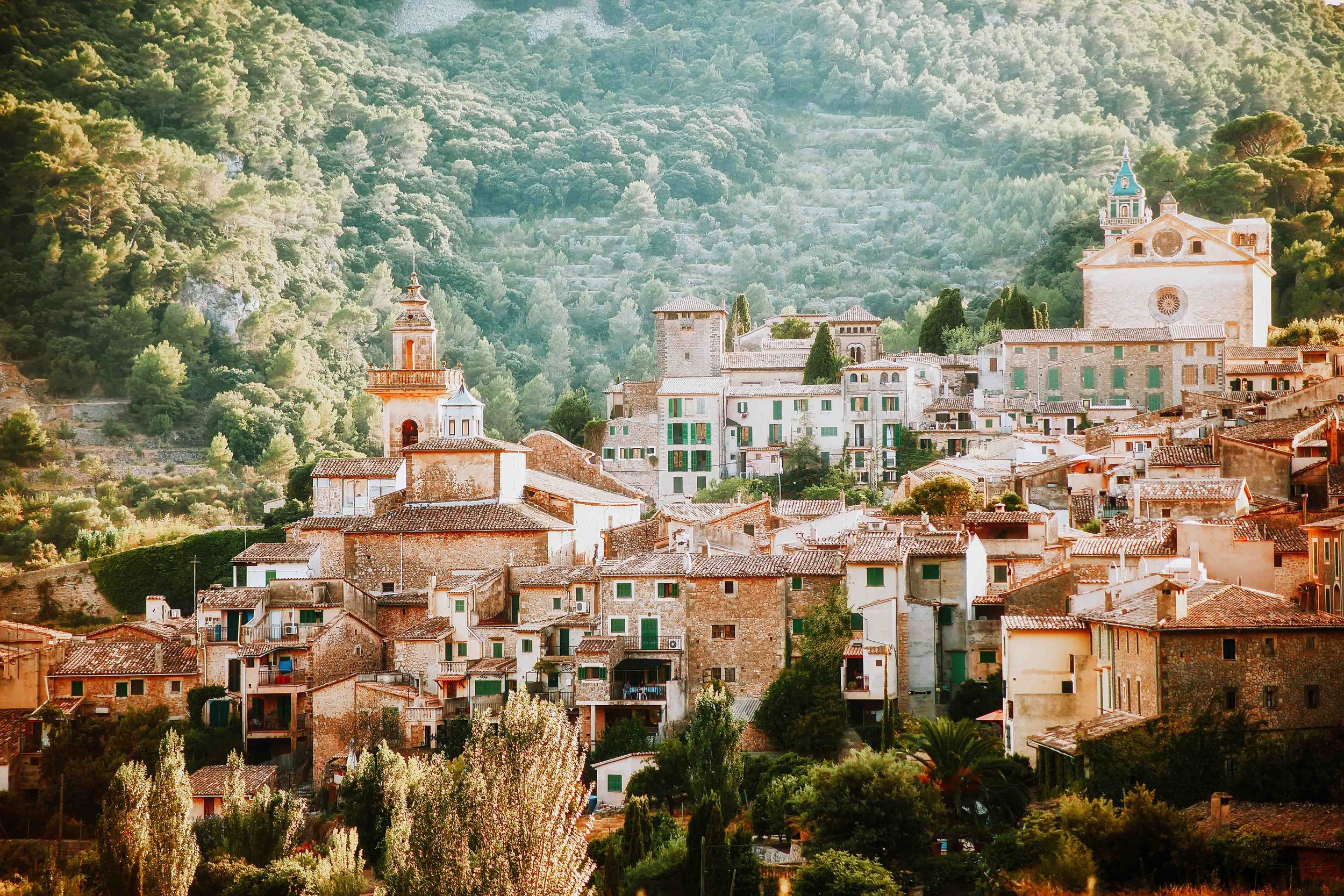
How to reach Majorca
When it comes to getting to Majorca, taking a flight is the most preferred way. You can also consider taking a ferry to reach this beautiful Spanish island, but it is usually time-consuming.
And when you only have a weekend in Majorca, opting for a faster mode of transport is recommended. Here is detailed information about different modes of transport to reach Majorca.
Flight to Majorca
If you don’t mind flying and are looking for a quick island getaway Majorca is worth considering!
As Barcelona is the capital and a major hub, flights are available for cheap and a flight to Majorca takes about 50-55 minutes. Airlines such as Vueling have good connectivity. Majorca is well-connected to other major cities in Spain by plane. You can take a direct Majorca flight from Barcelona, Madrid, and Valencia.
The international Palma de Mallorca Airport is also connected to different European cities, attracting millions of travellers every year.
That has made Majorca one of the top weekend trips from Barcelona.
While you are in Barcelona consider spending some time in the city if you haven’t visited it before. If you’re in a group, the best way to do this would be to opt for a bus hire Barcelona.
Bringing together all your family members or friends in one group to explore can be quite fun!
Another option is hopping on a flight from Valencia will also take less than an hour to reach Majorca.
If you want to reach Majorca by flight from other cities, then the rates may be a bit higher, but it will still take less than 2 hours if you take a direct flight to Majorca from Madrid.
That makes it an ideal choice for those spending a weekend in Majorca.
Ferry to Majorca
You can also consider reaching Majorca by ferry if you are okay with spending more time traveling.
The port of Palma is located on the southwest of the island and you will find Alcudia port on the northeast side. Both the ports are served by multiple ferry operators and see the traffic of over 100 ferries every week.
You can take a Majorca ferry from Barcelona or Alcudia and the shortest distance ferry will take around 5 hours to reach the island.
You can opt for these ferry services when reaching the island for your weekend in Majorca. The longer duration ferries need more than 7 hours to reach Majorca.
No matter which tours you book and which beaches you visit, a weekend in Majorca will give you a chance to soak in the Spanish vibes.
All you have to do is hop on a plane and Majorca will welcome you with open arms!
FAQs – Weekend in Majorca
-
Is 3 days in Mallorca enough?
Spending 3 days in Mallorca is enough to cover all the major attractions and activities.
You can visit Cap de Formentor, stay in Palma, and take a trip to Tramuntana which is popular for its historic train ride. It will give you enough time to see the famous points of Majorca without rushing yourself.
-
Is 2 days in Majorca enough?
When you spend 2 days in Majorca, you will get enough time to see what the capital city of Palma is famous for. You can spend one day exploring Palma and then the next day, you can plan to tour the nearby areas.
Many tourists opt for a day trip to Tramuntana where you can ride on a historic train and cover Deía and Valldemossa towns.
-
How many days do you need in Majorca?
If you are looking for a fast-paced trip to Majorca, then 2 or 3 days are enough. But if you are interested in a laid-back Majorca vacation then it is recommended to spend at least 5 days here so that you will get enough time to be a part of the local canvas.
-
What is the best month to visit Majorca?
The best time to visit Majorca is from June to September as these are summer months.
The weather is warm and perfect for outdoor activities. If you prefer shoulder season, then consider visiting Majorca in October. The spring months of April and May also see a lot of tourists for several cycling and sailing events.

Award-winning Analyst, multi-nominated digital content creator and photographer Lavina Dsouza's words capture stories about culture and tradition mainly through its food and people. She has written and contributed to publications such as The Washington Post, Lonely Planet and Matador Network, to name a few. She is the editor of UntraditionalHumans.com, a non-profit created to share inspiring stories from women of colour who break free from traditions and choose happiness.
She's also a speaker passionate about DEI and champions solo travel. She has collaborated with numerous renowned brands such as Intrepid Travel, TripAdvisor, Travel and Leisure and Adobe, to name a few.
She can be found on Twitter and Instagram.
PIN FOR LATER!
EXPLORE MORE OF SPAIN
Some of the links on this post are affiliate links. These do not cost you extra to use, but will help provide Continent Hop with a small commission if/when you purchase through them, to recover some of the costs of running this website and providing free content to help you plan your travel. I appreciate your support!
Here's How Many Days In Vienna is Enough for a FAB Trip! (2024)
Planning an Austria trip and looking to explore Vienna but unsure how many days in Vienna is enough? My Vienna travel experience and itinerary will help you decide if you will need only 3 days in Vienna or if you can manage a 5-day Vienna itinerary. This should help you decide how many days to spend in Vienna with a day by day breakdown so you have the BEST time!
A city that is connected to Mozart, Beethoven and Sigmund Freud. A city where the musical, artistic, and intellectual journeys of many have been shaped over the centuries. There are no points for the correct answer as we all know I am talking about Vienna.
So, How many days for Vienna are exactly enough?
Because from the royal Schönbrunn Palace to the medieval St. Stephen’s Cathedral, from Vienna Opera house to the Wien Museum Mozart apartment, and from Prater to Naschmarkt, it is a melting pot of different attractions.
With so much to see and do, how long should I stay in Vienna, you may wonder. Will 3 days be enough? Is a week too long?
Remember that no matter how many days in Vienna you spend, you will leave a piece of your heart behind in the winding lanes here. Just like I did! So, let’s get started!
Quick deals for your Vienna trip especially for a last minute getaway!
Popular tours in Vienna for immersive Austrian experience –
-
Skip-the-Line Schonbrunn Palace Private Tourwith a professional guide
-
Naschmarkt Food Tasting Tourto pamper your taste buds
-
Hallstatt & Alpine Peaks Day Trip with Skywalk Lift from Vienna
Best hotels in Vienna for every budget –

How many days in Vienna is Enough?
Vienna is a city where even if you spend a week, it might feel inadequate.
For the question, ‘How many days to spend in Vienna’ will get you different answers from everyone.
But I know as a traveller how important it is to know the exact number of days any place will require to carefully plan your itinerary. (Unless it is an impromptu vacay! In that case, go crazy and do not worry about sticking to a calendar.)
How many days to explore Vienna totally depends on how you want your trip to be.
Are you interested in a slow-paced journey where you can cover even lesser-known attractions of Vienna? Then I will recommend a minimum of 5 days in Vienna as it will give you a chance to cover as many places as possible.
Are you looking for a quick getaway only scratch the surface of this beautiful Austrian capital? Then, how many days to see Vienna has a simple answer. You can spend 2 days in Vienna and make a fast-paced trip.
But the ideal answer for how many days in Vienna is enough will be 3 days. Spending 72 hours in Vienna guarantees the perfect trip.
How many days for Vienna
Day 1 in Vienna
Is 1 day in Vienna enough?
Here’s what to do if you have just 1 day in Vienna – St. Stephen’s Cathedral, Mozarthaus Vienna, Stadpark, Albertina, Vienna State Opera House, Karlskirche, Naschmarkt
Start your 1 day in Vienna with Saint Stephen’s Cathedral, or Stephanskirche, one of Vienna’s significant religious and historic sights.
The mix of Romanesque and Gothic structures you see today dates back to the 1350s and is standing on the site of ruins of earlier churches.
Its 446 feet high south tower dominates the city’s skyline while the multi-coloured tile roof and St. Stephen’s catacombs make for fascinating sights. You can check the visiting hours and book the guided tours of St. Stephen Cathedral here directly from the official website.
Then, head over to Mozarthaus which is located near the cathedral. This Mozart’s apartment turned museum is a must for every Vienna itinerary.
This is where the world-renowned composer of symphonies, concertos, and operas stayed here from 1784 to 1787.
Remember that this museum is open from Tuesday to Sunday from 10 am to 6 pm and plan your visit accordingly. You can stop by Stadpark as this 19th-century English-style park is dotted with several monuments and statues.
The Vienna River flows through the park dividing it into two sections. Walk around this peaceful green landscape for some time before heading to the next attraction.
Albertina is one of the most interesting museums Vienna has to offer.
The extraordinary collection of paintings, sculptures, and drawings along with around 1 million old master prints is enough to keep you engaged for a minimum of 2 hours.

For guided tours, visiting hours, and ticket prices of Albertina, refer to their official site. Vienna State Opera House is a venue that took around a decade from 1861 to 1869 to complete.
The tickets for the performances are usually staggeringly high and are not easily available. But you can tour the opera house for an hour to understand its rich past. It is an interesting experience to know about the traditions that defined one of the leading opera houses in the world.
The beautiful baroque building of Karlskirche is known for its unique iconography. This 18th-century church is the place to get introduced to artistic delights.
The great dome and tall columns will tell you where Karlskirche stands and as you step inside, the combination of carvings, statues, marble stonework, reliefs, and wall paintings will welcome you.
You can check if the famous Vivaldi’s Four Seasons Concert in Karlskirche is available during your visit. After soaking in the captivating beauty of Vienna, all you need is good food and good vibes.
So what can be a better place than Naschmarkt for this combination? This bustling market dating back to the 16th century is known for offering numerous culinary delights with more than a hundred stalls.
The best way to get the most out of Naschmarkt is to book this guided 2.5-hour Naschmarkt Food Tasting Tour. It will help you navigate through the maze of stalls and will also help you decide how to take your taste buds on a ride.
How many days you need in Vienna depends entirely upon your interests. But keeping the first day packed will help you cover more places.

How many days for Vienna
Day 2 in Vienna
Is 2 days in Vienna enough?
Here’s what to do if you have just 2 day in Vienna – Schönbrunn Palace, Schönbrunn Zoo, Prater Park and Ferris Wheel
If you want to know how many days do you need in Vienna, then know that you will need at least 3 days in this beautiful city. Do you know why? It is because you can reserve one day in Vienna entirely for Schönbrunn Palace.
Even if you try to explore the palace in a hurry, you will need at least half a day. This UNESCO World Cultural Heritage Site holds an important place in the history of Vienna and has become one of the popular tourist attractions today.
With 1,441 rooms and expansive gardens surrounding it, Schönbrunn Palace represents the 300 years of the past. It is highly recommended to book this Skip-the-Line Schonbrunn Palace Private Tour as the professional guide will help you explore the palace and the gardens in the best possible way.
Even though this tour takes less than 4 hours, you can spend a few more hours around here soaking in the imperial heritage experience.
For those who want to know what to do in Vienna 2 days, consider spending the evening at Prater Park as this place will take you back in time with its old-time amusements.
You will find many attractions including a planetarium, the Prater Museum, the Kingdom of Railroads, and the Kolarik Bouncy Castle on the premises. But what steals the show is Wiener Riesenrad – the 212 feet tall Ferris wheel that dates back to 1897.
Remember to book your Skip-the-cashier-desk-line Giant Ferris Wheel Ride ticket in advance and enjoy the panoramic views of glittering Vienna in the evening. So, that’s your answer to ‘how to spend 2 days in Vienna’.

How many days for Vienna
Day 3 in Vienna
Is 3 days in Vienna enough?
Here’s what to do if you have just 3 day in Vienna – Spanish Riding School, Natural History Museum, Kunsthistoriche Museum, River cruise, Danube Tower
When you ask ‘How many days do I need in Vienna?’ everyone will advise a minimum of 3 days as the city has so much to offer. Your 3rd day in Vienna will be packed with interesting attractions and activities.
Start your day with a place that attracts travellers from around the world. Spanish Riding School is dedicated to the training of powerful Lipizzaner horses and preserving the tradition of classical dressage.
With more than 450 years of history, it is a treat to watch the shows performed by horses and their trainers here. Keep in mind that even if shows are limited, you can visit Spanish Riding School in the morning to watch the training exercises.
Taking a guided tour will give you a chance to learn about the horses, their training, and the history of this unique attraction. If you are interested in the actual show, then here is the entry ticket for the Performance Of The Lipizzans At Spanish Riding School.
If you start your day early, you will be able to cover two of the interesting museums in Vienna.
You can first go to the Natural History Museum as it takes more than 2 hours to tour the exhibits here. Be it the gigantic dinosaur skeletons or the largest meteorite collections in the world, everything here is awe-inspiring.
Do not forget to go on the virtual trip to the edge of the Milky Way galaxy. Then, depending on the time, you can consider Kunsthistoriche Museum as this is located right next to the Natural History Museum.
Though smaller, Kunsthistoriche Museum is a wonderful place for art enthusiasts. When you wonder, ‘how many days to visit Vienna?’ remember that you can dedicate a day only to the museums and still it will not be enough.
The opulent interiors are a treat as well as the art collections that date back to the 15th century.
There are two ways to spend the evening. You can opt for this relaxing Evening Cruise Along The Danube. It will give you a chance to watch how the city starts illuminating after sunset. You can also enjoy dinner at the onboard restaurant.
Or, you can go to the open-air terrace of the Danube Tower and enjoy panoramic views of Vienna. This iconic landmark also has a cafe and a restaurant where you can grab something to eat while soaking in the vistas.

How many days for Vienna
Day 4 in Vienna
Is 4 days in Vienna enough?
Here’s what to do if you have just 4 days in Vienna – Belvedere Museum, the Orangery, and the Palace Stables.
Start your 4th day in Vienna with Belvedere Palace. The premises consists of two Baroque palaces along with the Belvedere Museum, the Orangery, and the Palace Stables.
You can buy Upper Belvedere & Permanent Collection Entry Ticket as it will give you easy access to the world’s largest collection of Gustav Klimt paintings.
Take a walk around the gardens and you will come across several baroque statues and decorative tiered fountains.
You can spend an afternoon at Hofburg Palace.
Dating back to the 13th century, the structure we see today has been expanded several times over the centuries. It is a place of complicated history where you will get to learn about Vienna’s past, art, architecture, and culture. After spending a couple of hours at Hofburg Palace, you can call it a day.
If you are a wine connoisseur, then Hidden Wine Cellars Tasting Experience is highly recommended for you.
It is a perfect opportunity to explore the Viennese wine scene at a relaxing pace.

How many days for Vienna
Day 5 in Vienna
Is 5 days in Vienna enough?
Here’s what to do if you have 5 days in Vienna – Belvedere Museum, the Orangery, and the Palace Stables.
Even though you can cover Vienna in 3 days, staying here for a minimum of 5 days will give you a chance to explore the lesser-known attractions in the city as well as opt for day trips from Vienna.
The capital city of Austria serves as the perfect base for different types of half-day tours as well. So, here are a few suggestions based on popularity –
Hallstatt & Alpine Peaks Day Trip with Skywalk Lift from Vienna is loved by travellers as it will take you to the magical landscapes of Hallstatt. Even though it takes around 13 hours, as transportation is arranged by air-conditioned vehicle, you will find it a comfortable experience.
If you are looking for something relaxing, then Wachau Valley Day Tour with Wine Tasting from Vienna can be your choice.
Half-day Countryside Wine Tour with Meal is also a good option if you only want to spend a few hours away from the city. If you want to know how many days in Vienna and Salzburg, then consider adding one more day to your itinerary.
This Day Tour of Salzburg from Vienna will give you a chance to explore Salzburg’s famous tourist attractions.

The best time to visit Vienna
Summer is the best time to visit Vienna with the months of June, July, and August being warm and rainy.
But it also means the city is crowded, especially on a weekend, and tourist attractions are packed. You may also experience higher flight tickets and accommodation prices.
If you are looking for shoulder season, then consider autumn in Vienna. Even though the autumn days are not as hot as summer, the weather is still pleasant.
The months of September, October, and November will bring out the quieter Vienna and lesser rain. So, even if you are yet to decide how many days for Vienna, pick the month that suits you the best.
Where to stay in Vienna?
When you wonder how many days should you stay in Vienna, know that you will need at least 3 days to see the city with a fast-paced itinerary.
So, here are some of the best hotels in Vienna no matter how many days to stay in Vienna you decide.
Book your stay at Hilton Vienna Park and you will find yourself in the heart of the city, a stone’s throw away from Stadpark and other major tourist attractions. This 5-star hotel in Vienna offers free wifi, private parking, family rooms, and a rich buffet breakfast.
If you are looking for mid-range hotels in Vienna, then Hotel Josefshof am Rathaus is the best choice. This 4-star property is located near Mariahilferstraße Shopping Street and Vienna City Hall.
Are you still trying to decide how many nights in Vienna? Then, even if you choose only a couple of nights in Vienna, this property will pamper you the best.
When it comes to budget stays in Vienna, Meininger Hotel Wien Downtown Franz tops the list. Be it the stylish rooms or a bar or a games room, you will find everything on the premises. The staff will also help you with bike rentals and luggage storage. If you are wondering how many days should I spend in Vienna, you can stay here even for a week without burning a hole in your pocket.

How to reach Vienna?
Vienna is well-connected to the rest of the world and can be reached without much hassle.
You will find direct or connecting flights from major European cities. You will also find a few US and Canadian cities that have direct flights to Vienna.
The options of a train or a bus are also available. Many travellers choose overnight train or bus journeys to reach Vienna from other European cities as it might be cheaper than a flight and also makes for an interesting travel experience.
If you are in Bratislava or Budapest, you can consider travelling to Vienna by boat. But keep in mind that there are not many boat operators and you will have to book your tickets in advance.
How to get around Vienna?
Vienna is the city where you will find multiple public transport options to take you around without burning a hole in your pocket. Subway and local trains as well as buses and trams connect the city and many touristy areas in Vienna are also easily walkable.
It is highly recommended to buy Vienna PASS for the number of days you are spending in the city. This includes free or discounted entry to many attractions along with unlimited hop-on hop-off bus rides.
If you are planning to use other public transport modes, then Public Transport City Card and Attraction Discounts will give you unlimited free rides on a tram, metro, train, and bus line.

So, how many days for Vienna are you planning?
Are you interested in 3 days in Vienna where everything major is covered or are you finalizing a 5-day Vienna itinerary where you can also explore other Austrian towns and wineries?
Do let me know what you think is the best answer for how many days to spend in Vienna. I am sure the beautiful chaos of Vienna will be a memorable journey for you!
FAQs – How many days in Vienna
-
How long should I spend in Vienna?
Spending 3 days in Vienna is long enough to dedicate one day entirely to Schönbrunn Palace and also to add other lesser-known attractions to your Vienna itinerary.
-
Is 2 days in Vienna enough?
2 days in Vienna are enough only if you are okay with a fast-paced itinerary where hardly major tourist attractions are covered. It will not give you enough time to add all the charming palaces and museums Vienna has to offer and it may be enough to attend a concert or an opera.
-
Is 5 days in Vienna too long?
No, in fact, 5 days in Vienna can make for the perfect trip. It will let you cover all the important tourist destinations in Vienna including palaces, art galleries, and museums. 5 days in Vienna also mean a day trip to Hallstatt or a tour to a winery near Vienna.
-
Is 4 days in Vienna enough?
Spend 4 days in Vienna and you will get enough time to visit popular sights like Schönbrunn Palace, Hofburg Palace, St. Stephen’s Cathedral, and Albertina. With 4 days in Vienna, you will be able to squeeze in a half-day tour to a nearby winery or a day trip to Salzburg or Hallstatt.

Award-winning Analyst, multi-nominated digital content creator and photographer Lavina Dsouza's words capture stories about culture and tradition mainly through its food and people. She has written and contributed to publications such as The Washington Post, Lonely Planet and Matador Network, to name a few. She is the editor of UntraditionalHumans.com, a non-profit created to share inspiring stories from women of colour who break free from traditions and choose happiness.
She's also a speaker passionate about DEI and champions solo travel. She has collaborated with numerous renowned brands such as Intrepid Travel, TripAdvisor, Travel and Leisure and Adobe, to name a few.
She can be found on Twitter and Instagram.
PIN FOR LATER!


EXPLORE MORE OF AUSTRIA
Some of the links on this post are affiliate links. These do not cost you extra to use, but will help provide Continent Hop with a small commission if/when you purchase through them, to recover some of the costs of running this website and providing free content to help you plan your travel. I appreciate your support!

